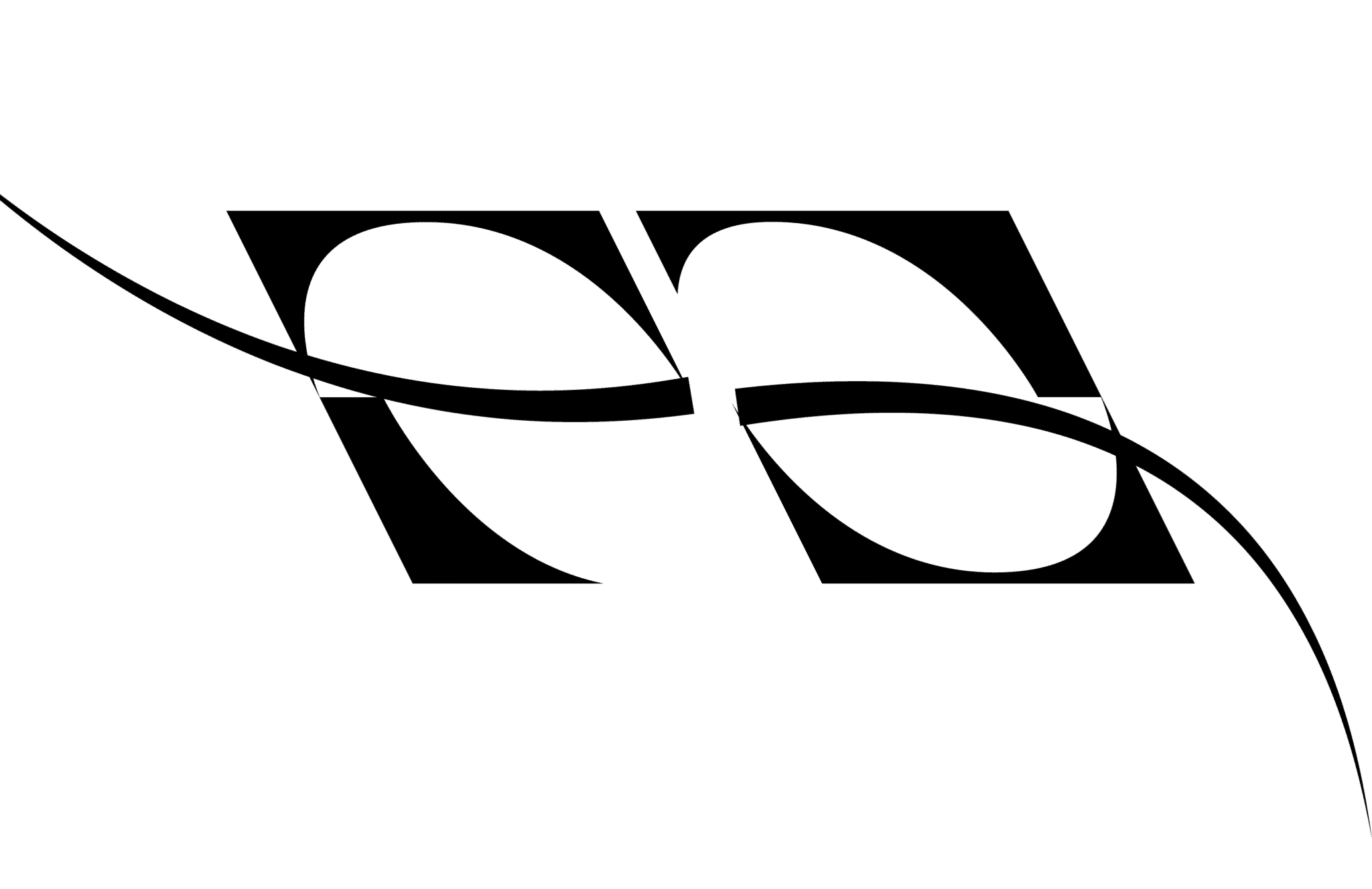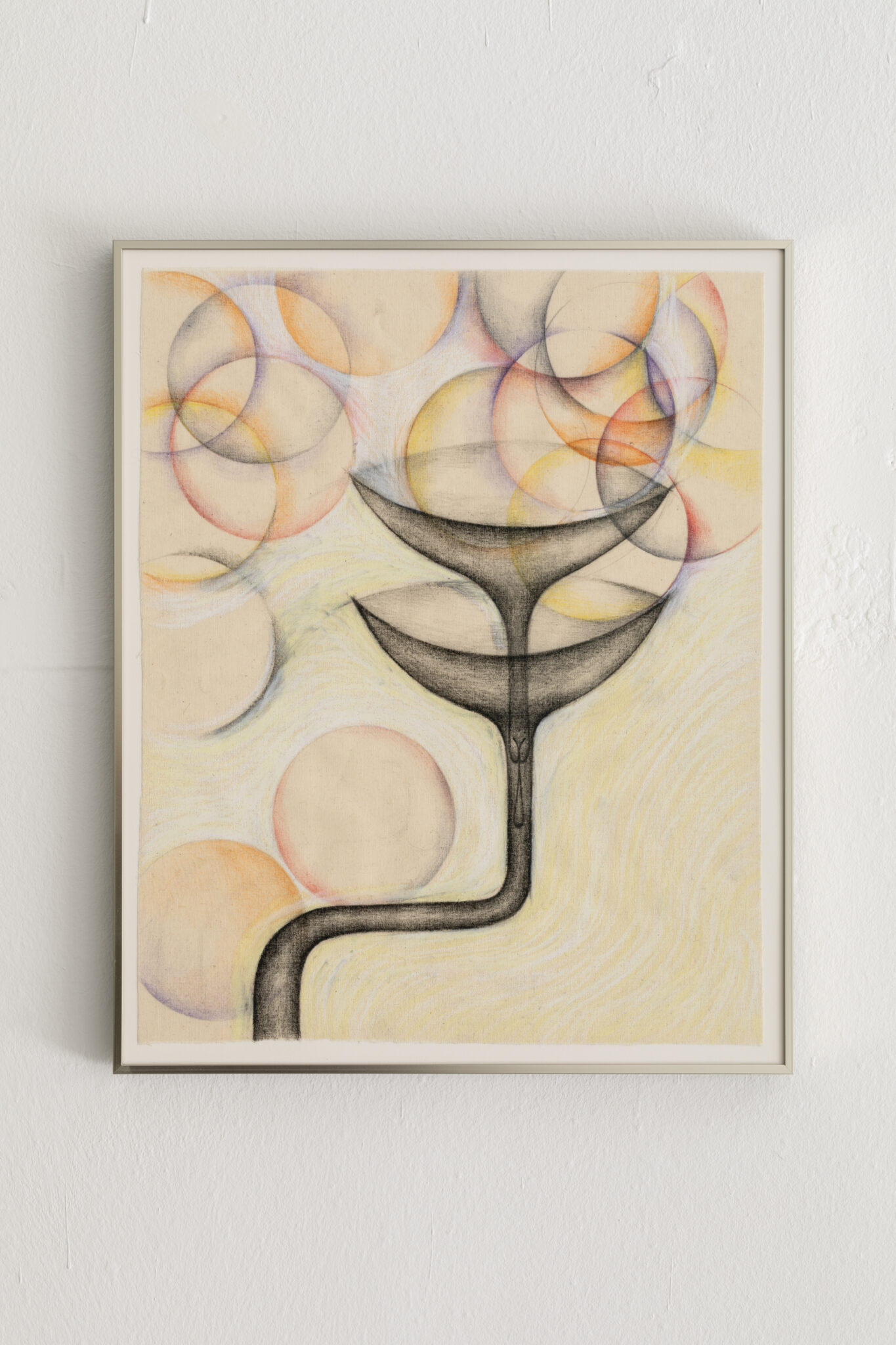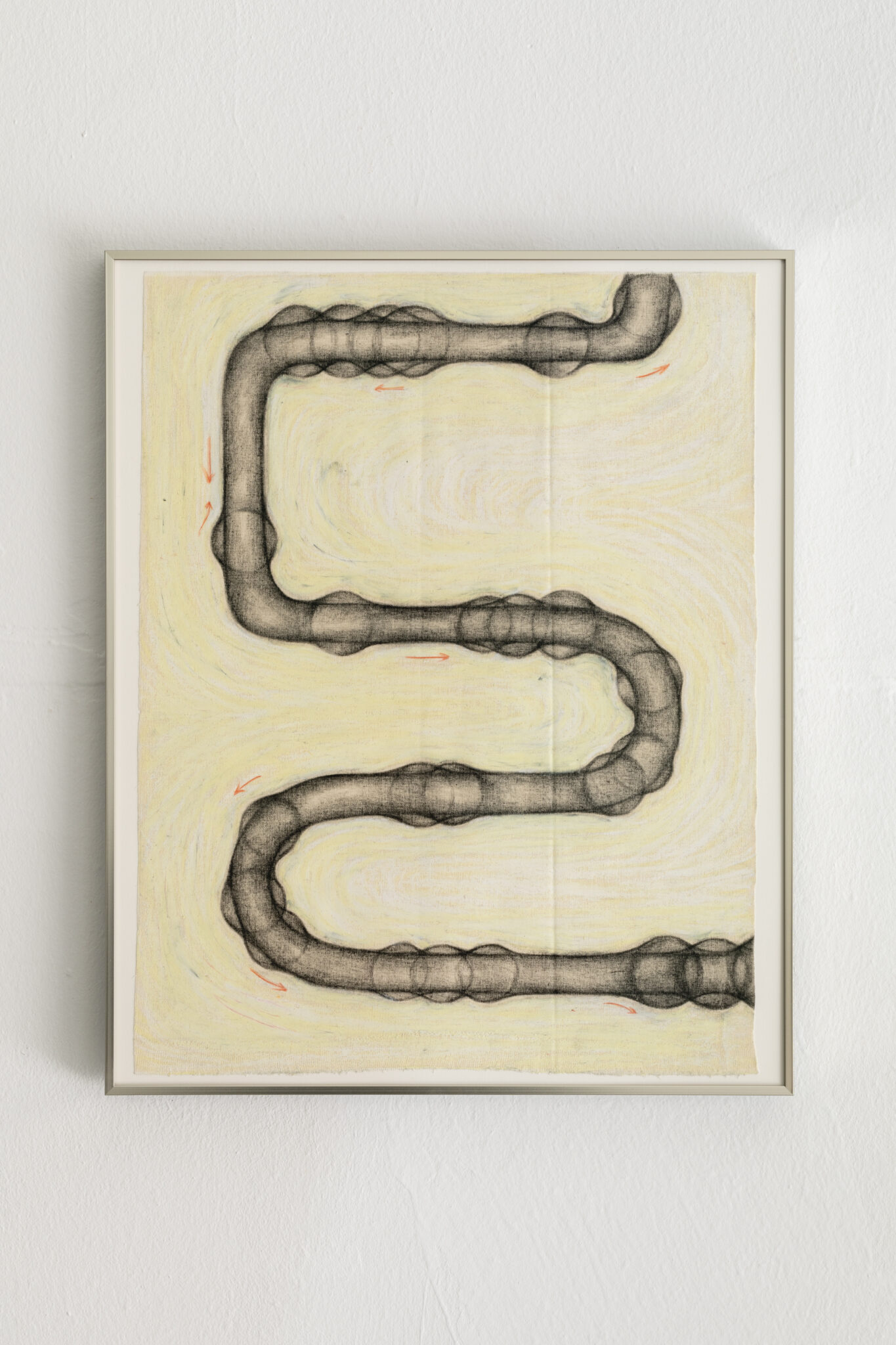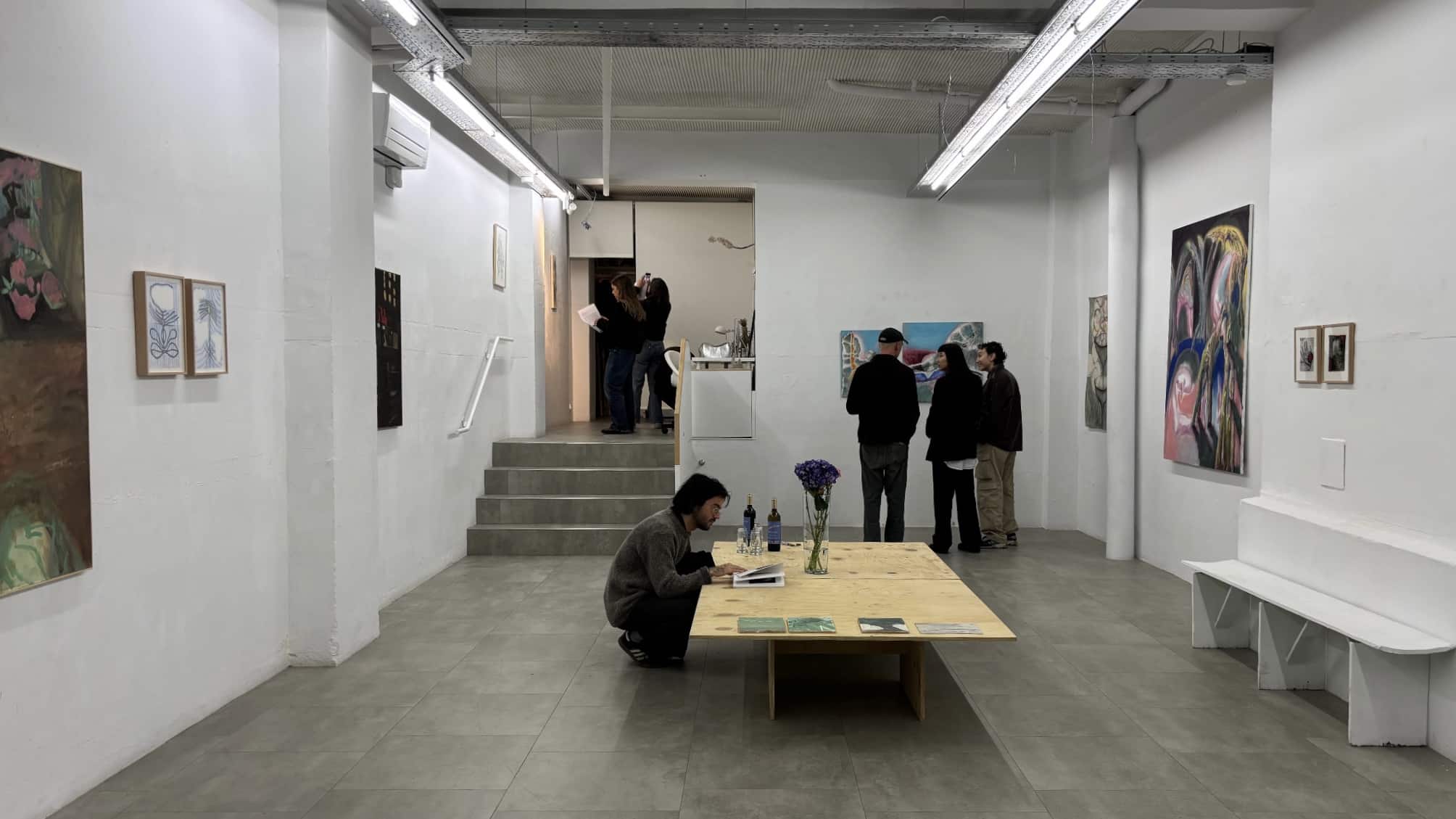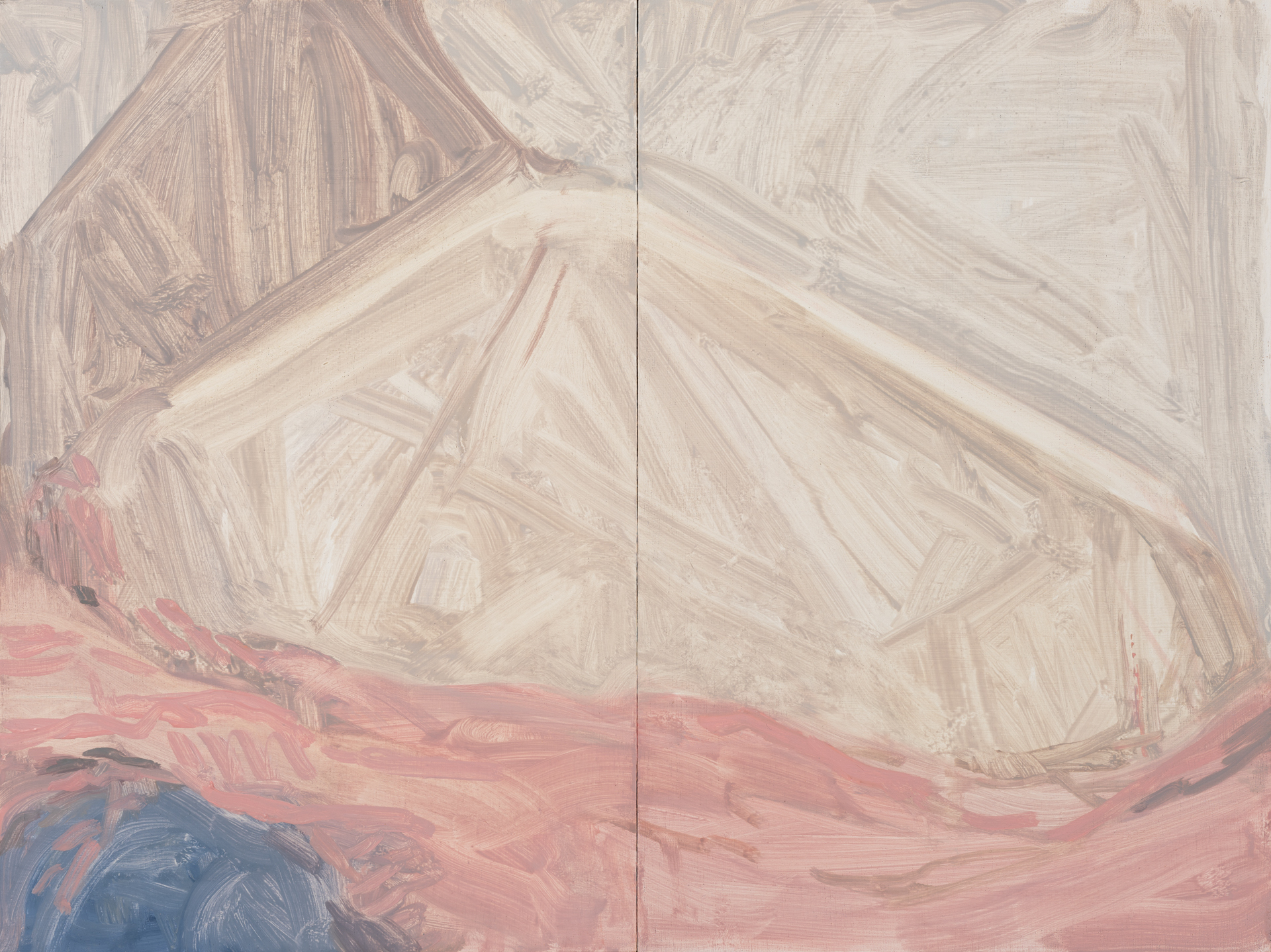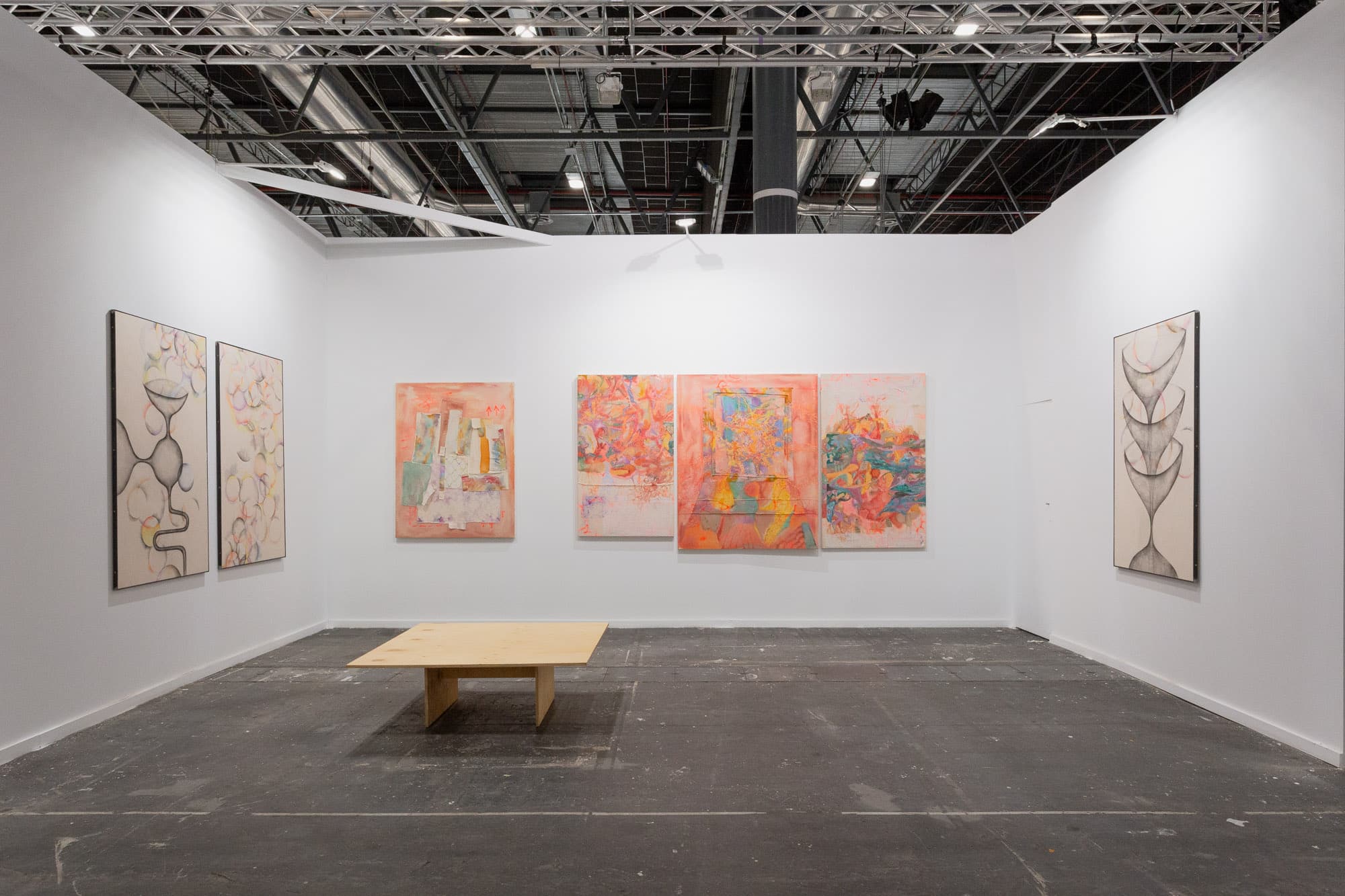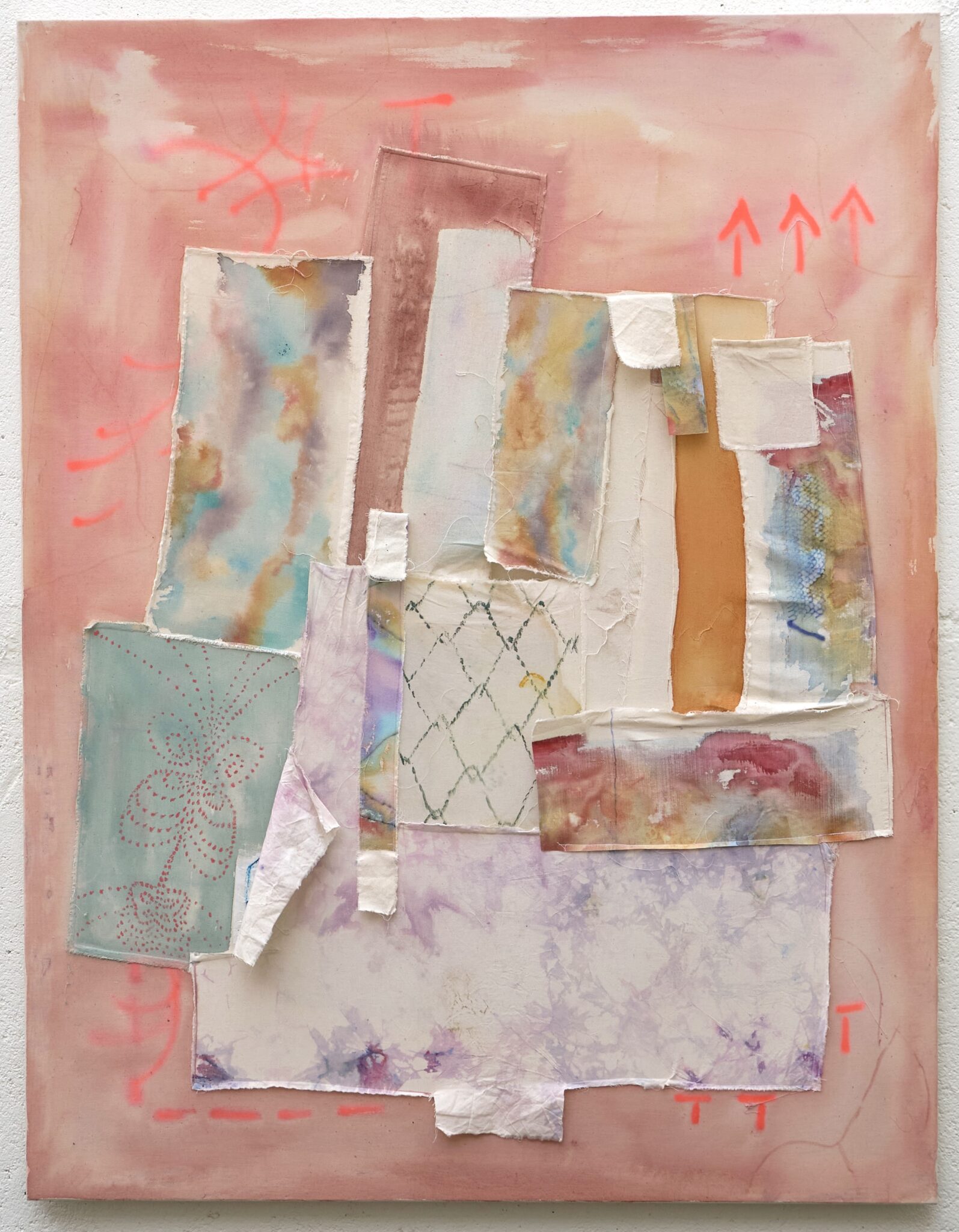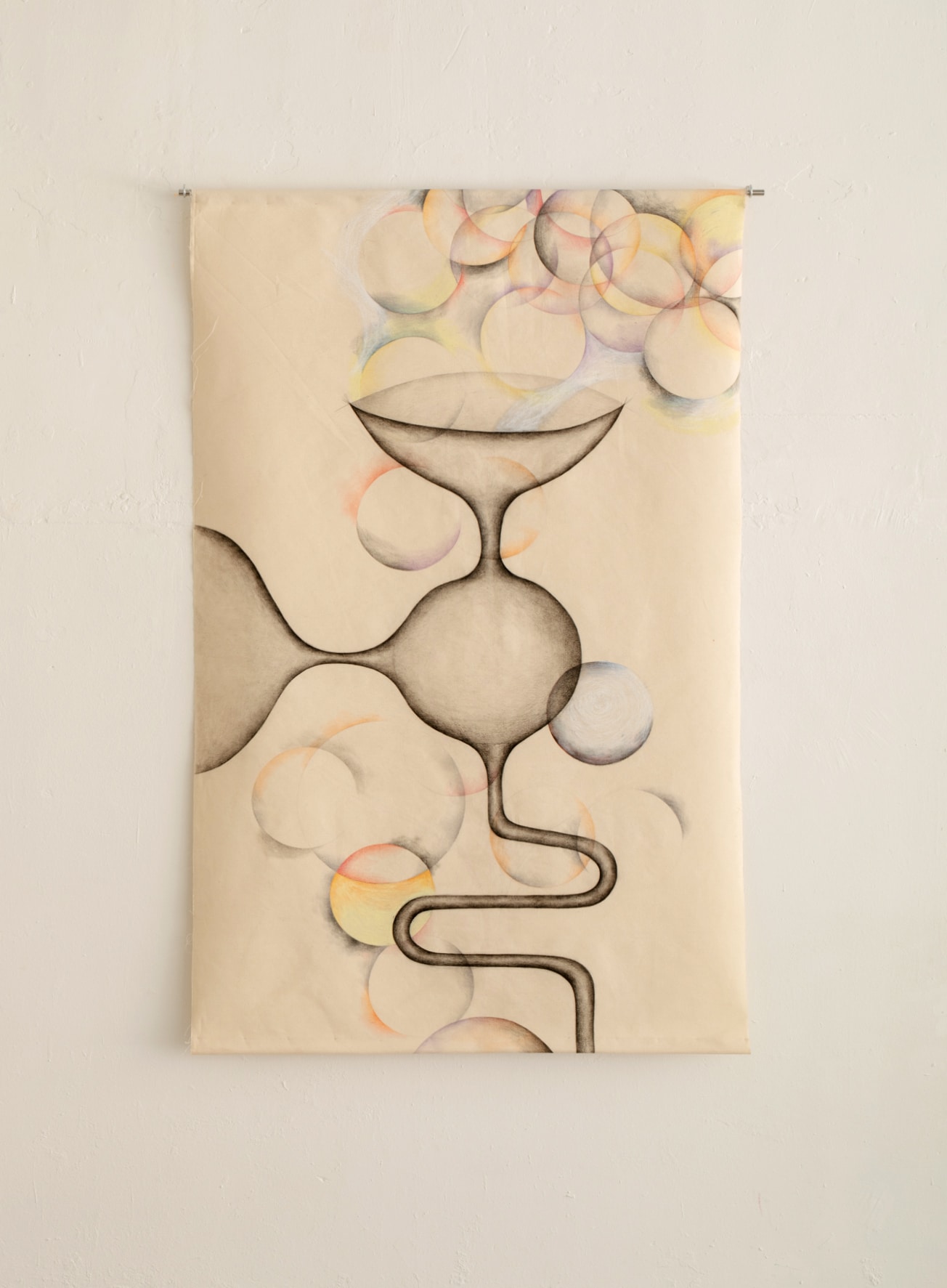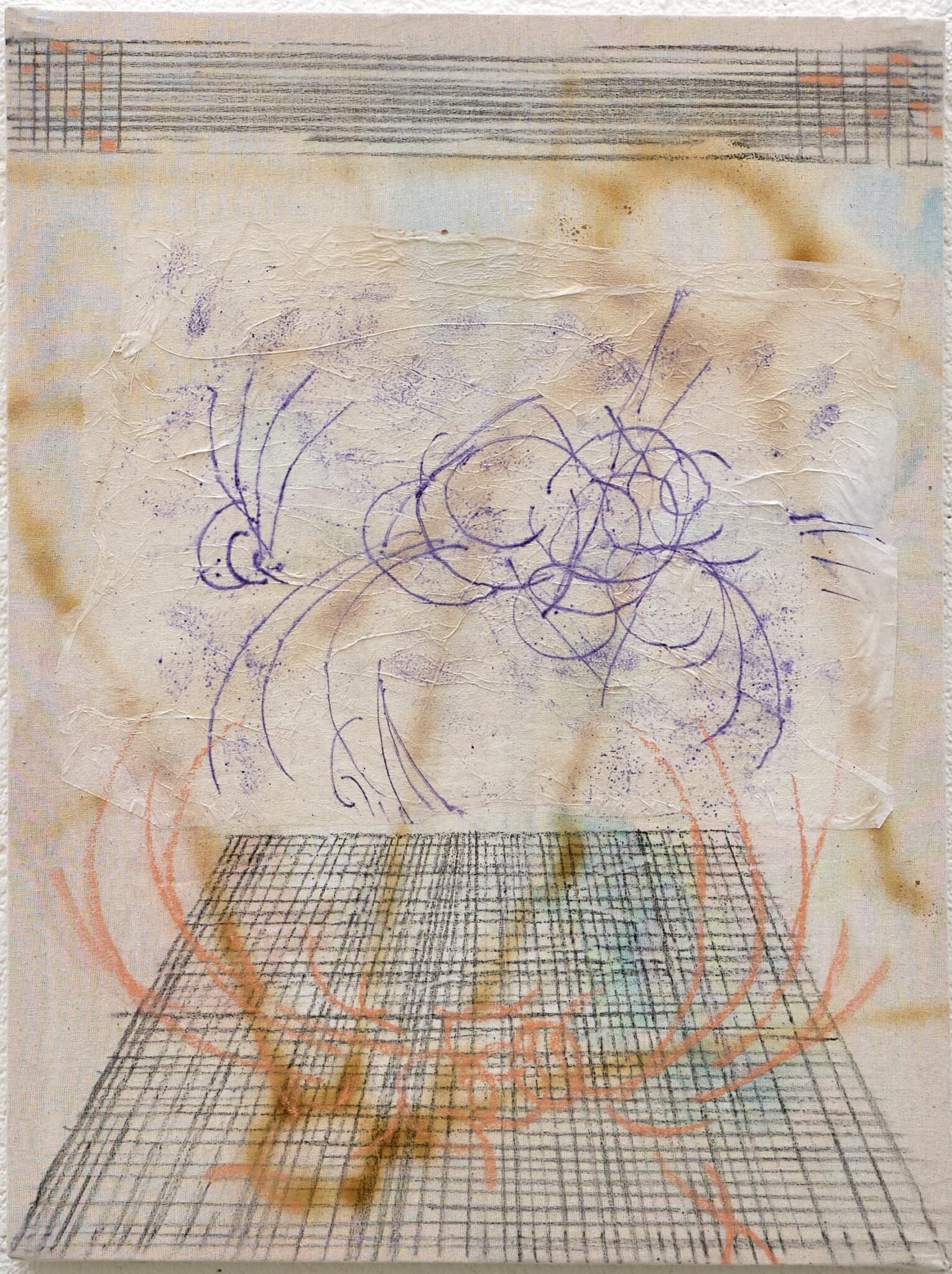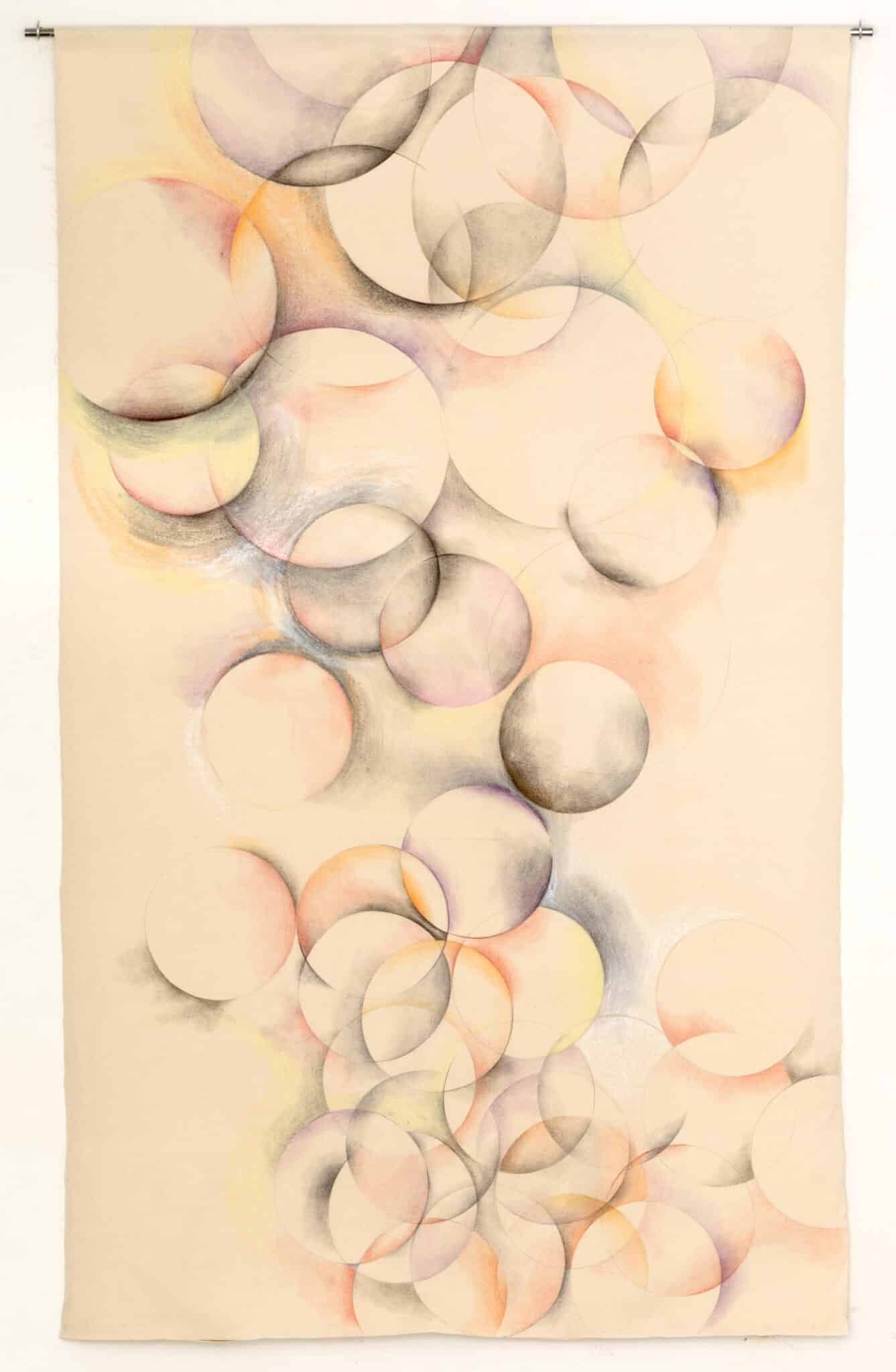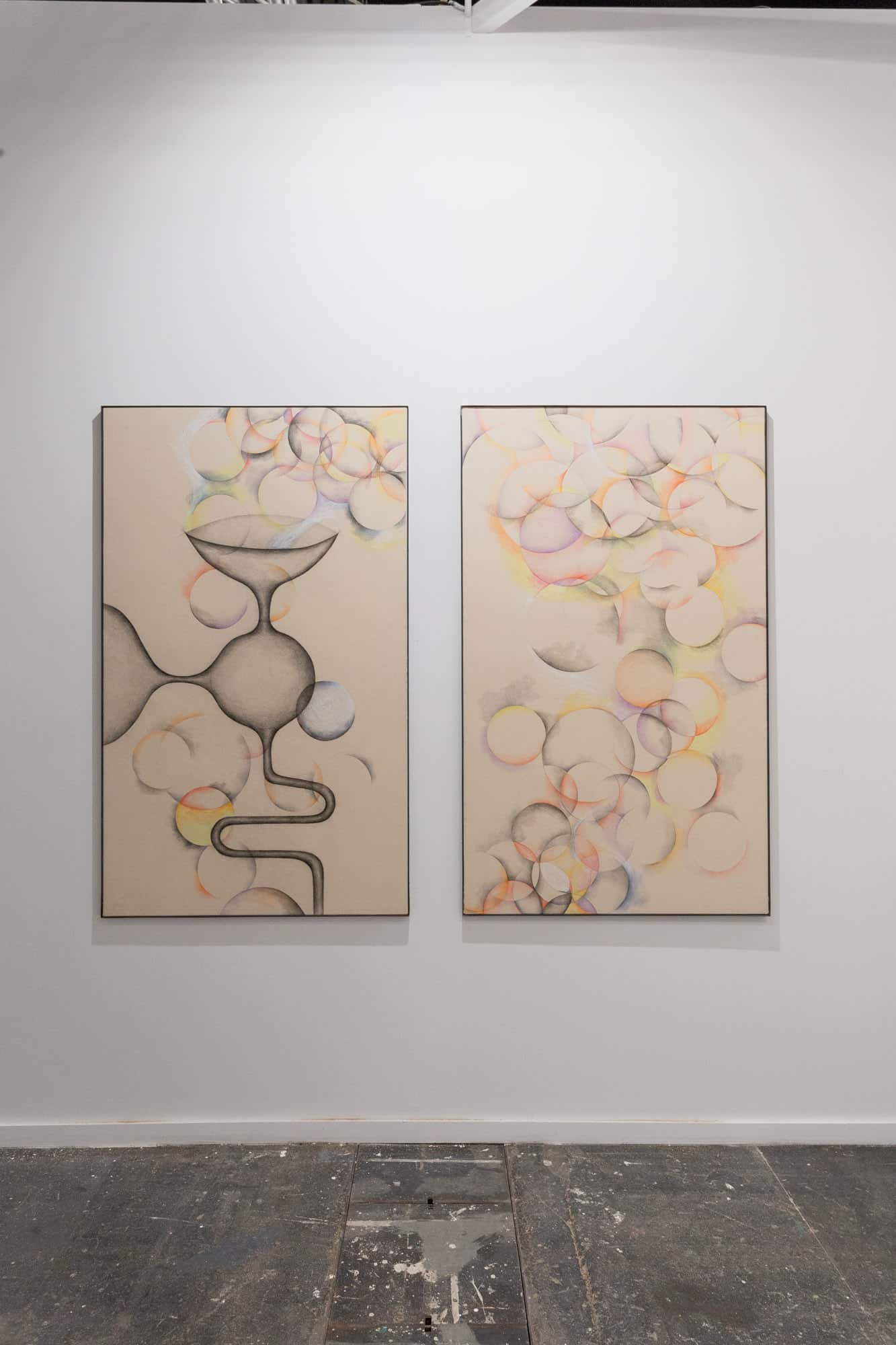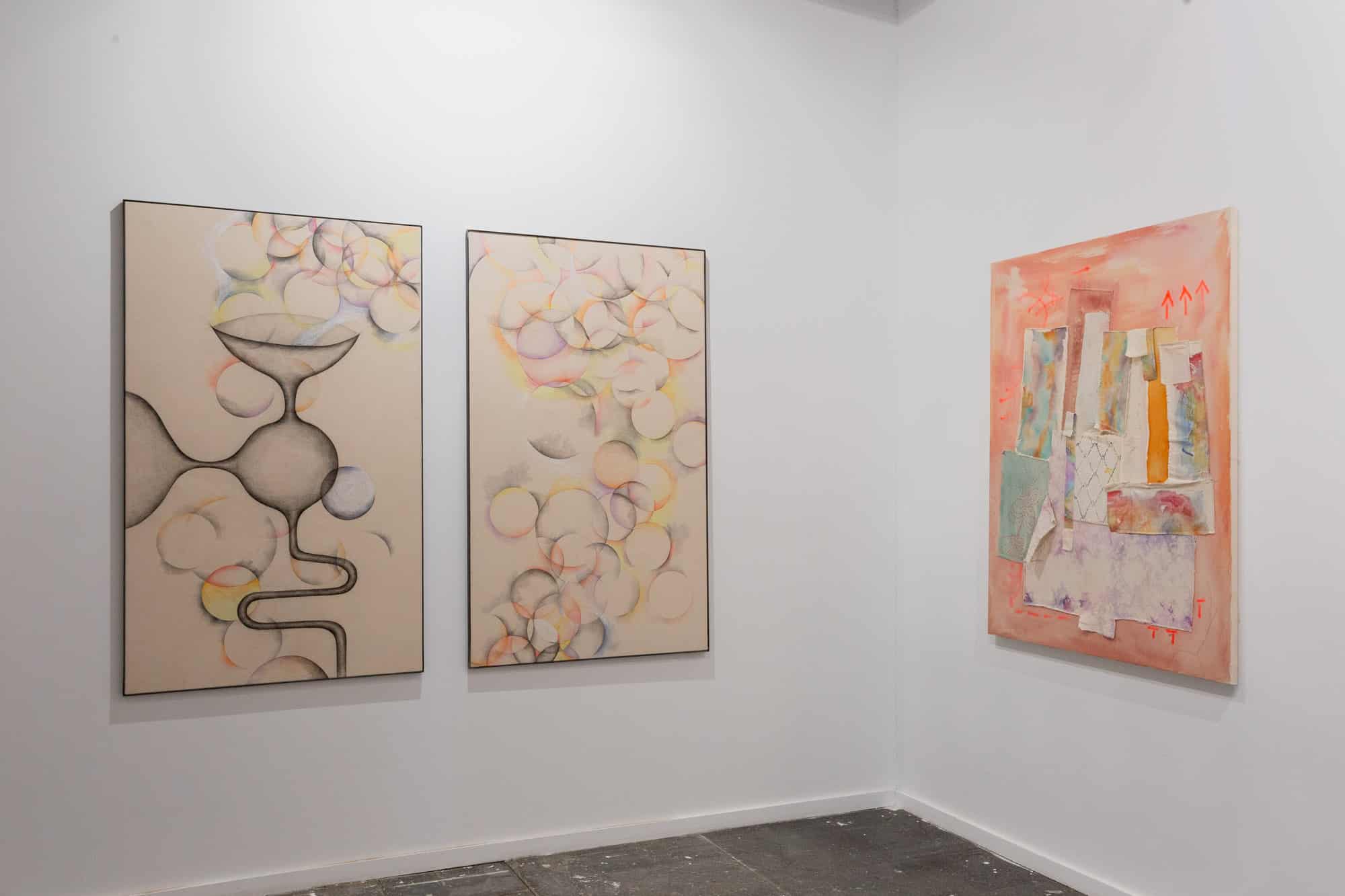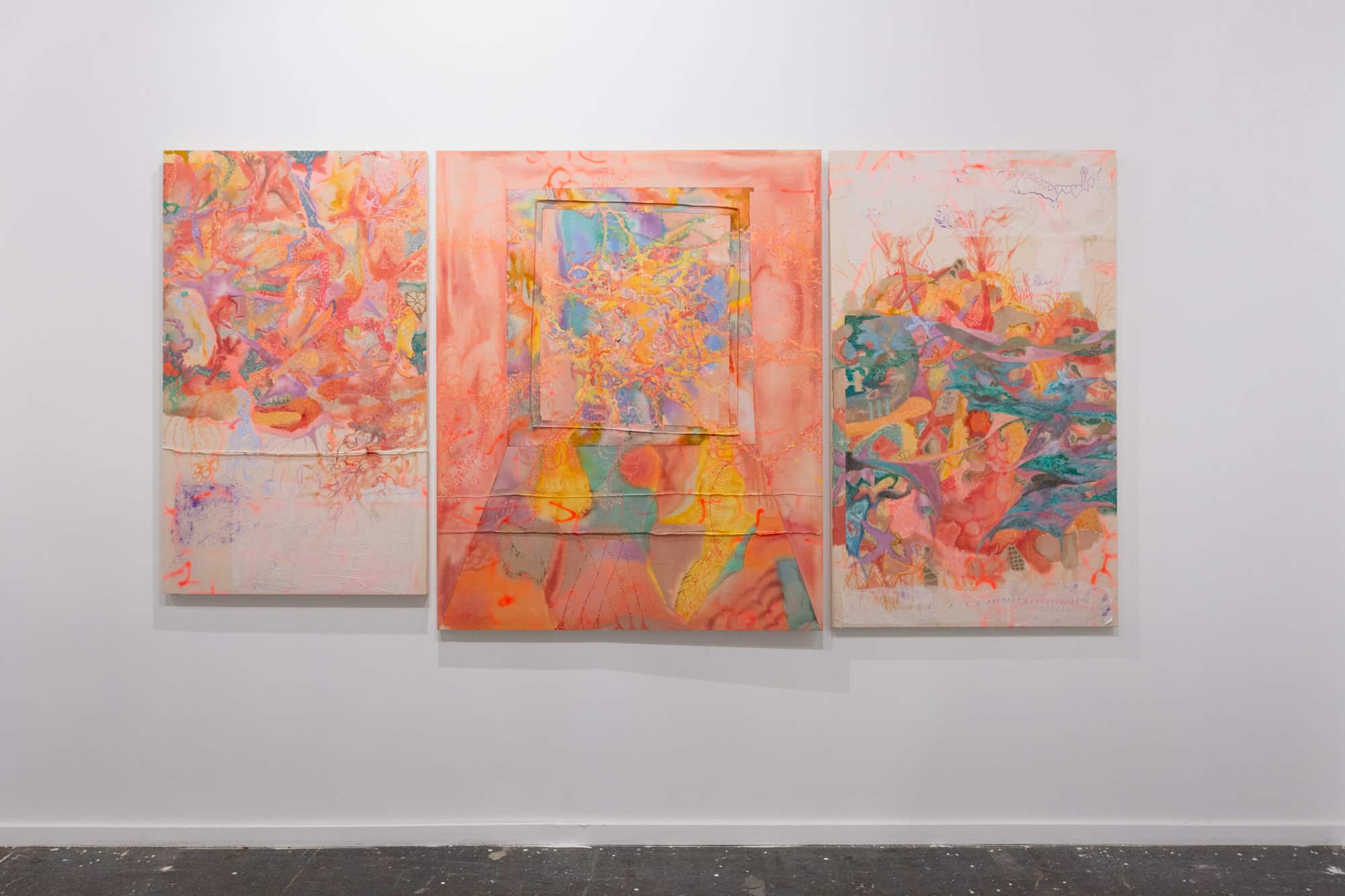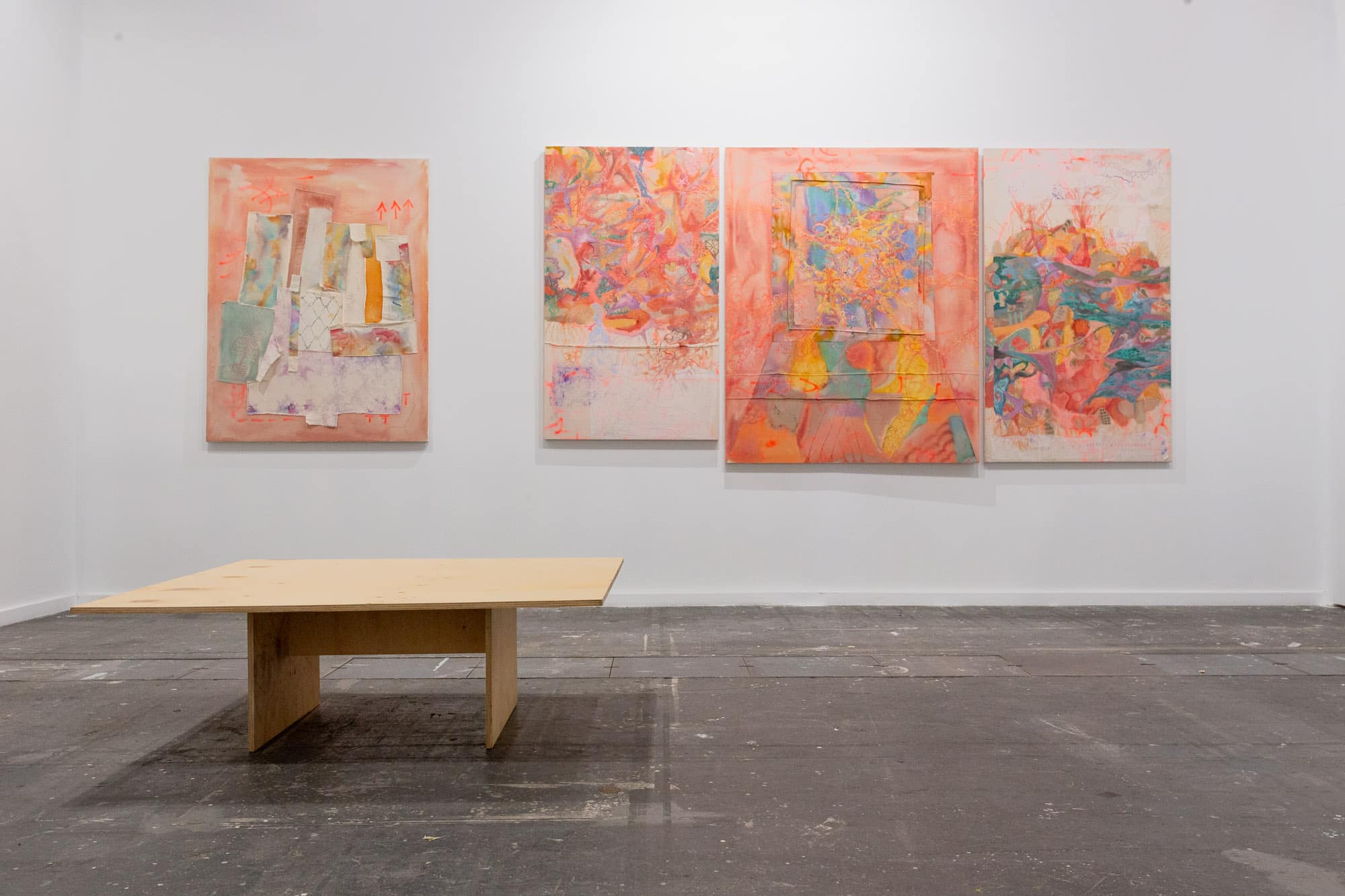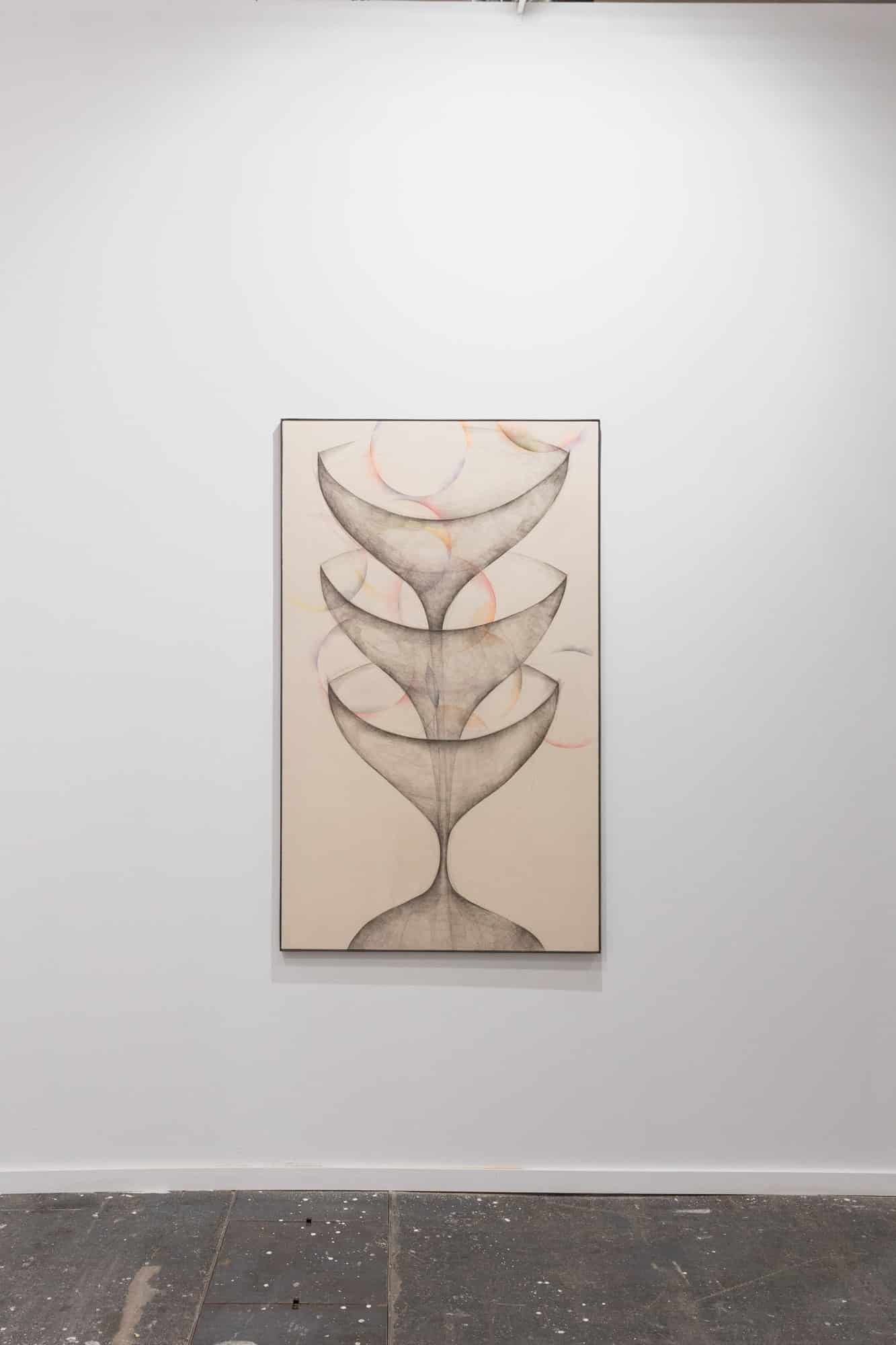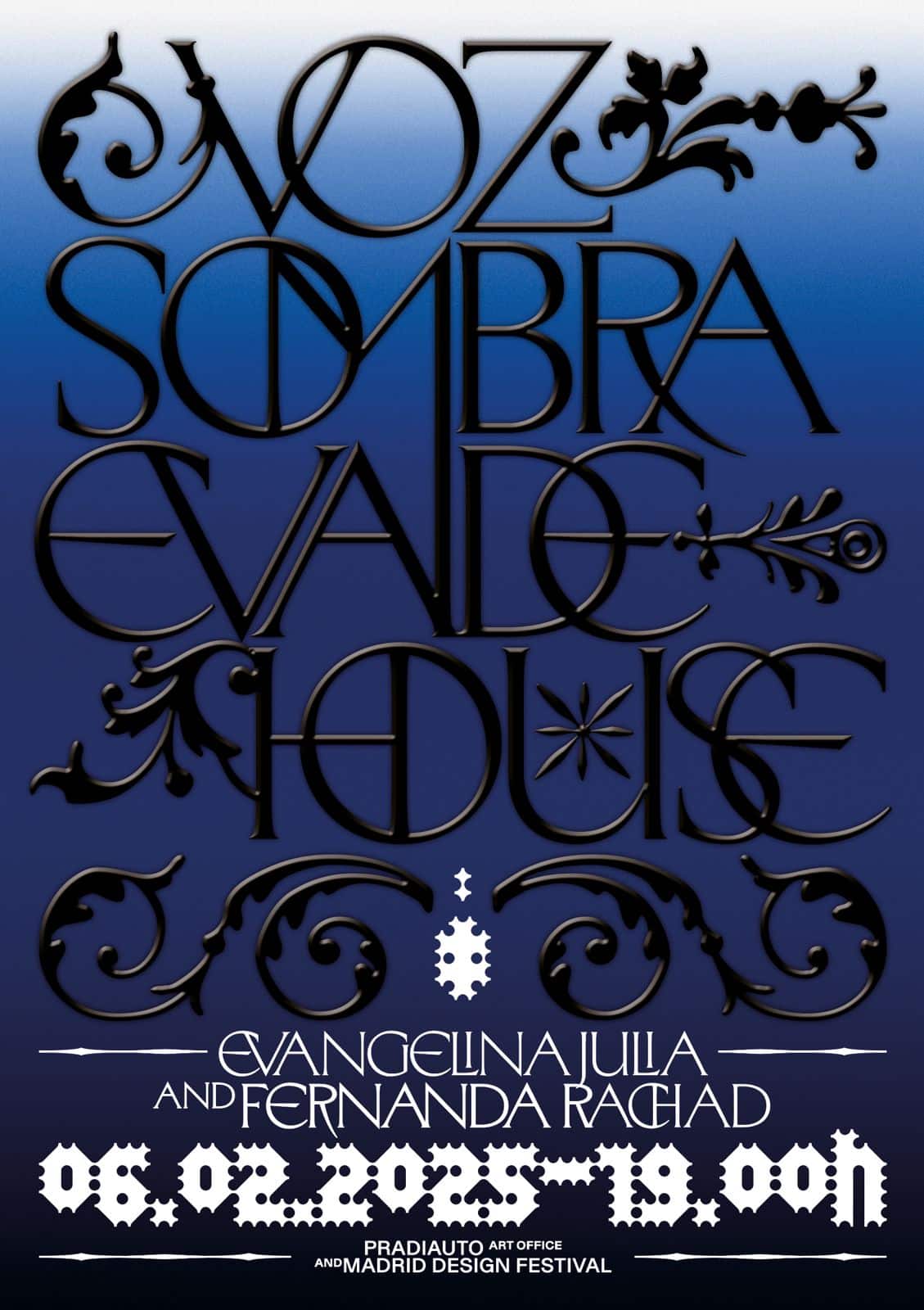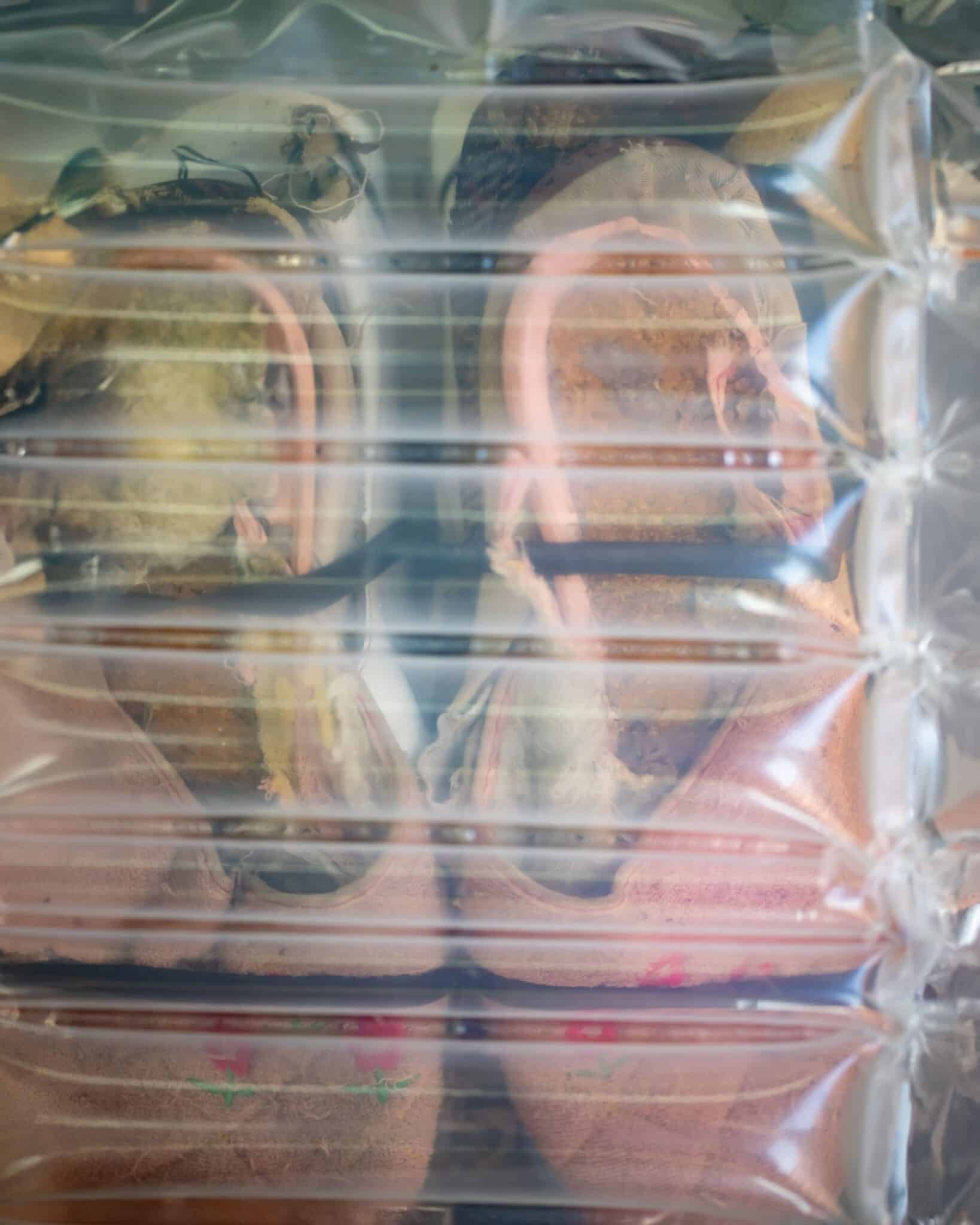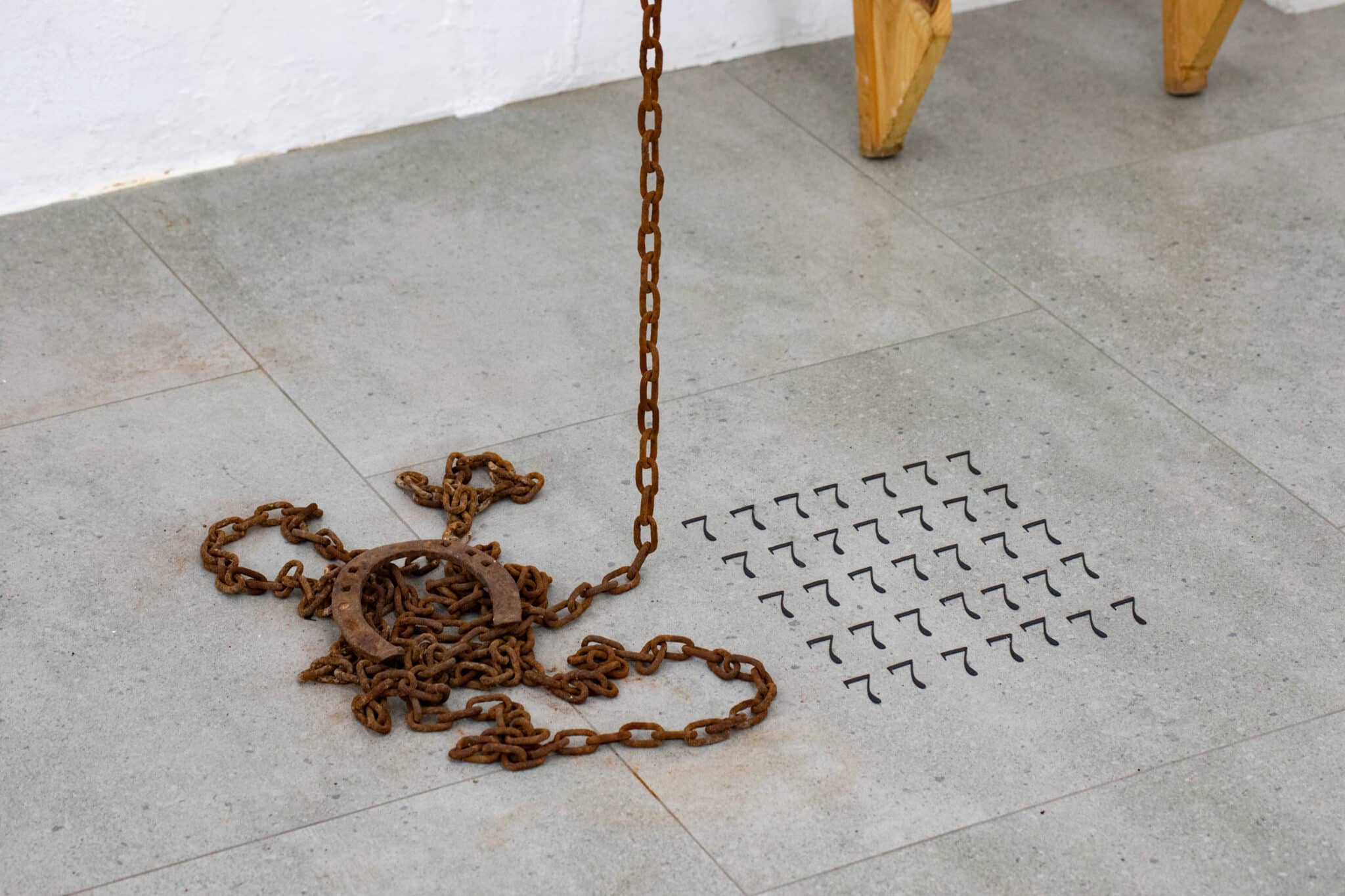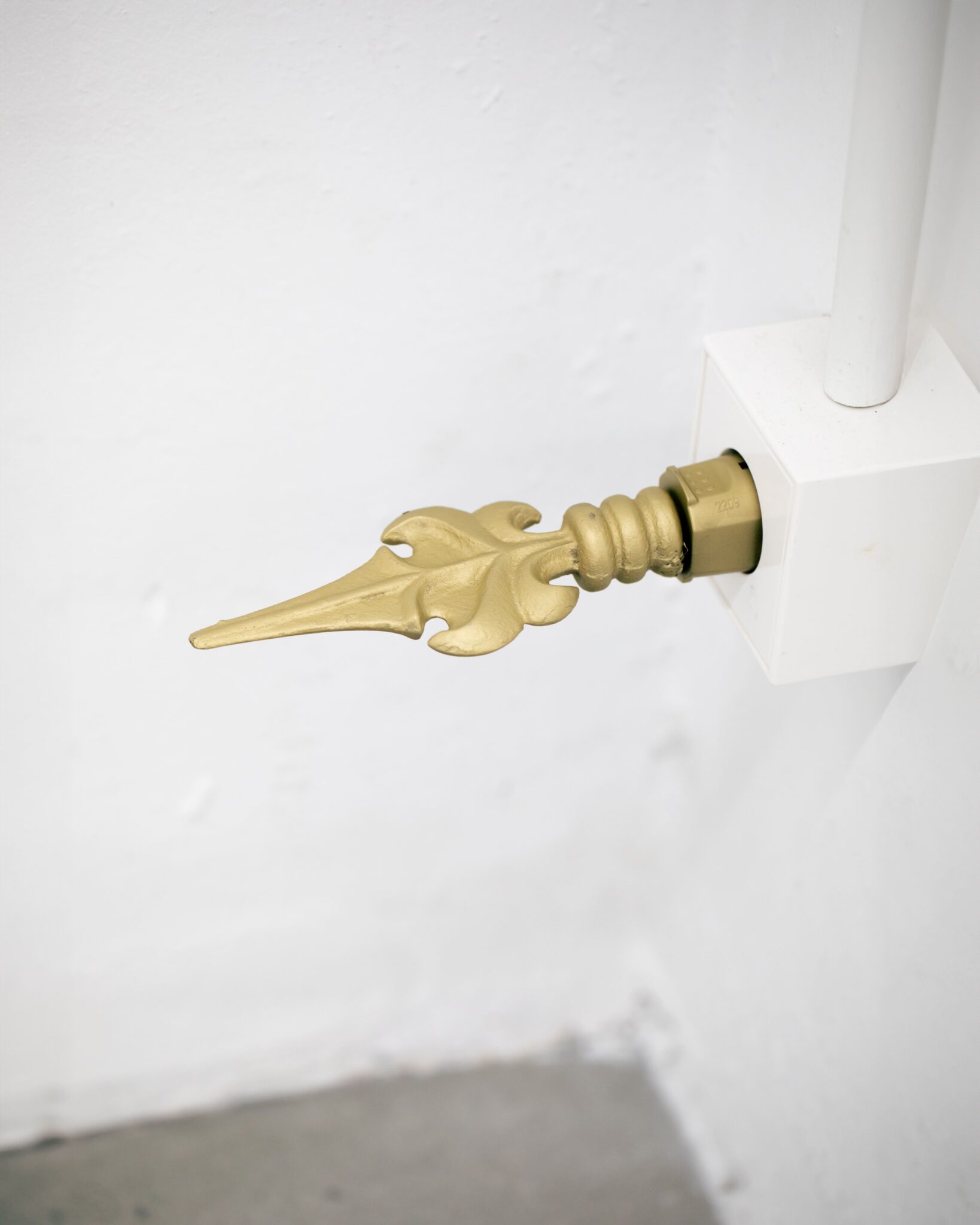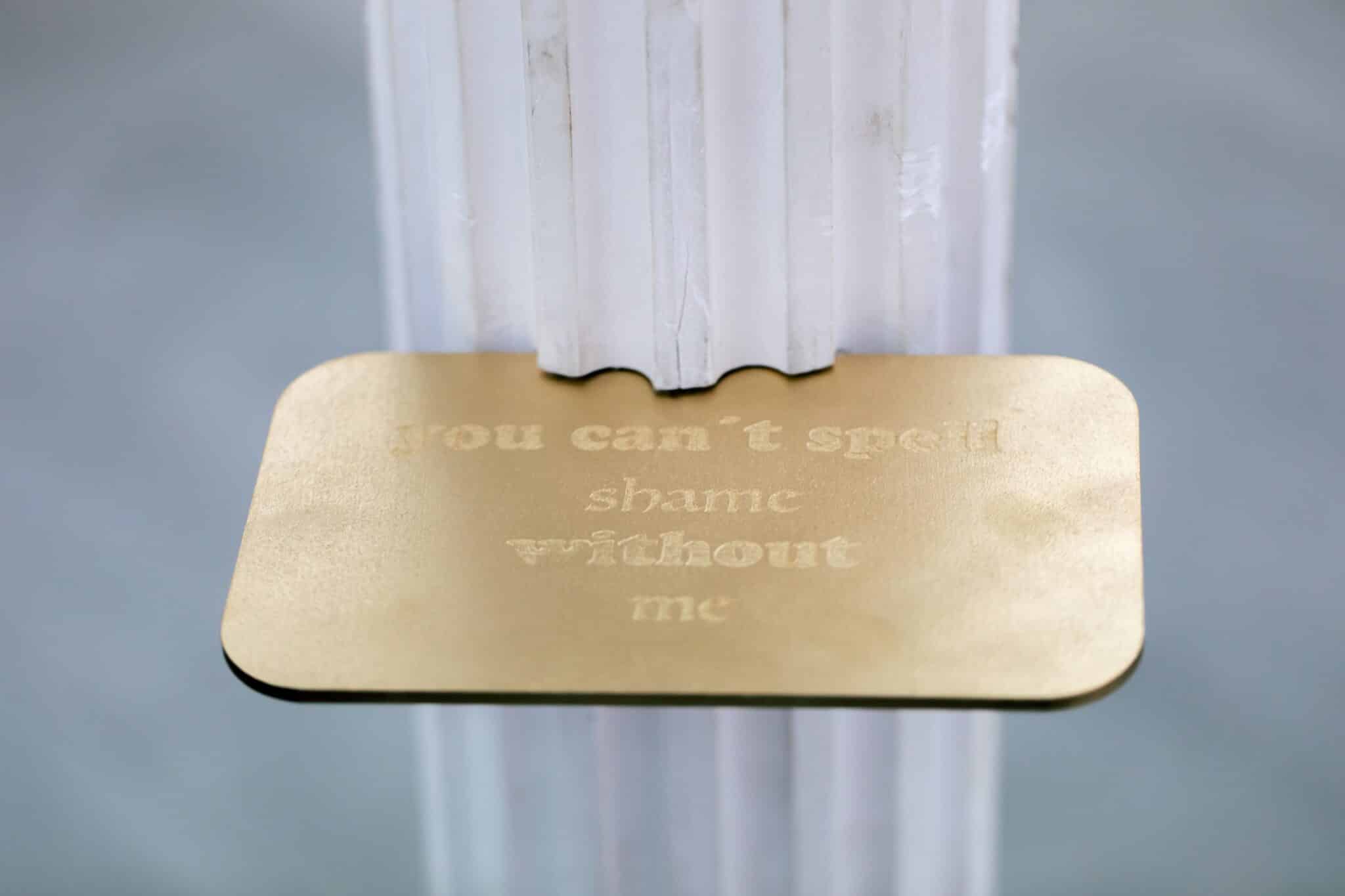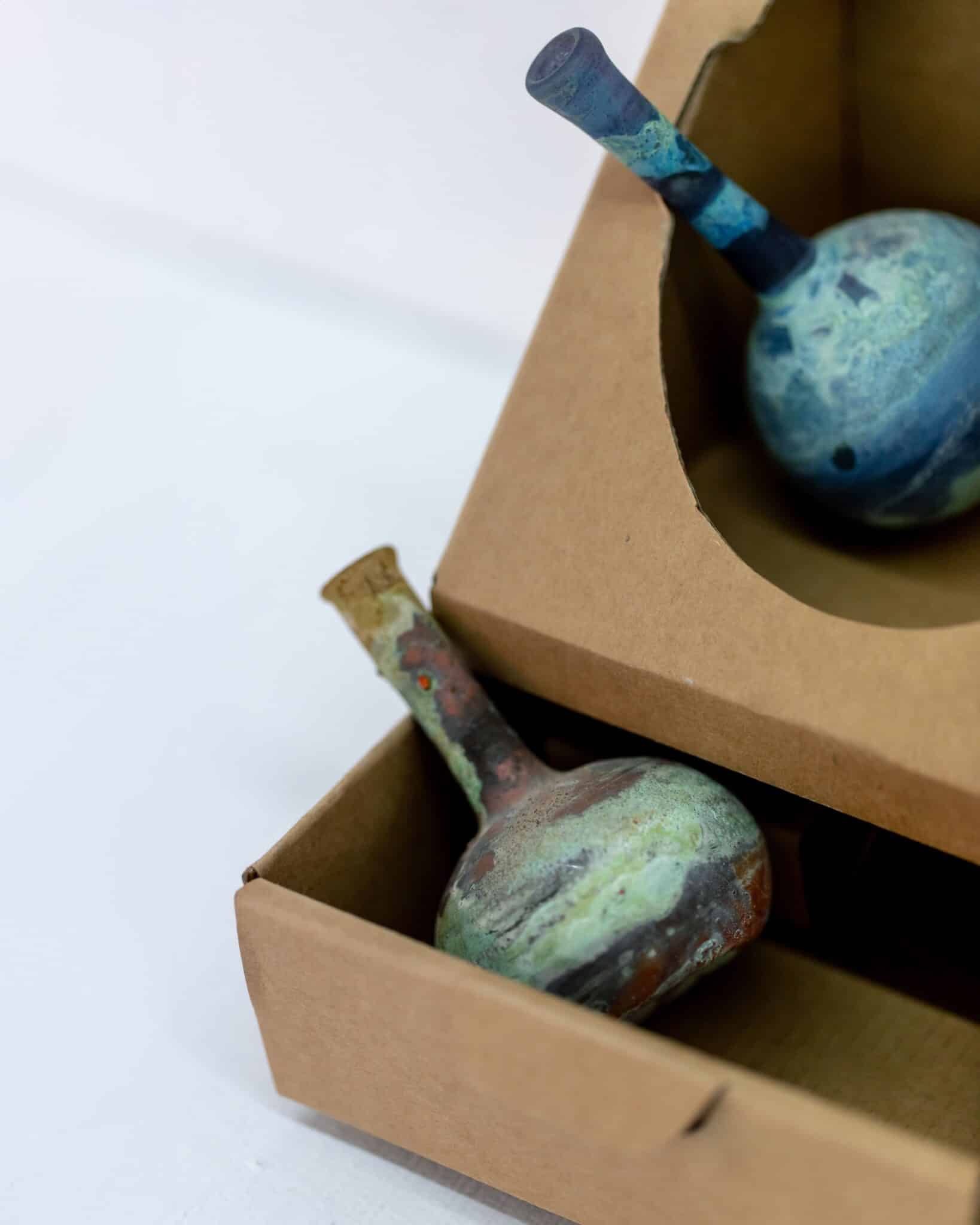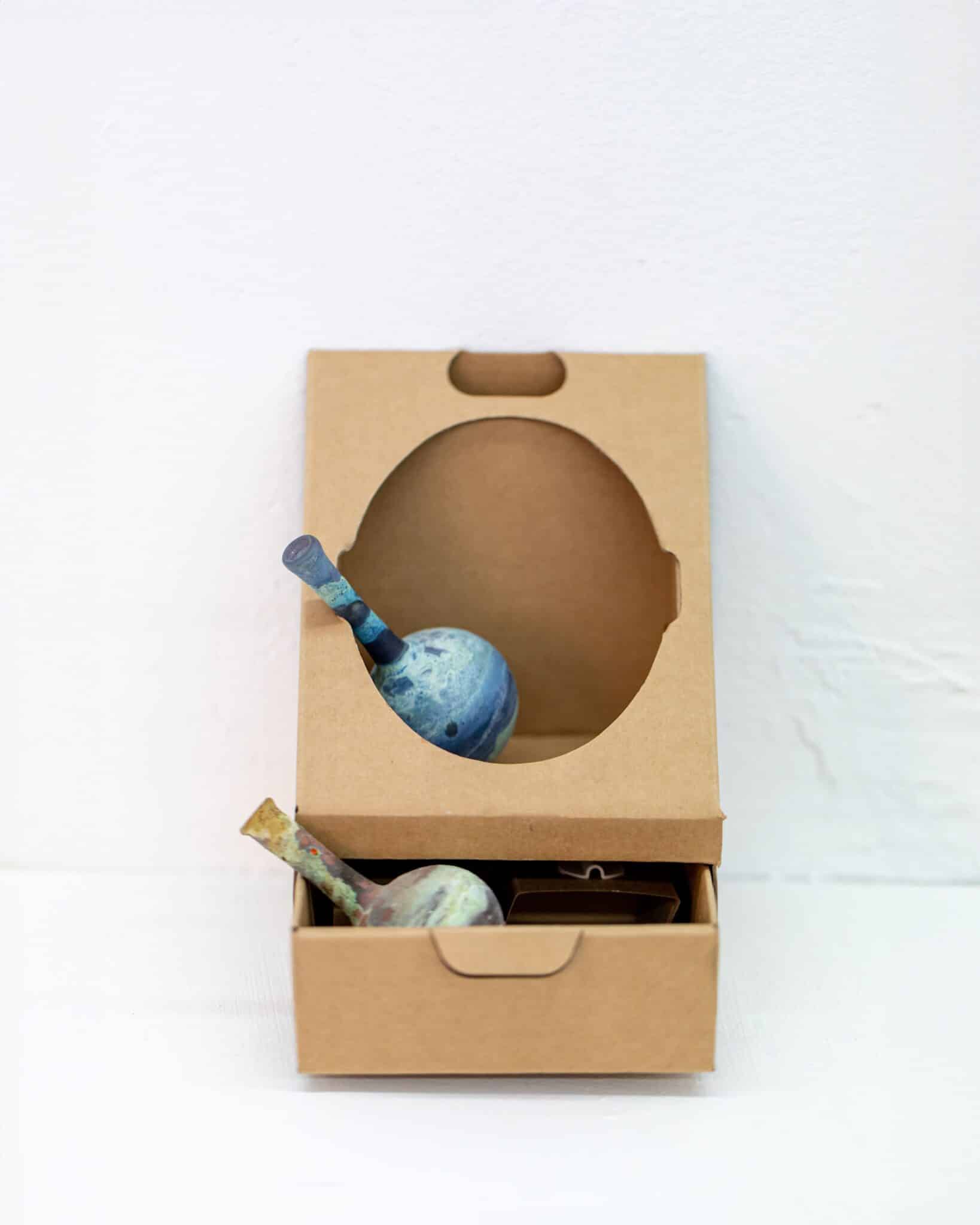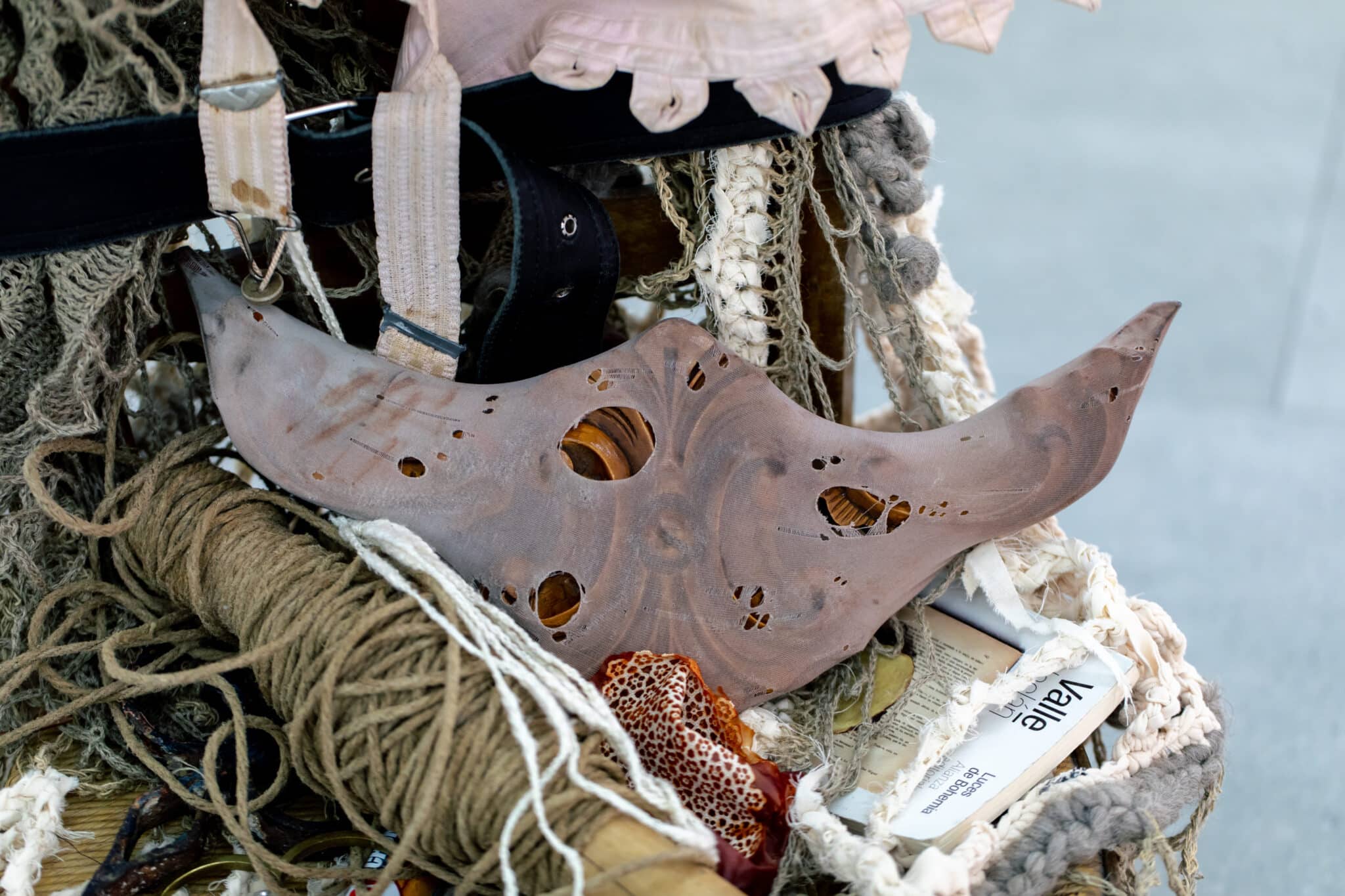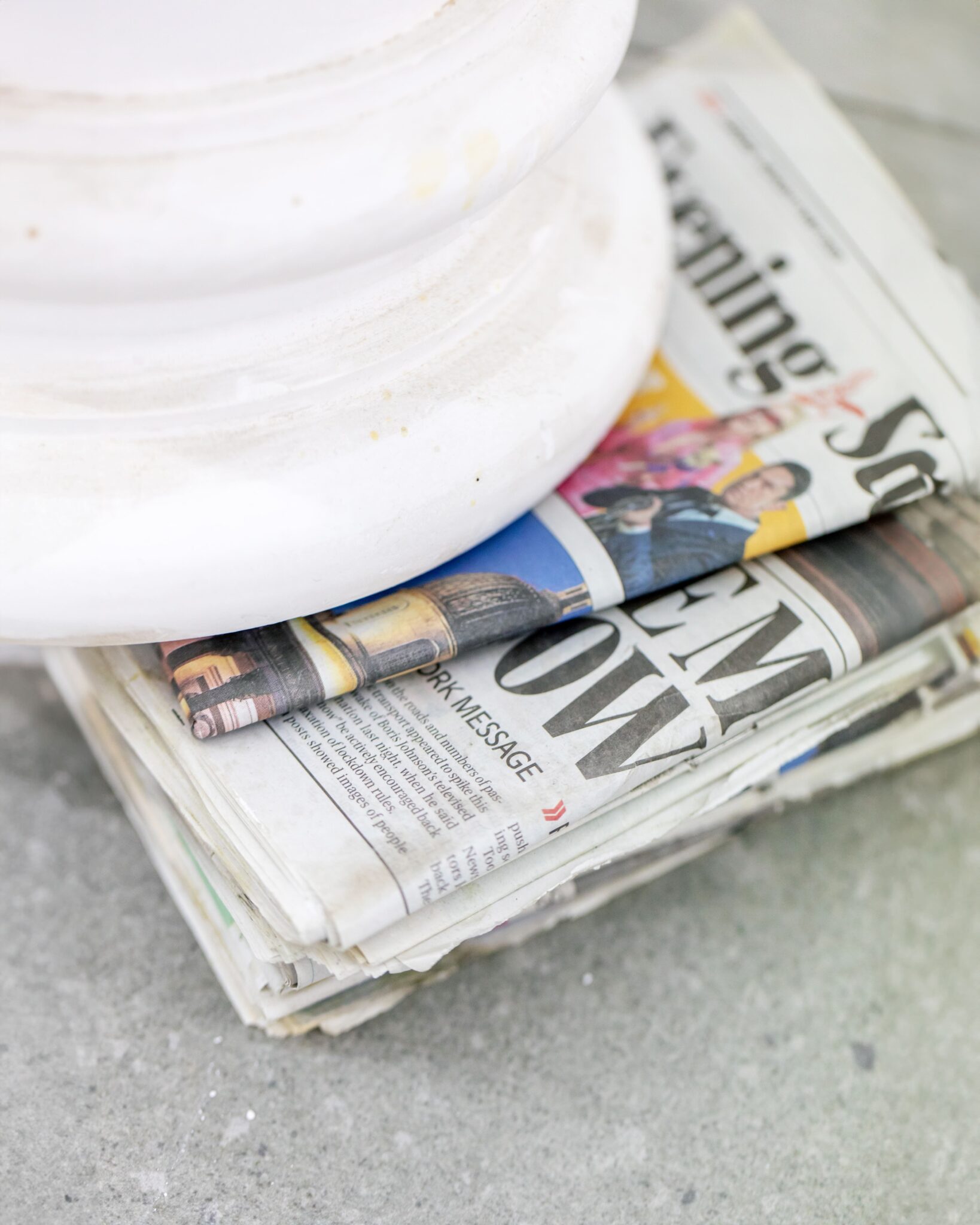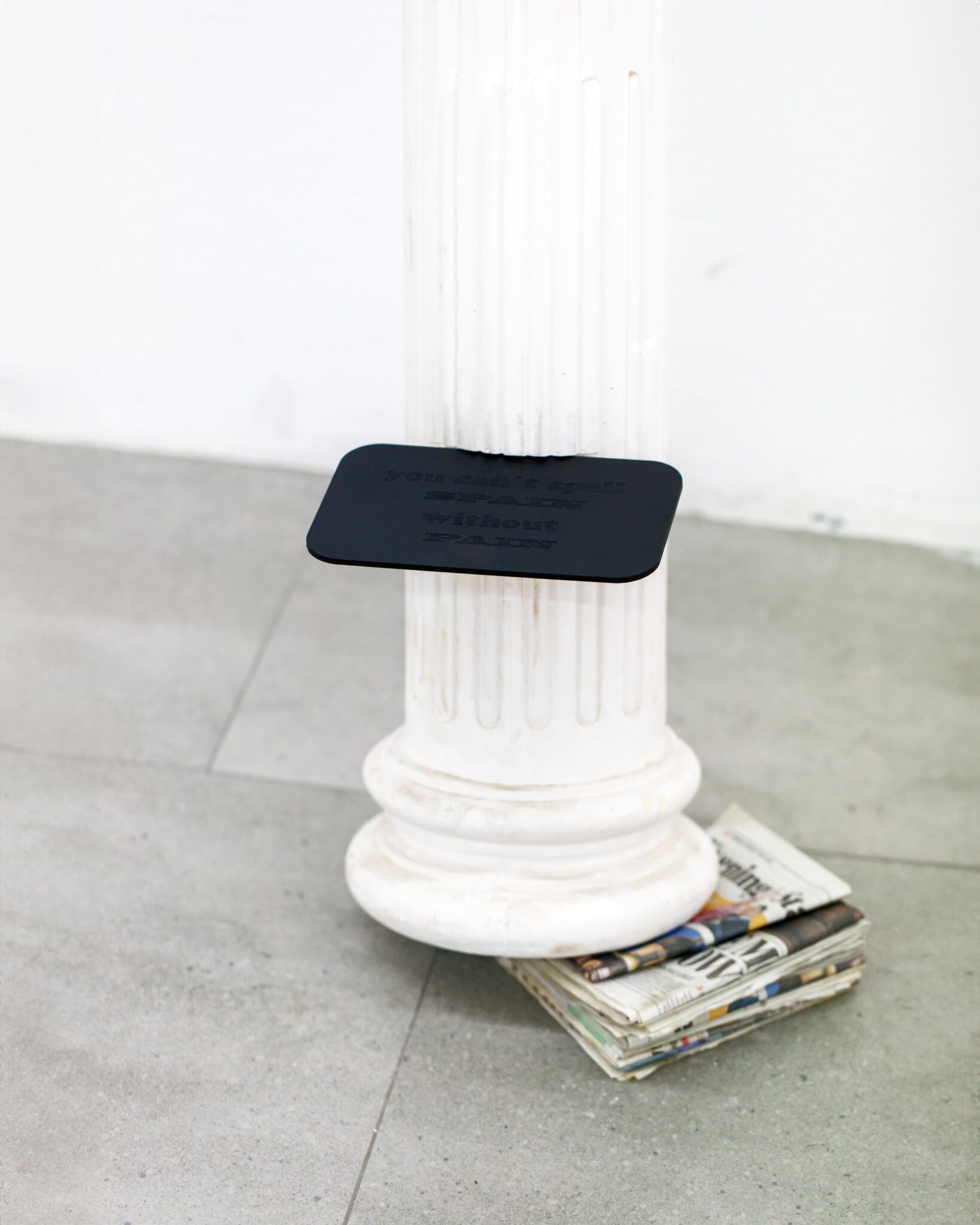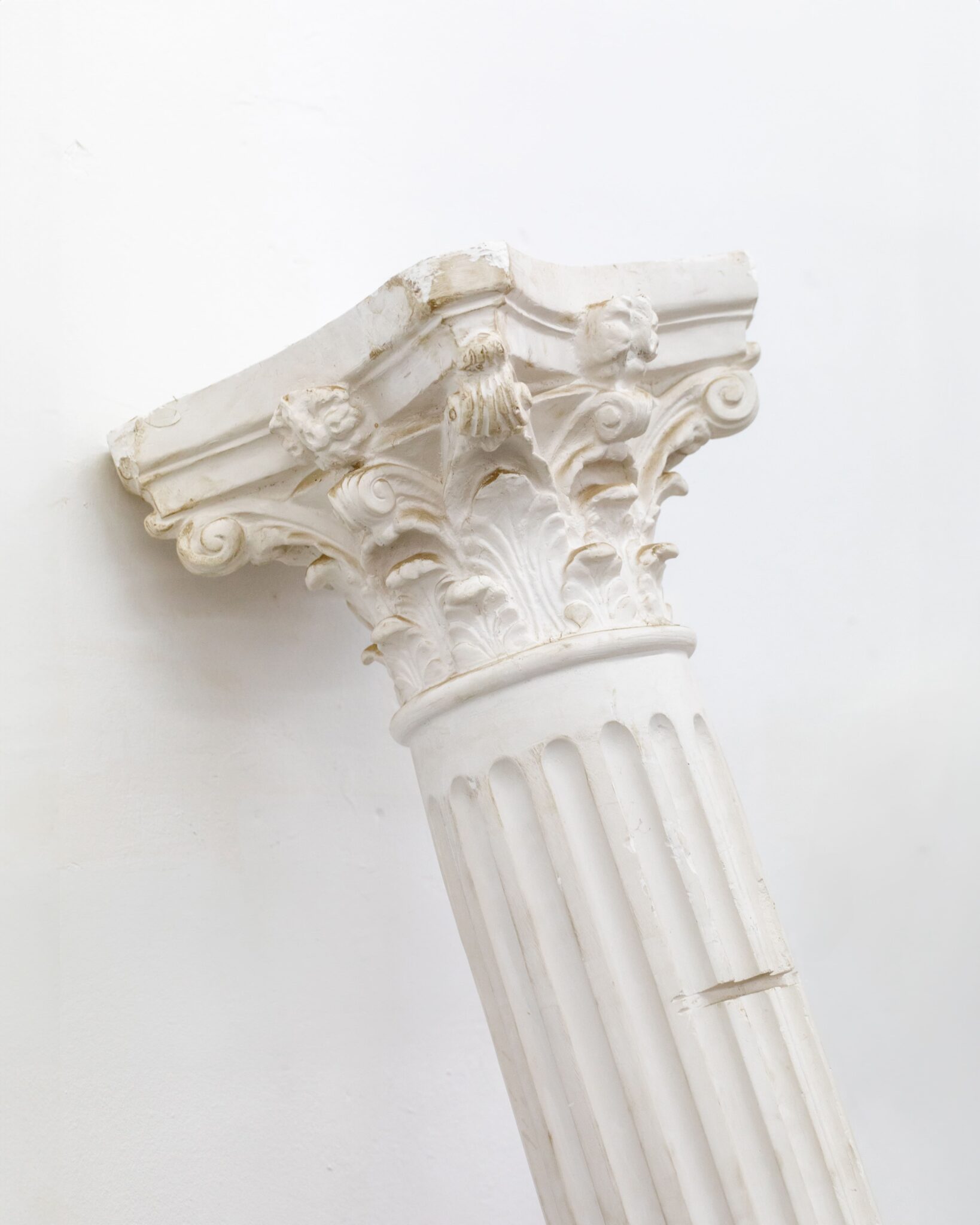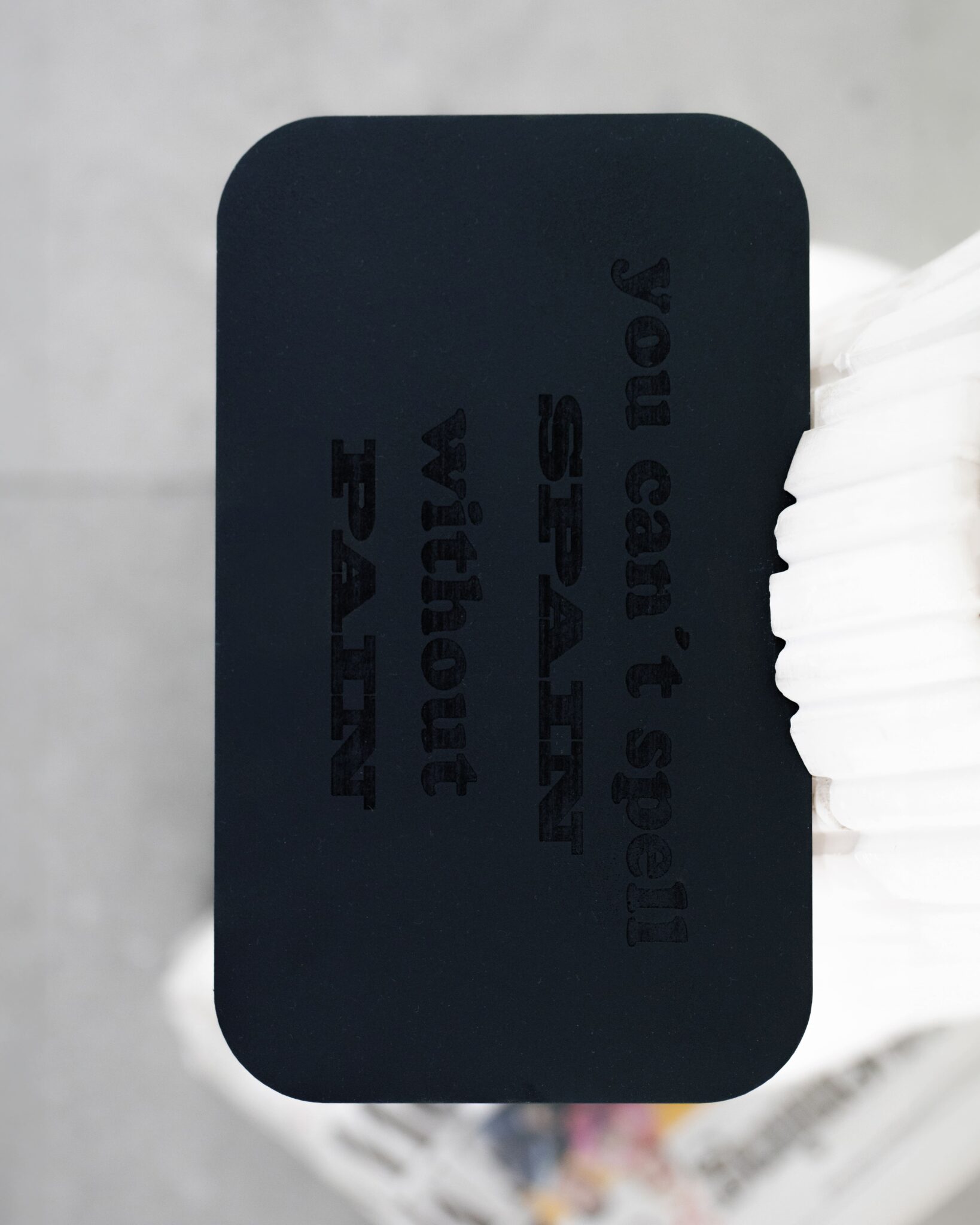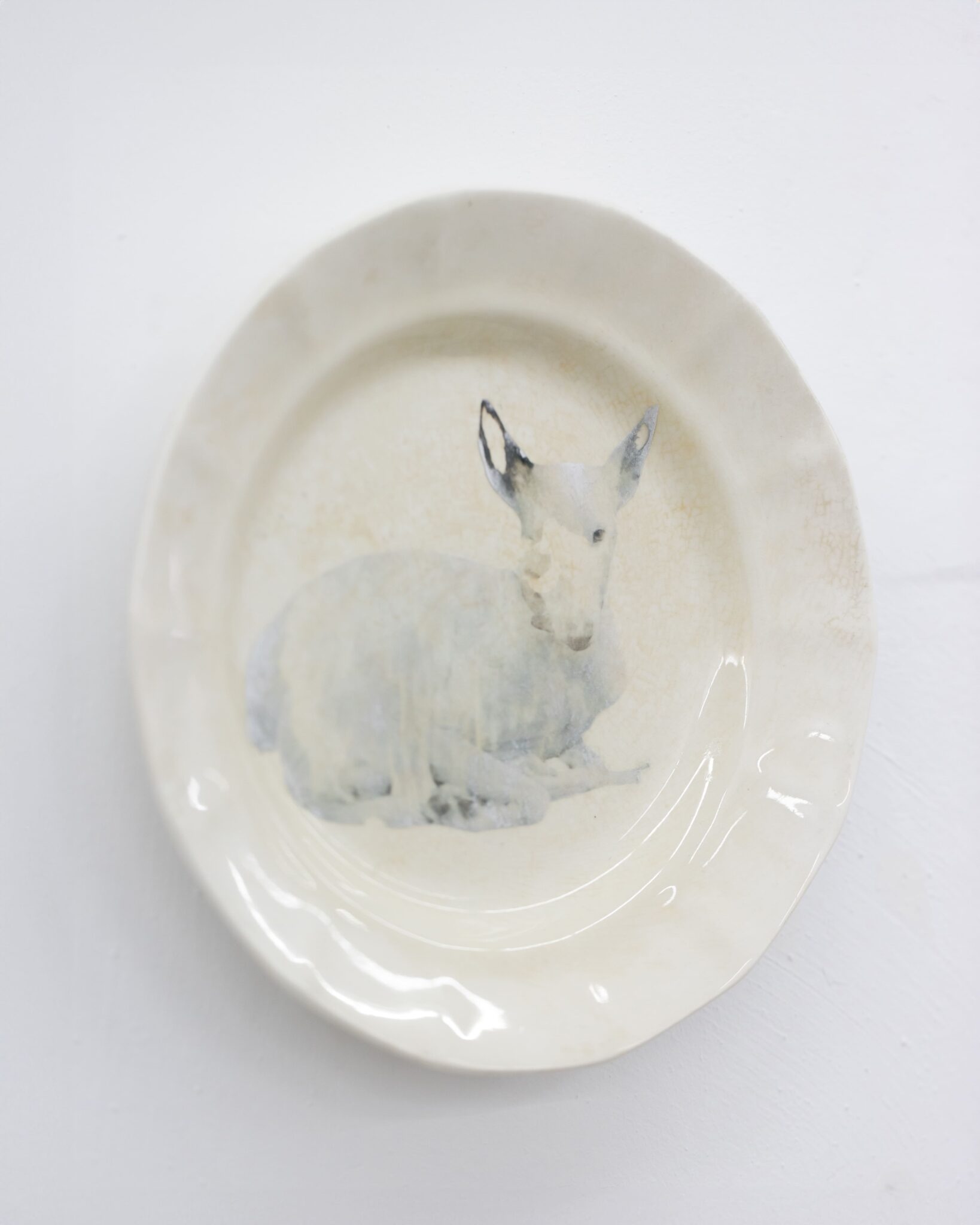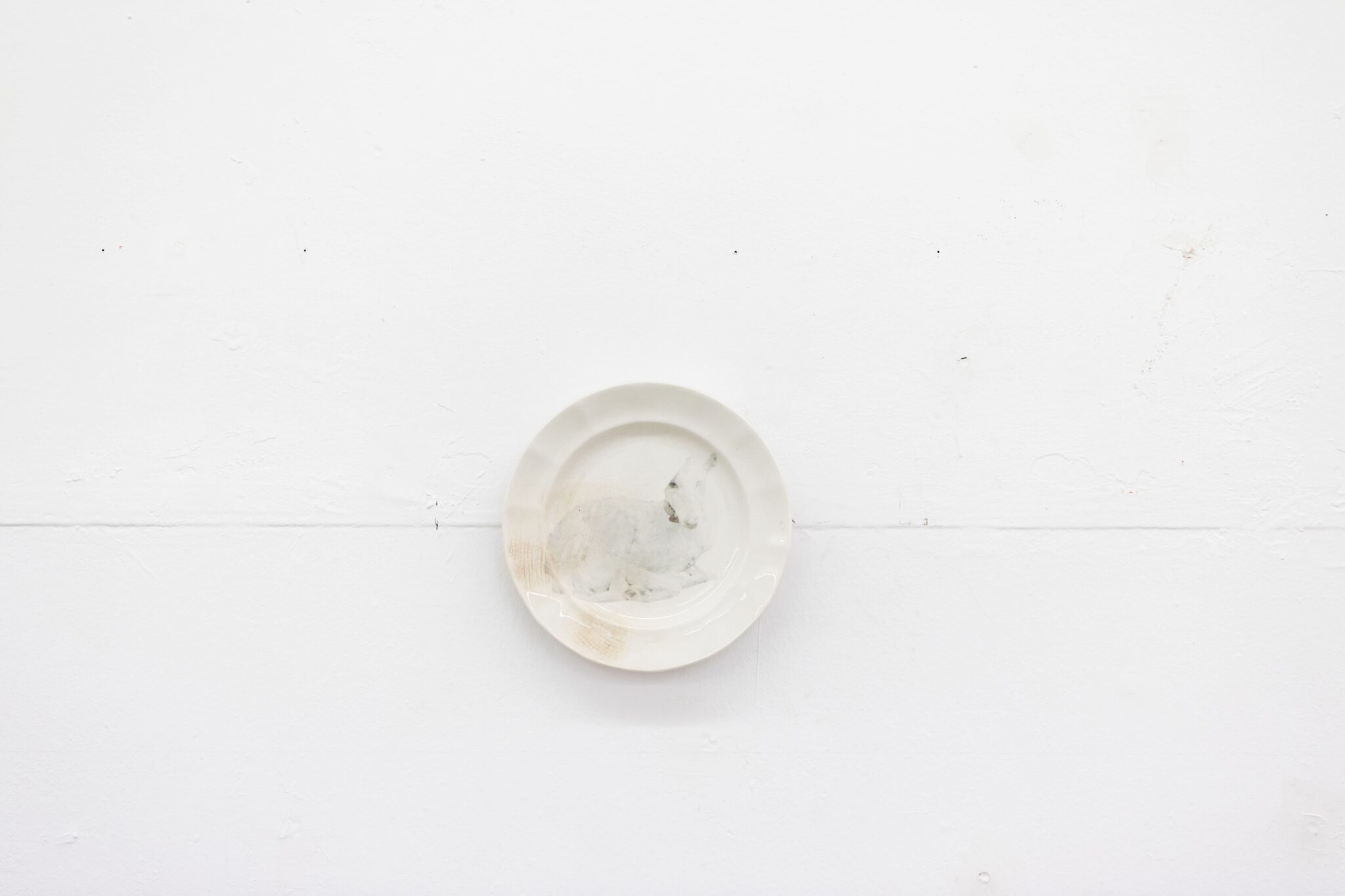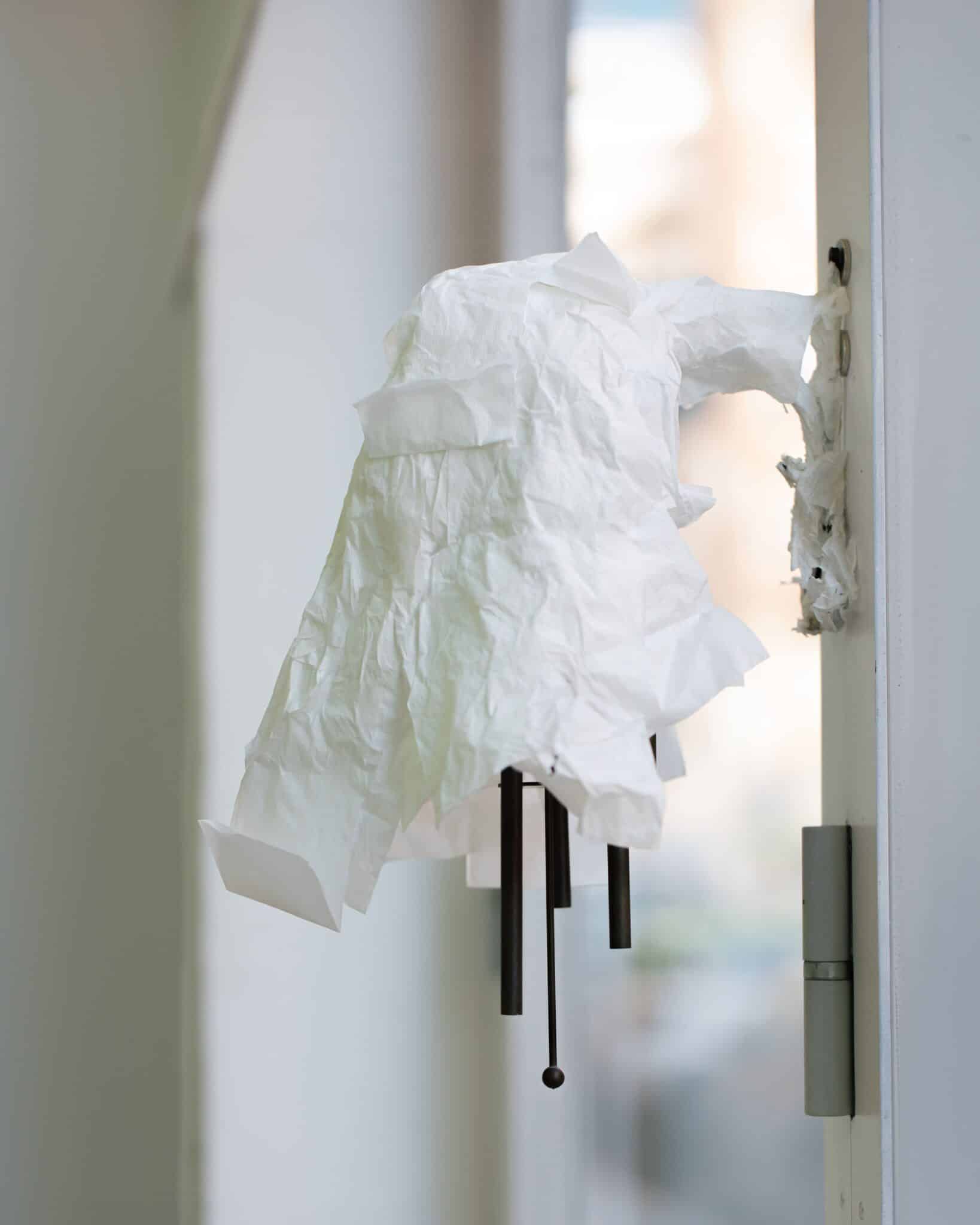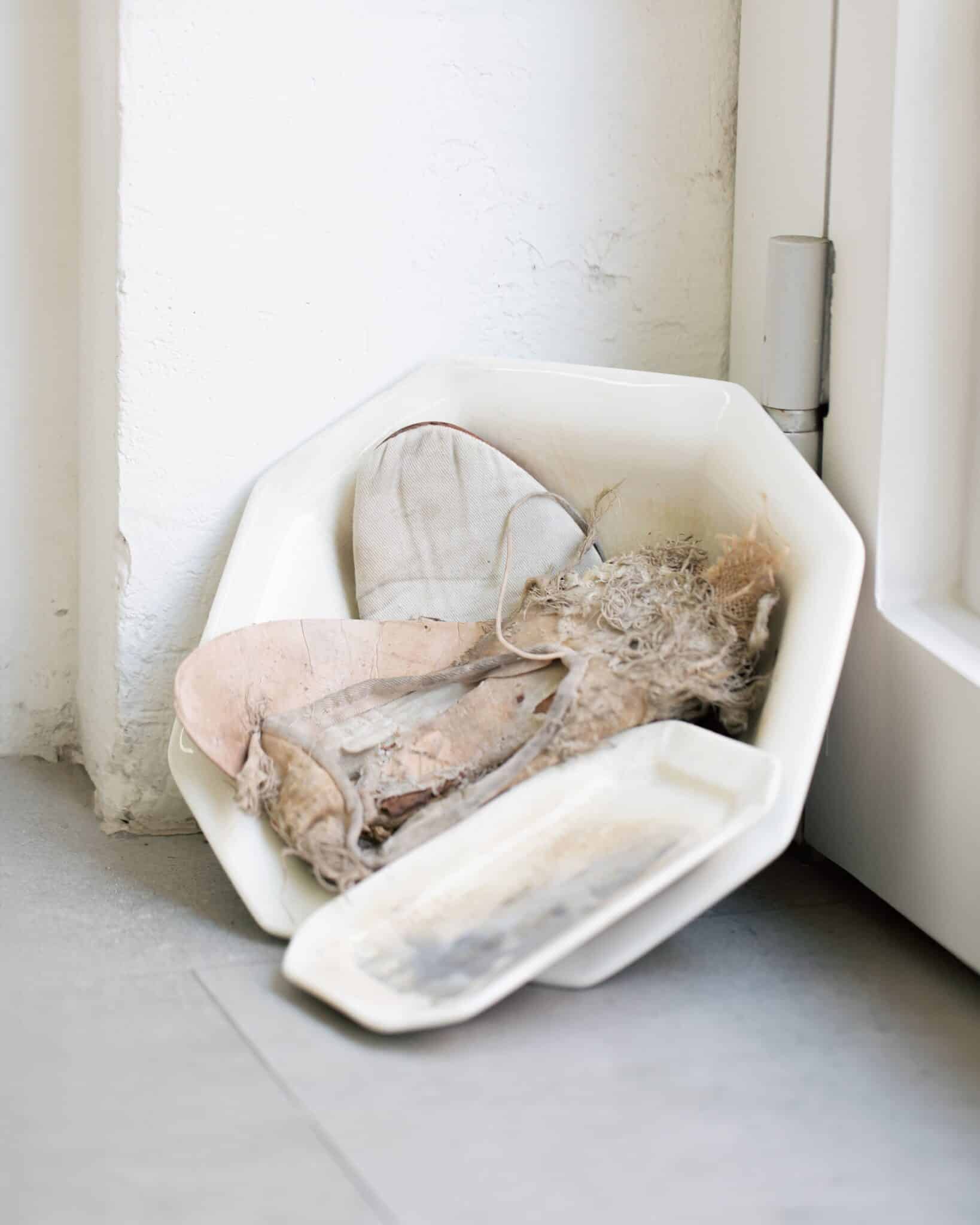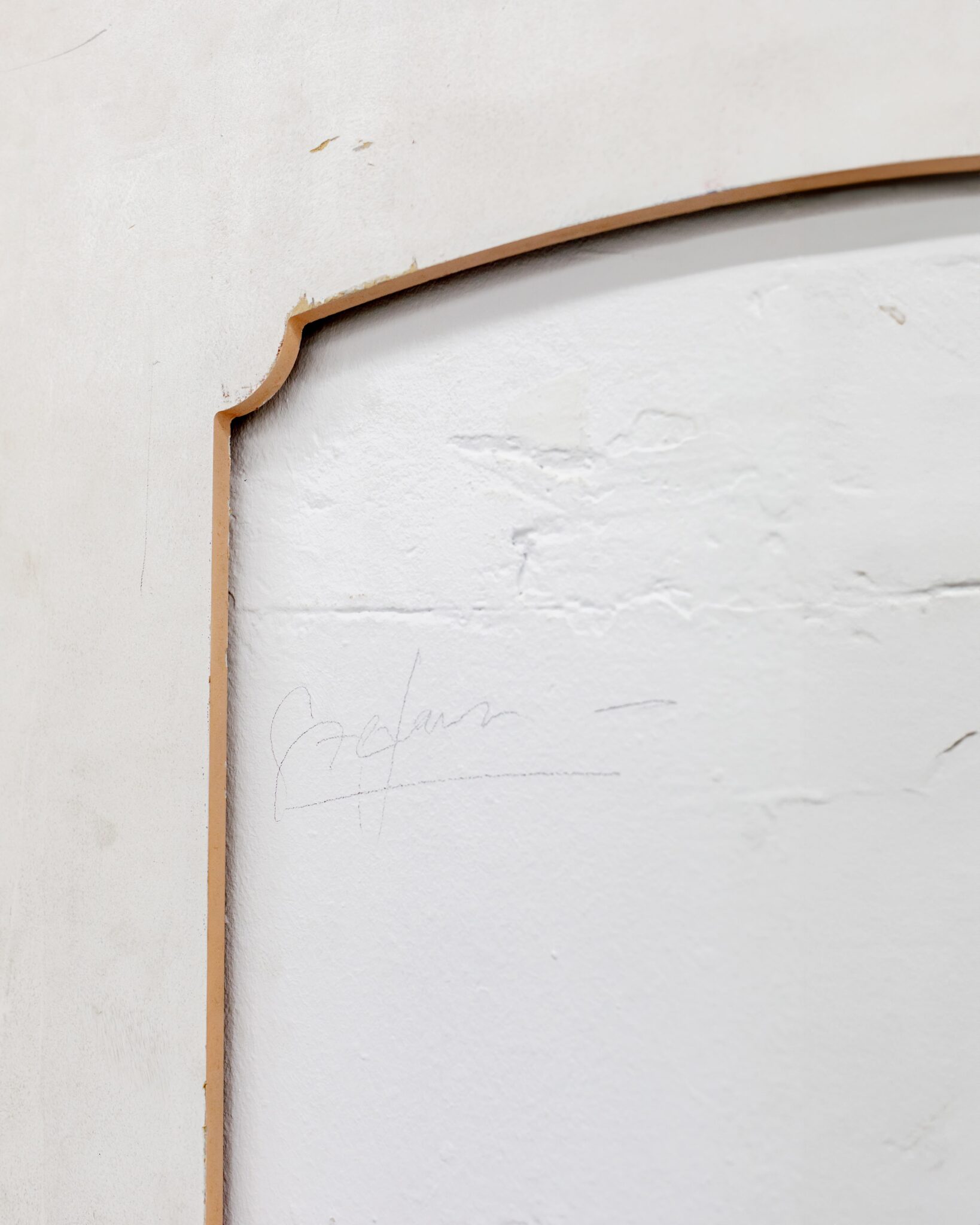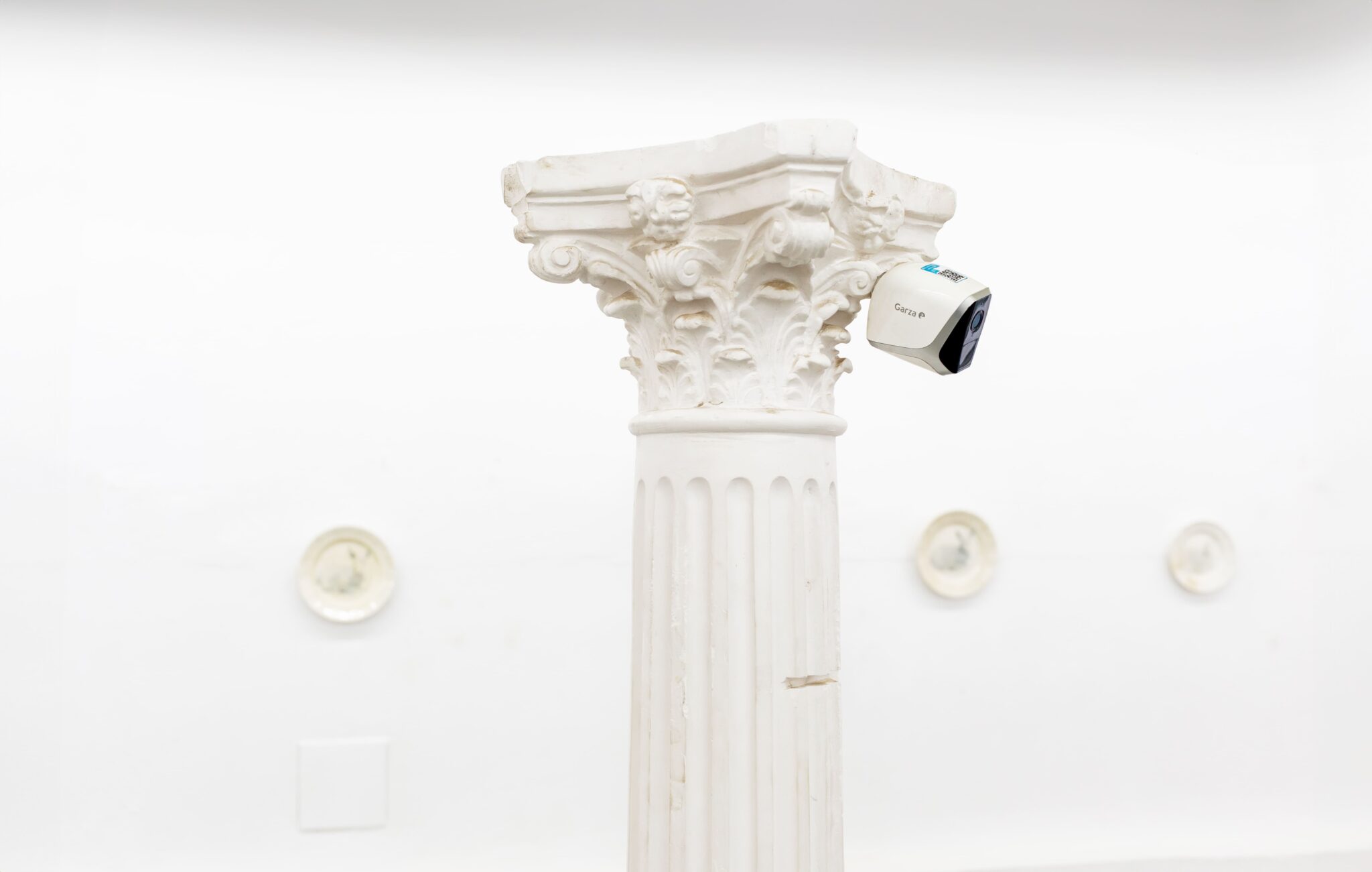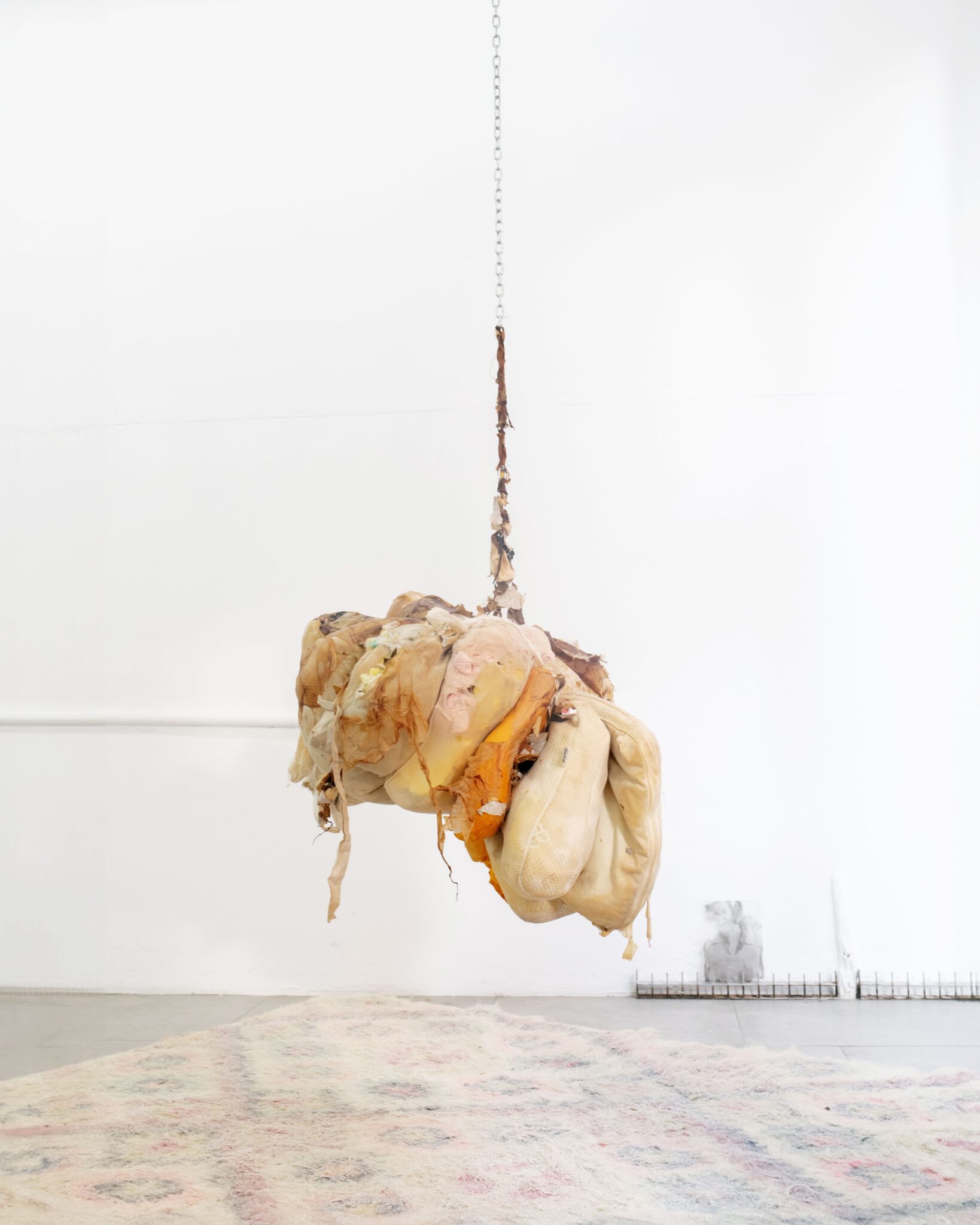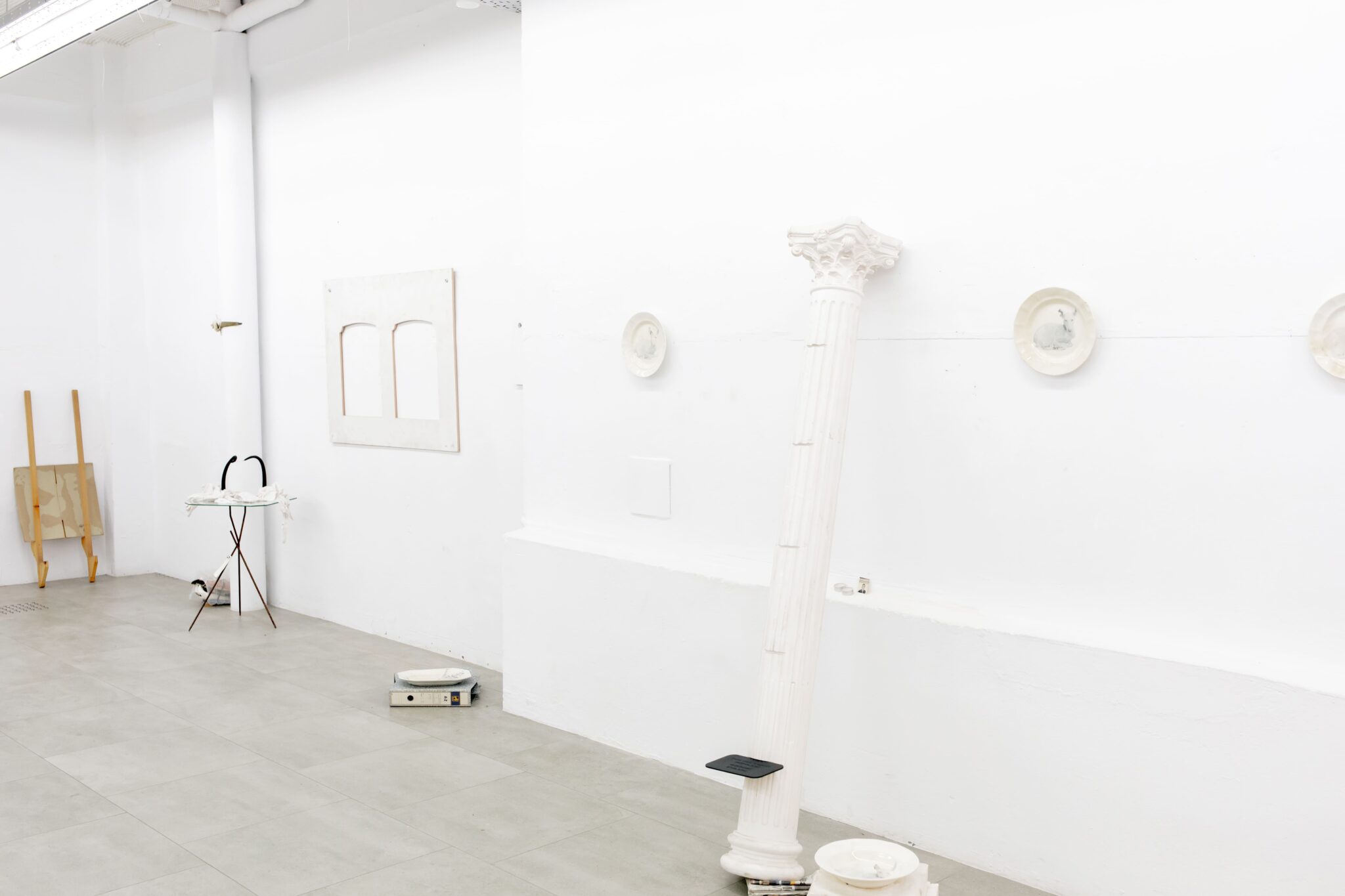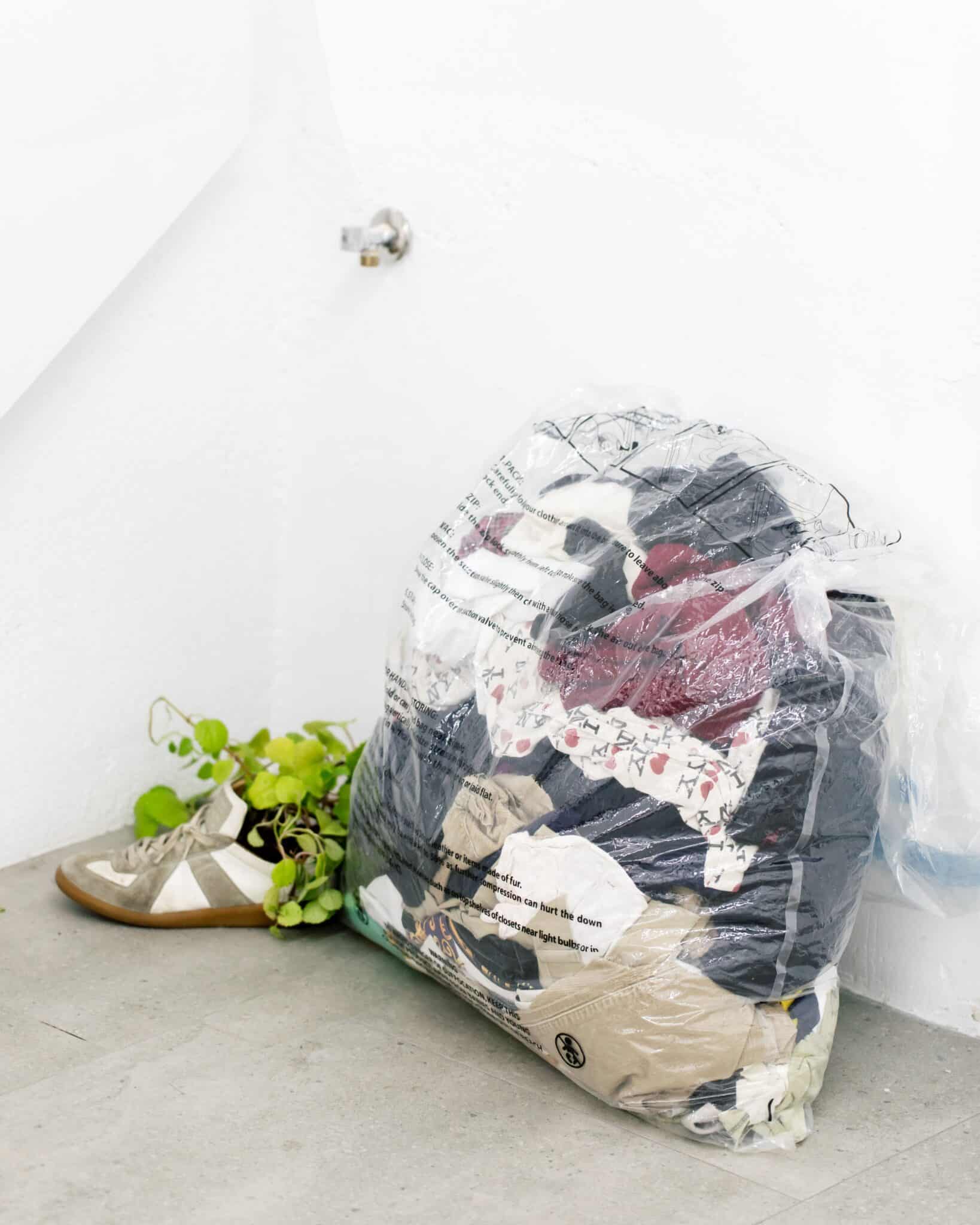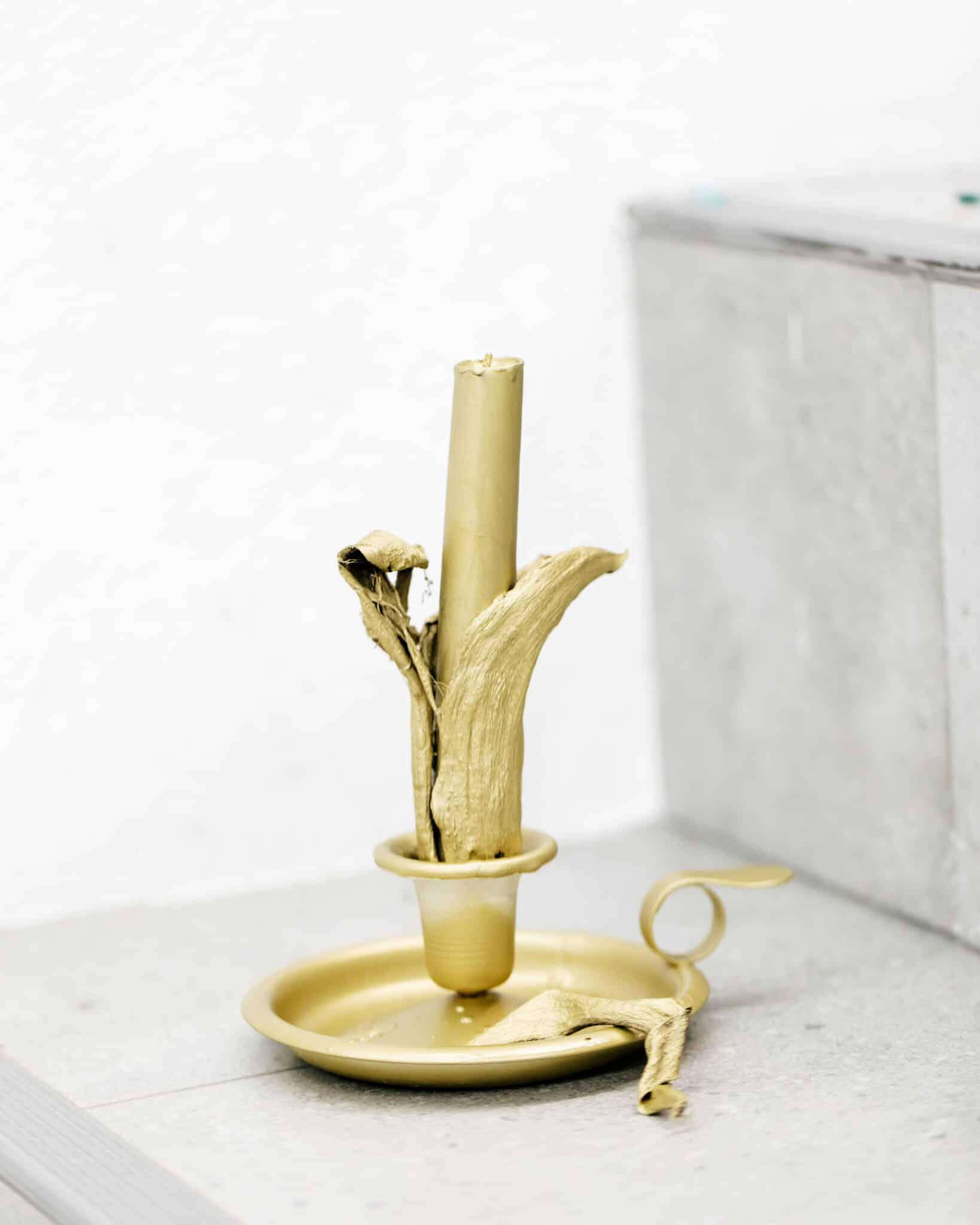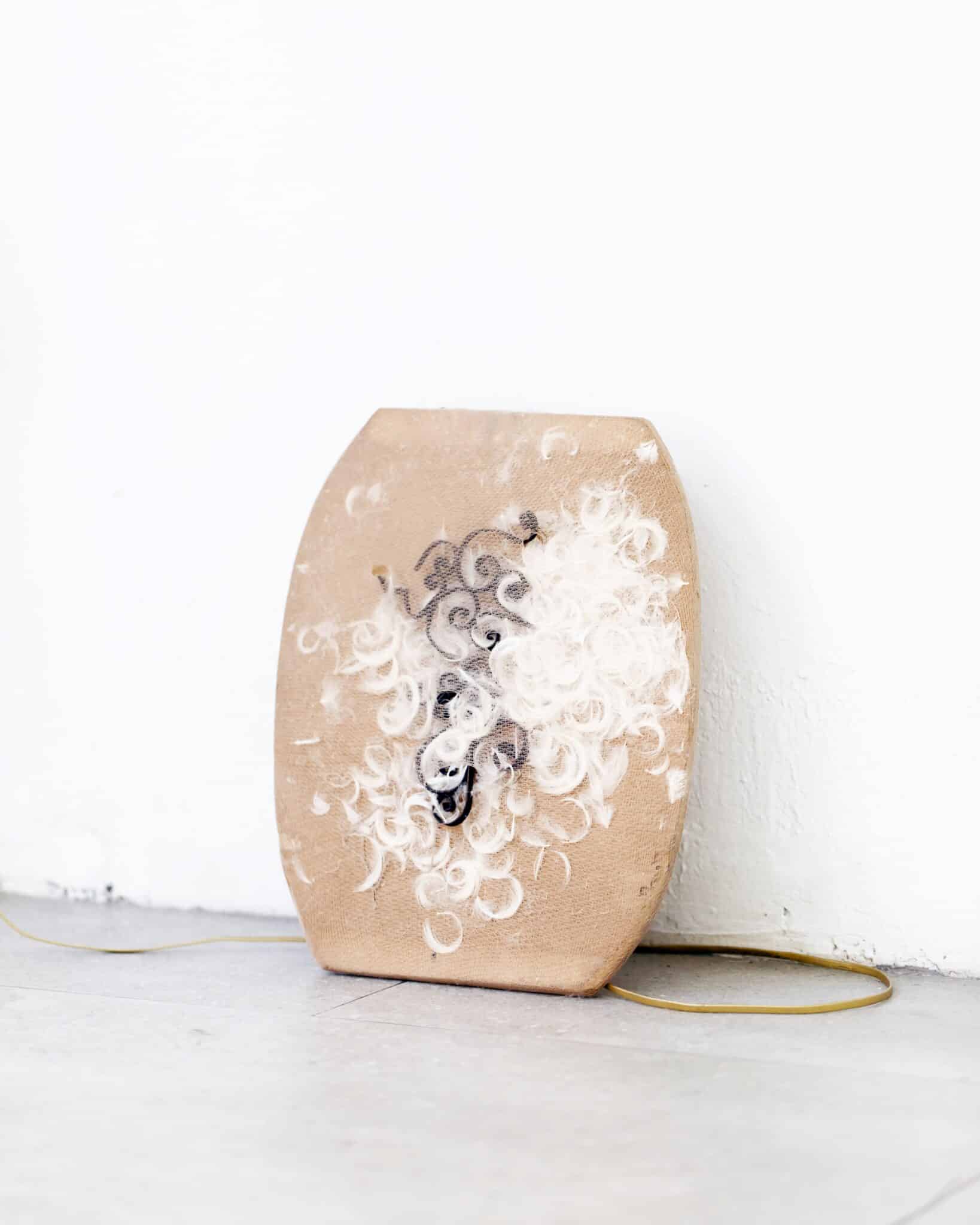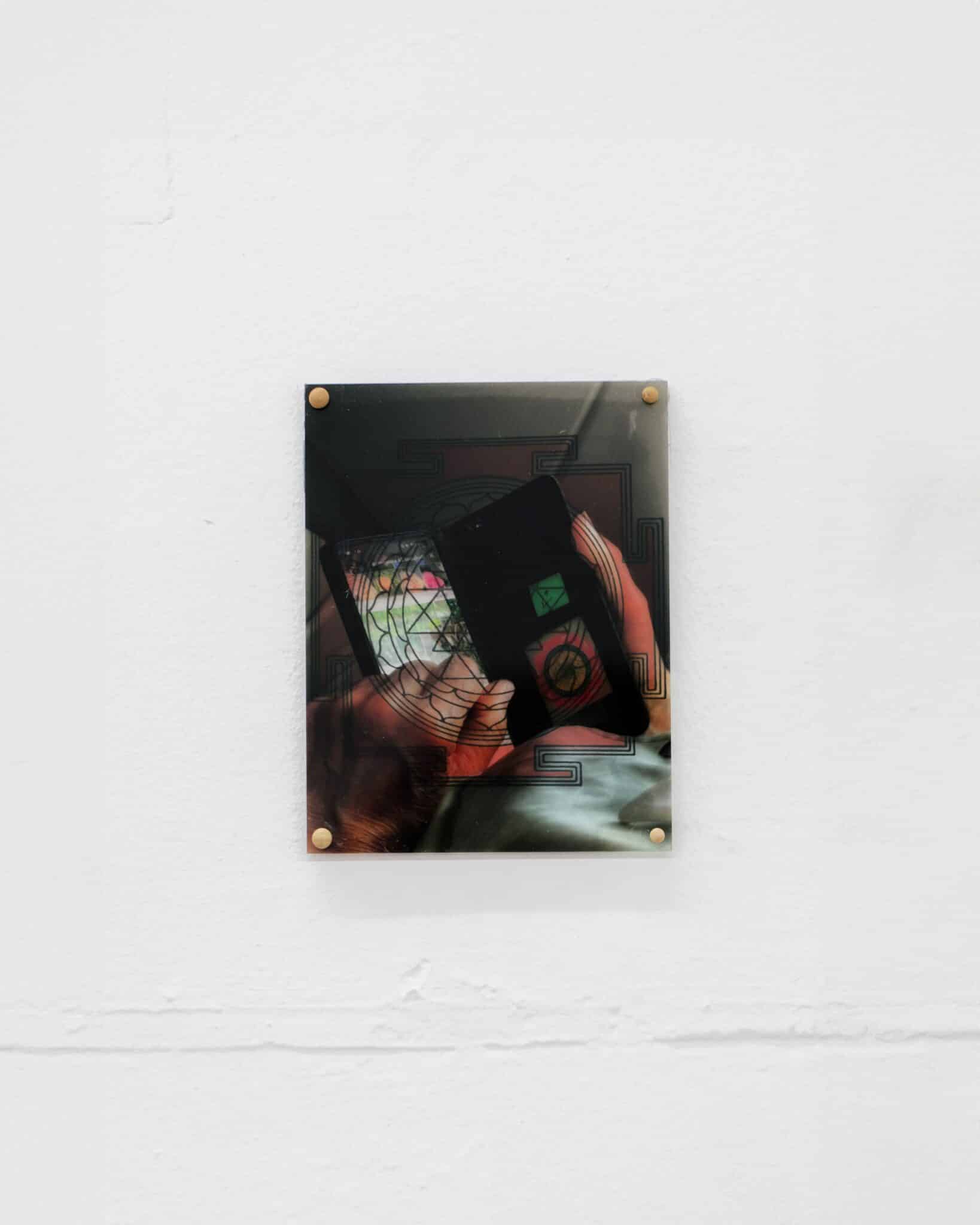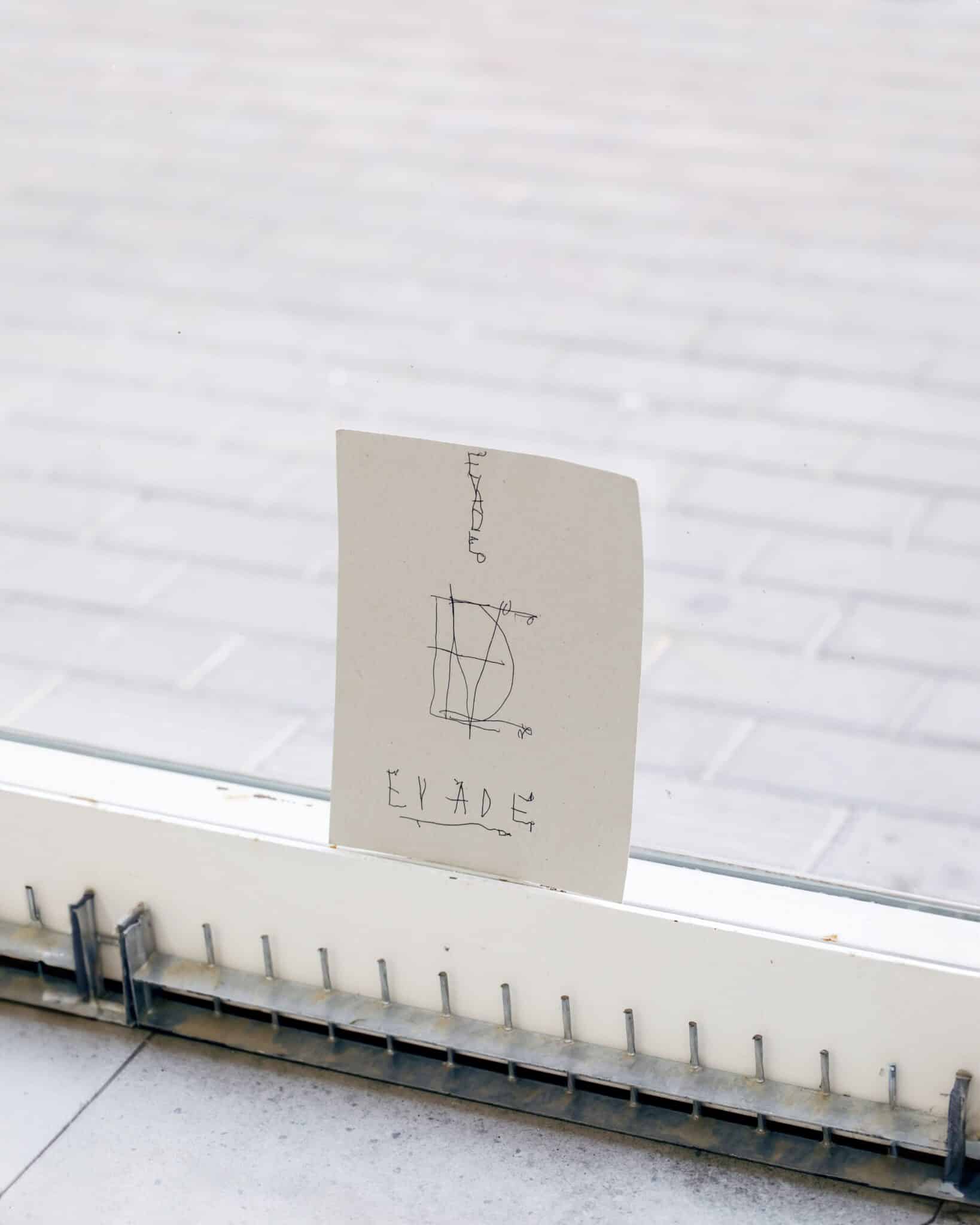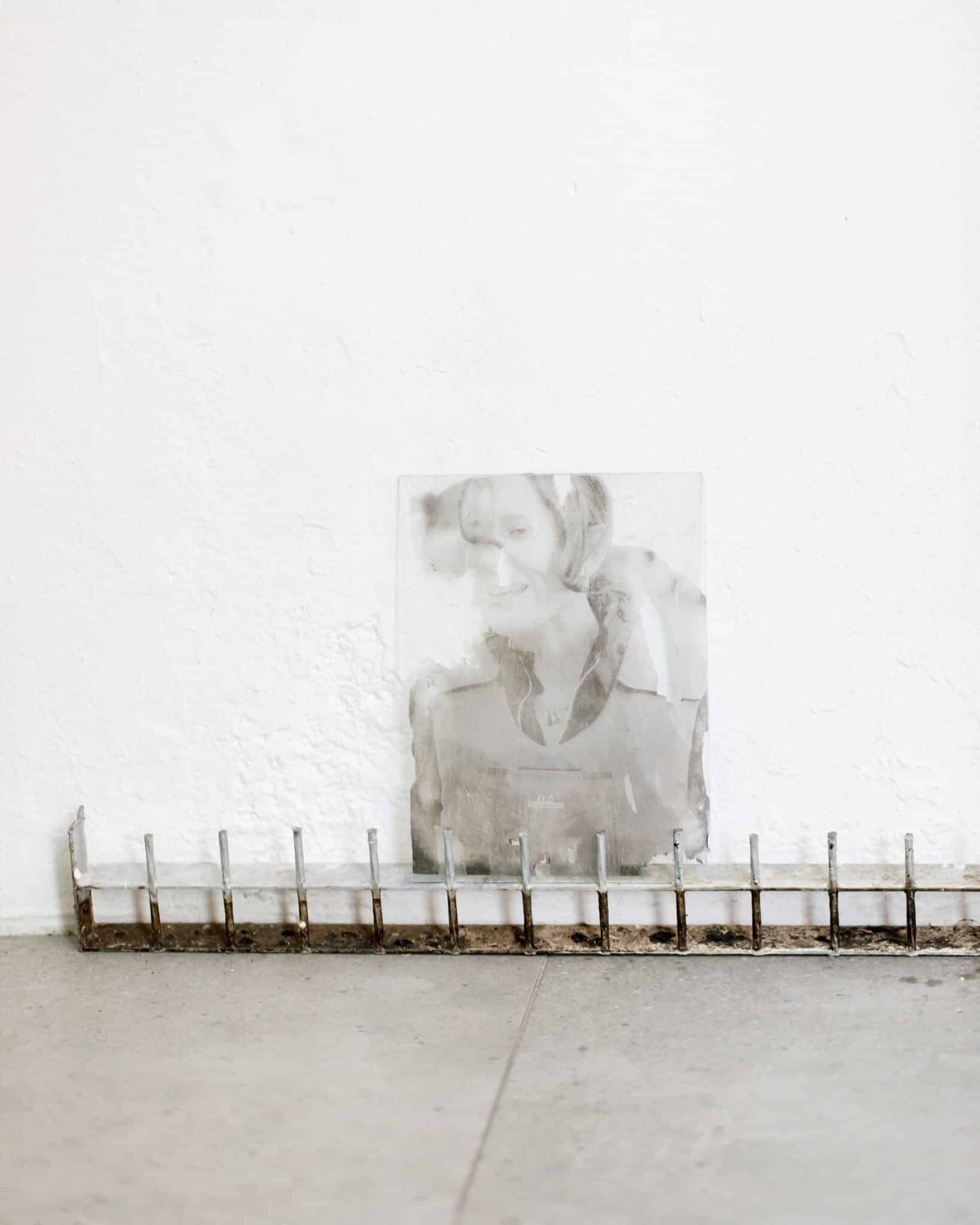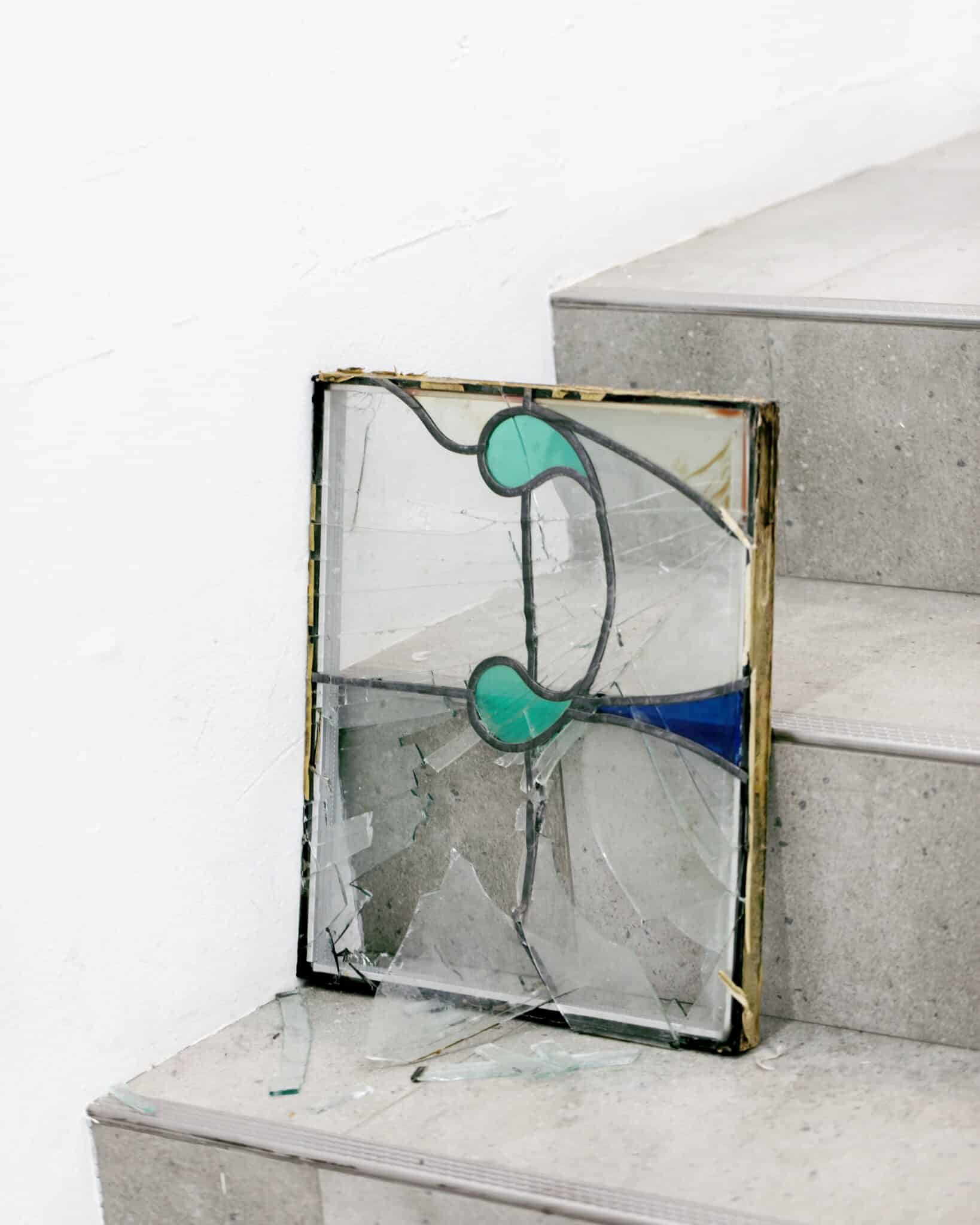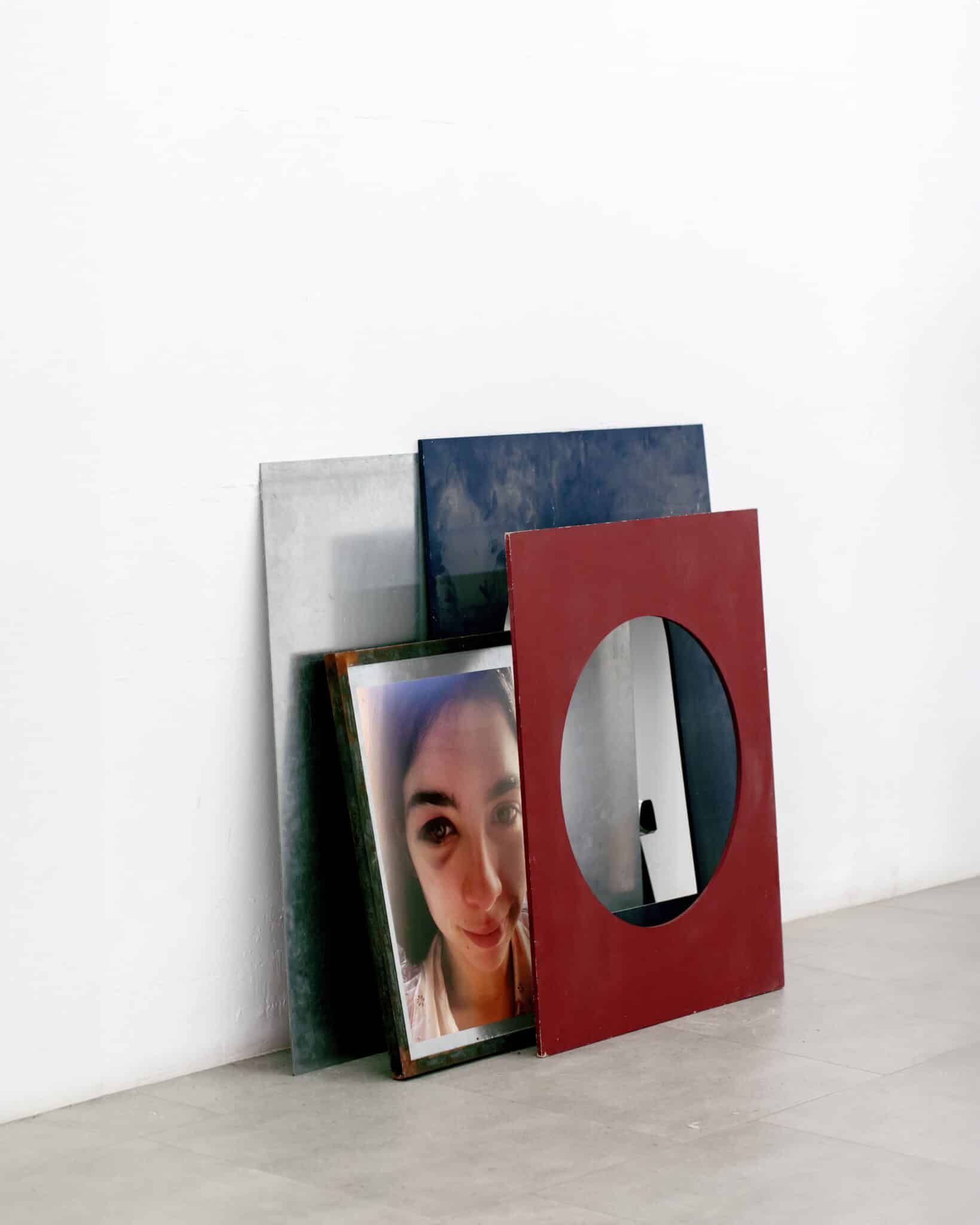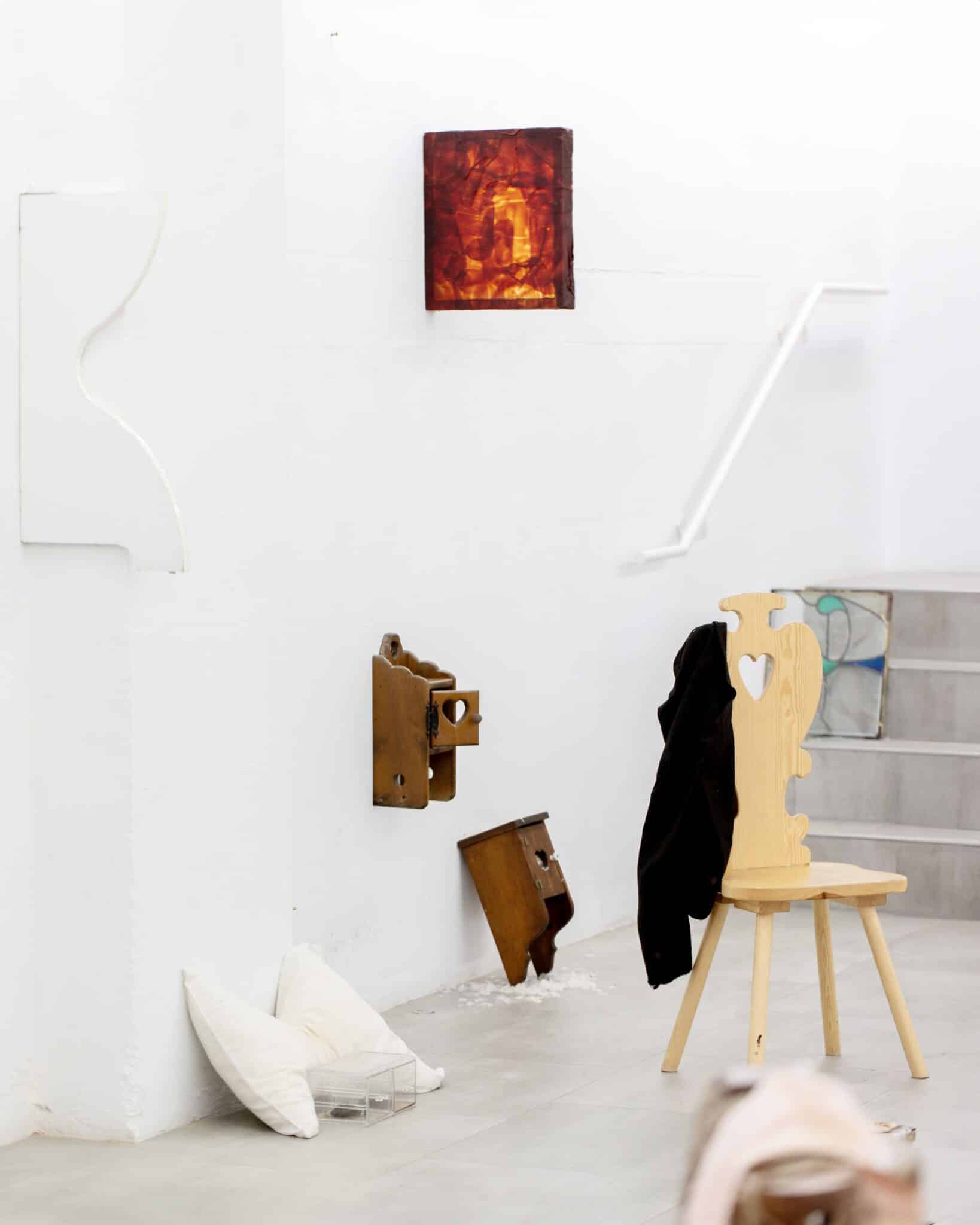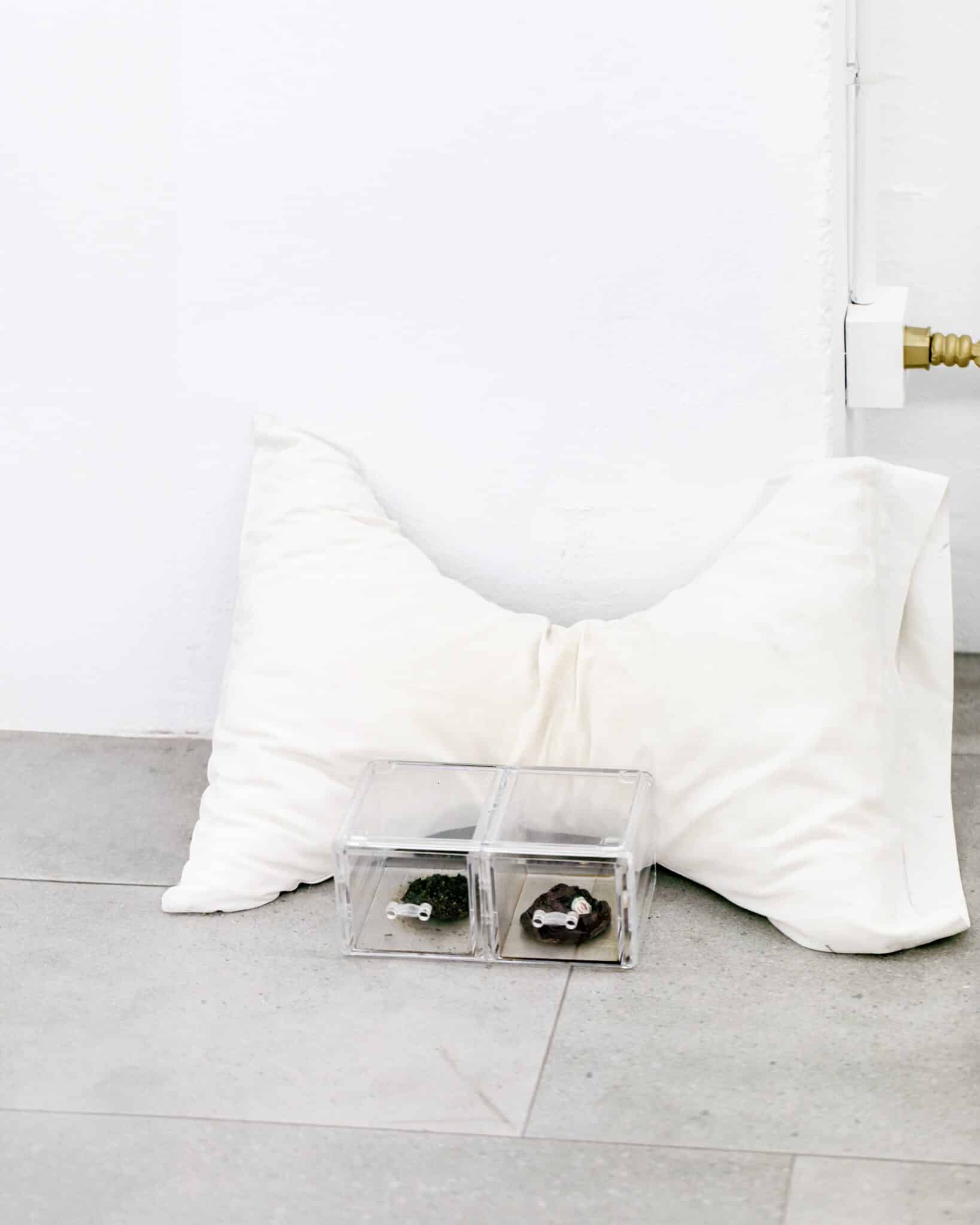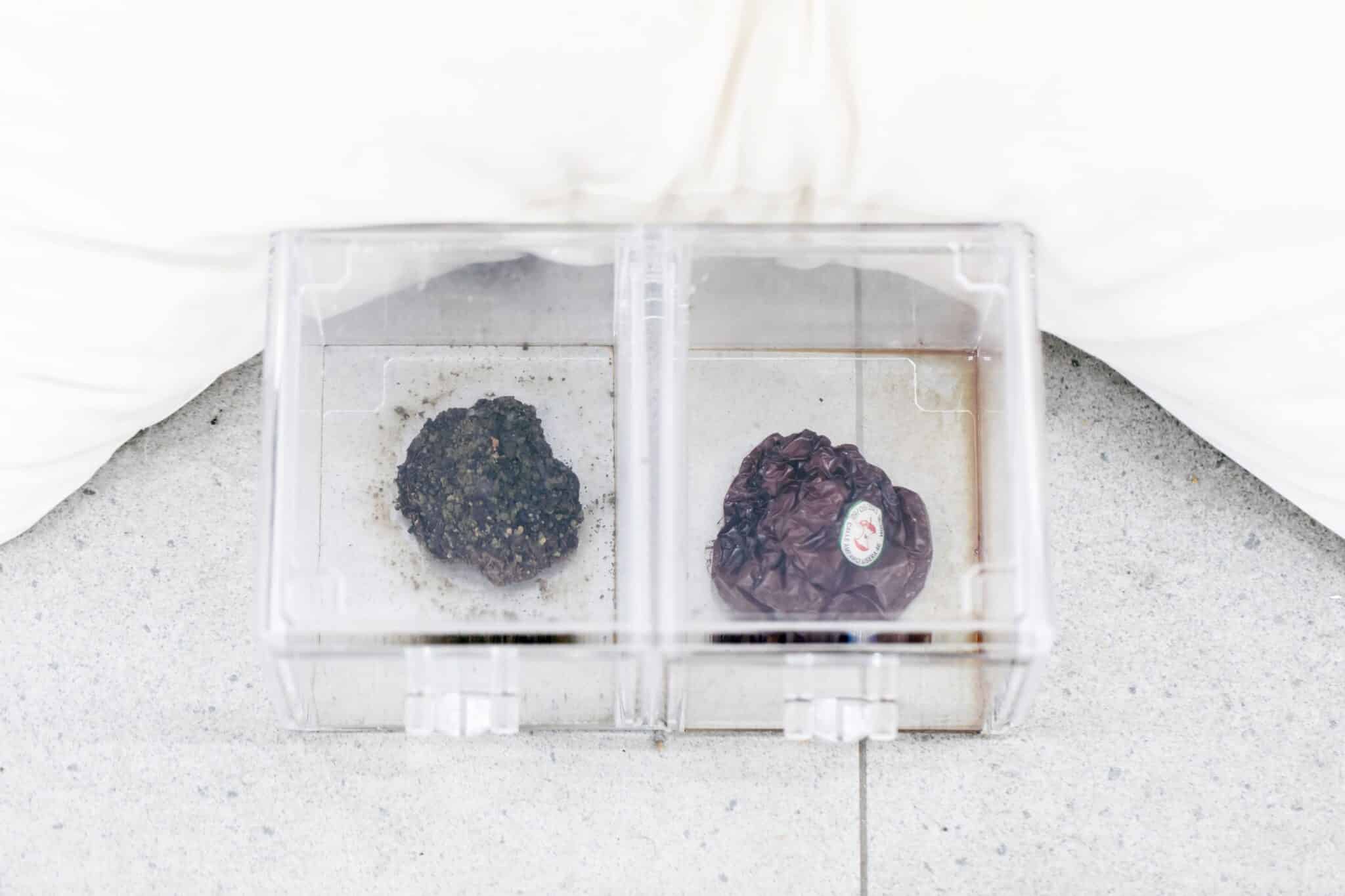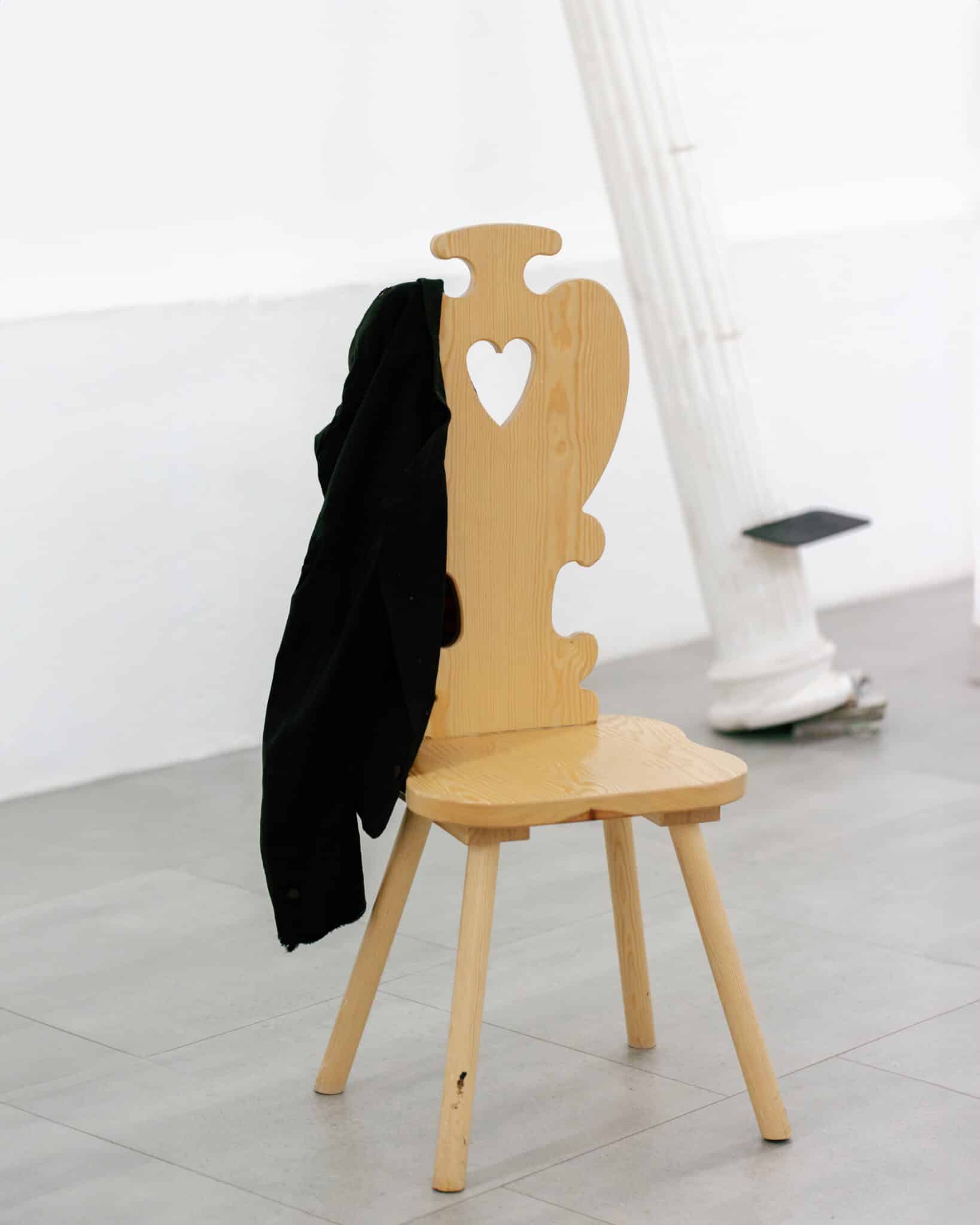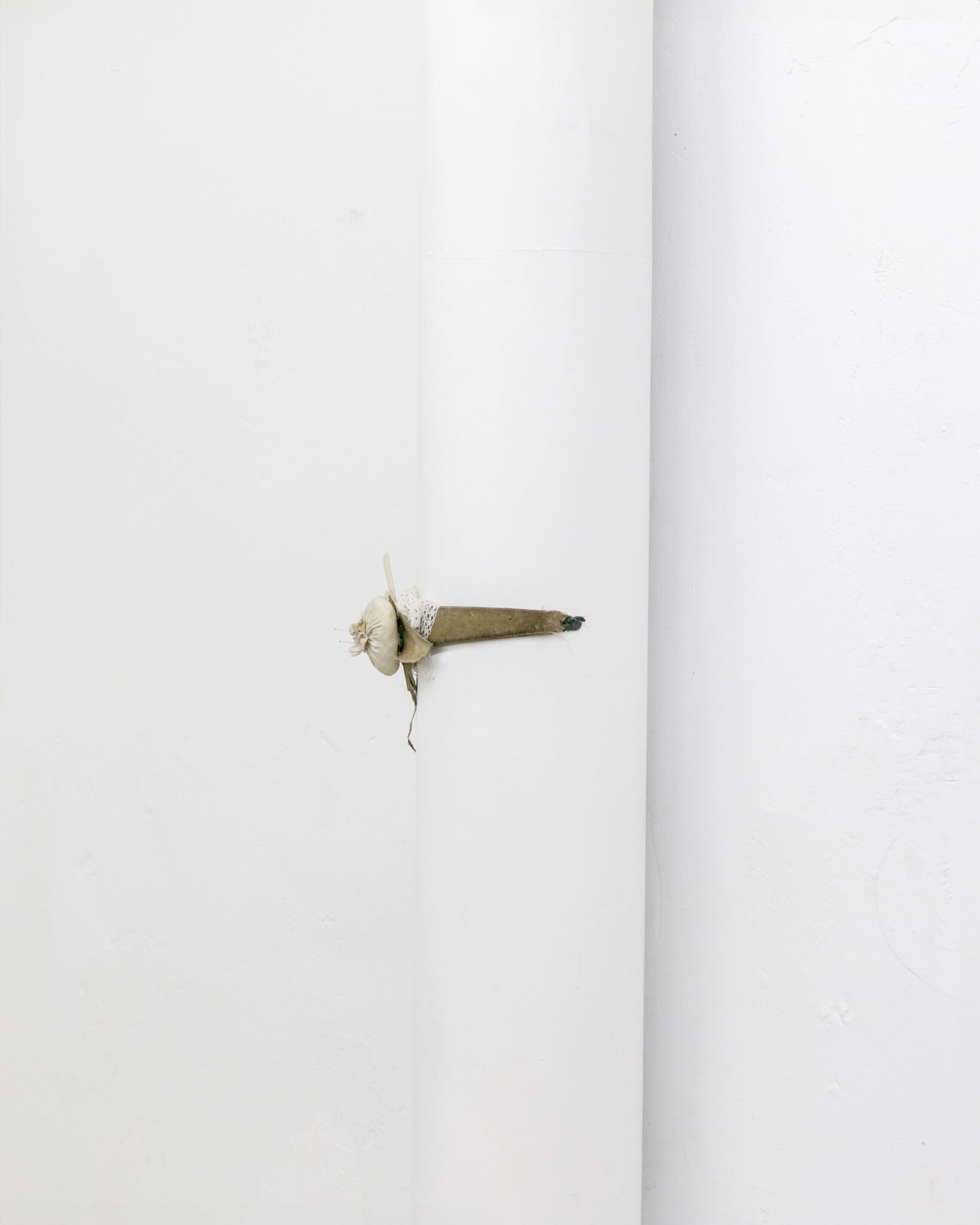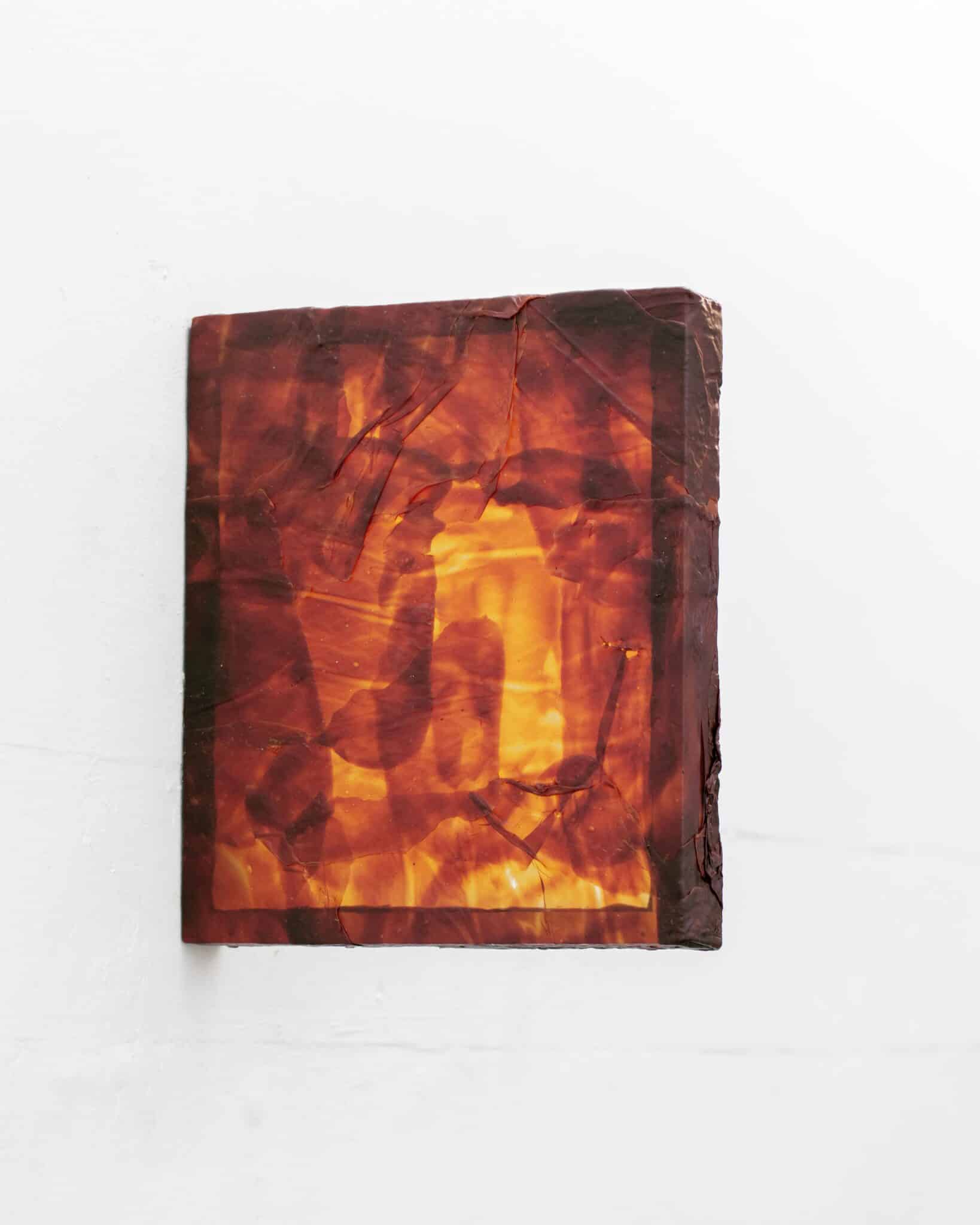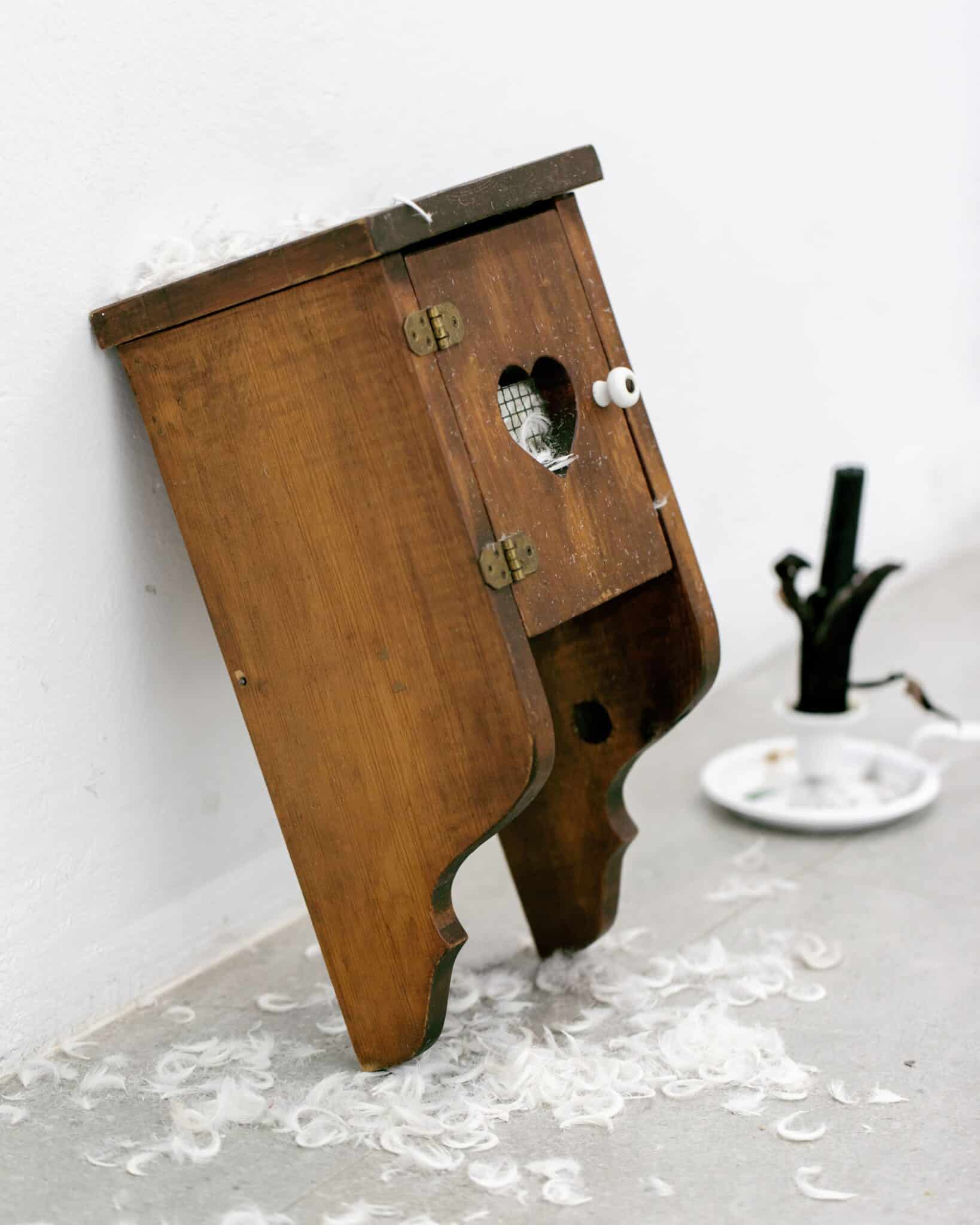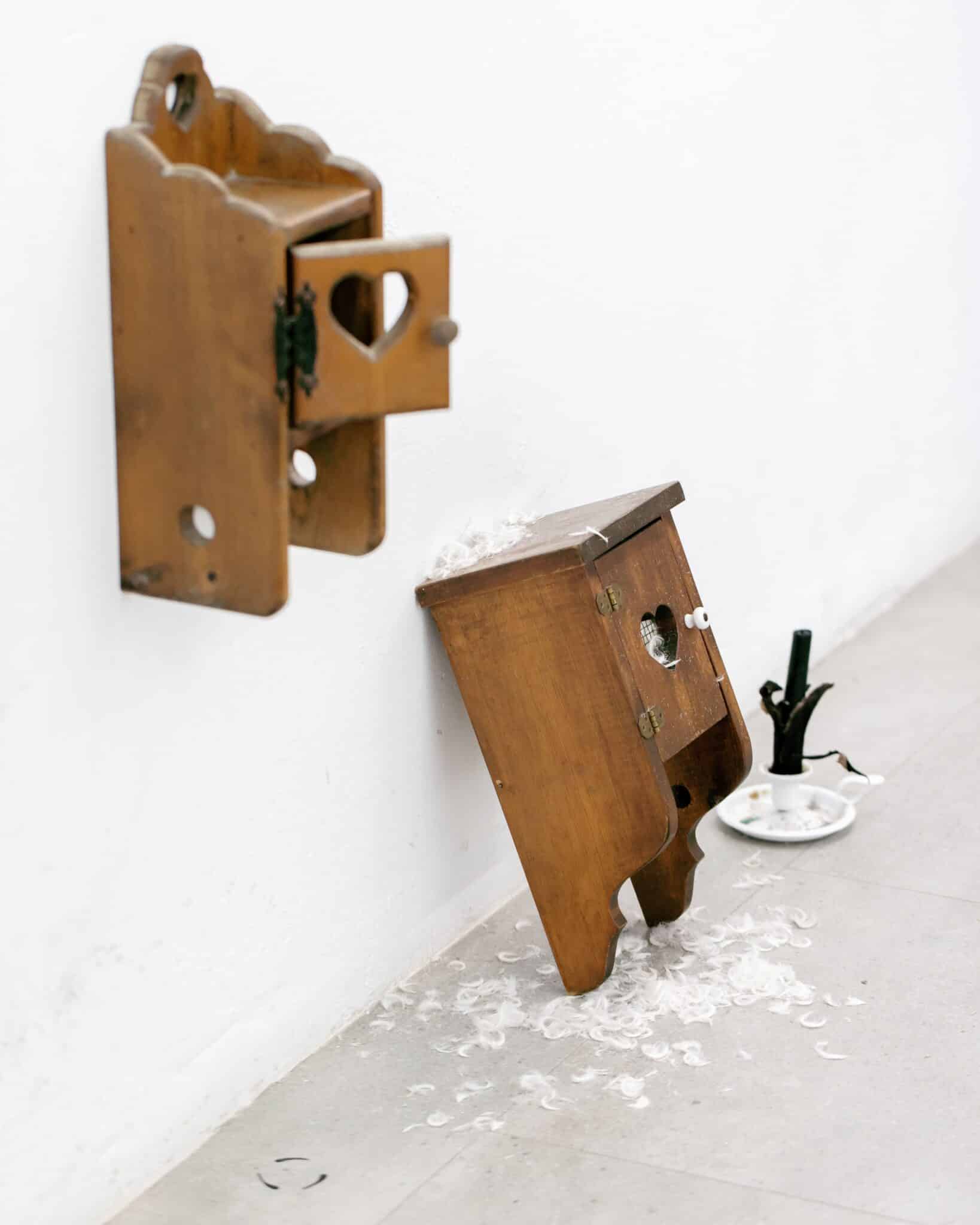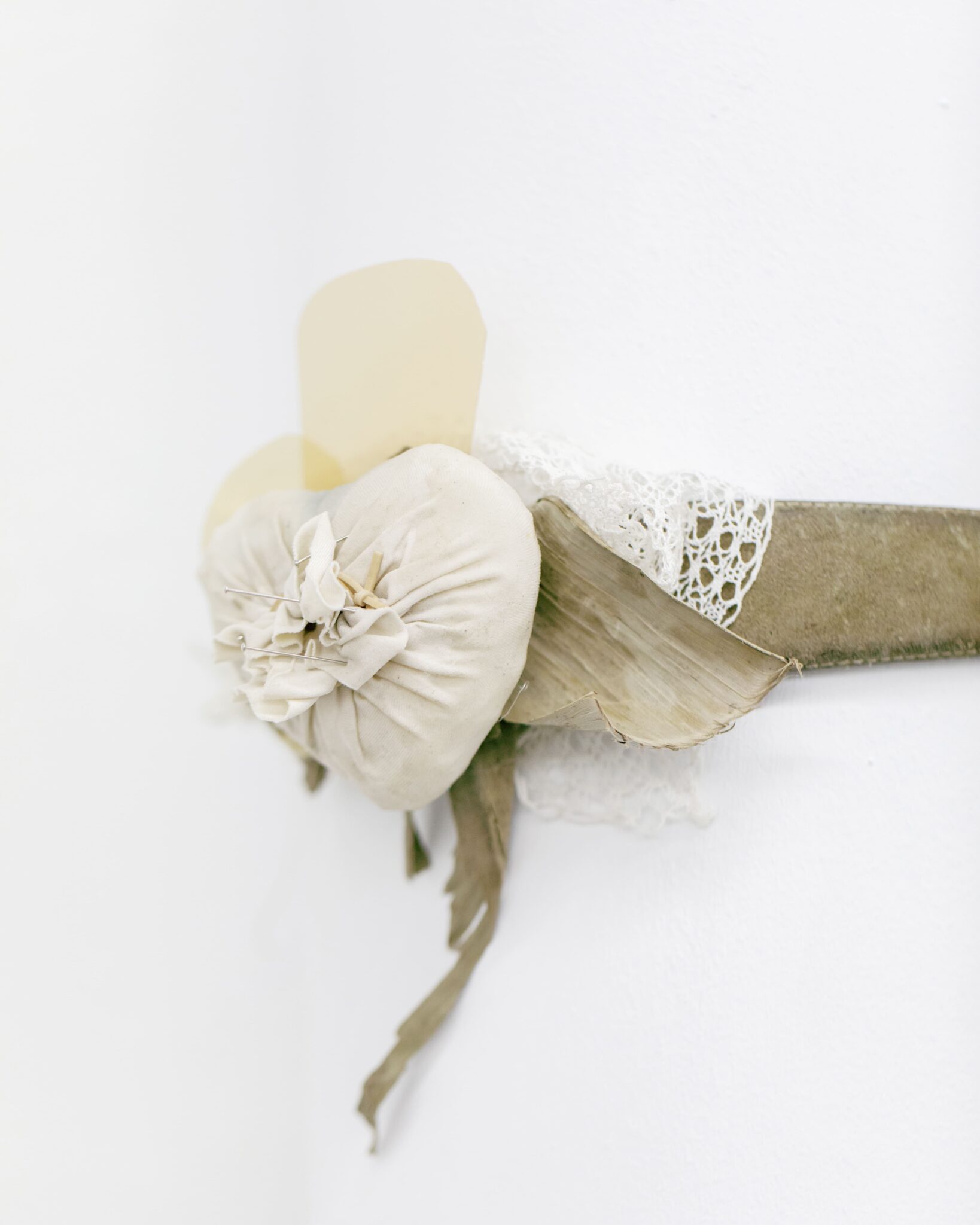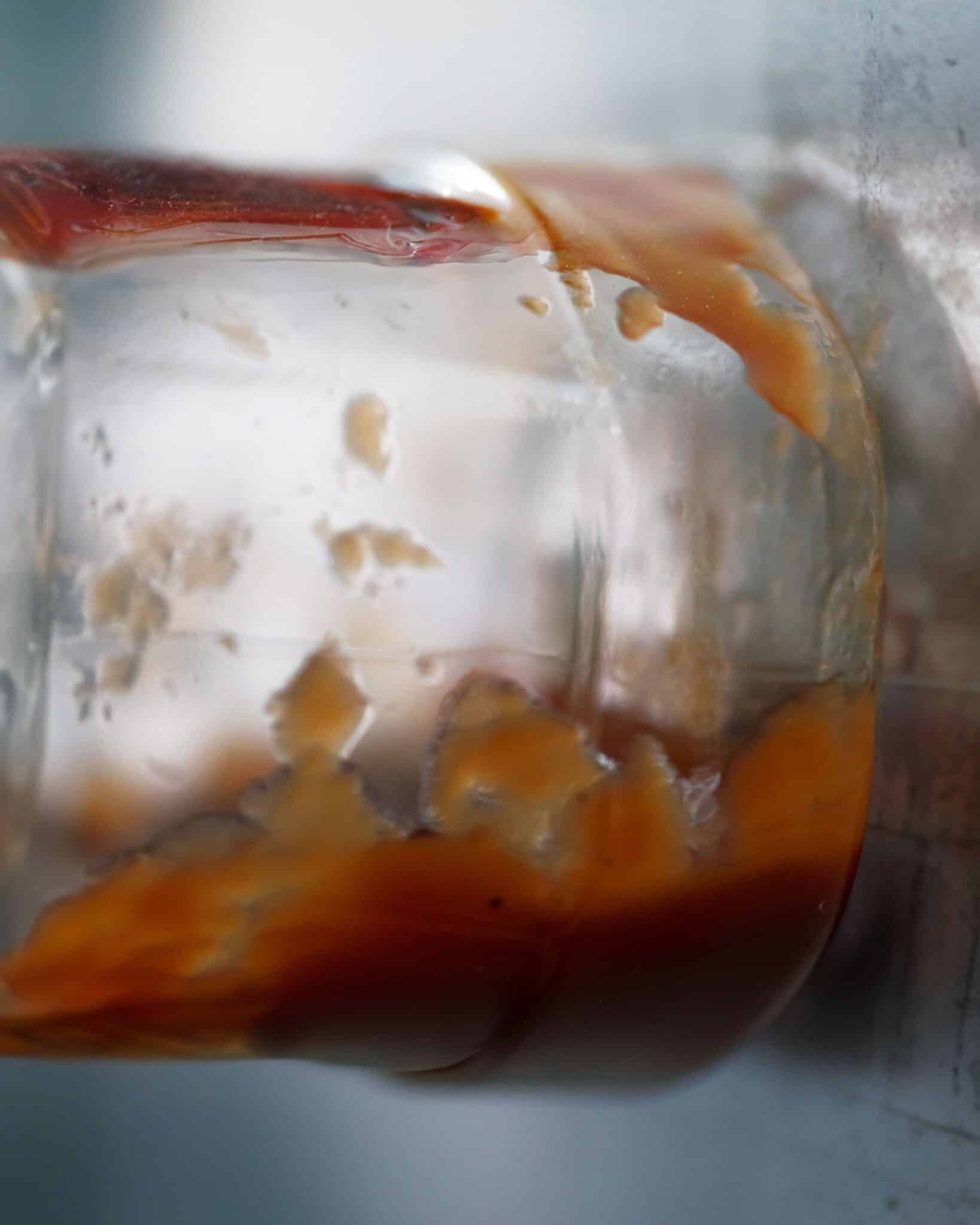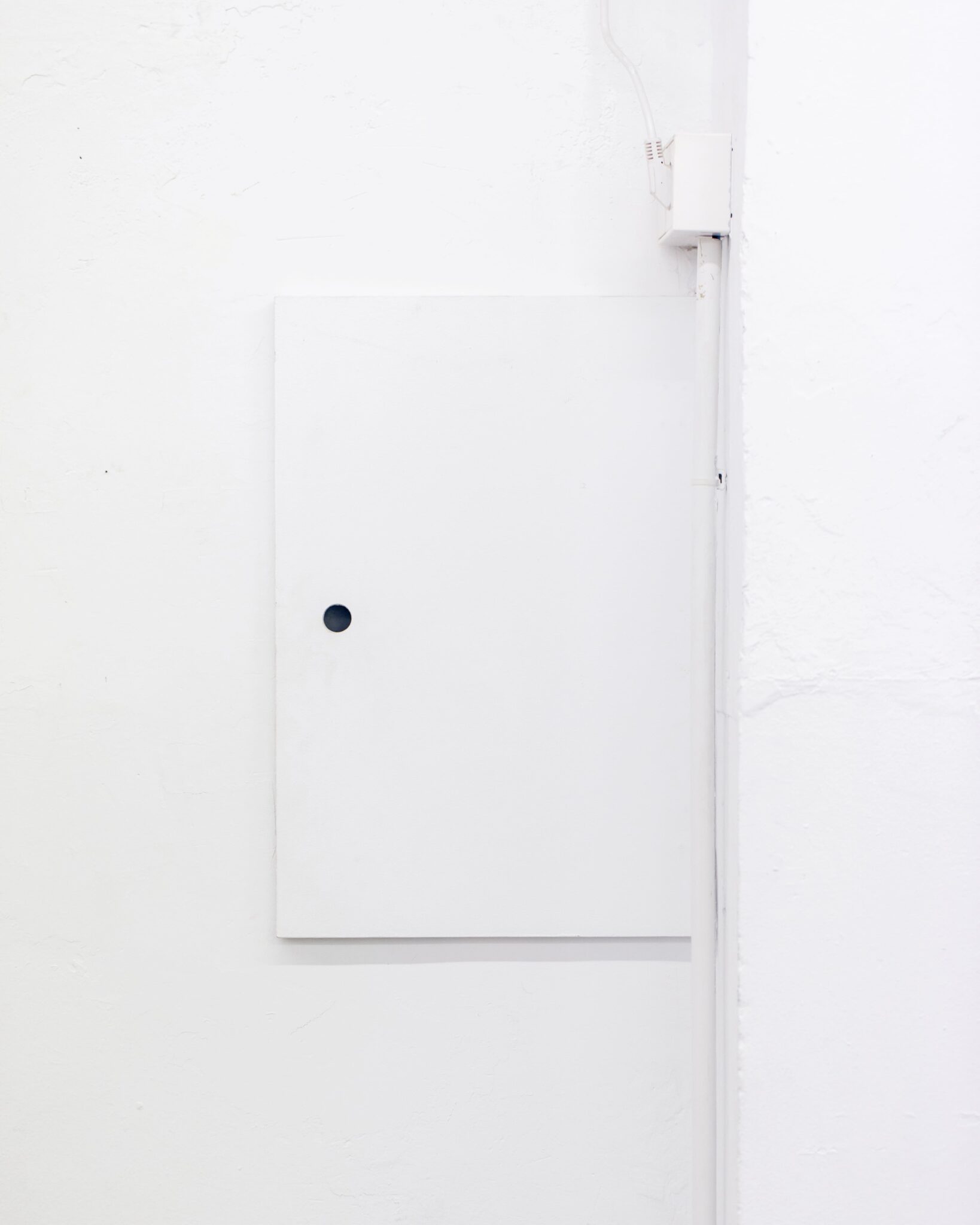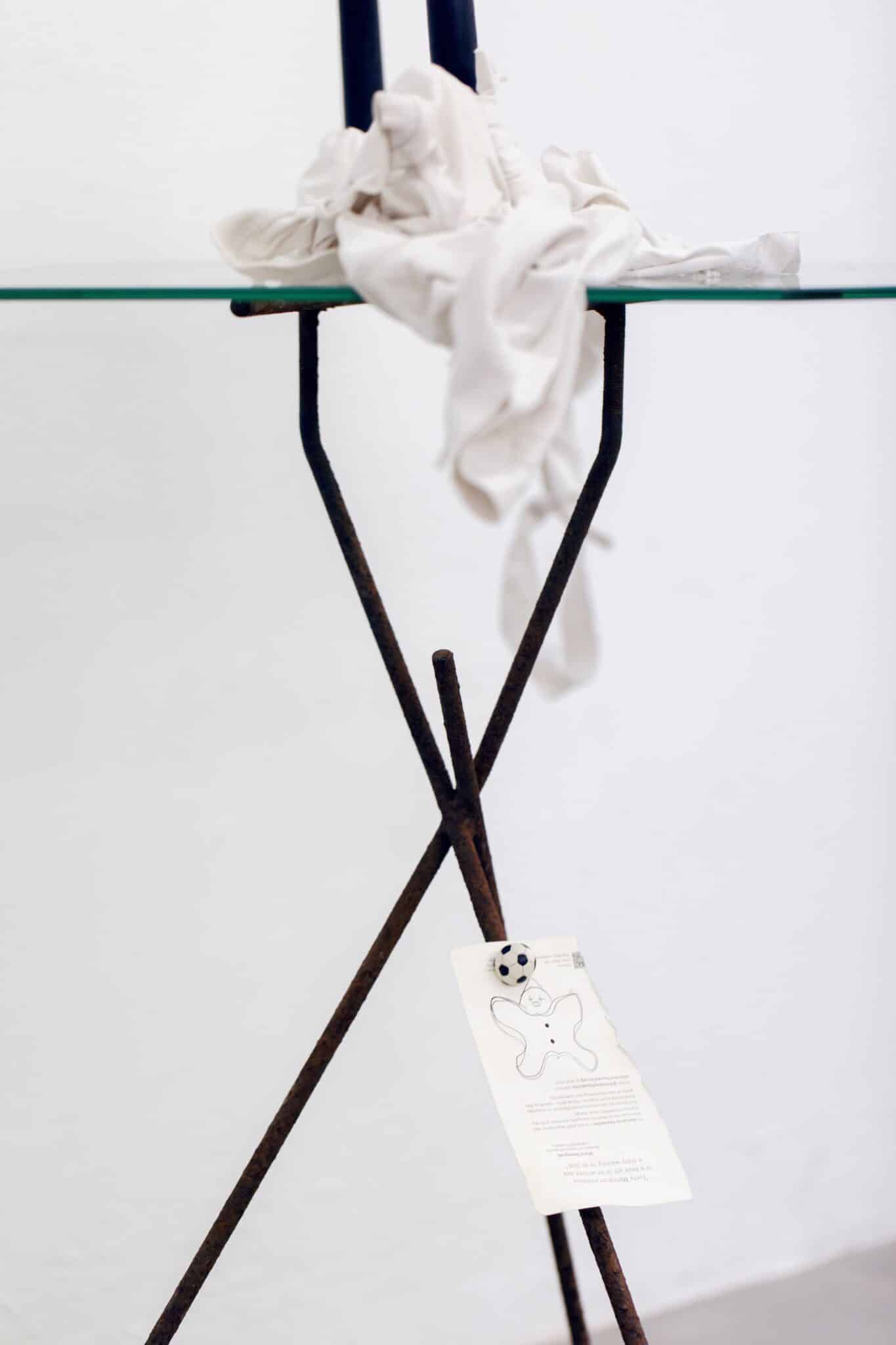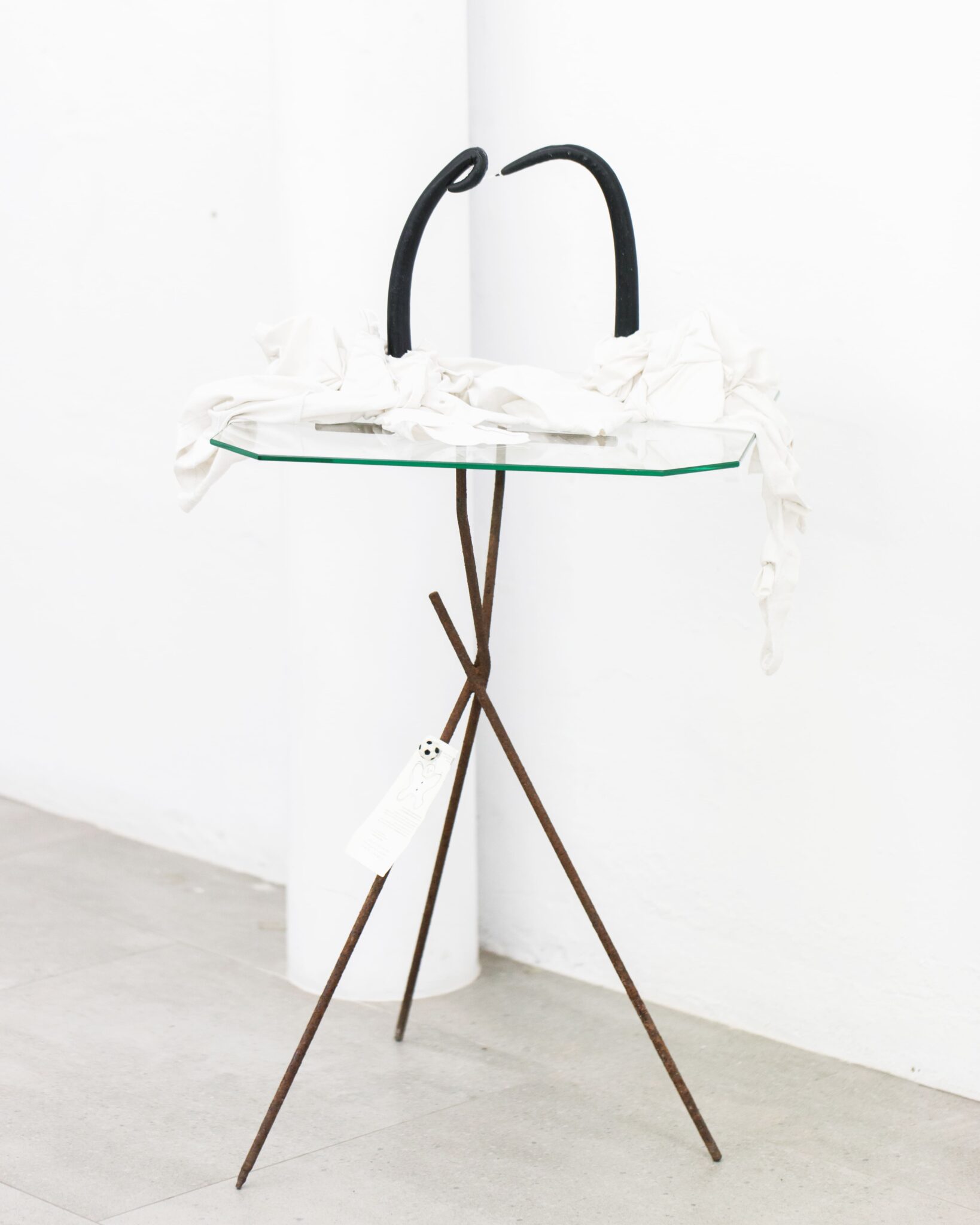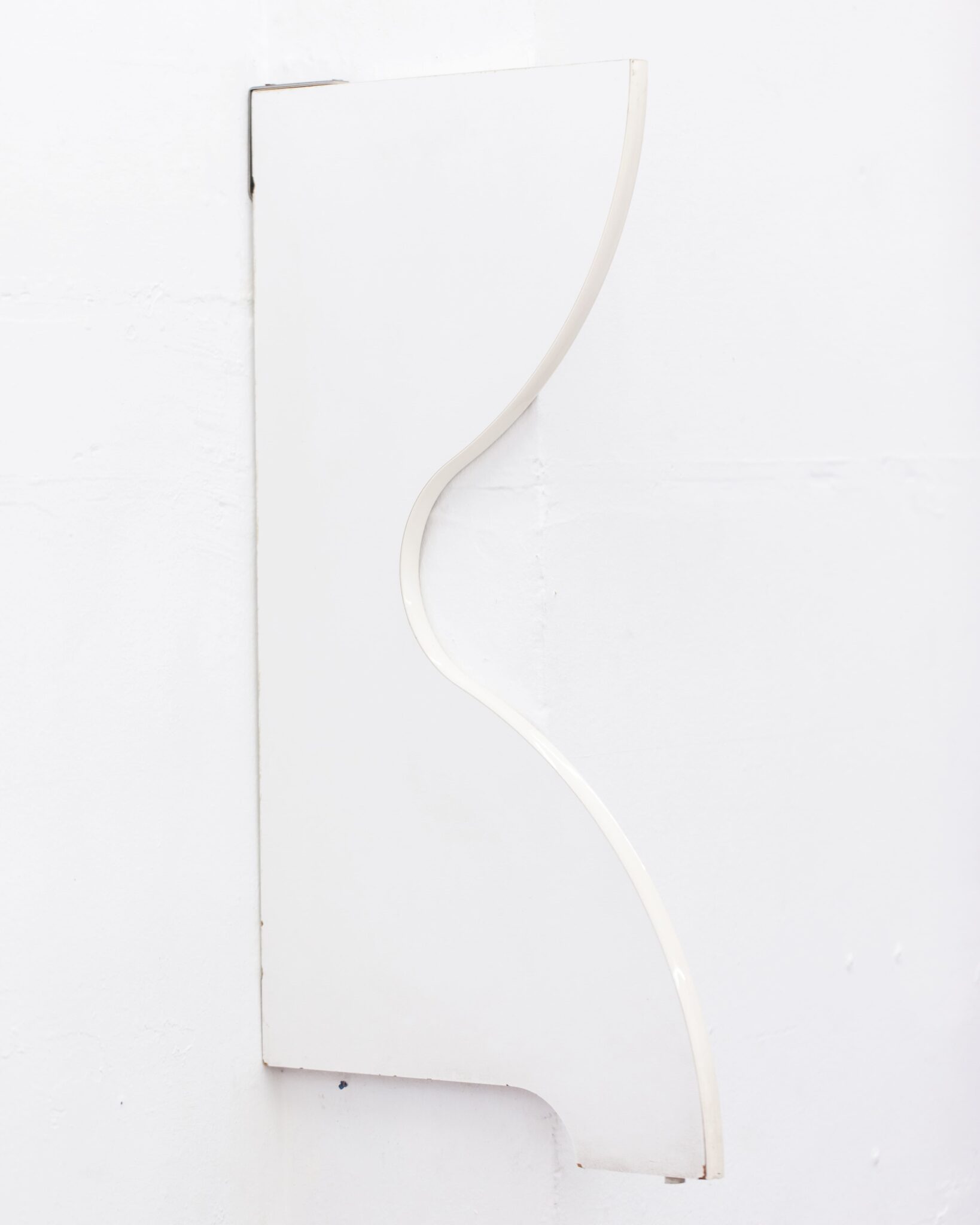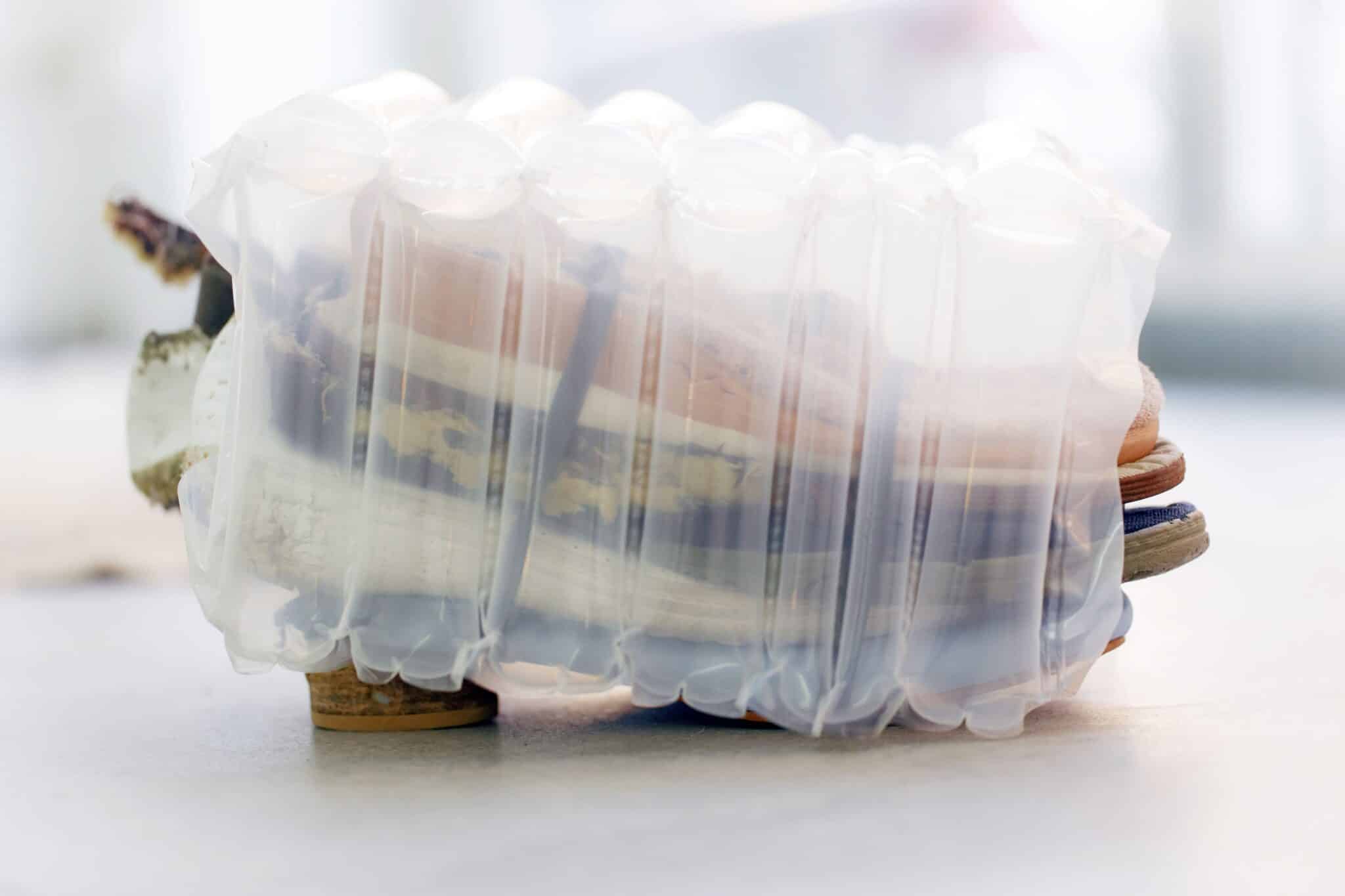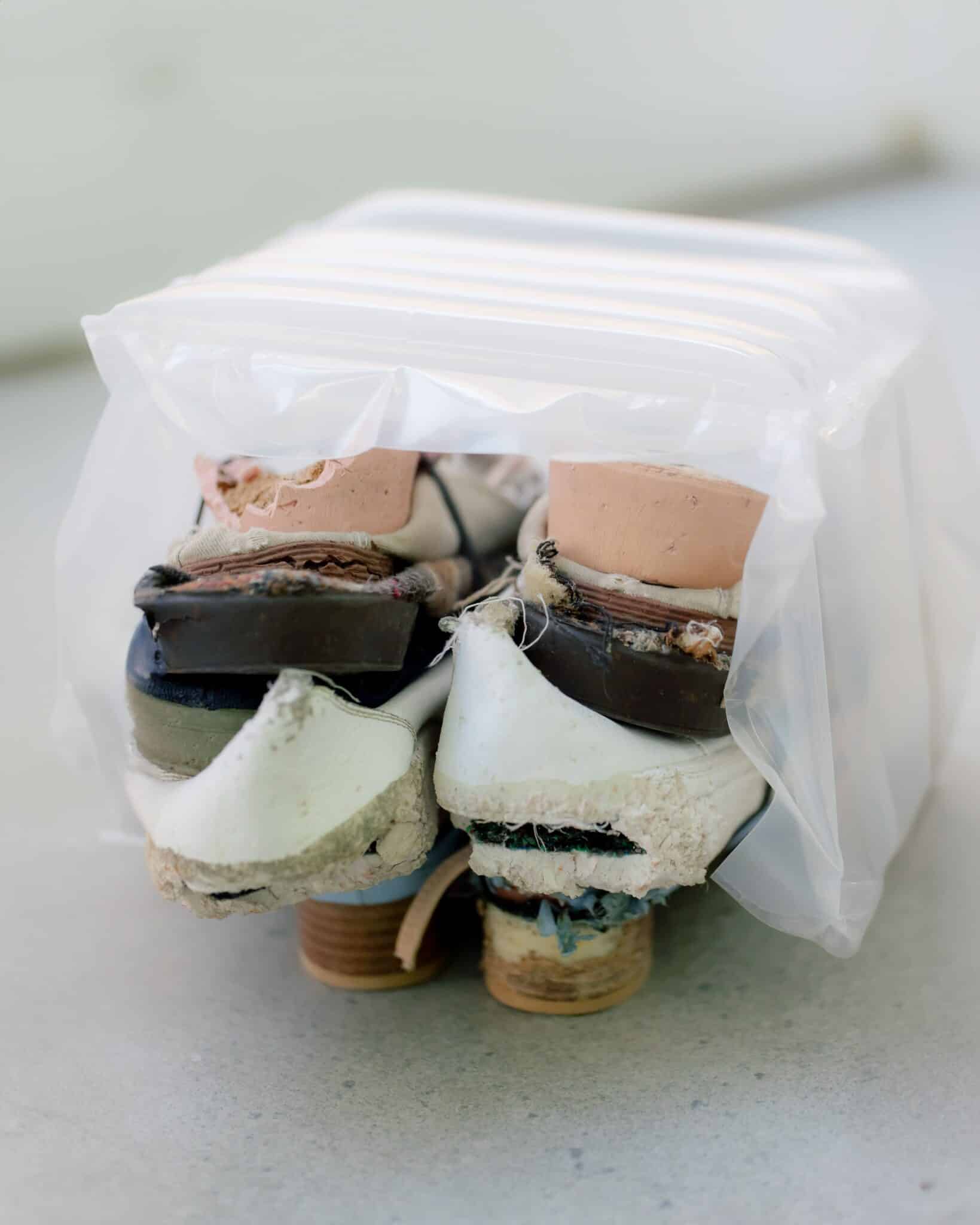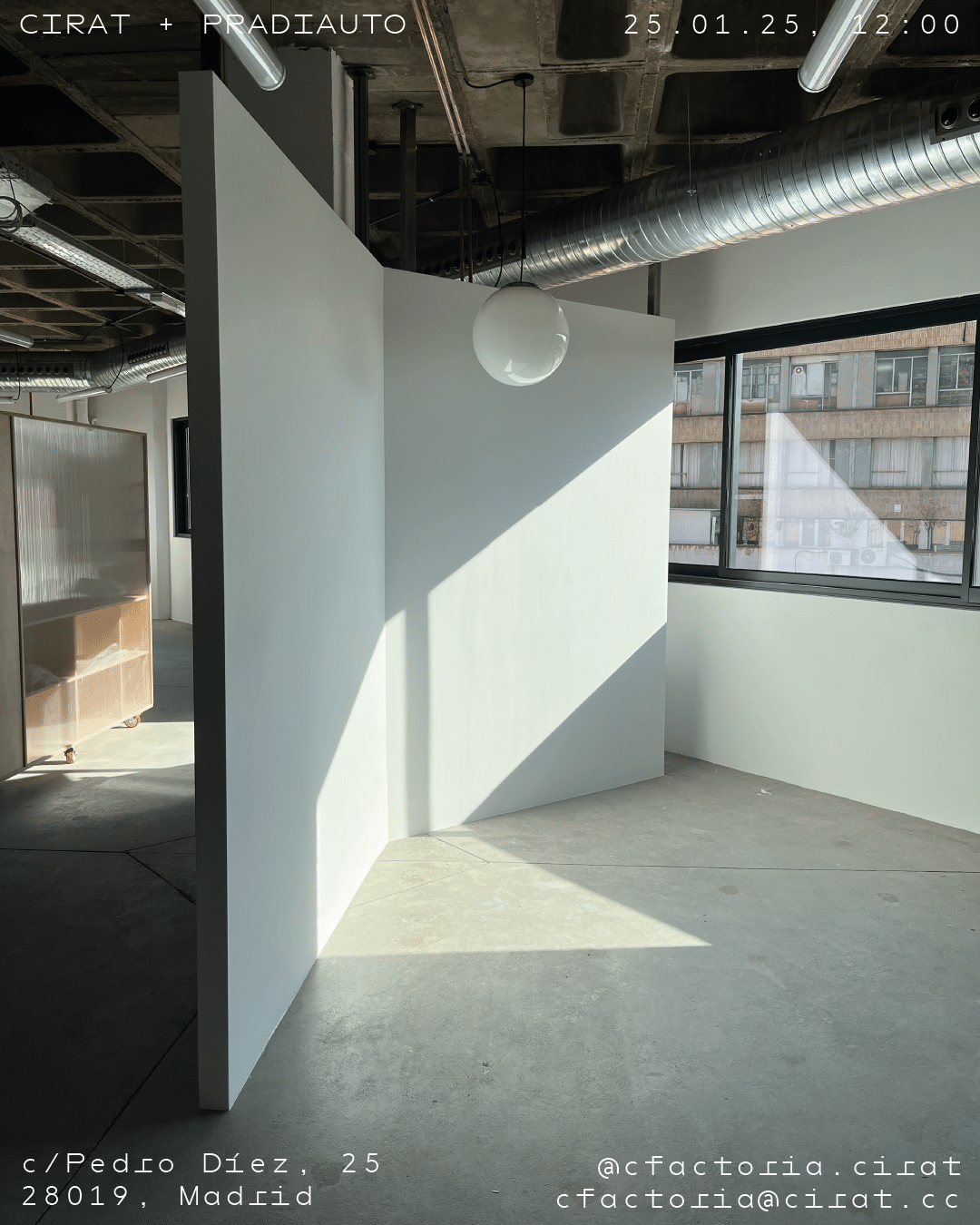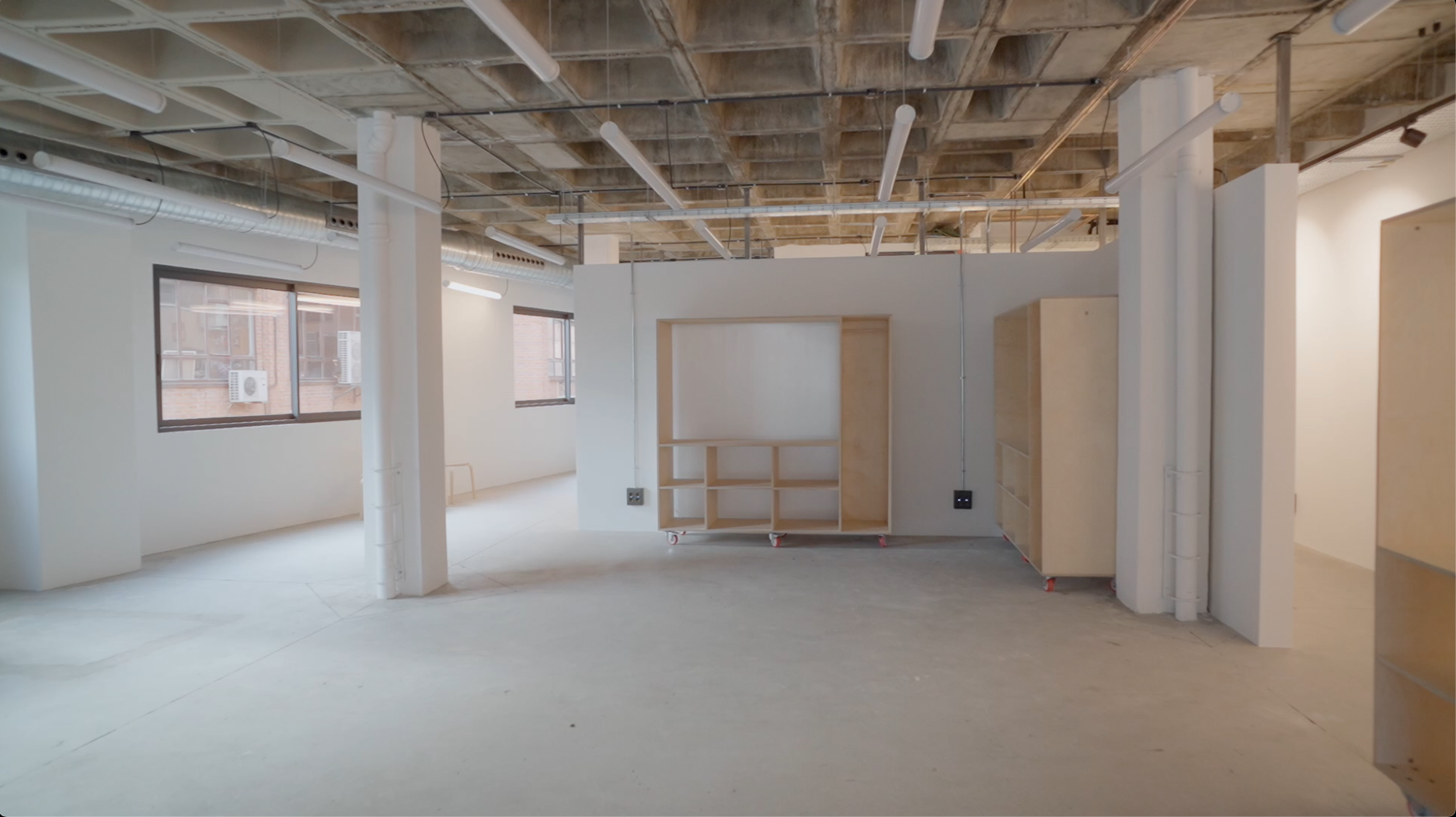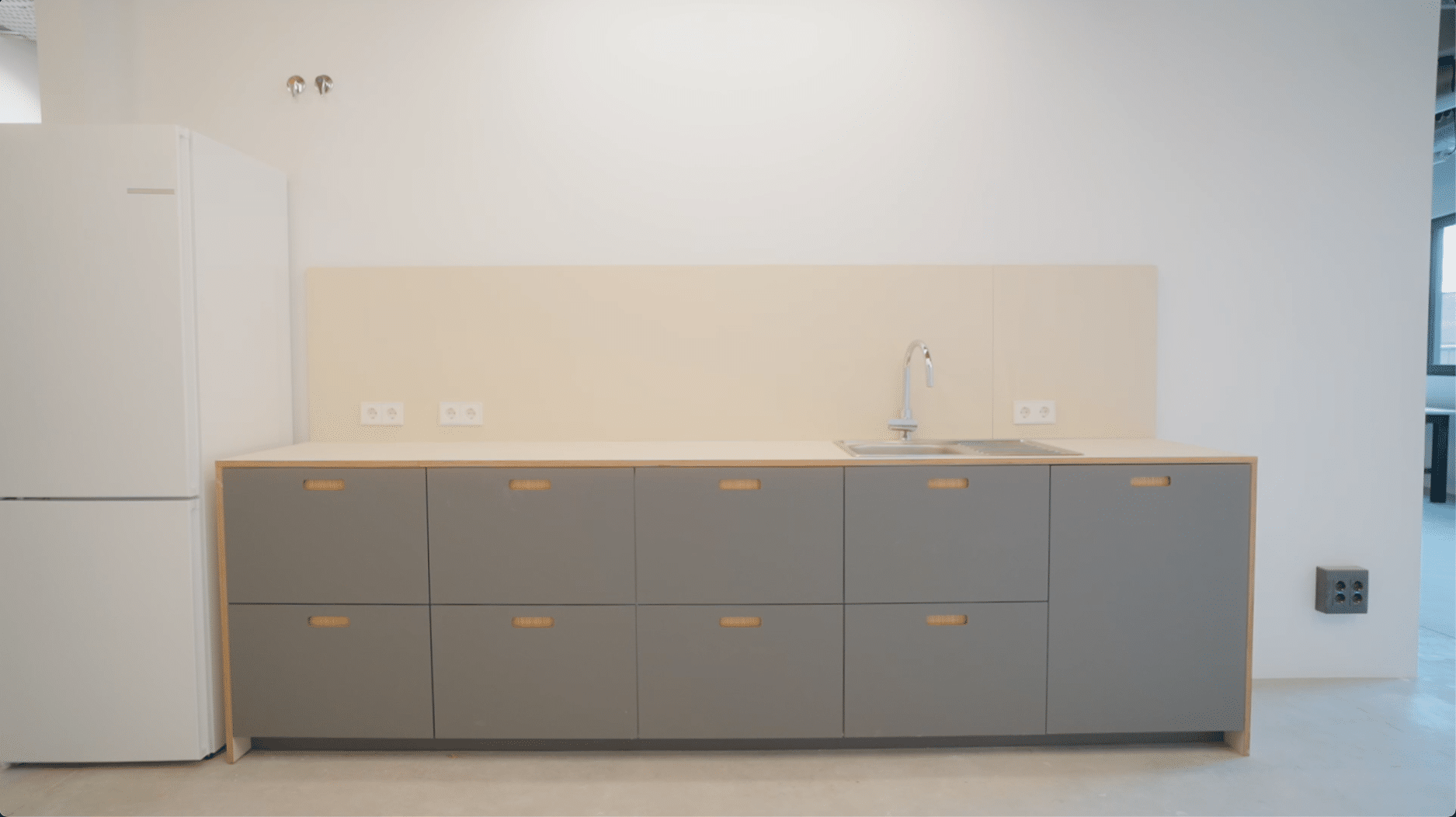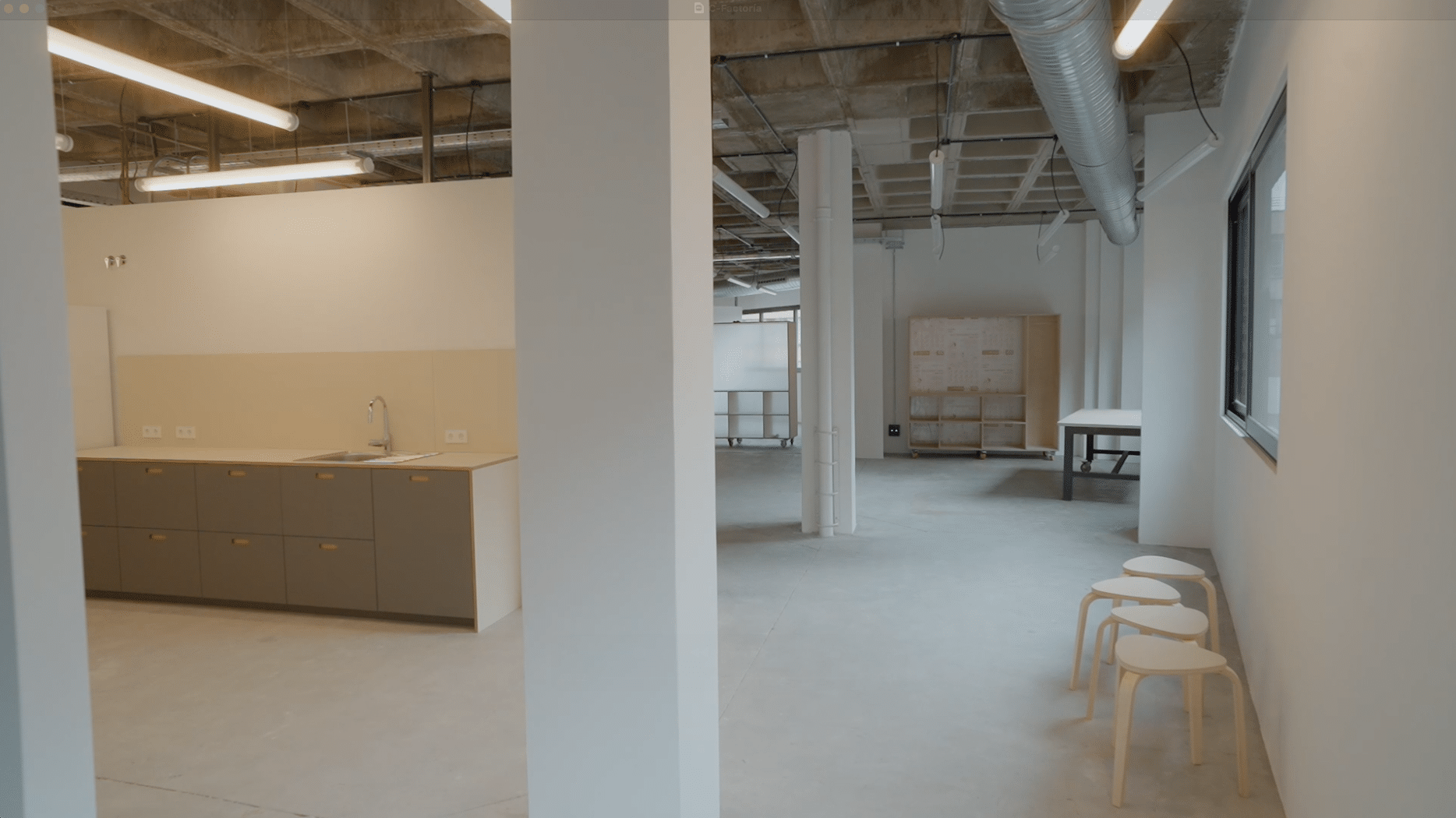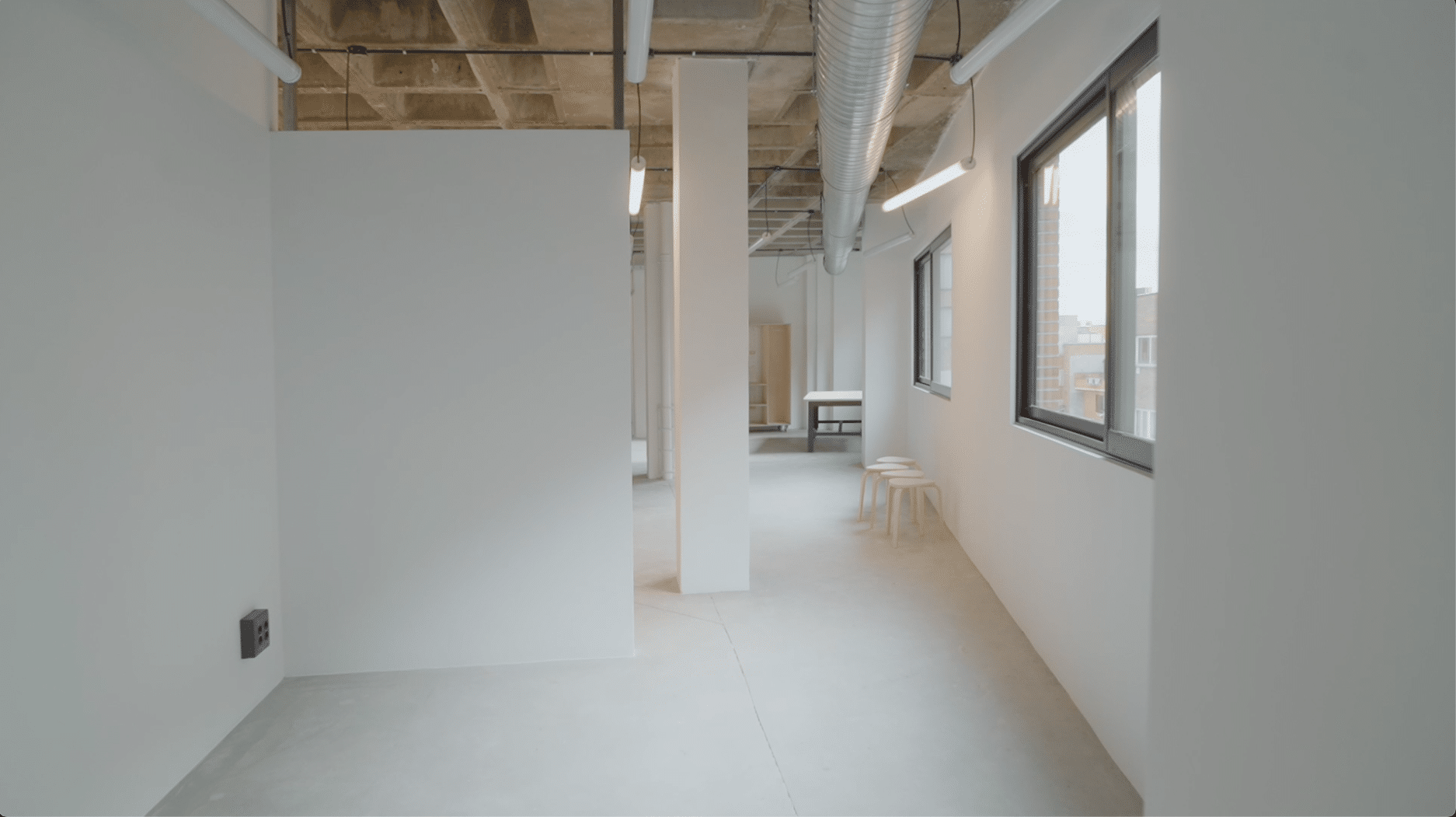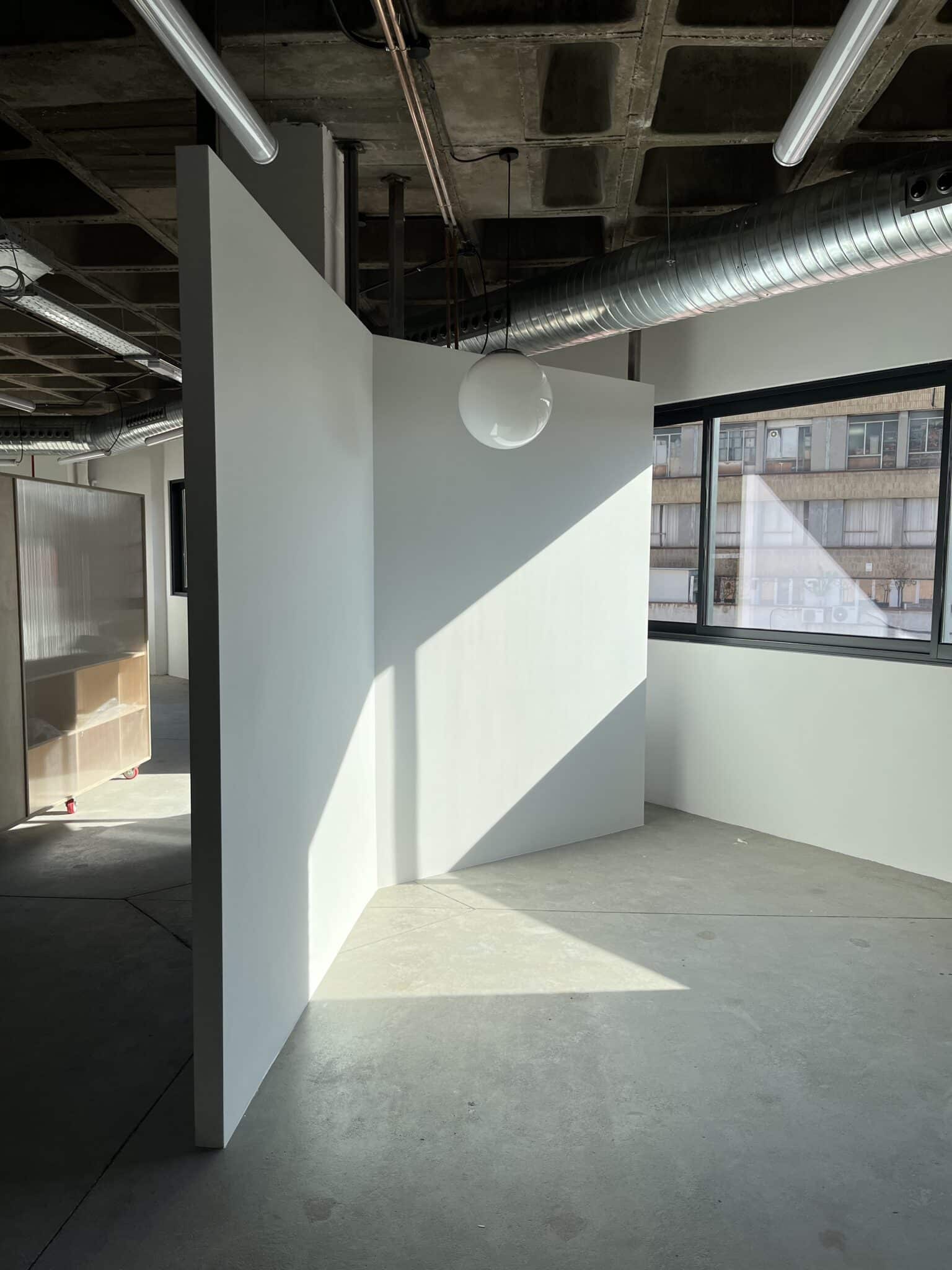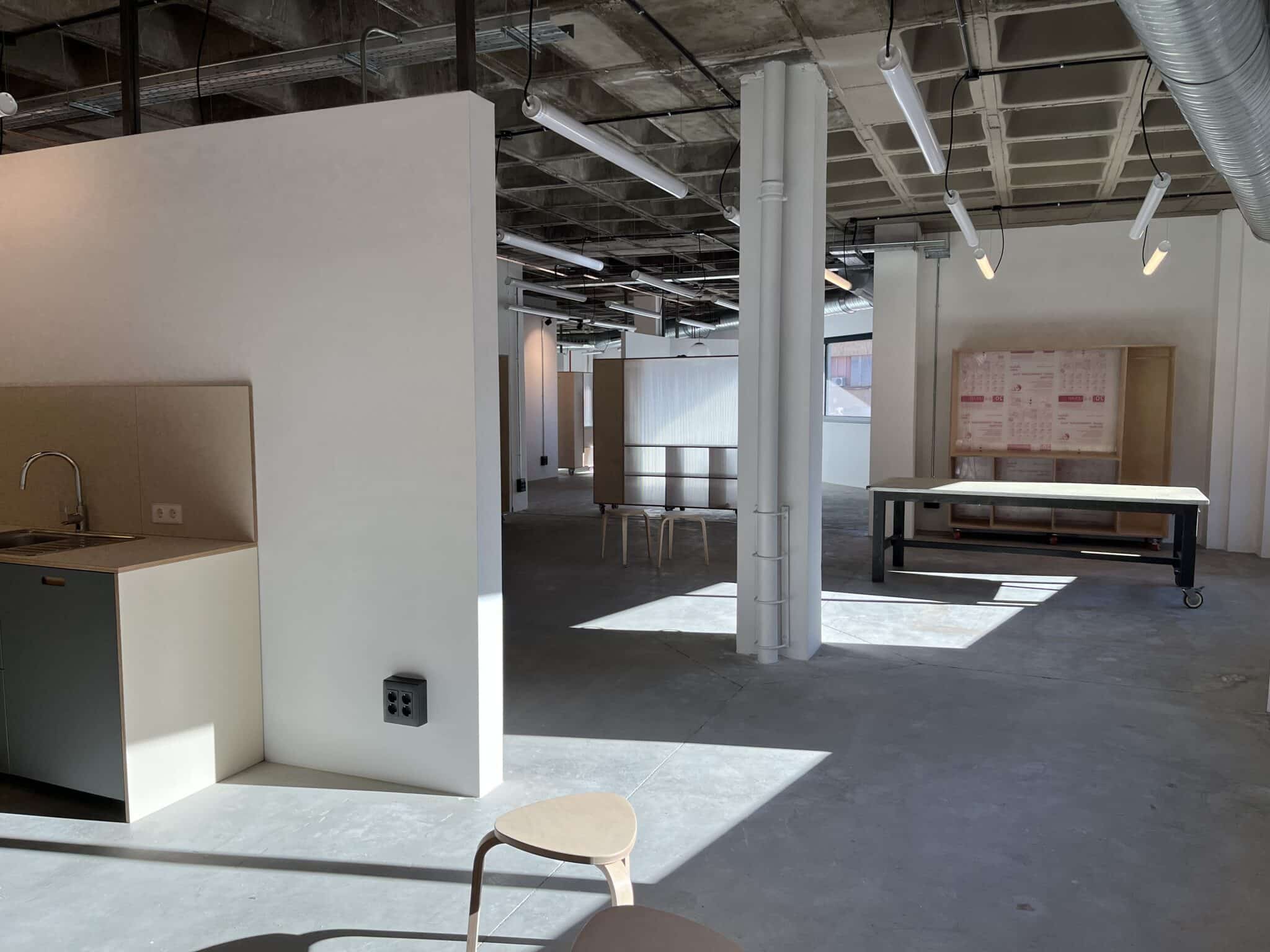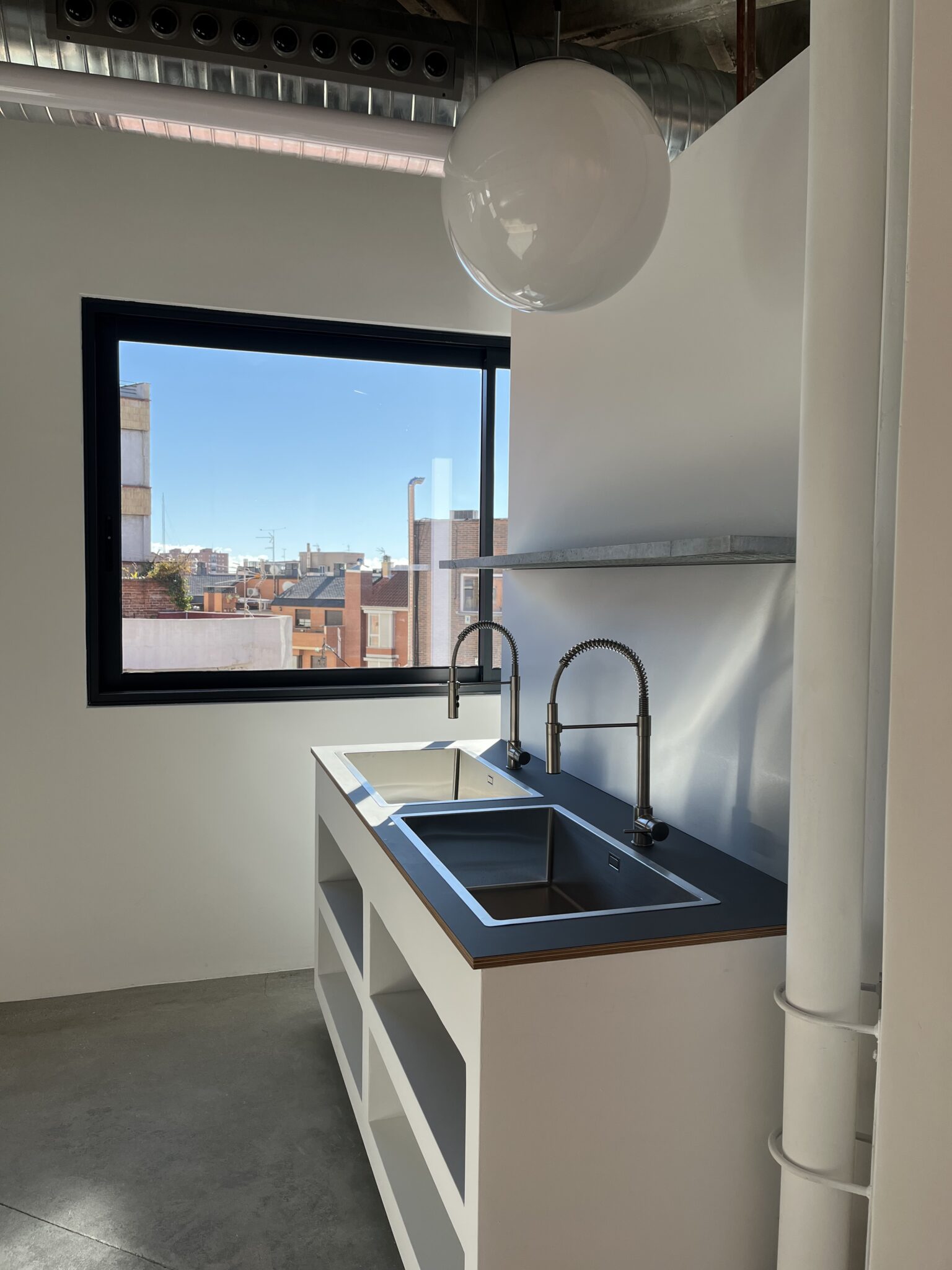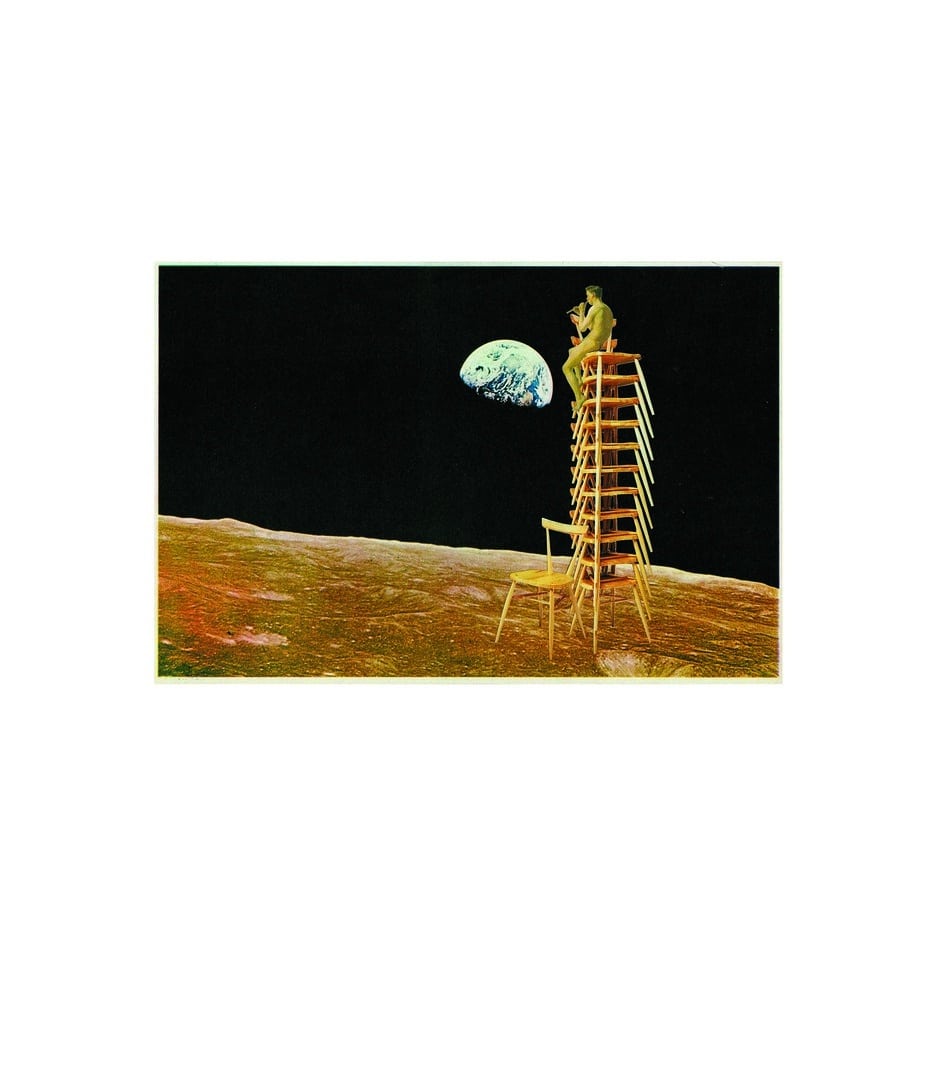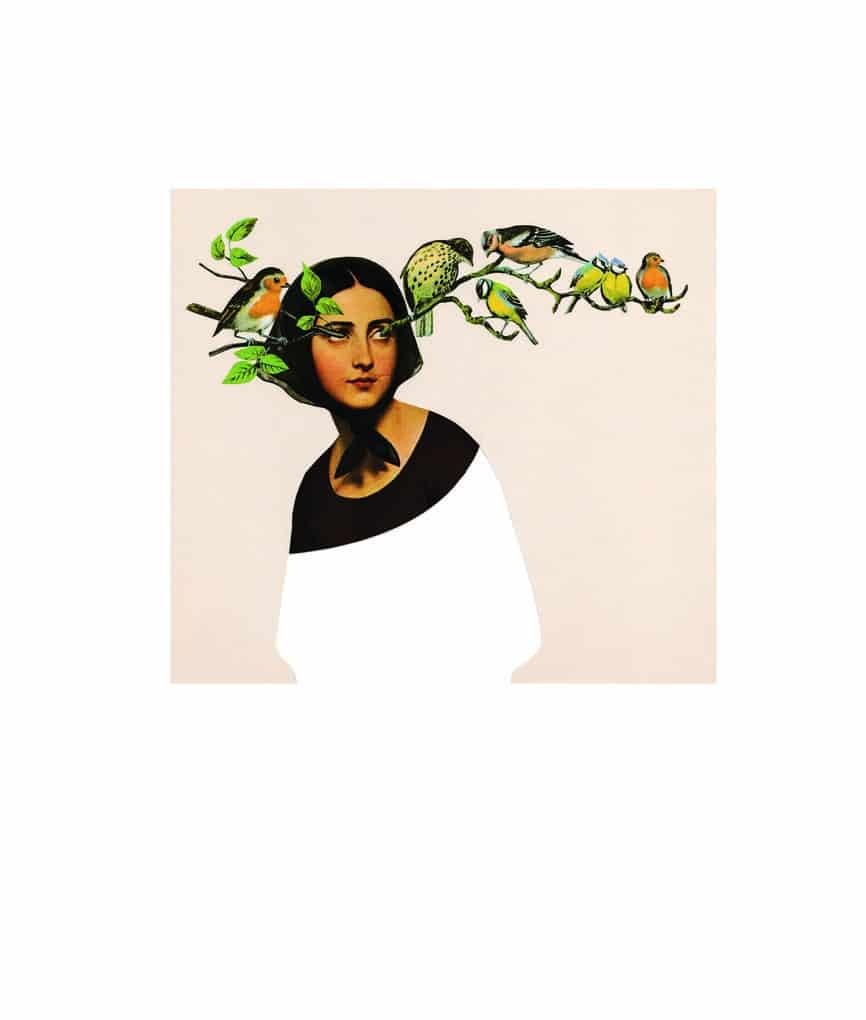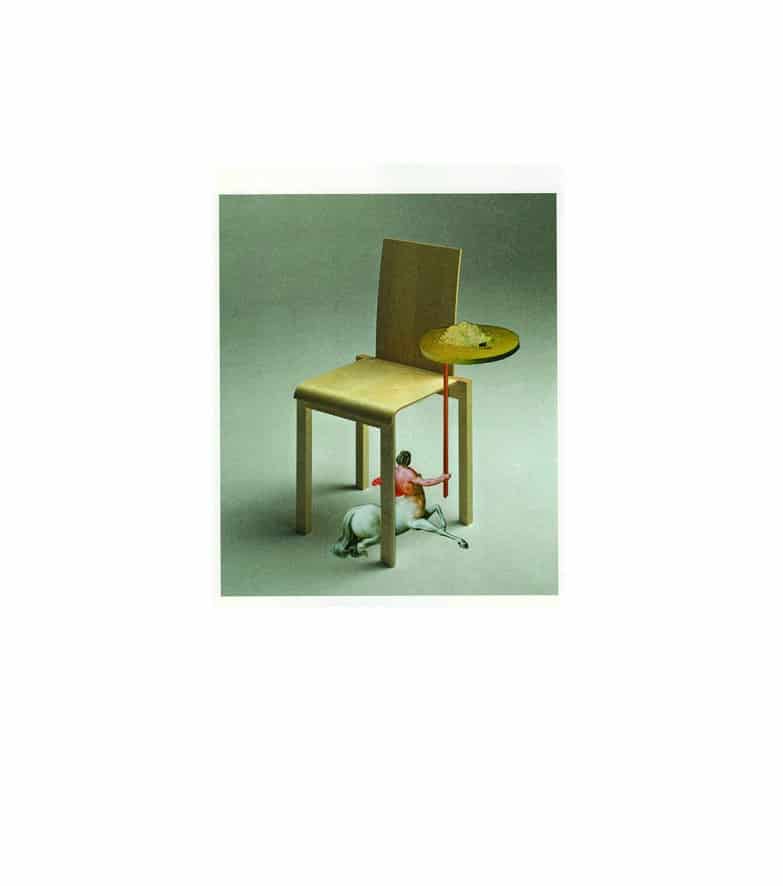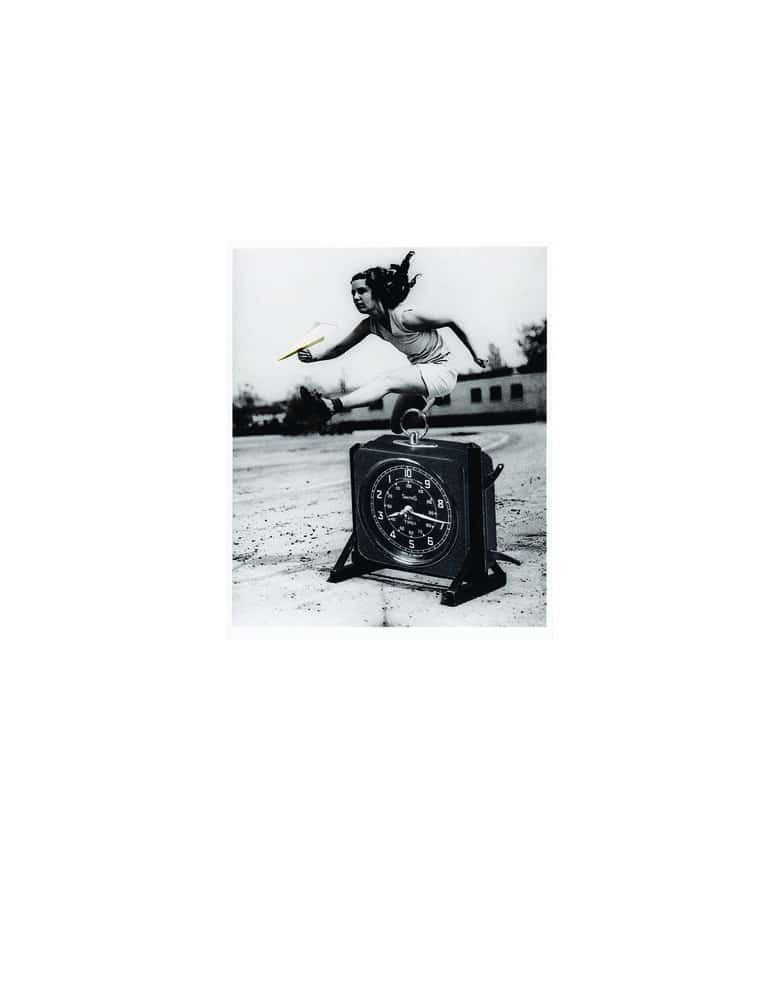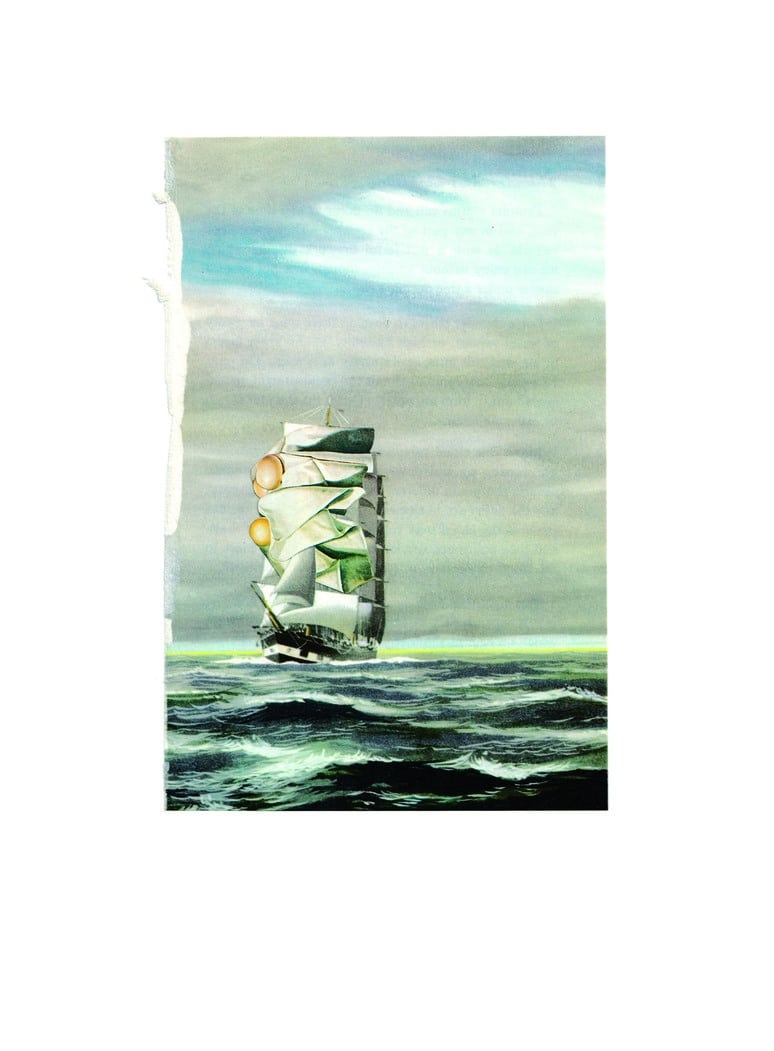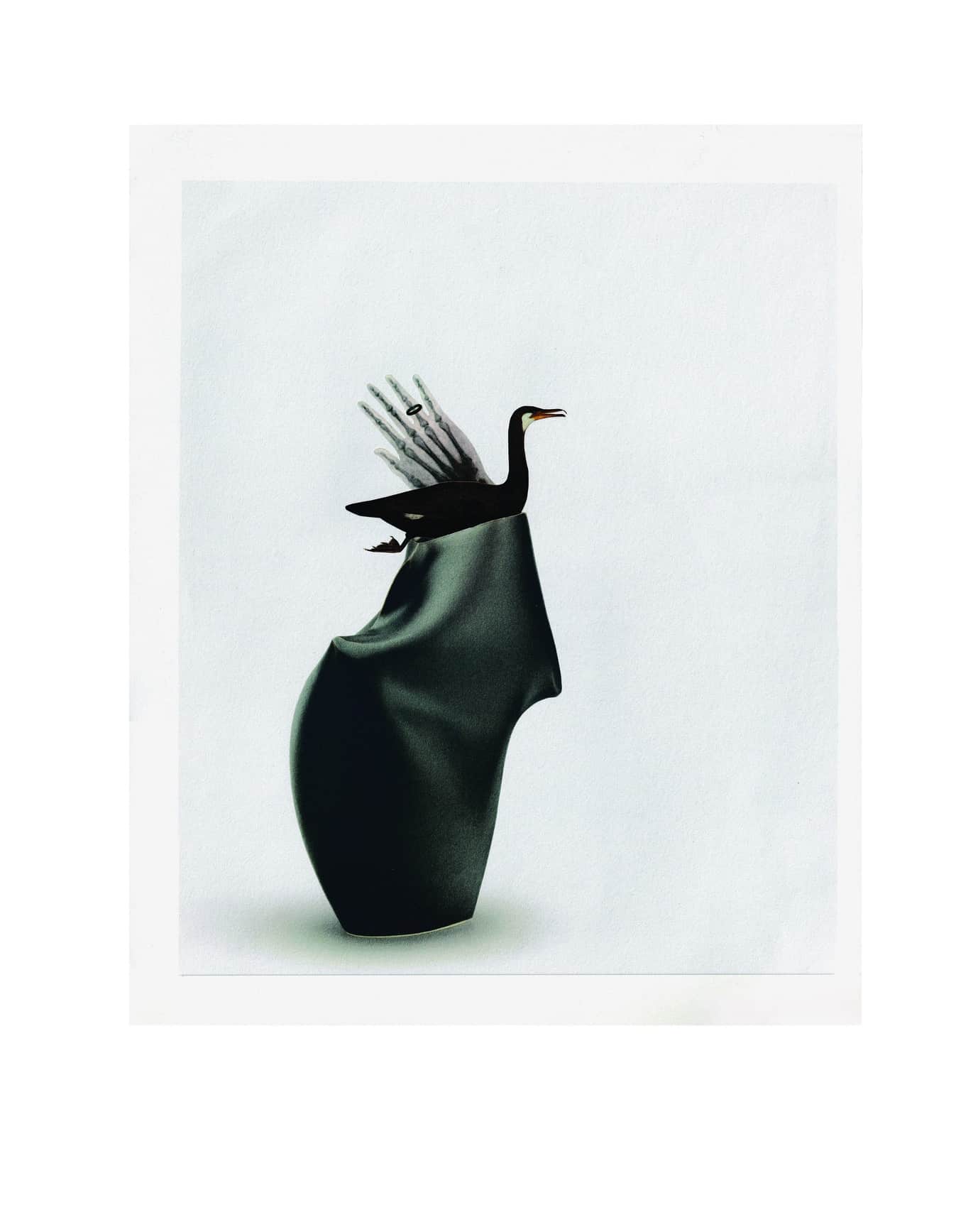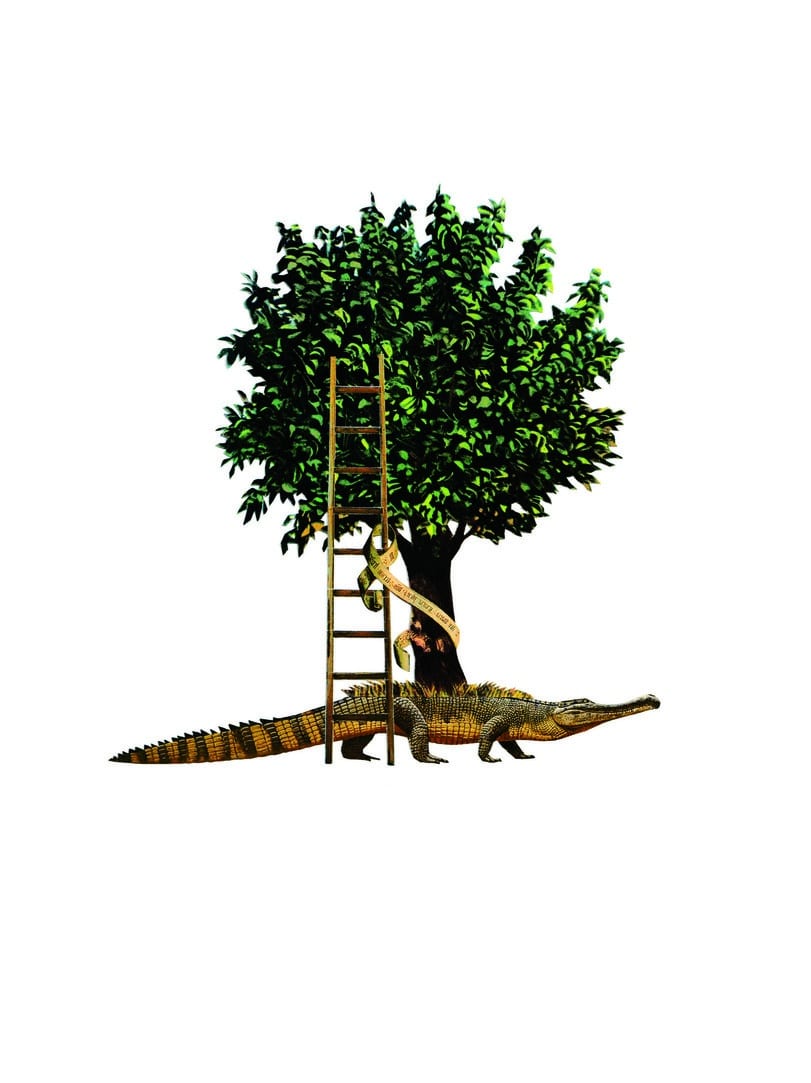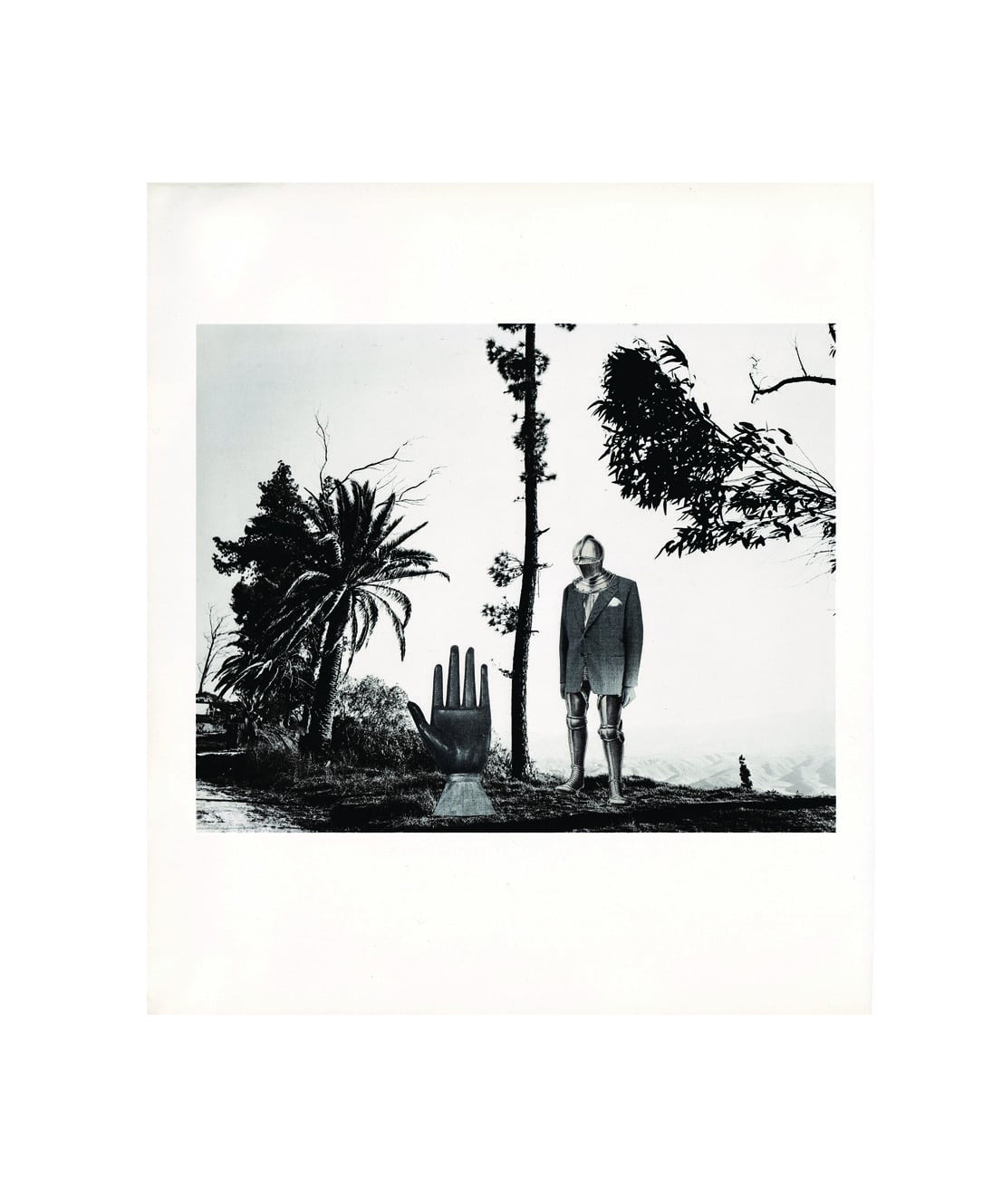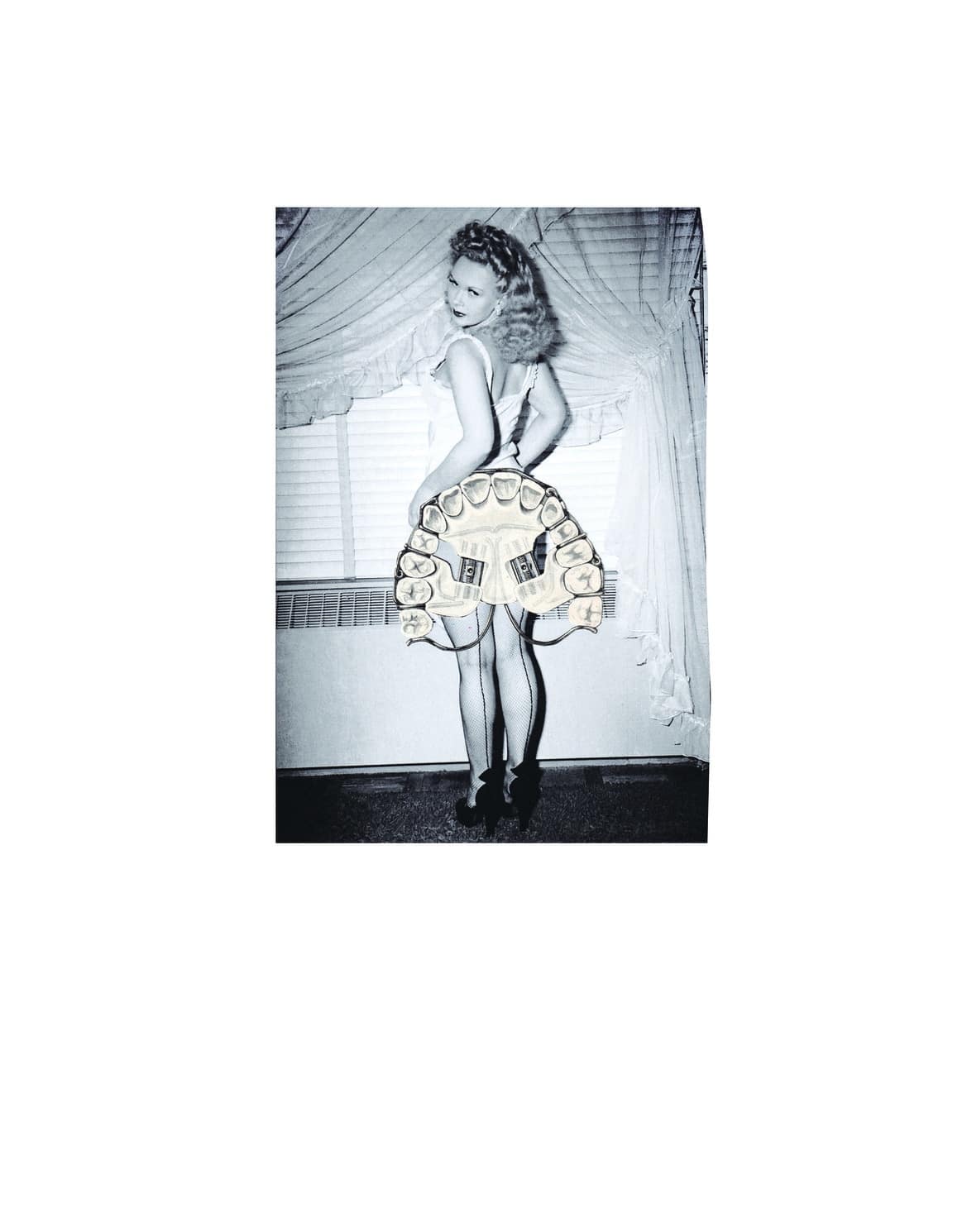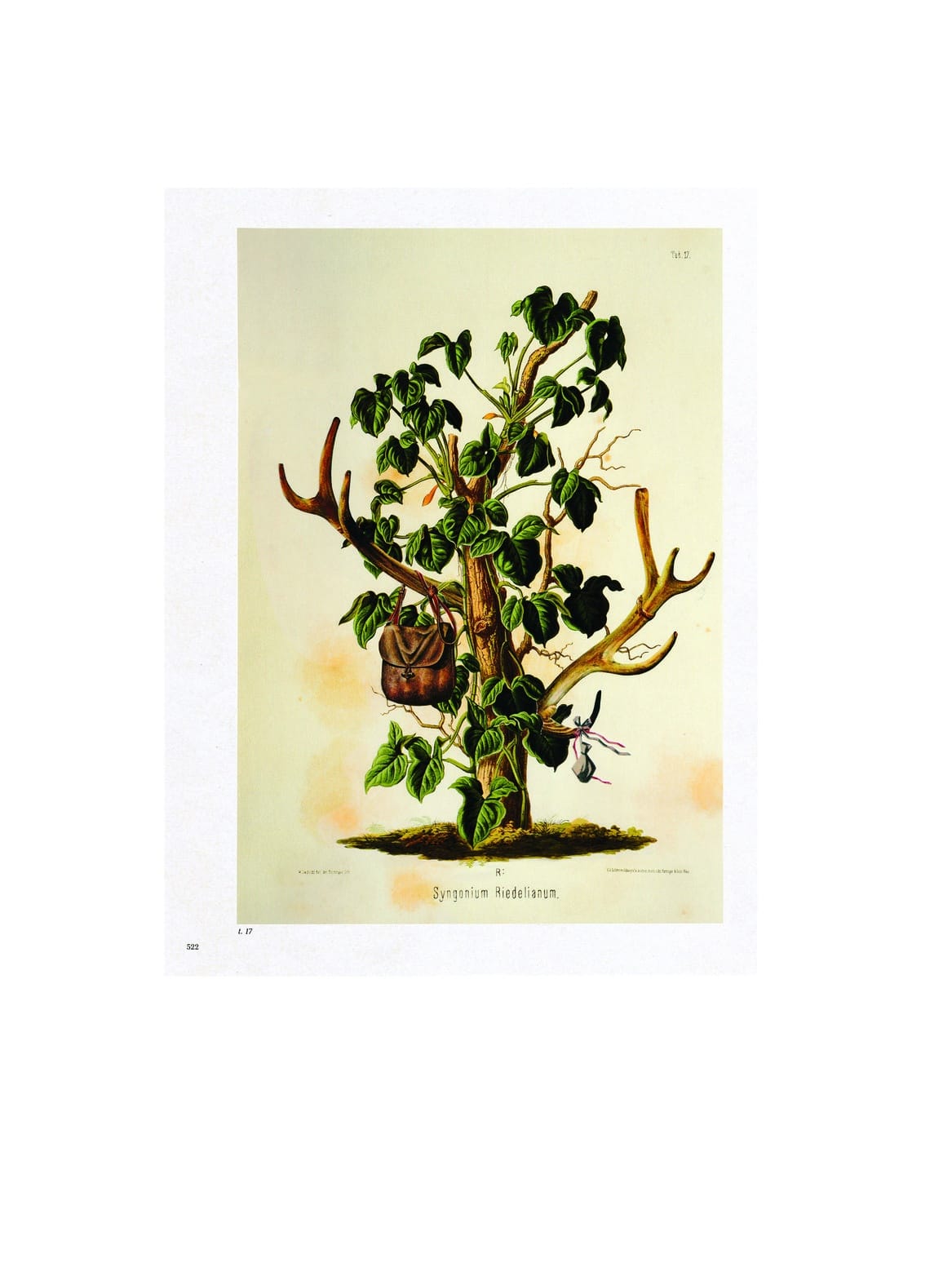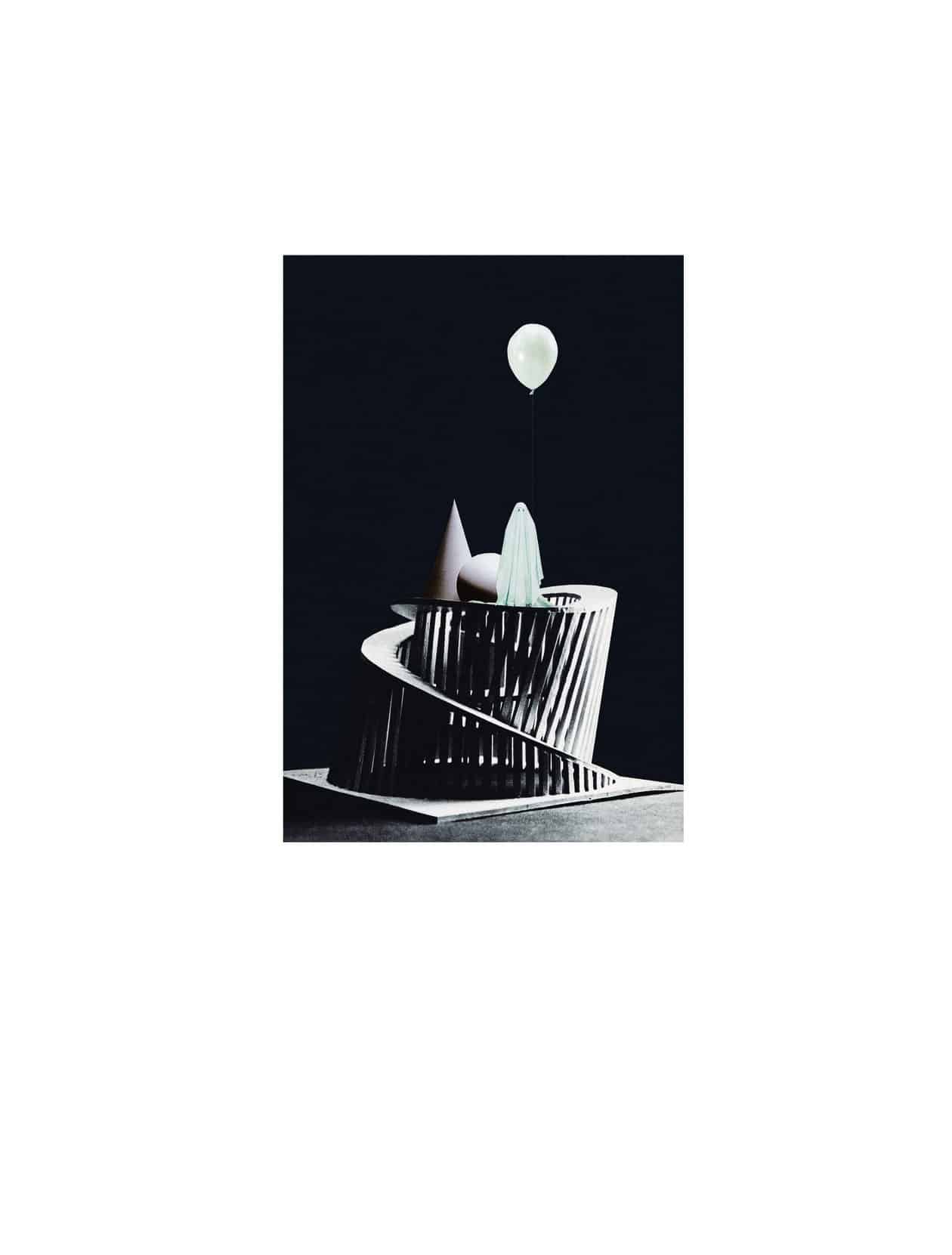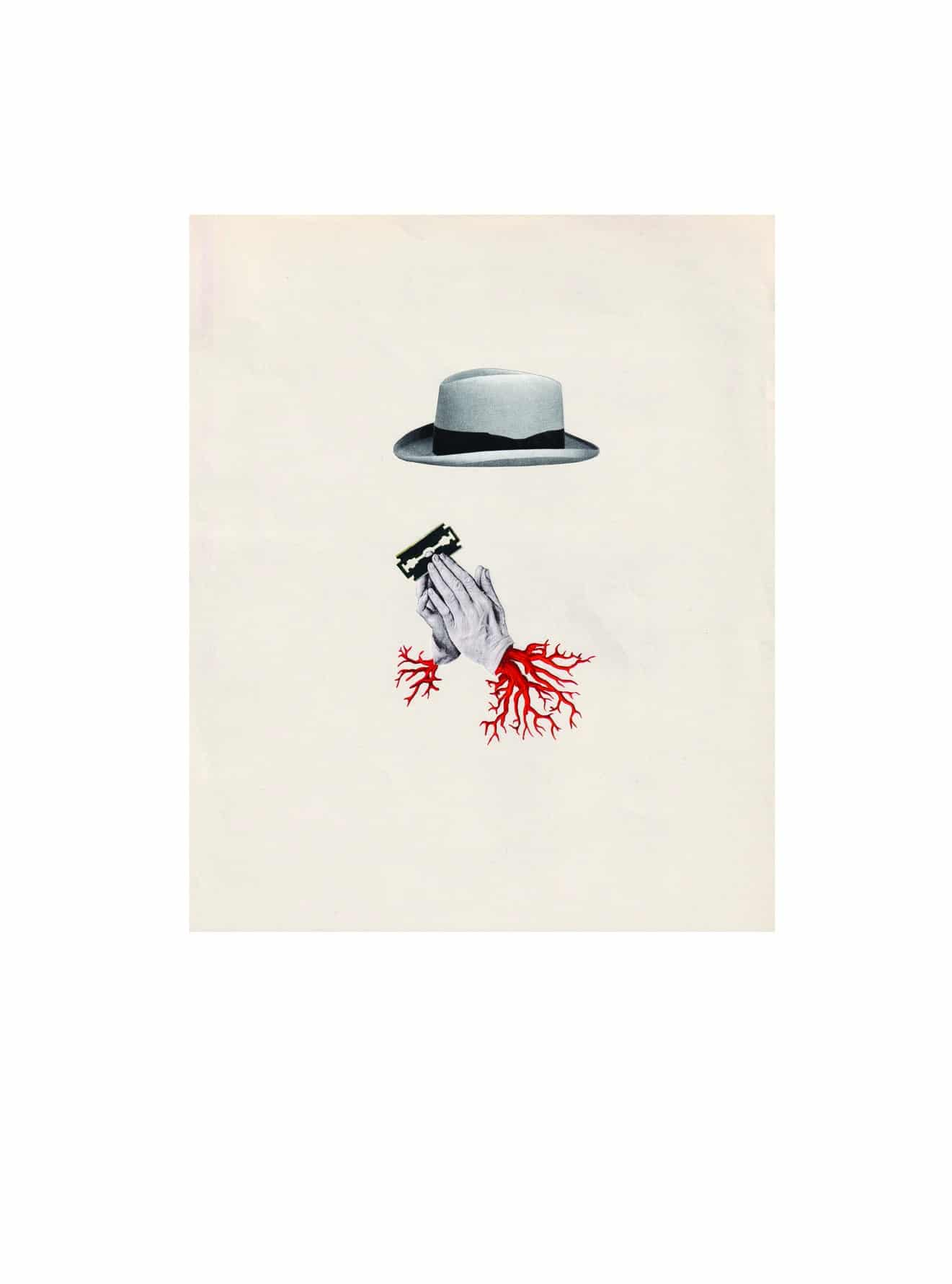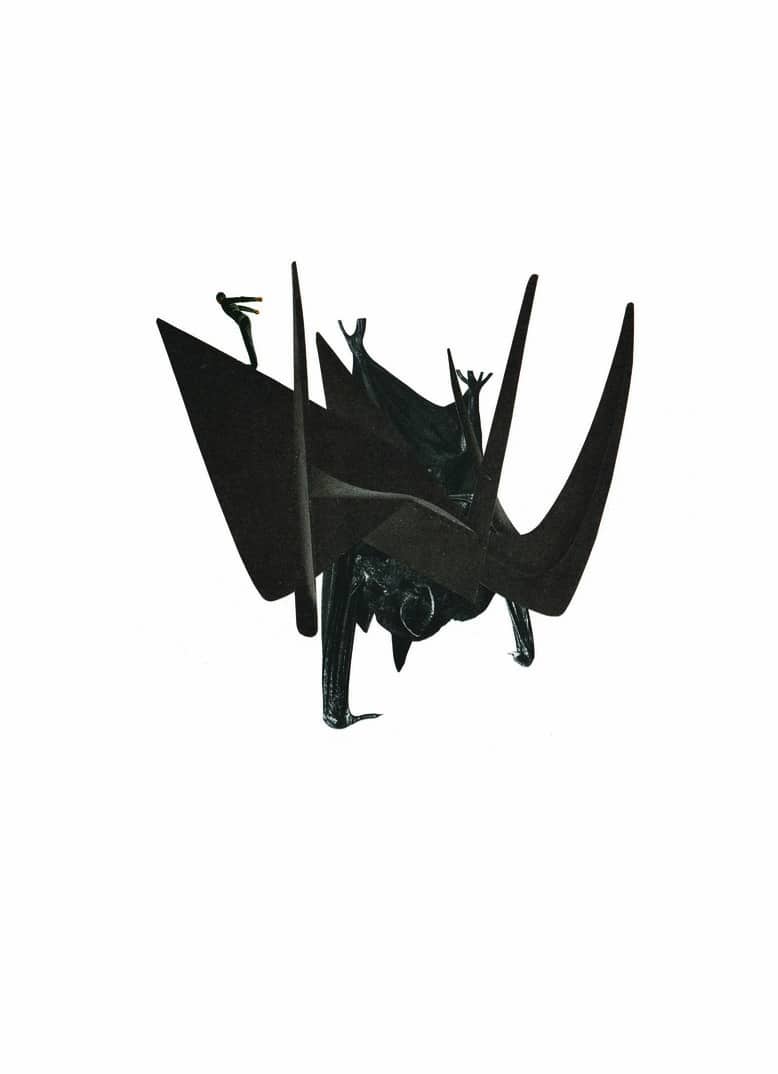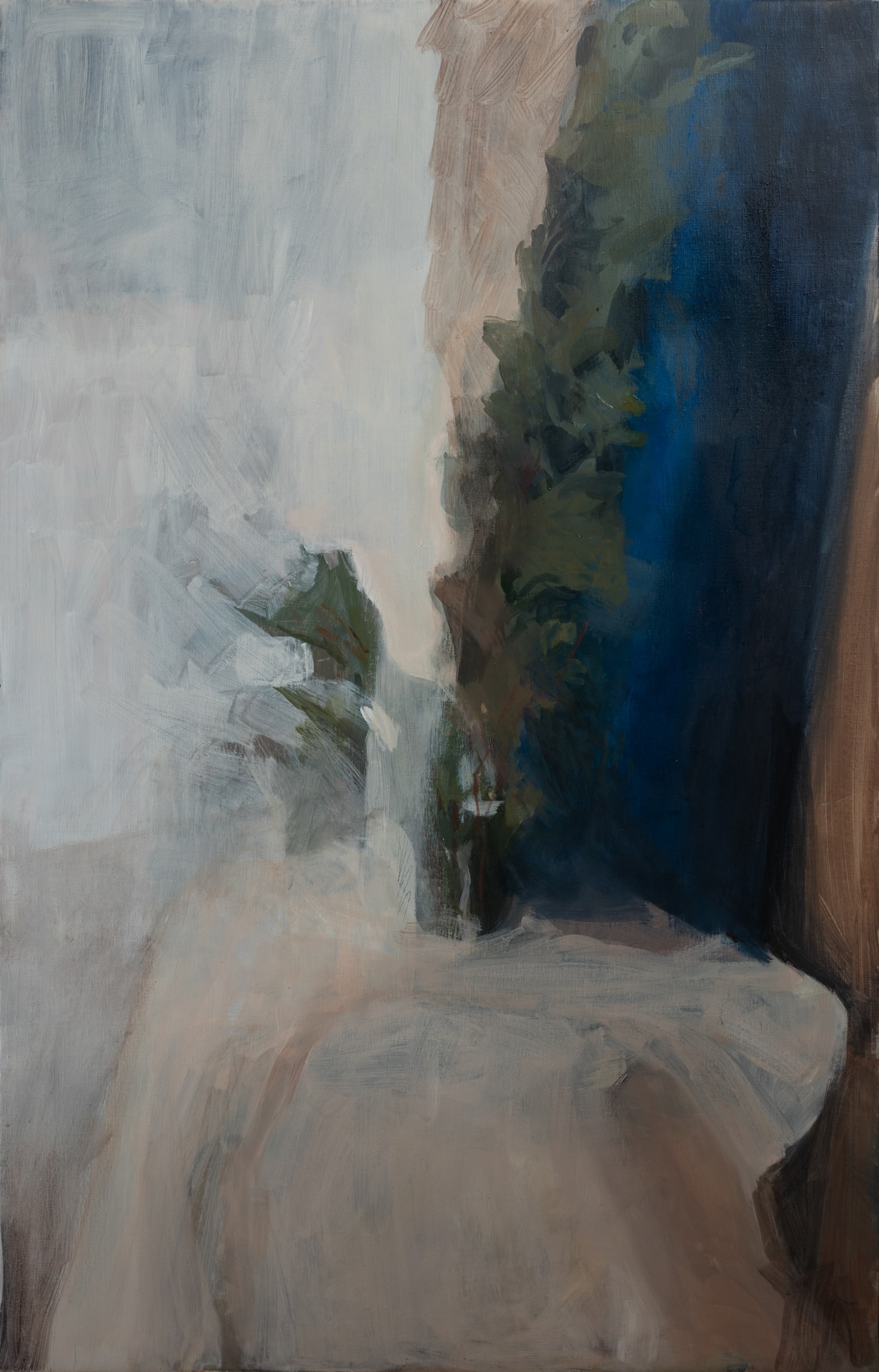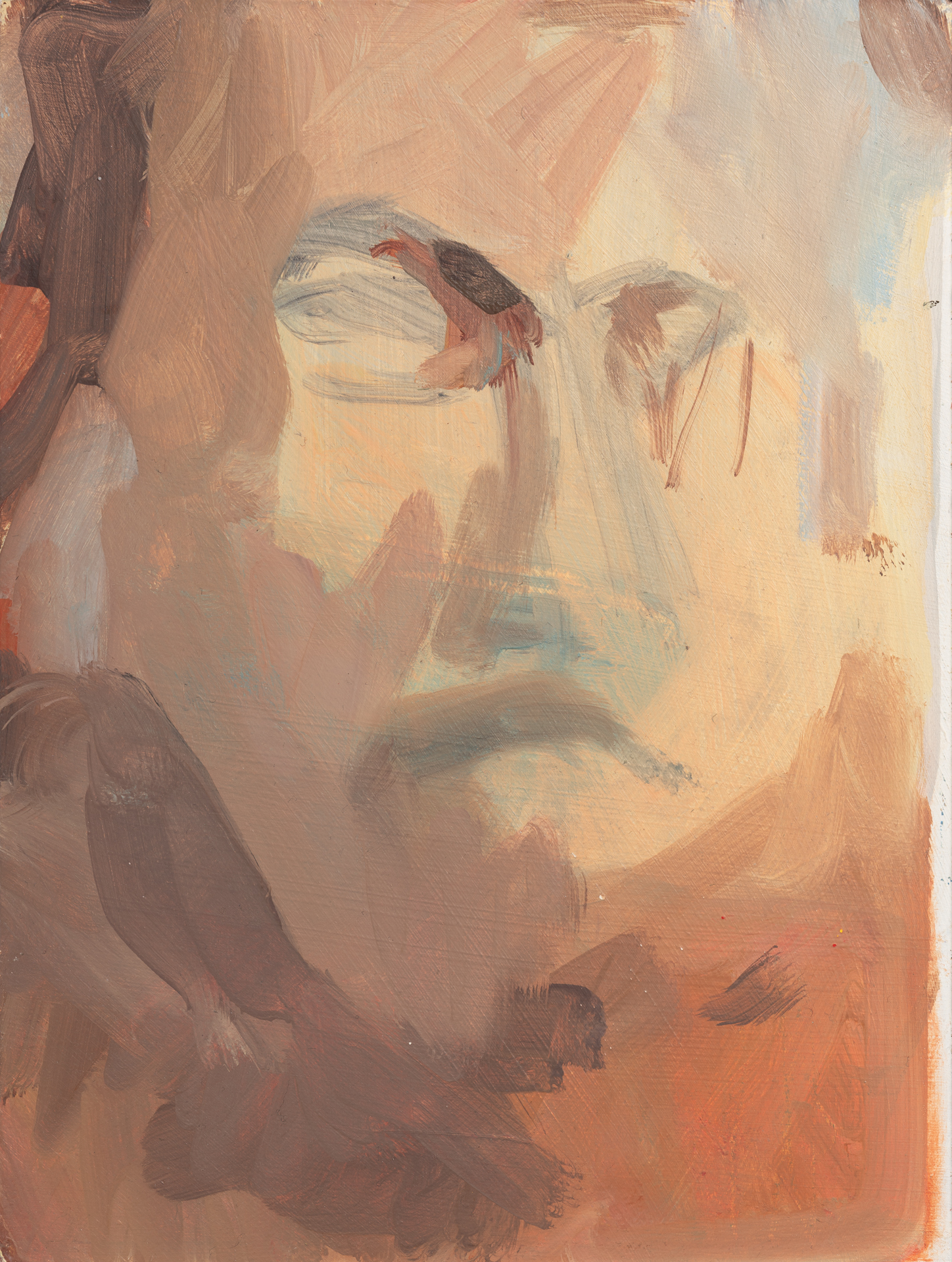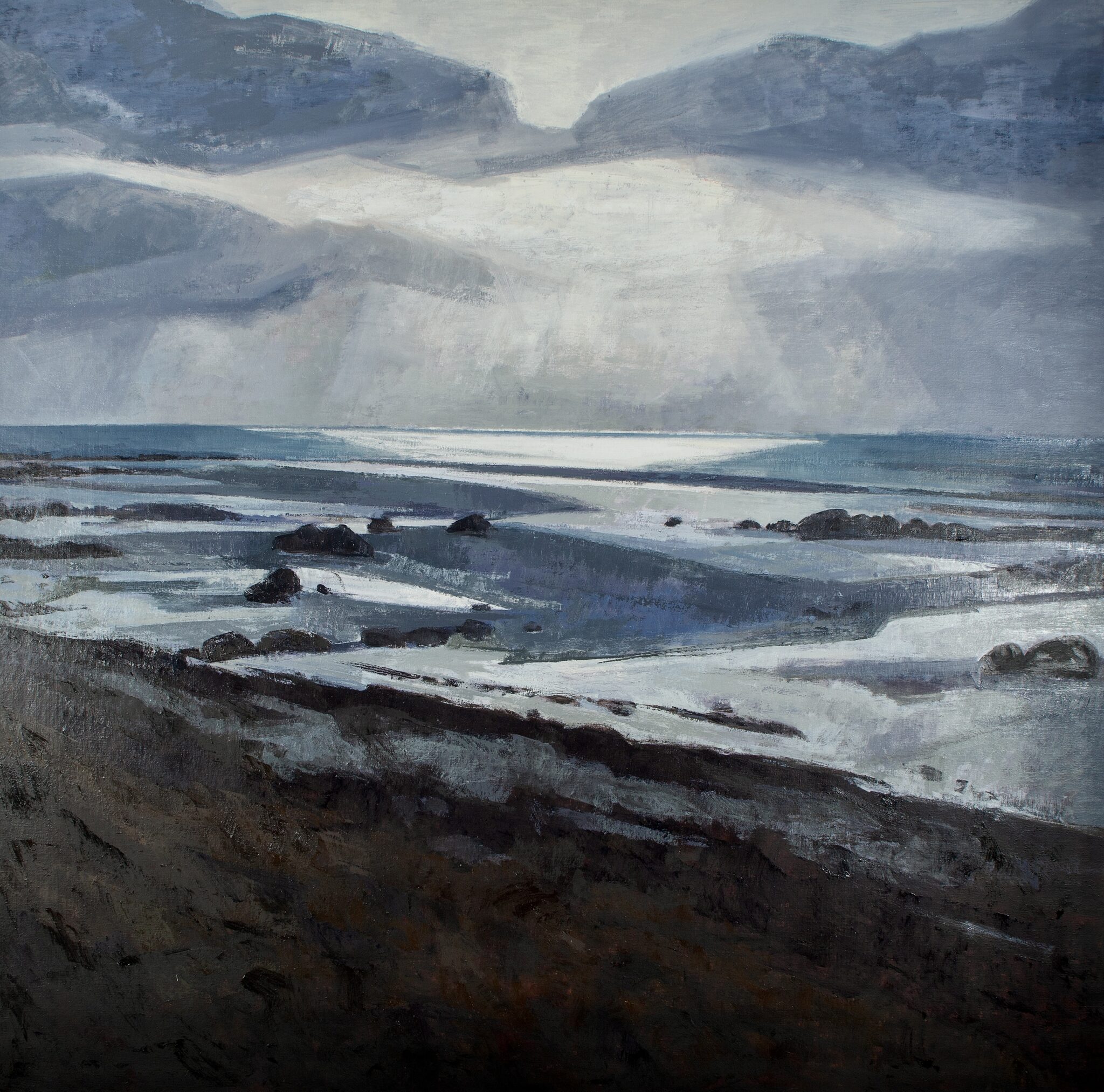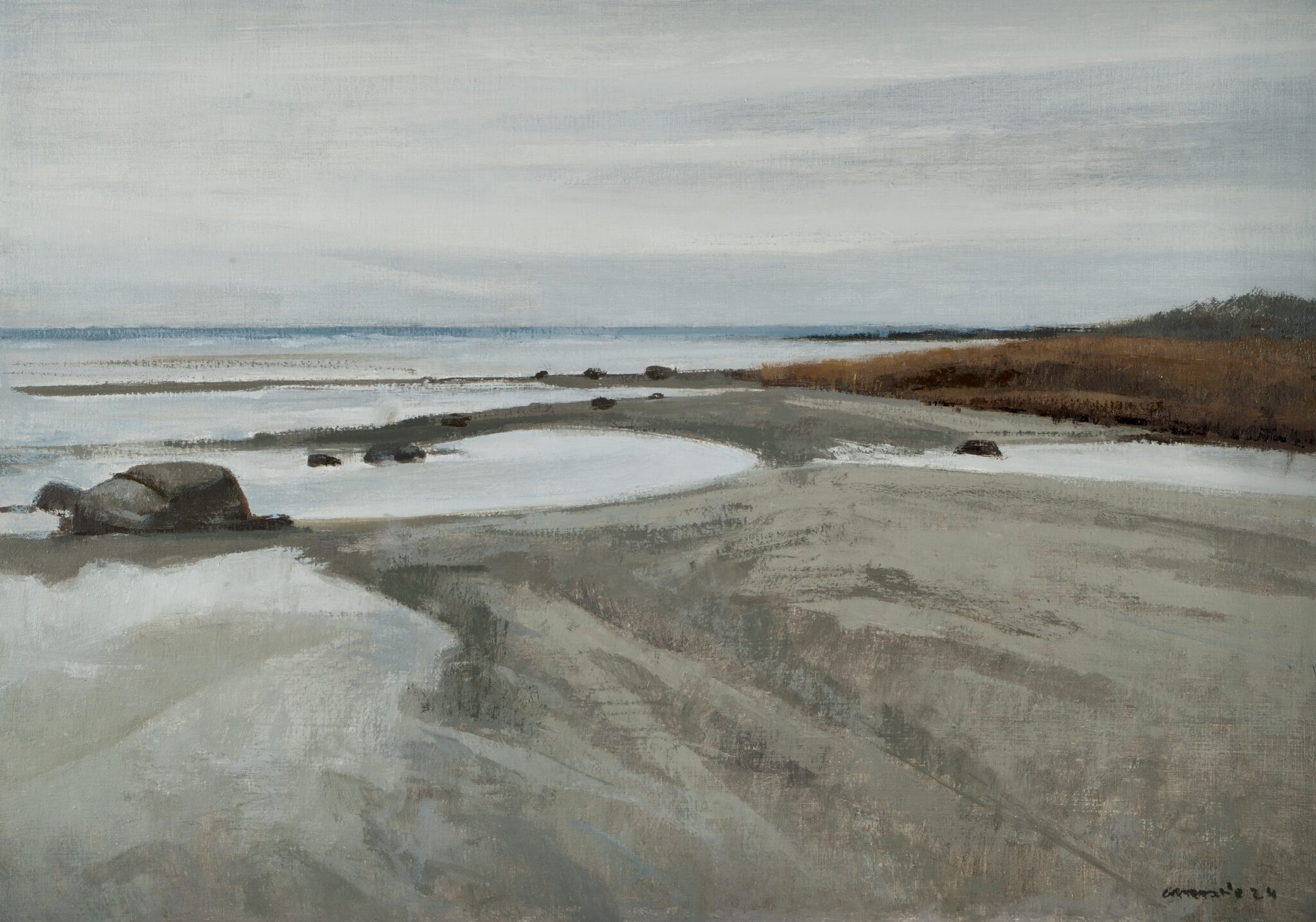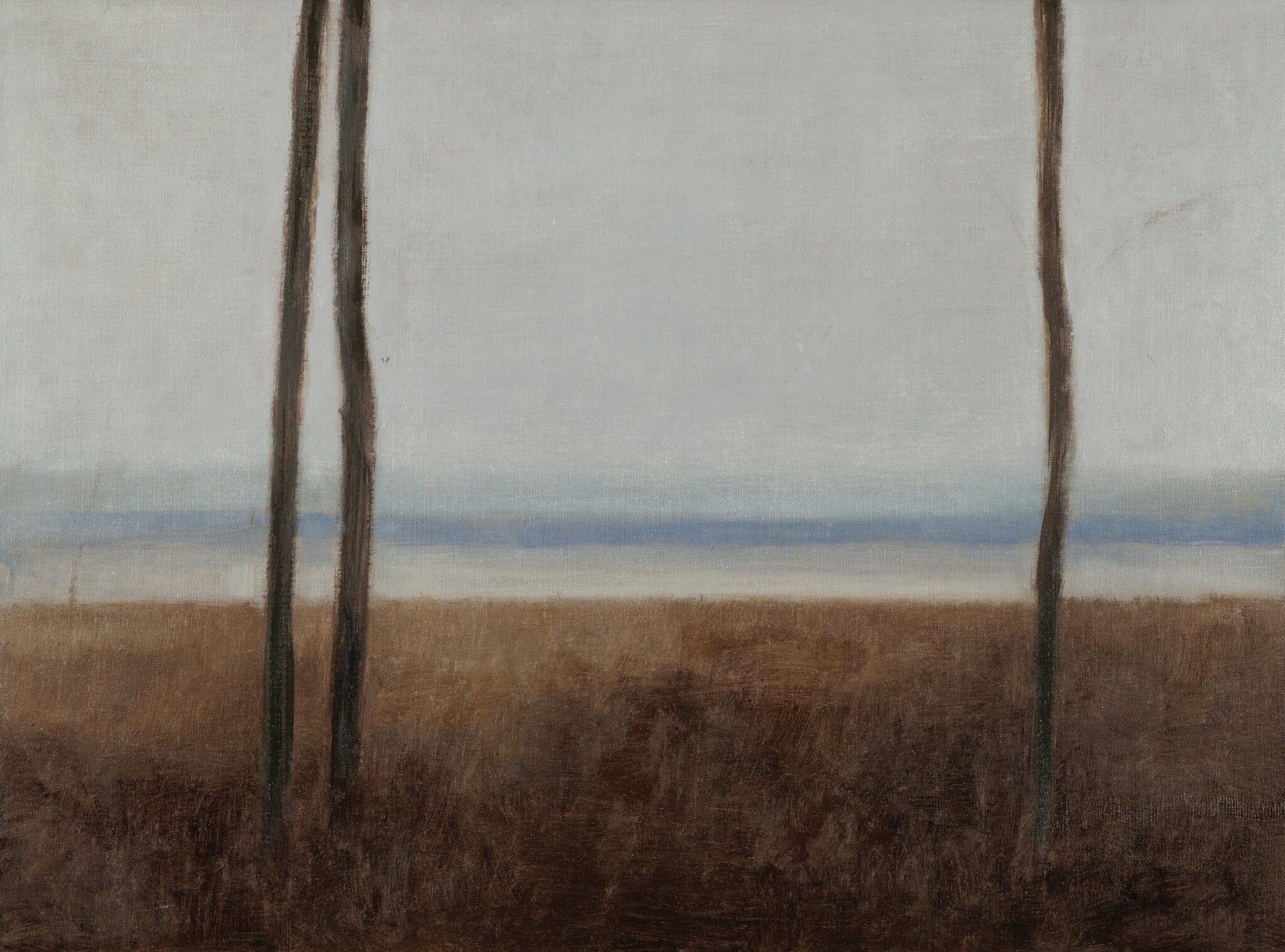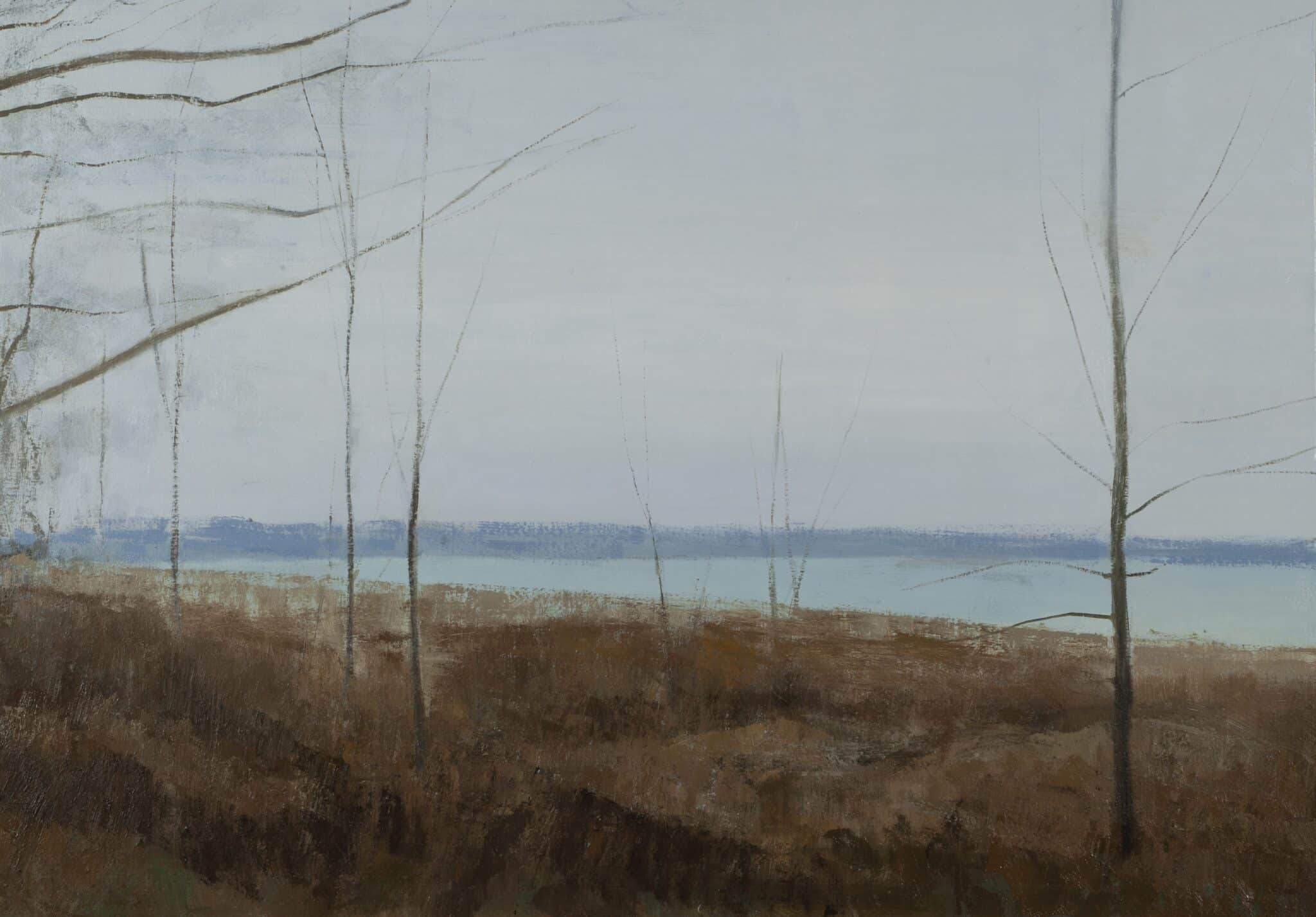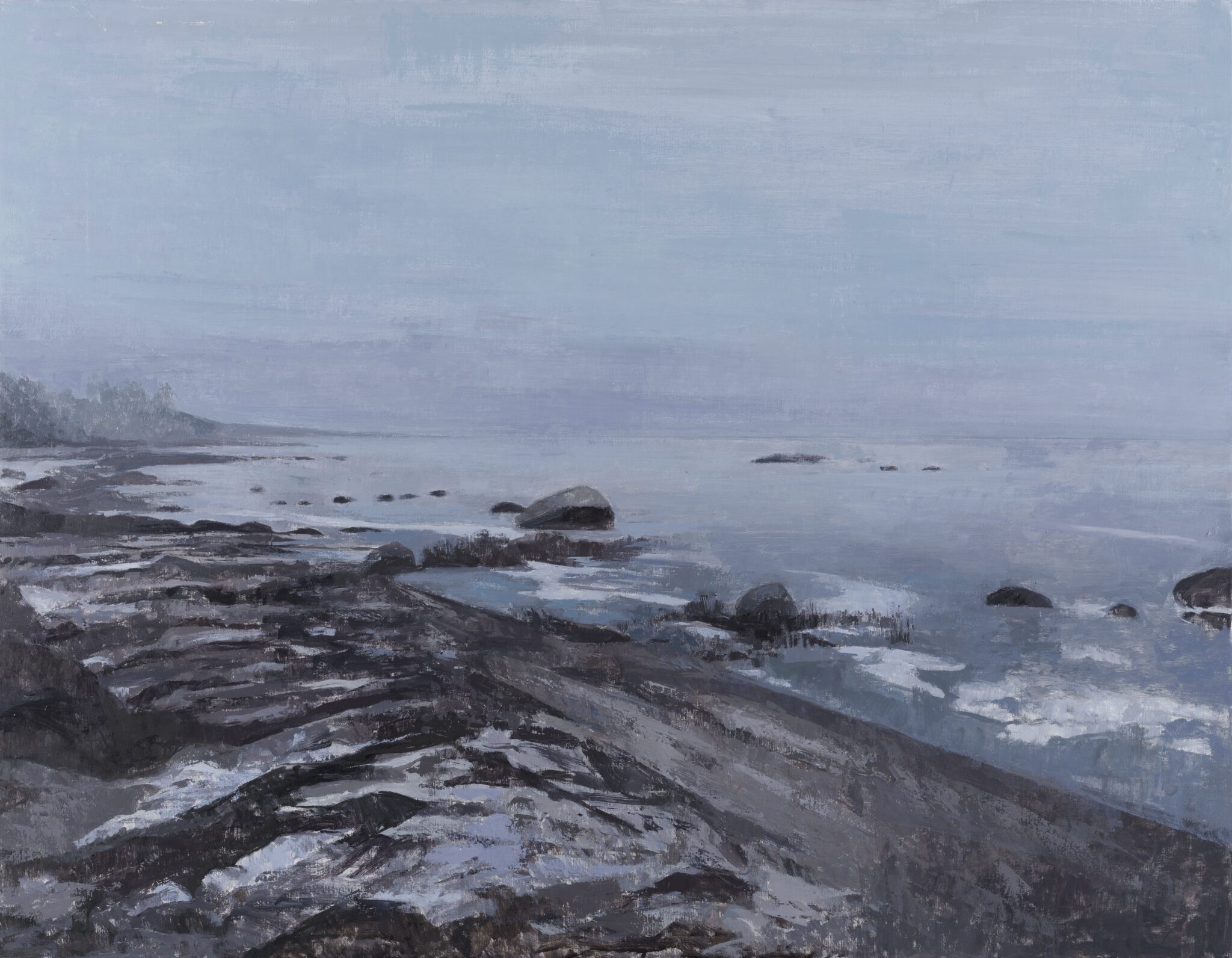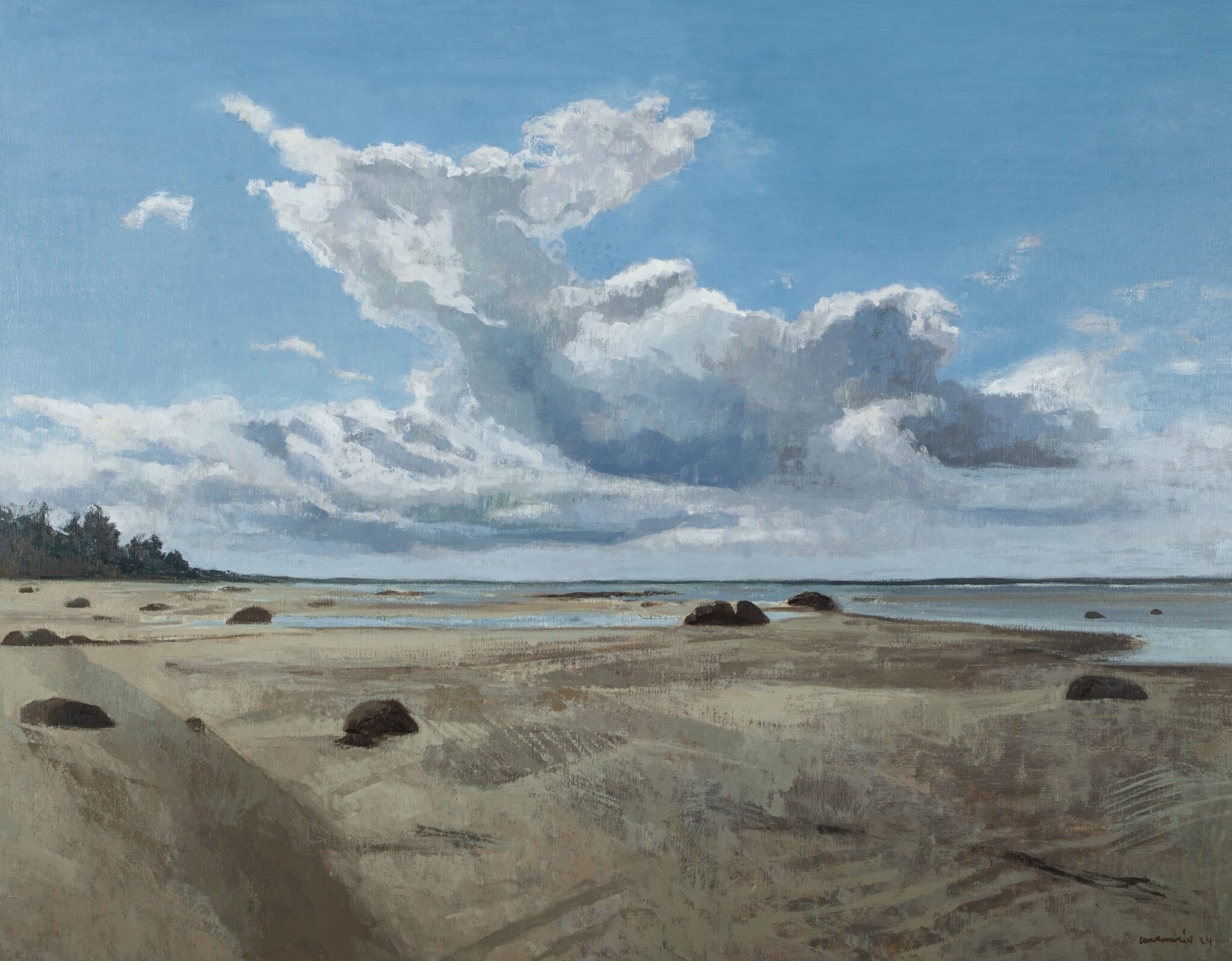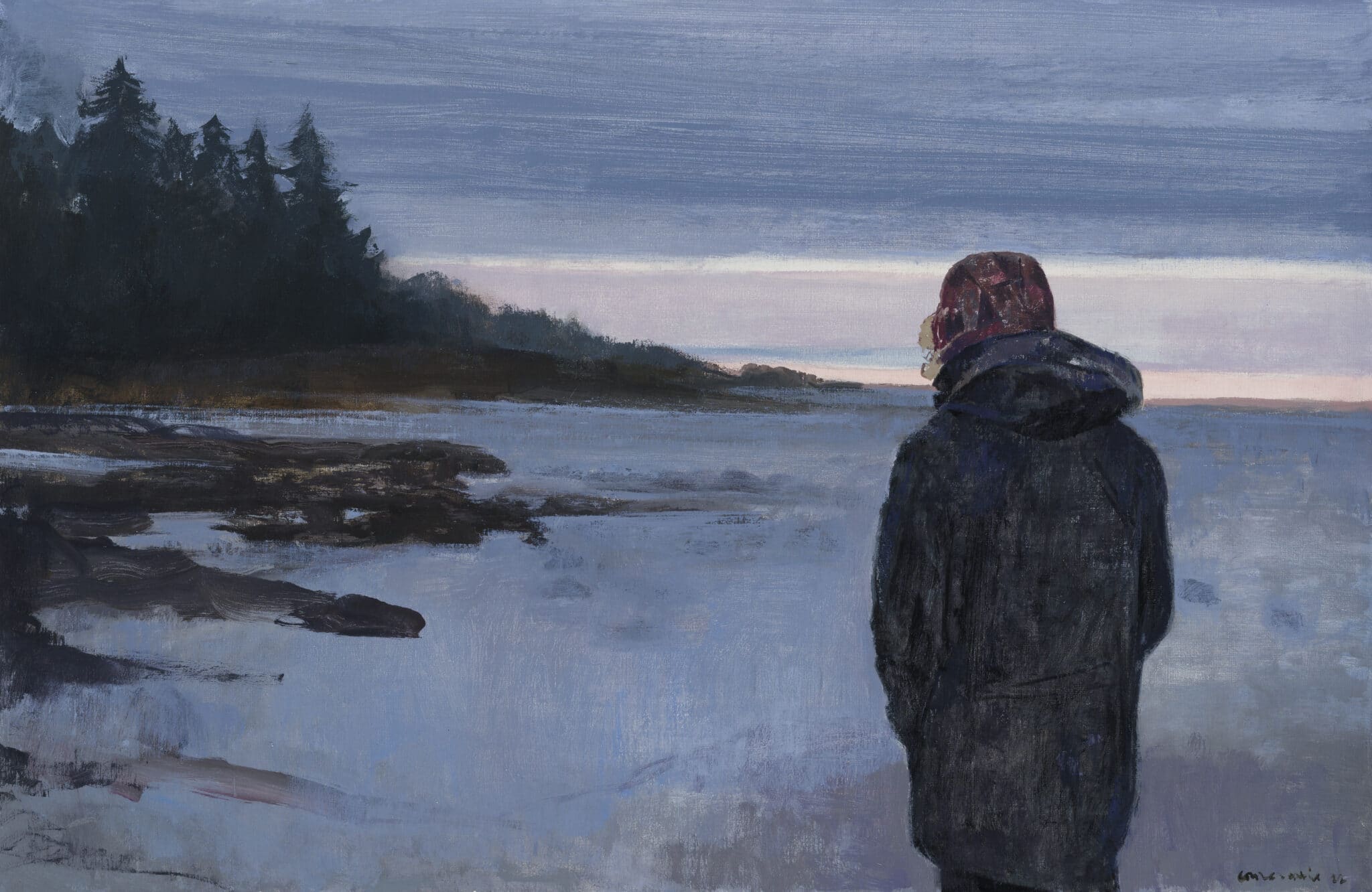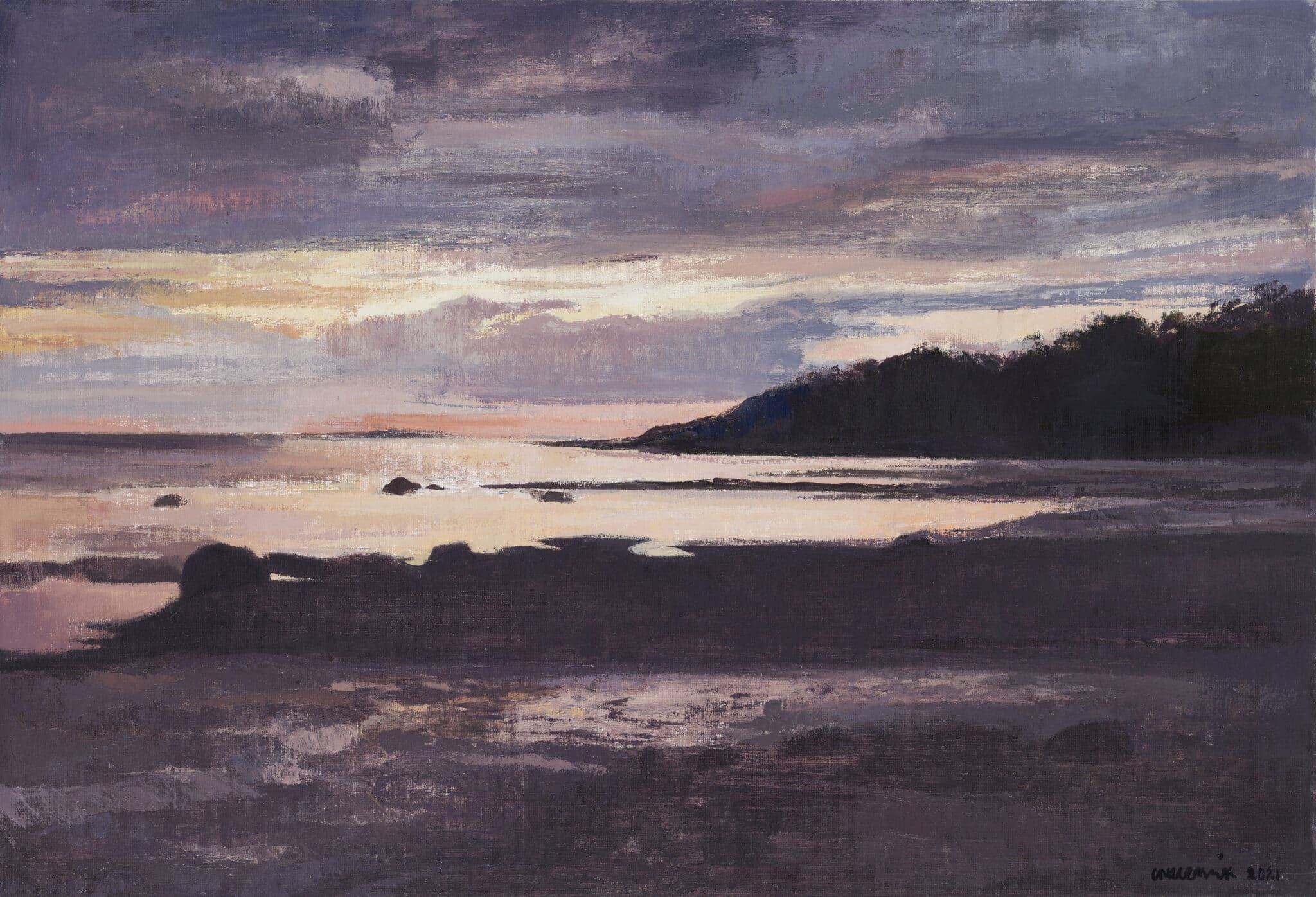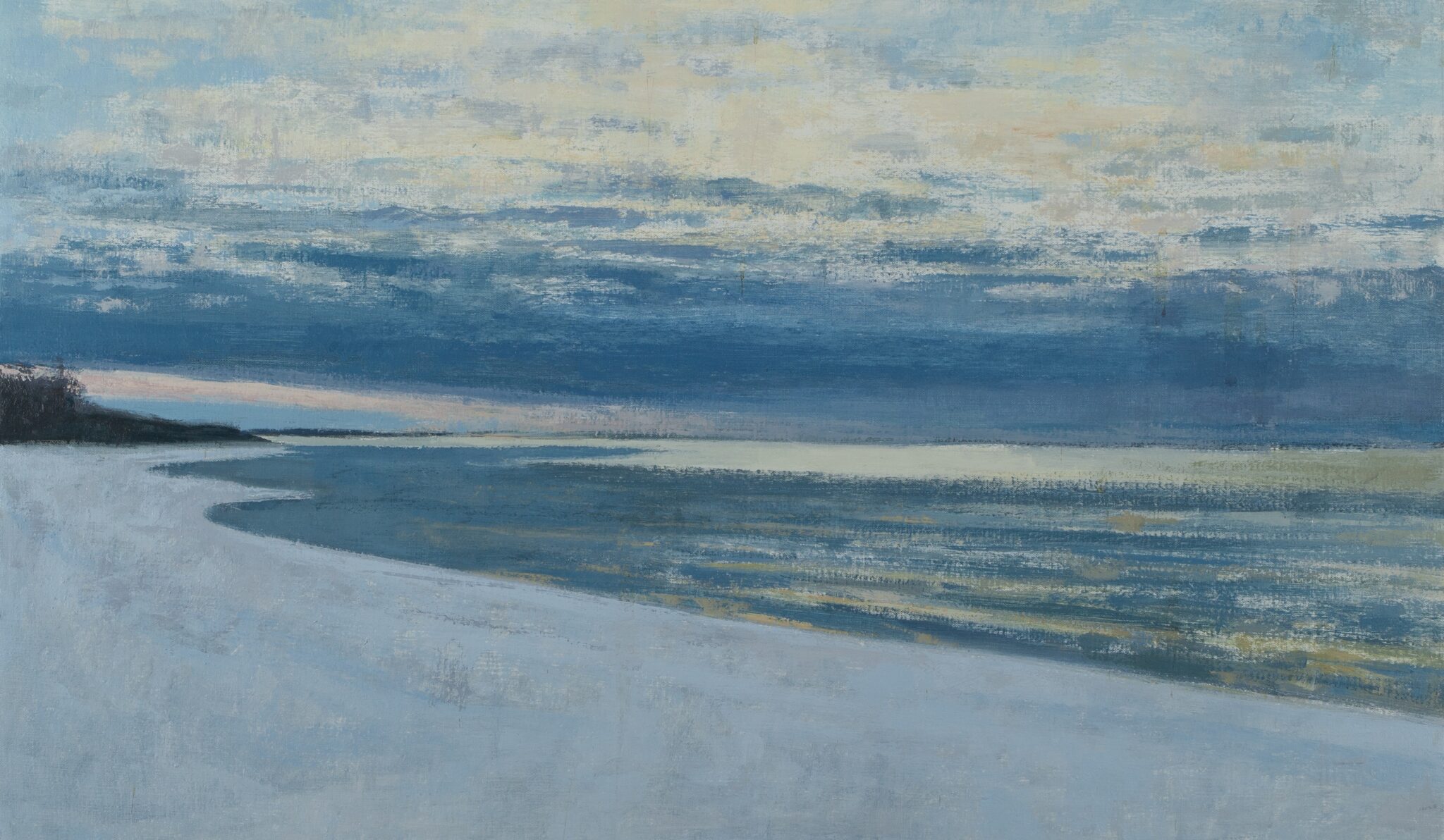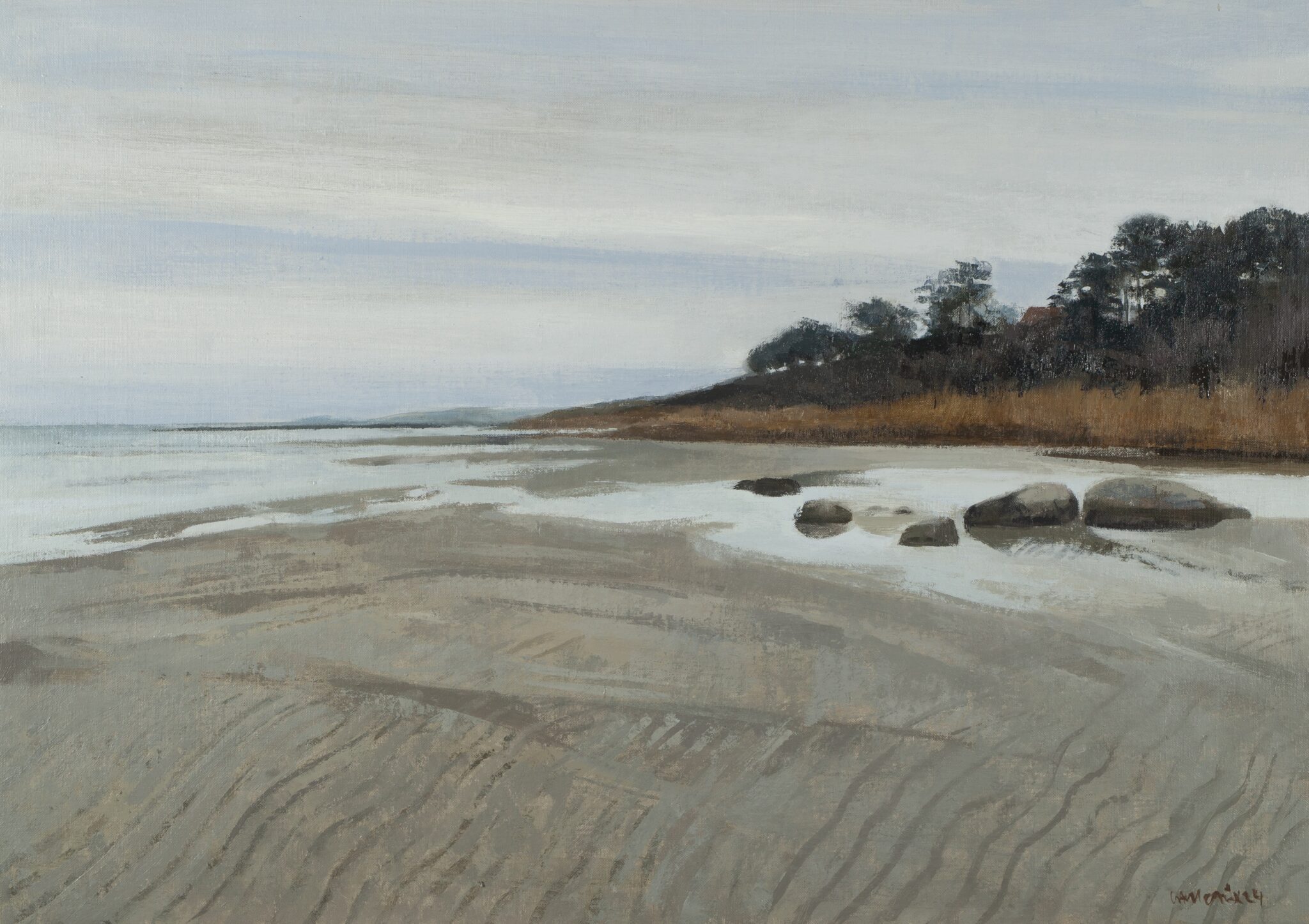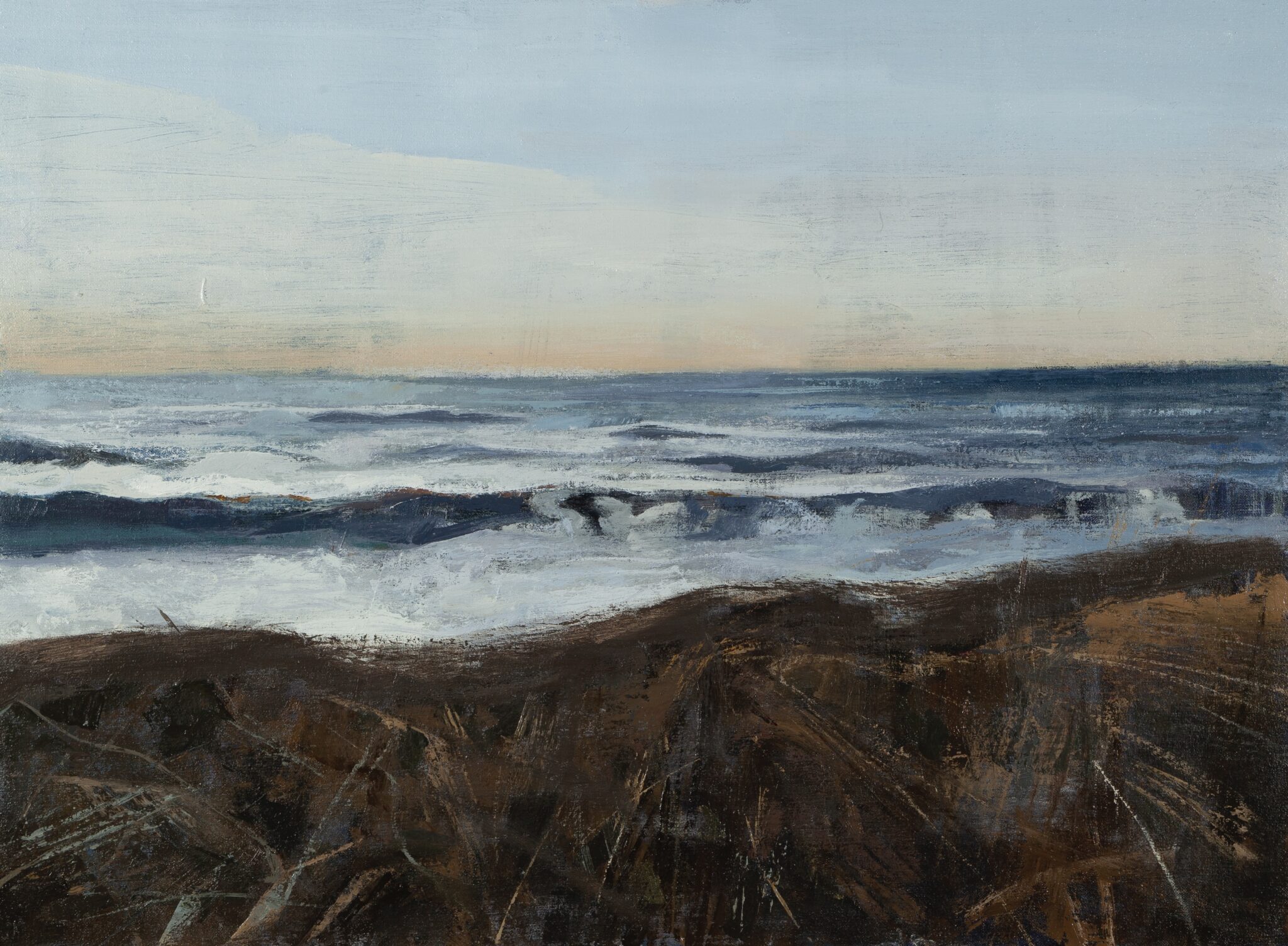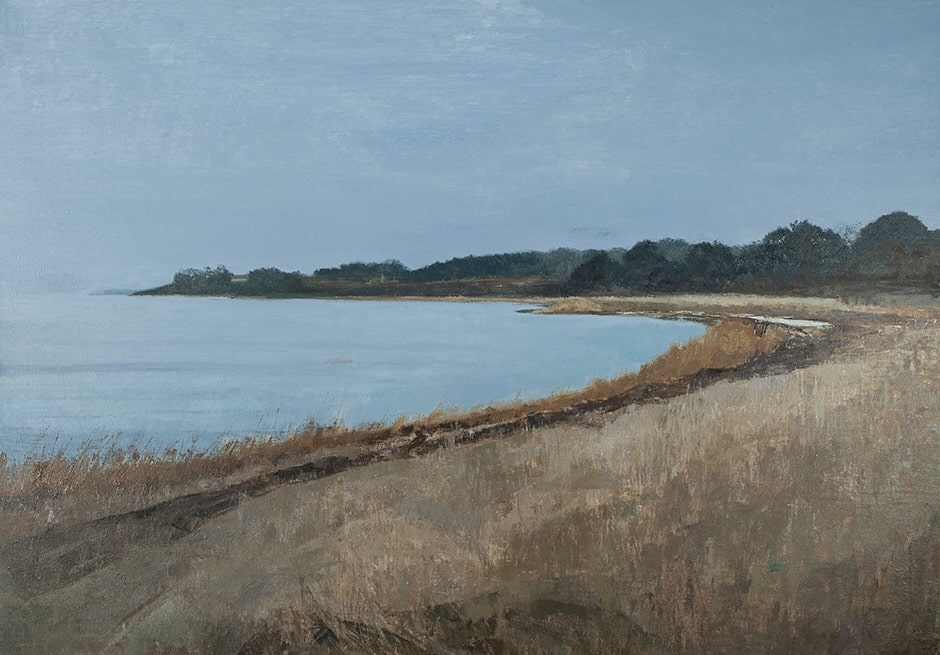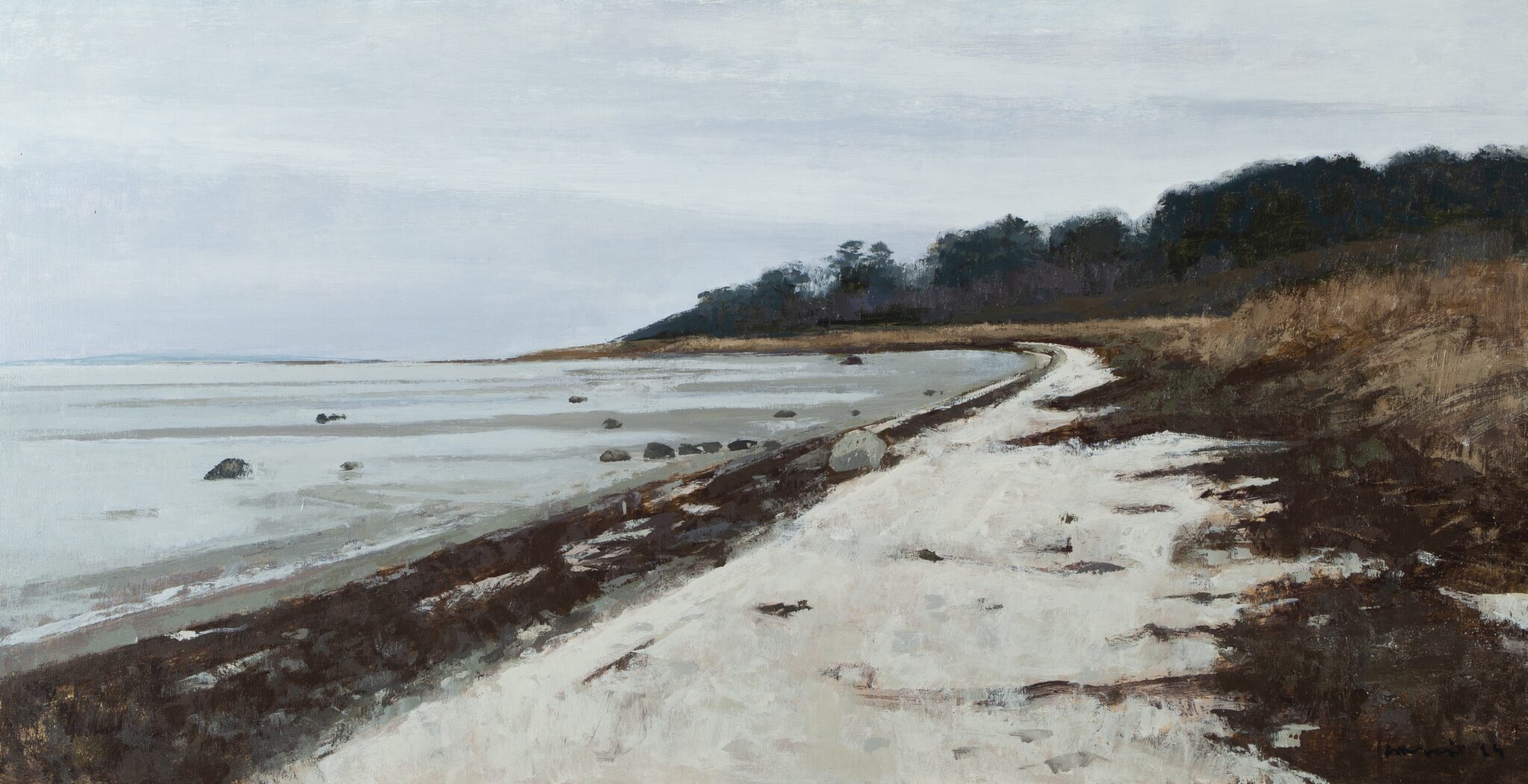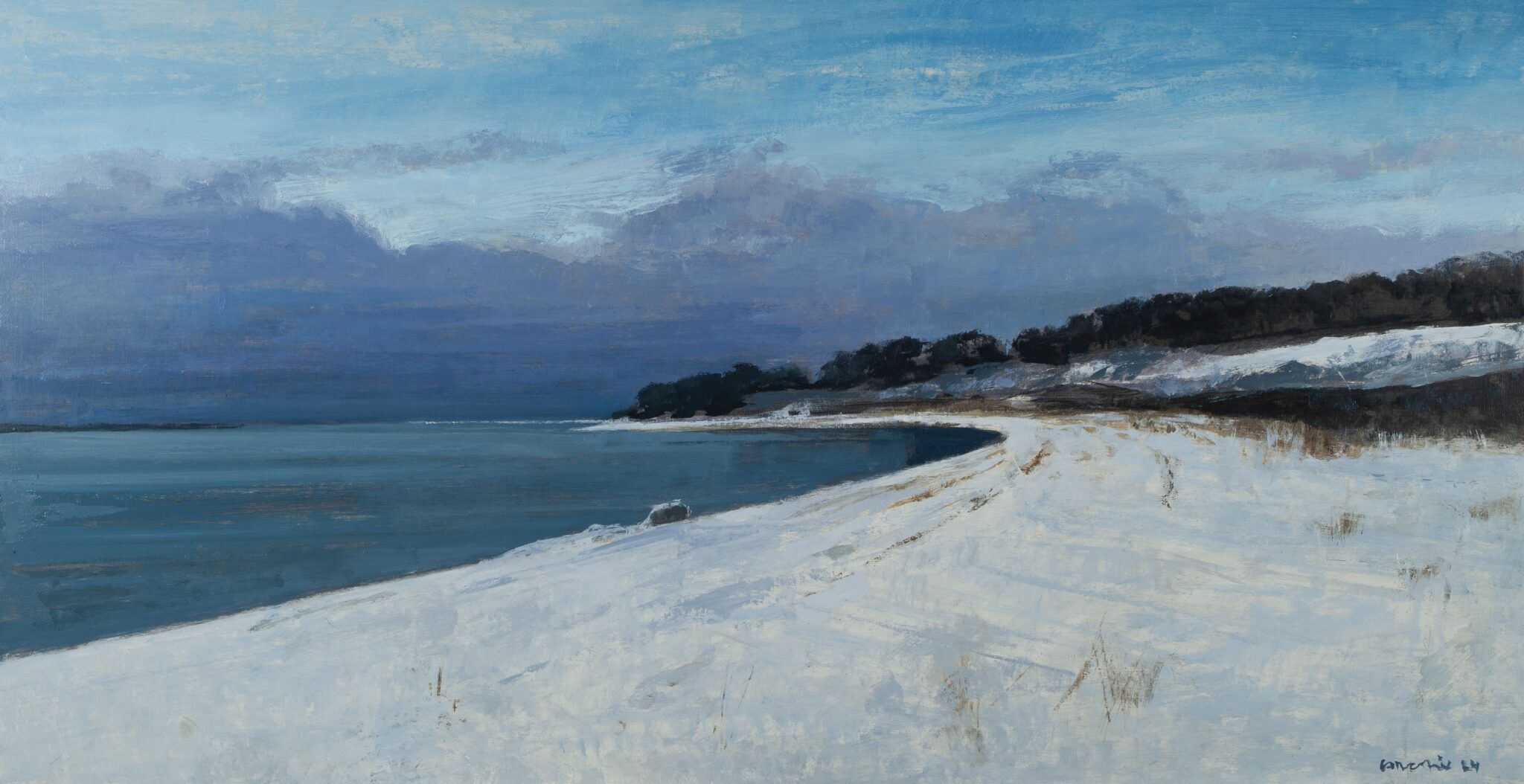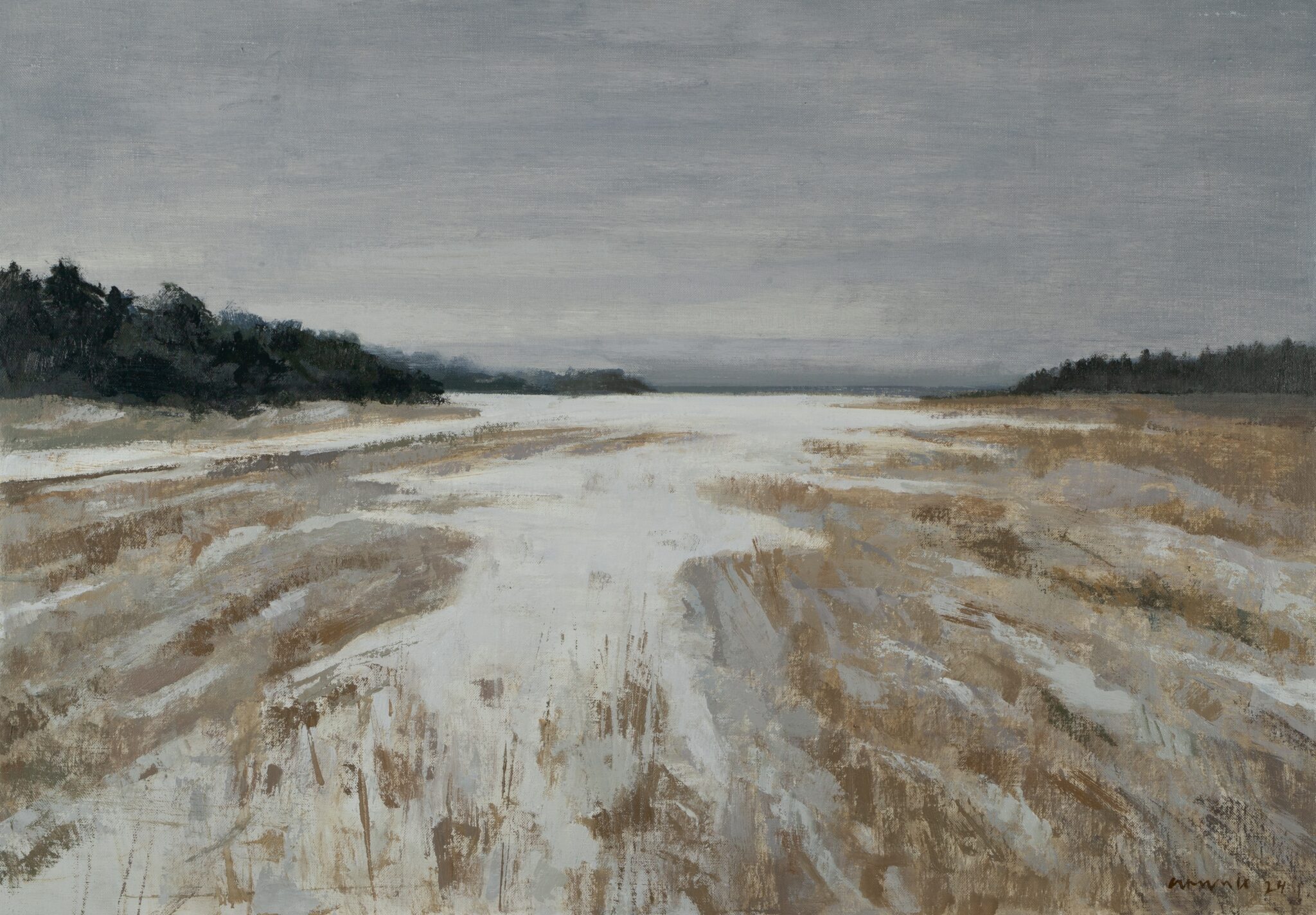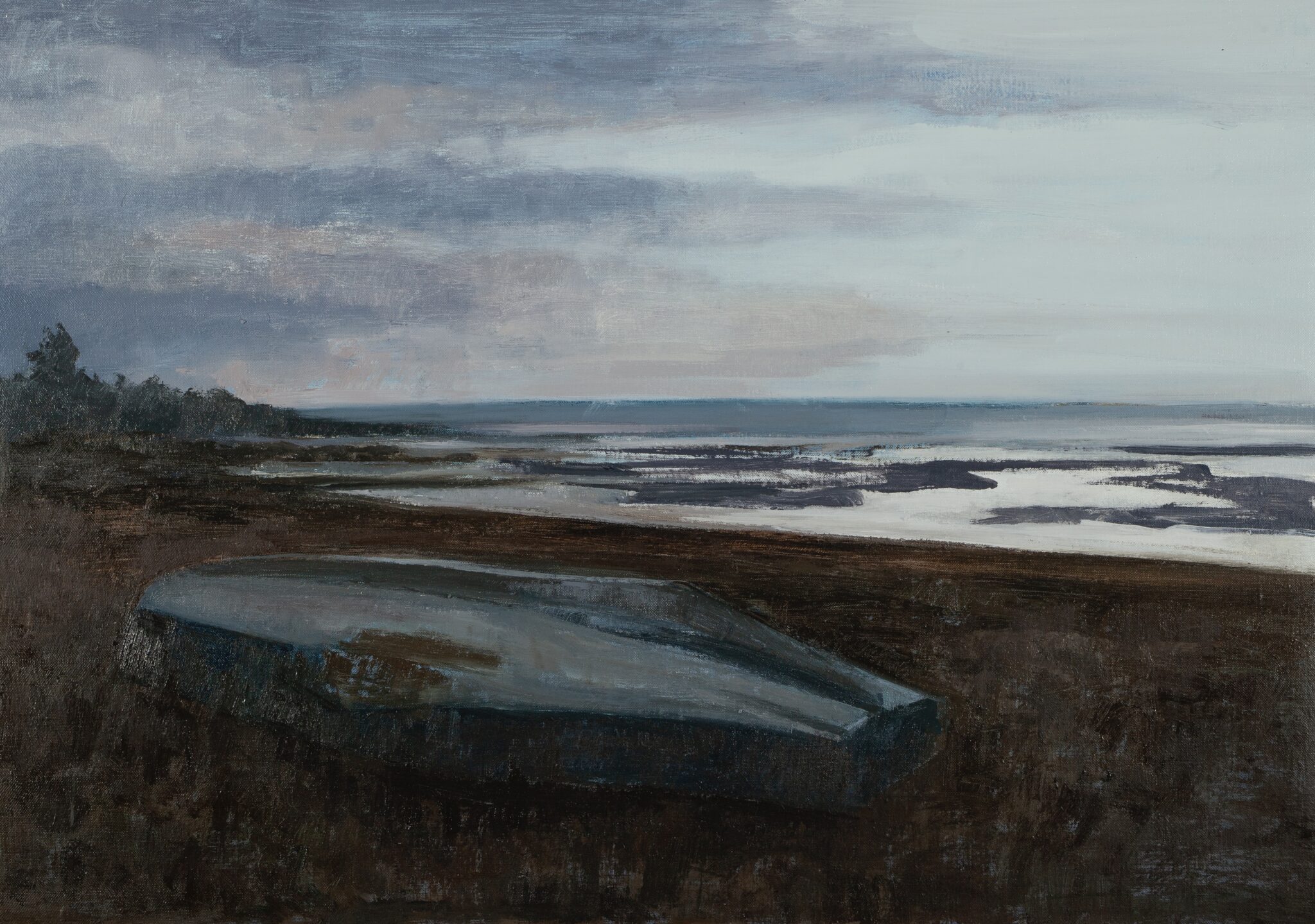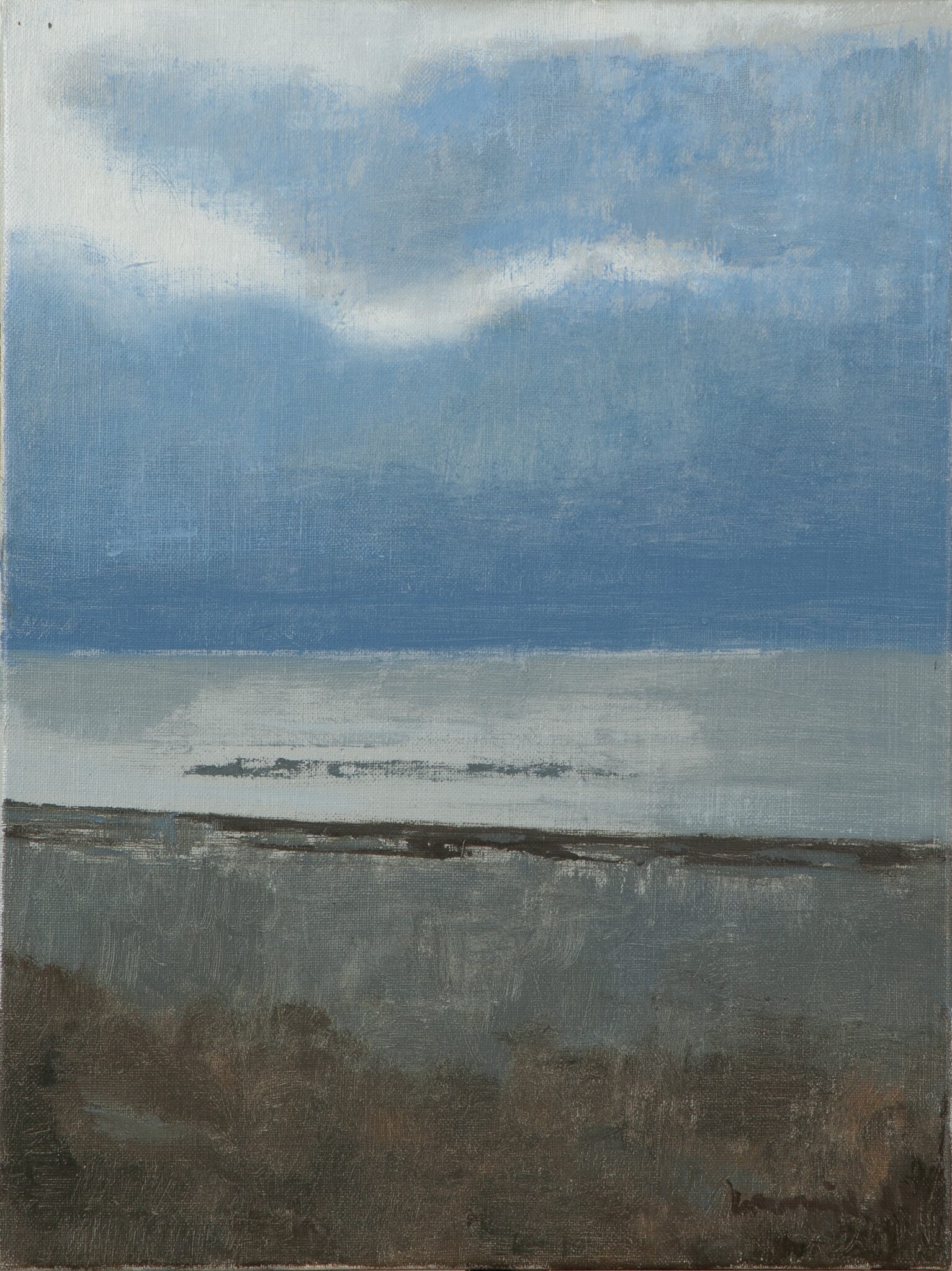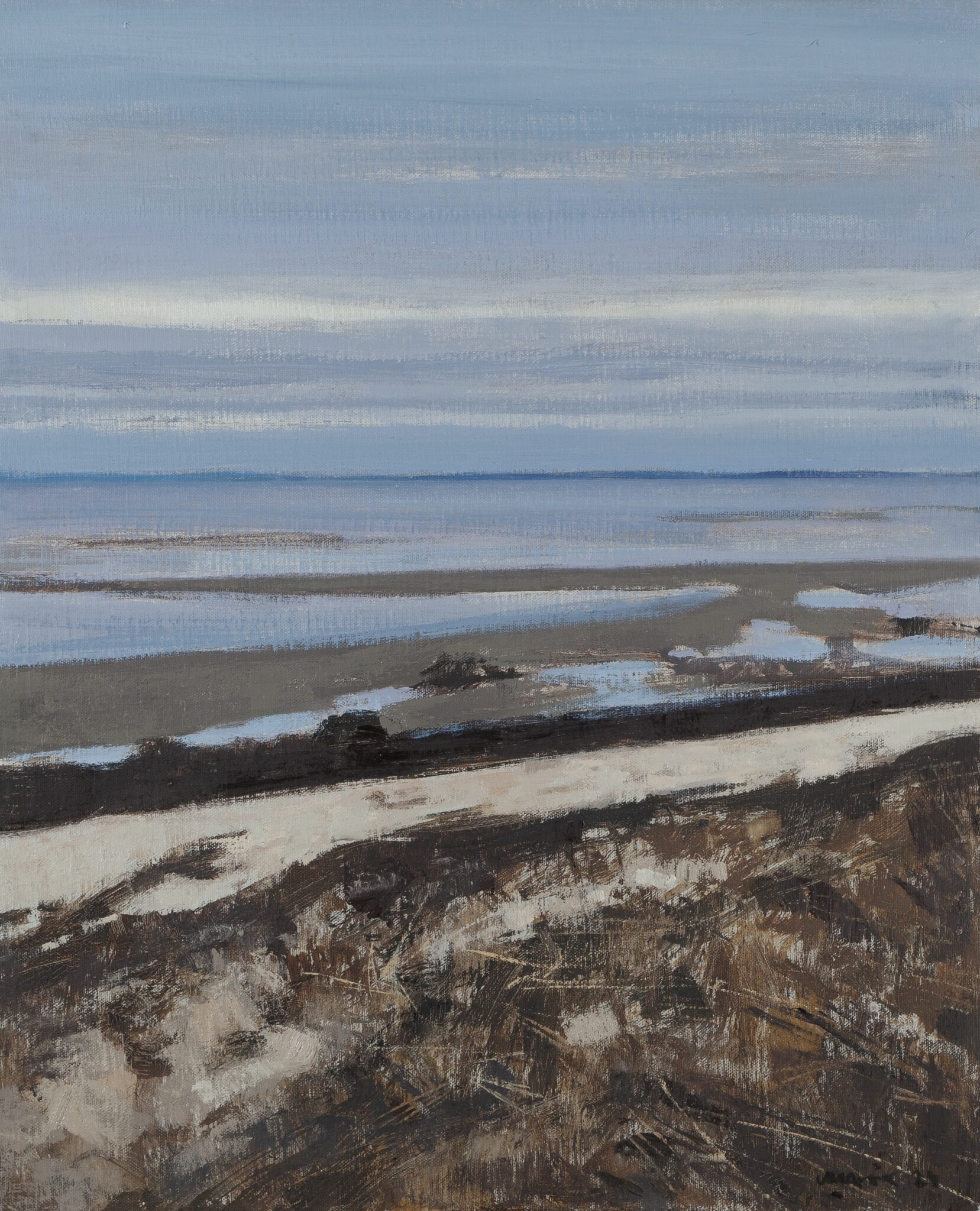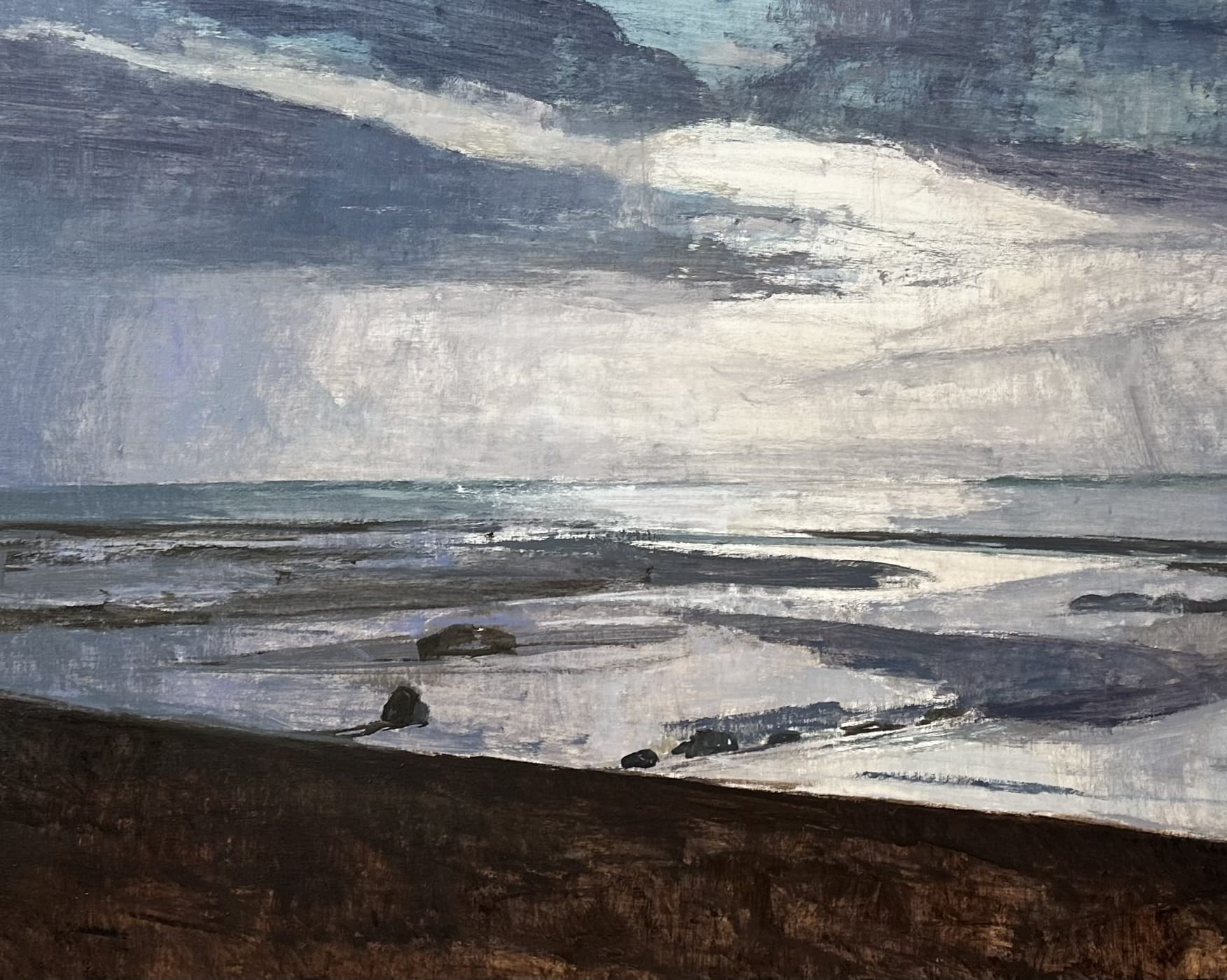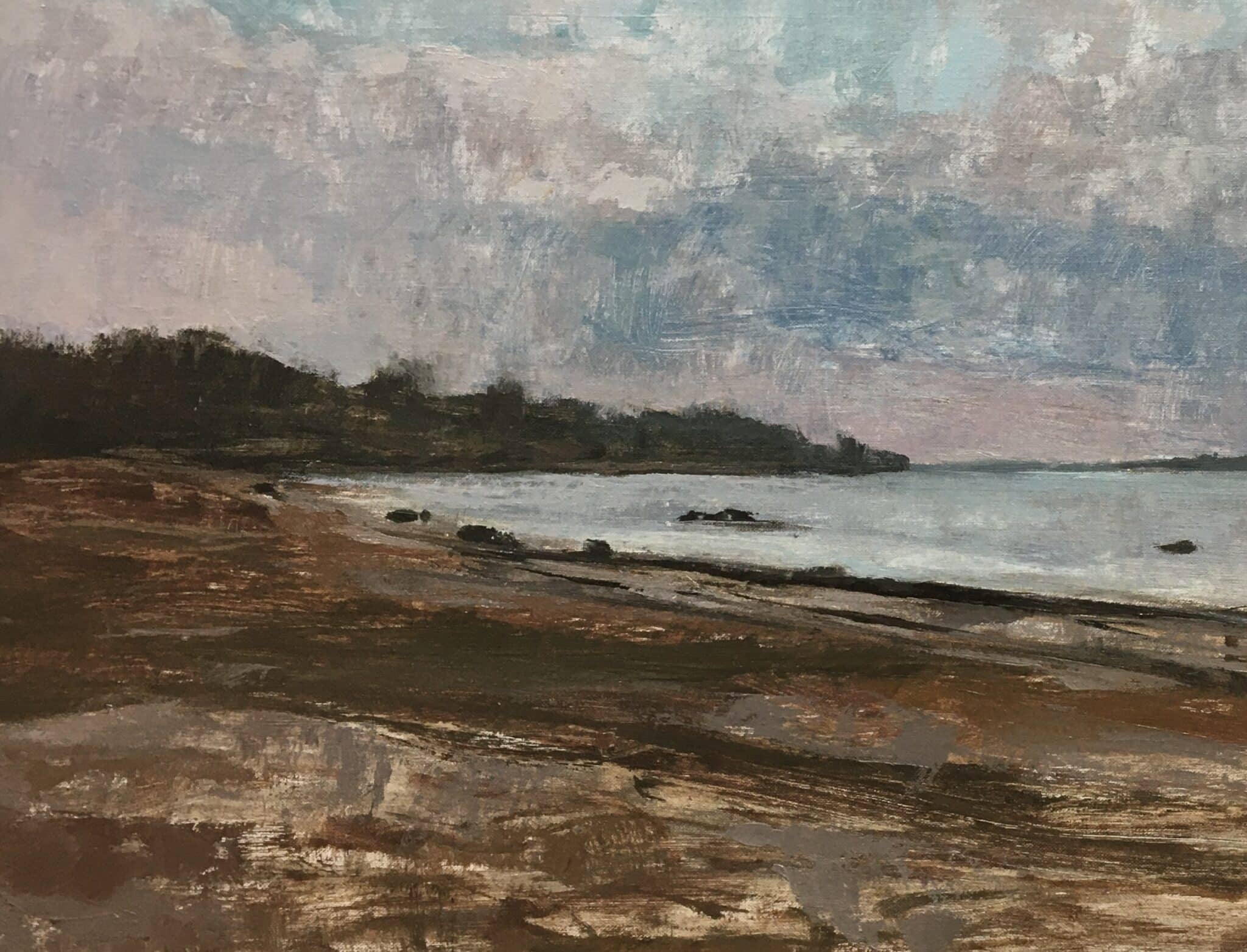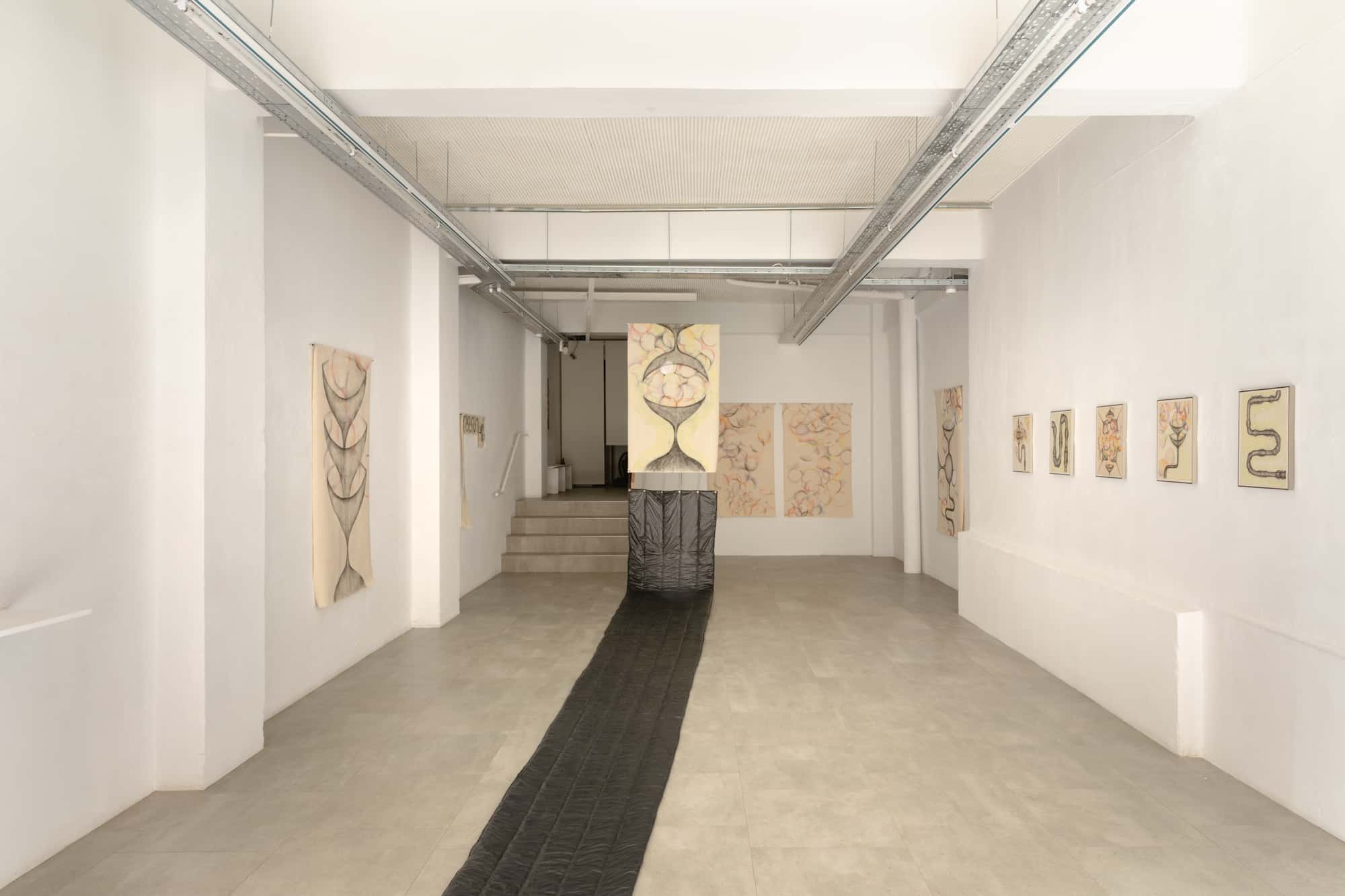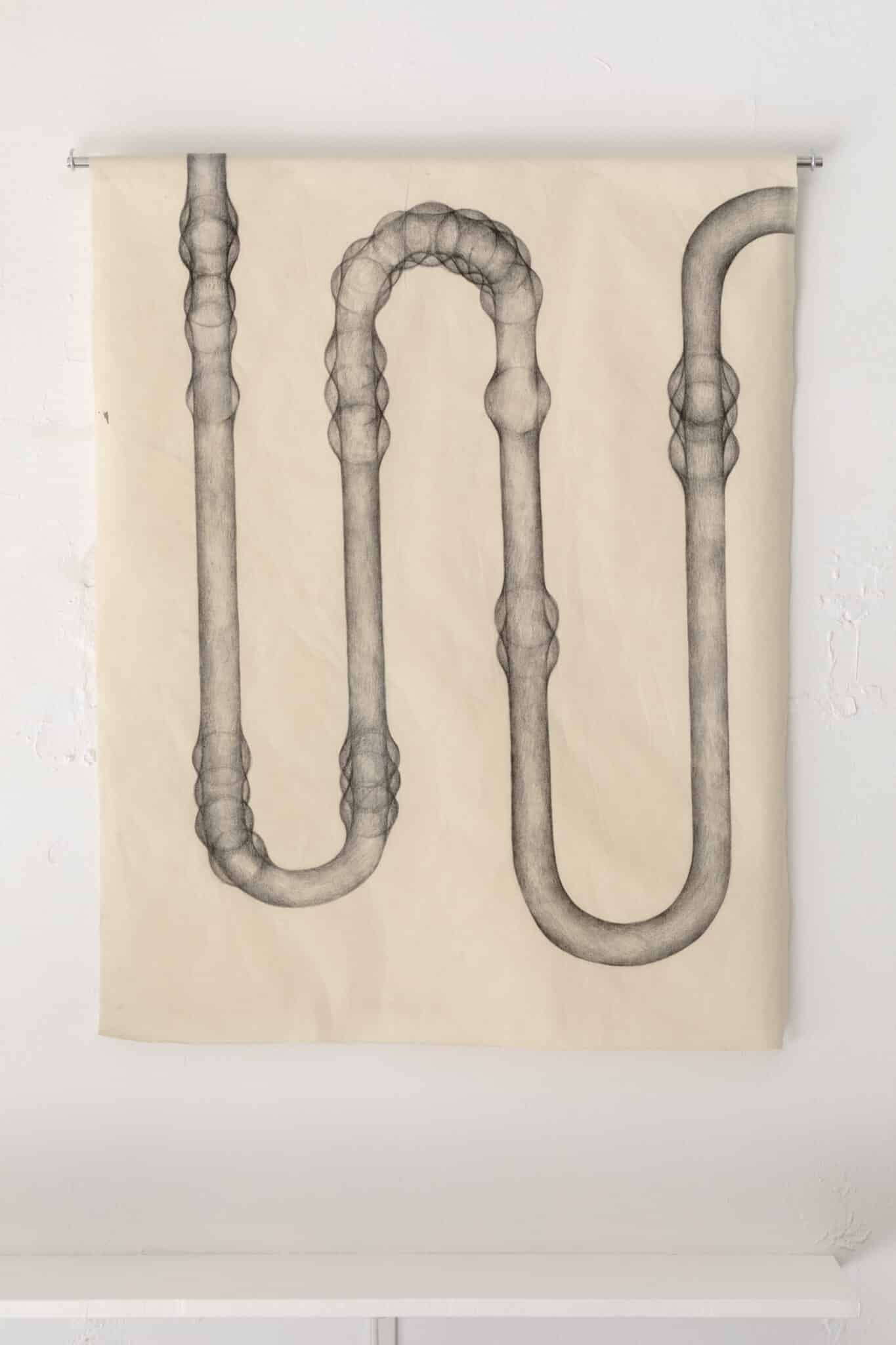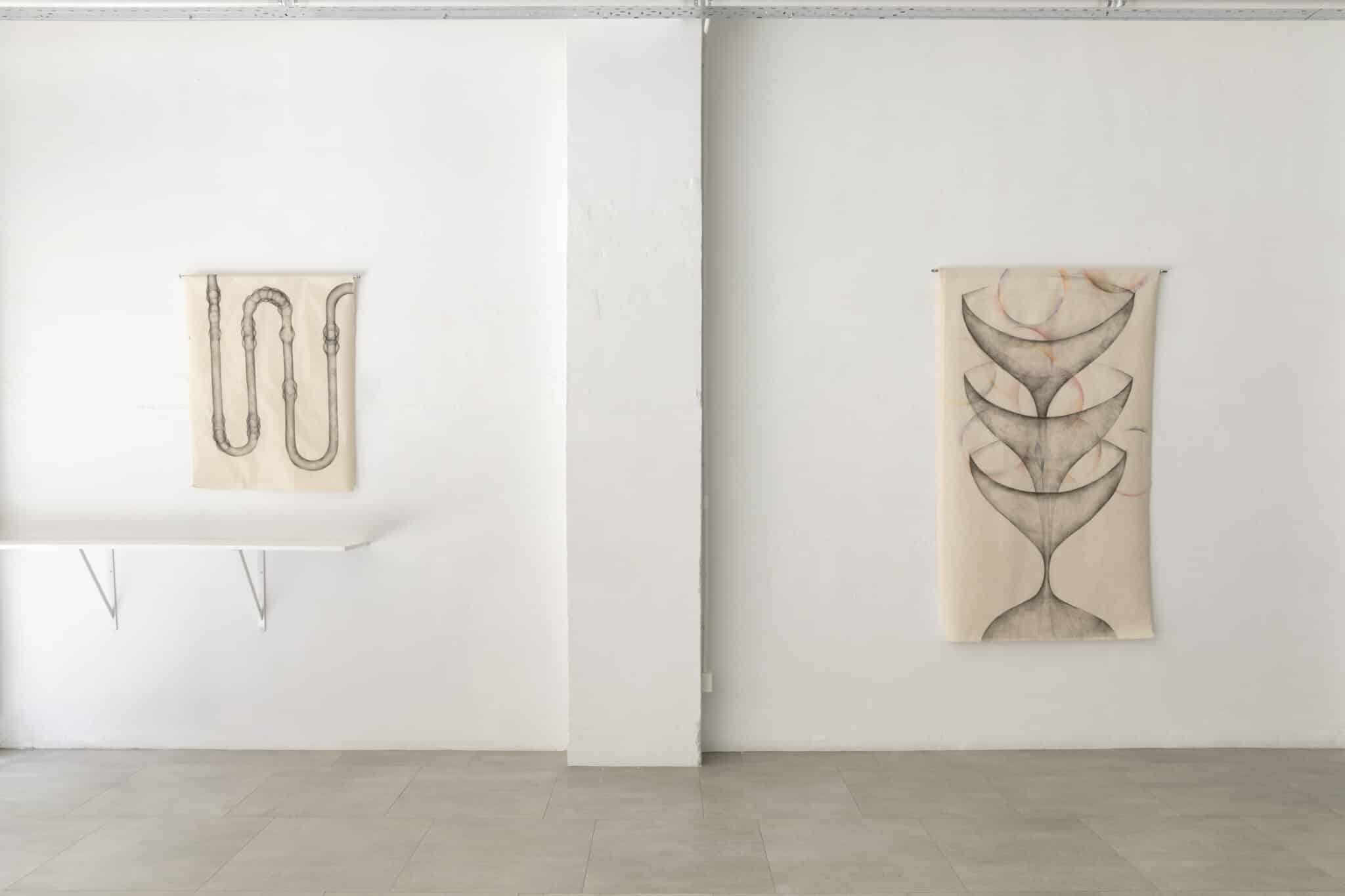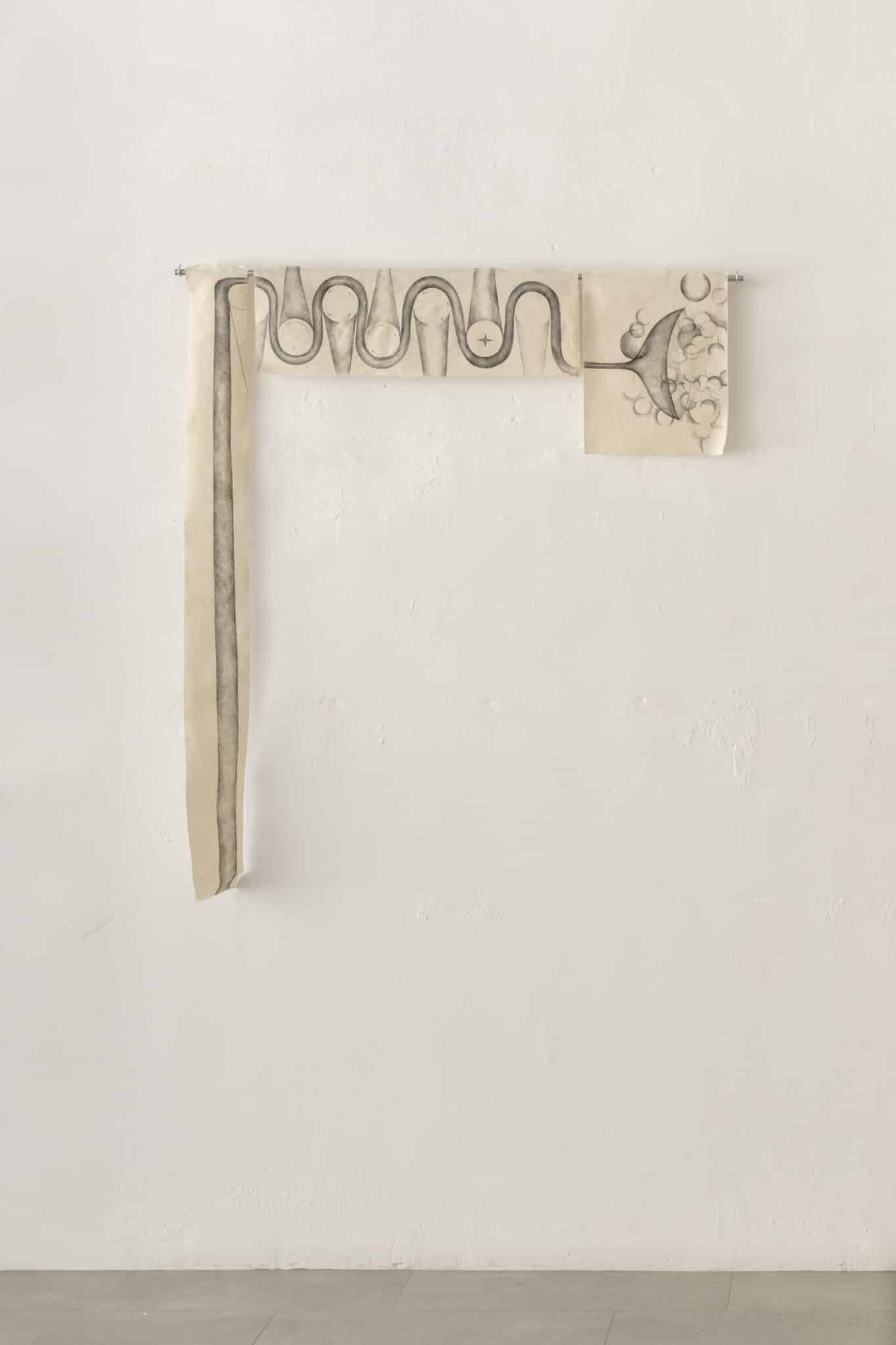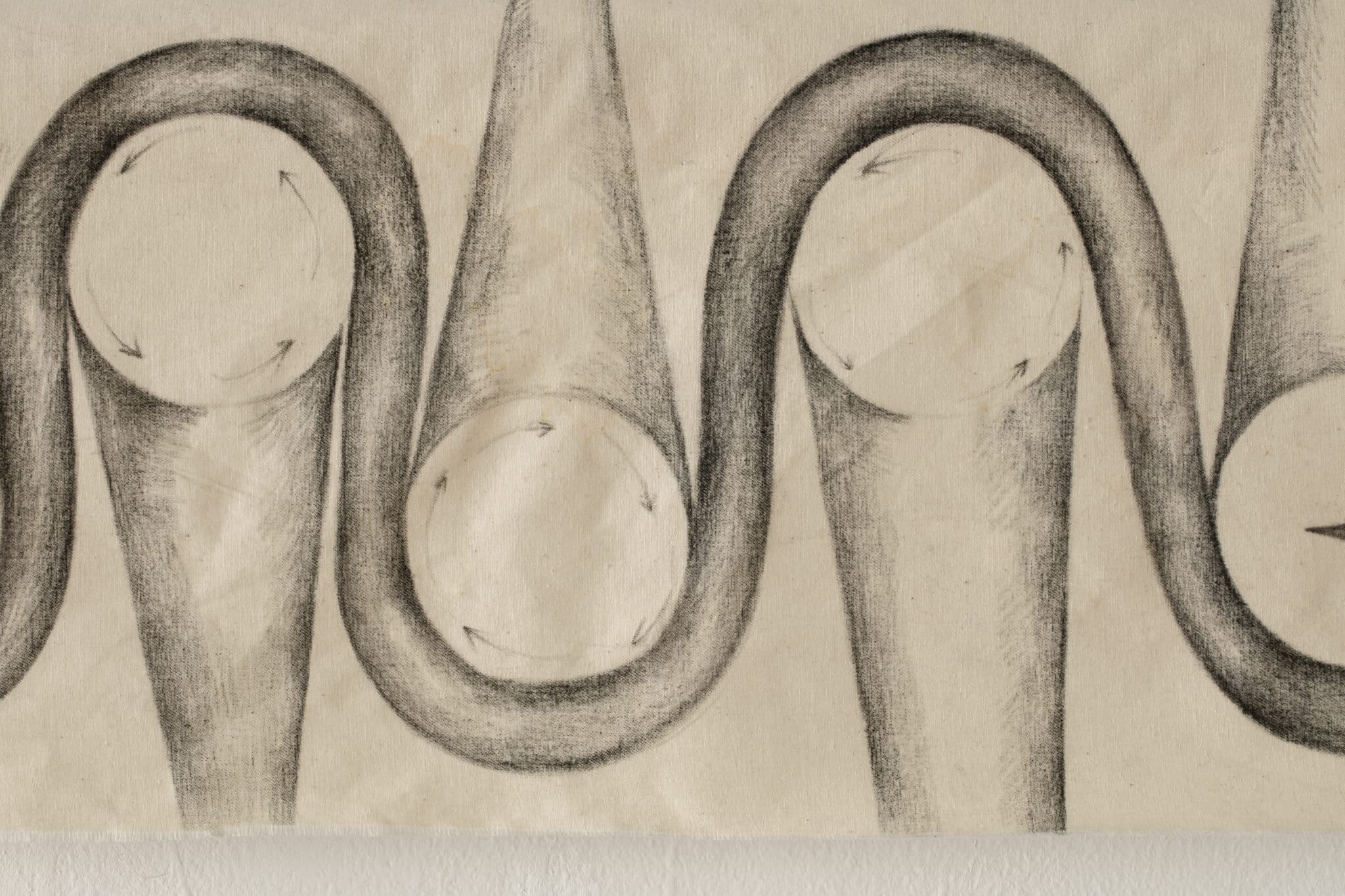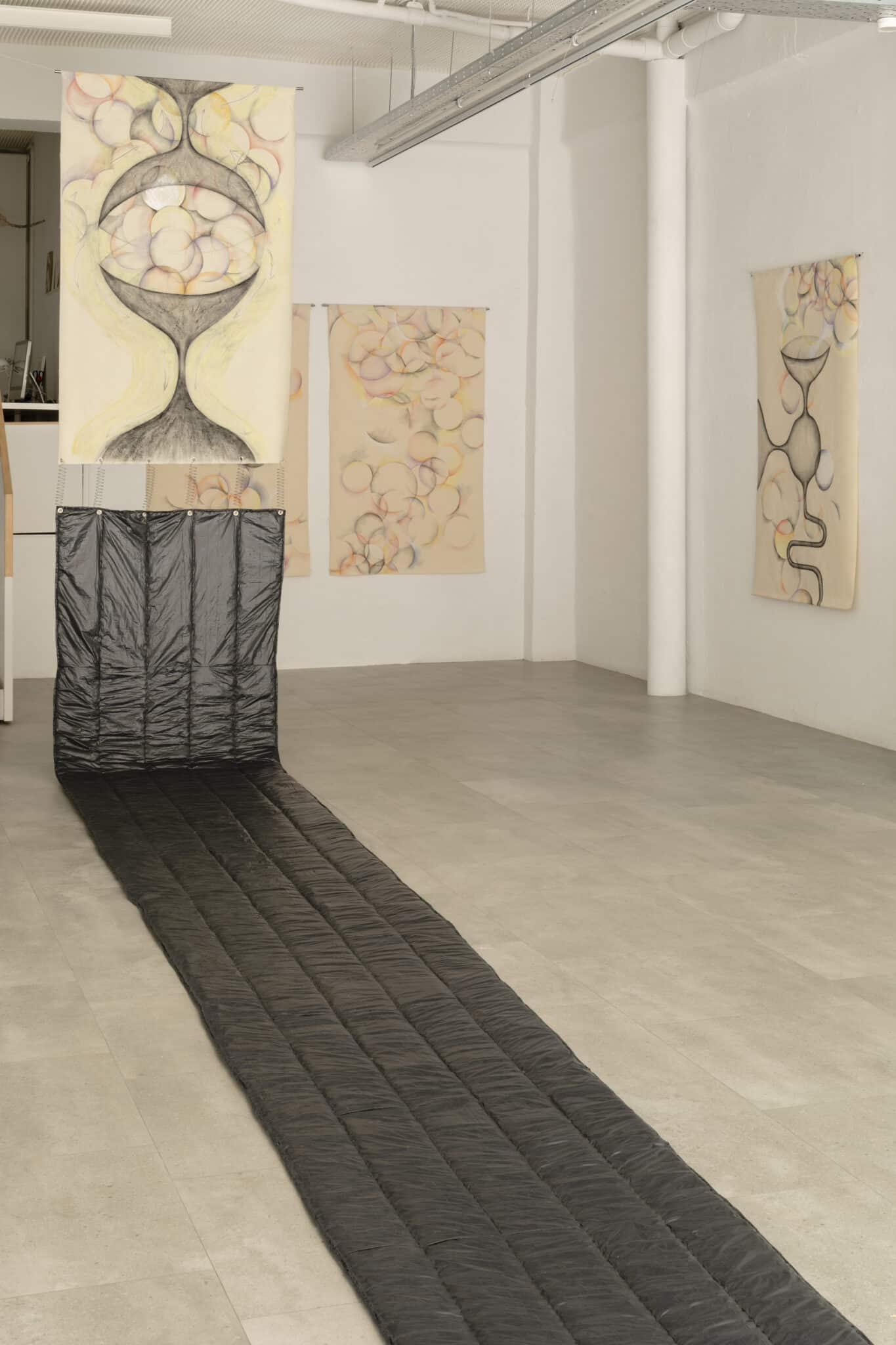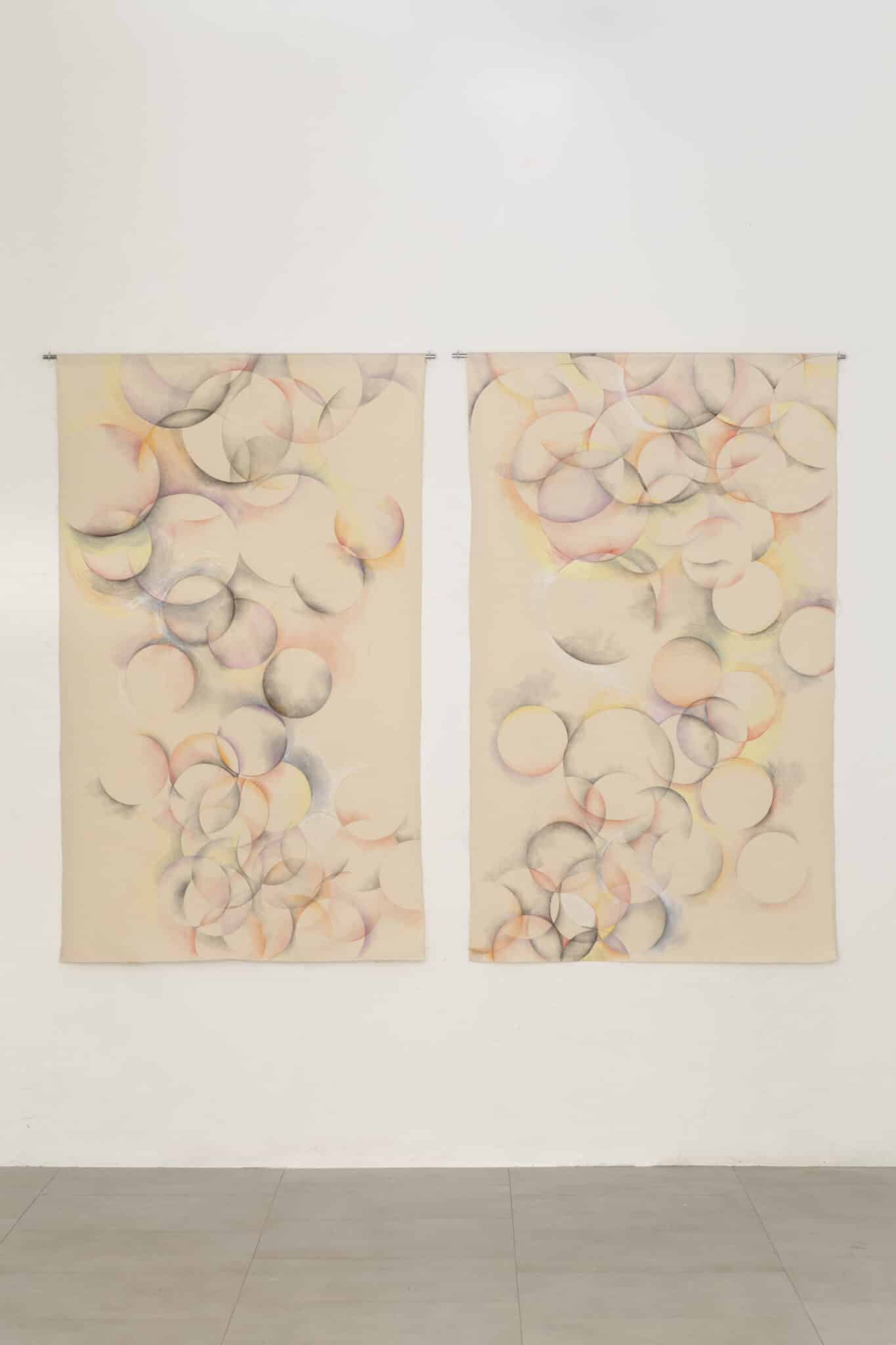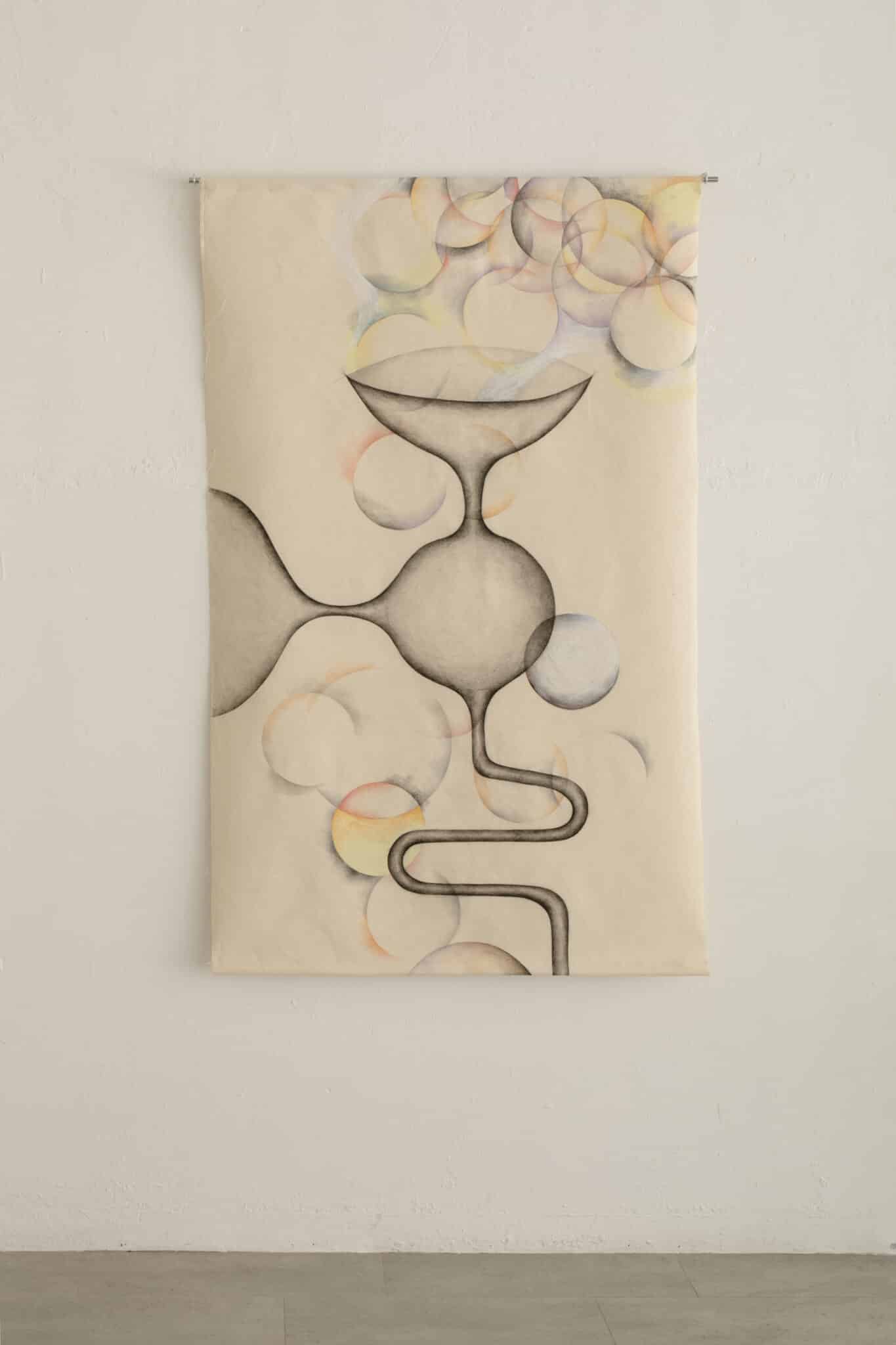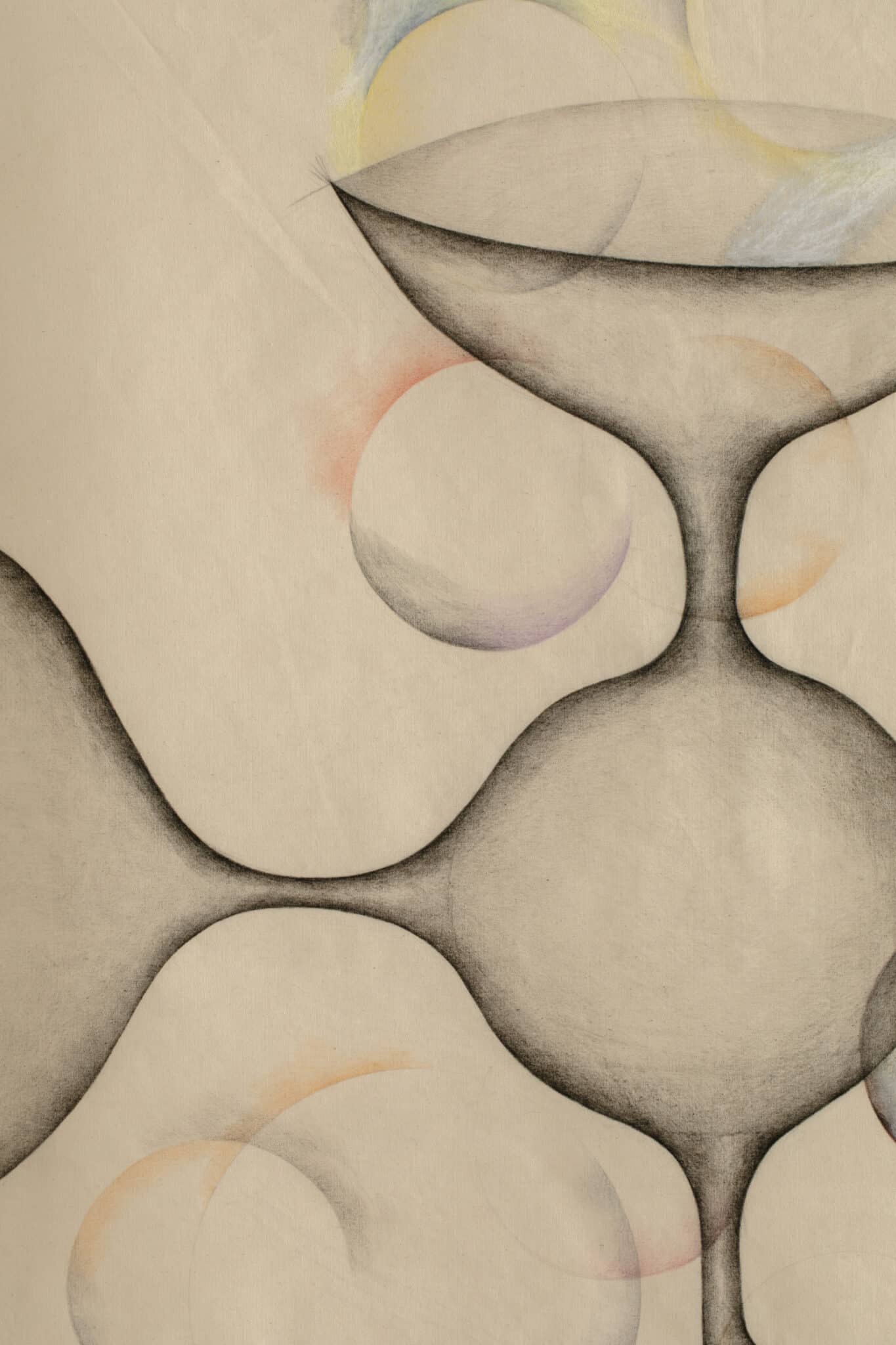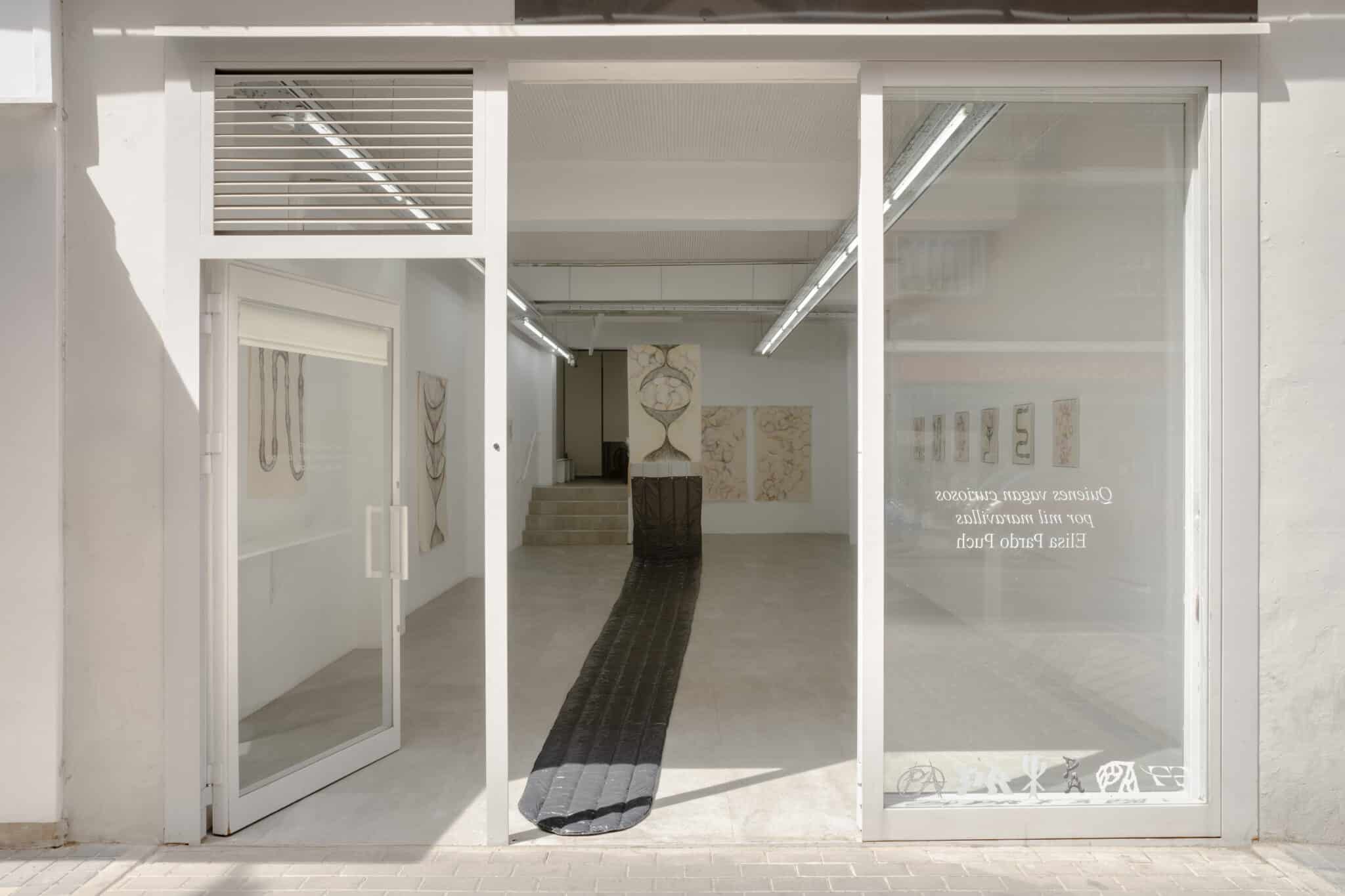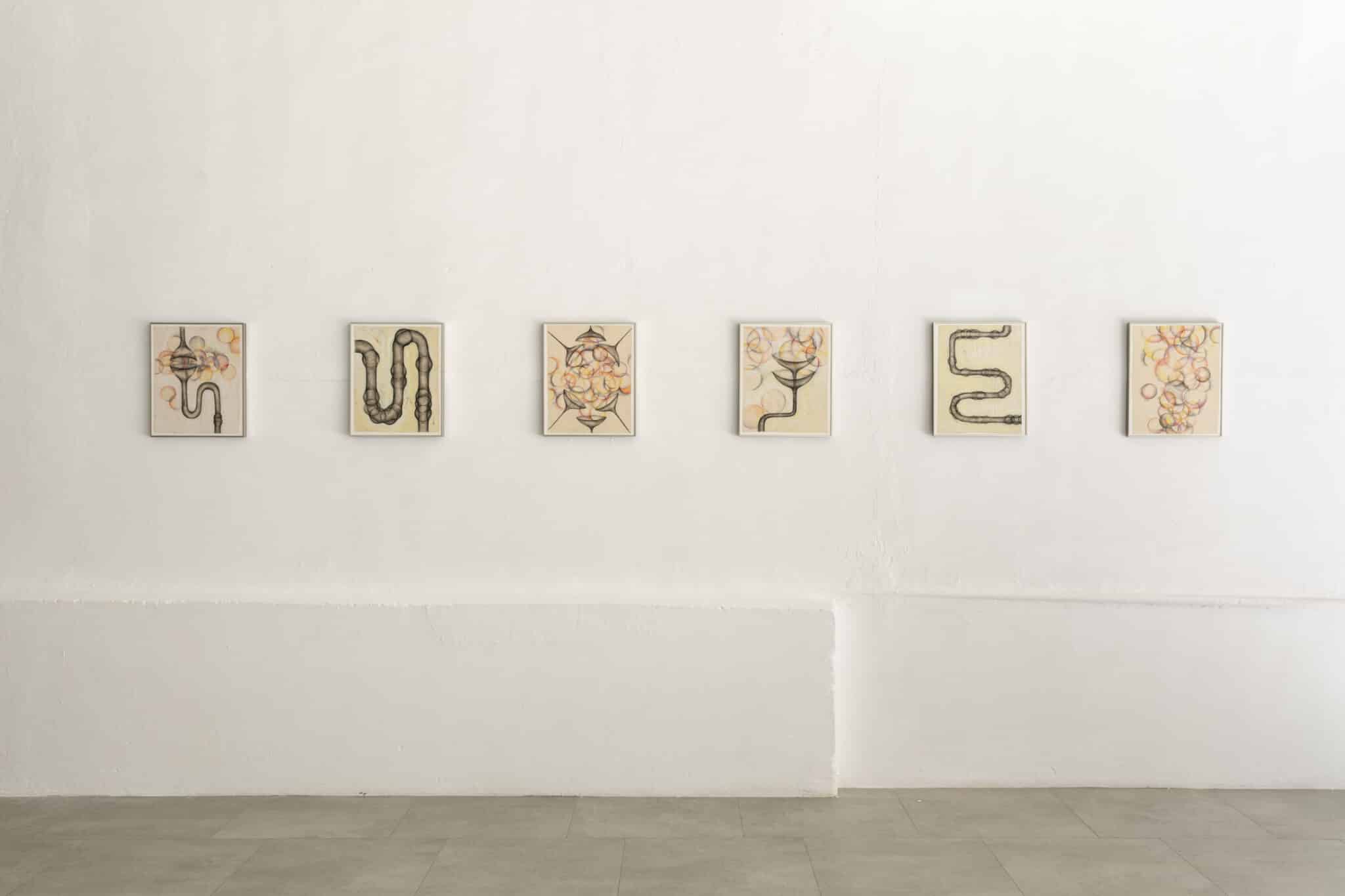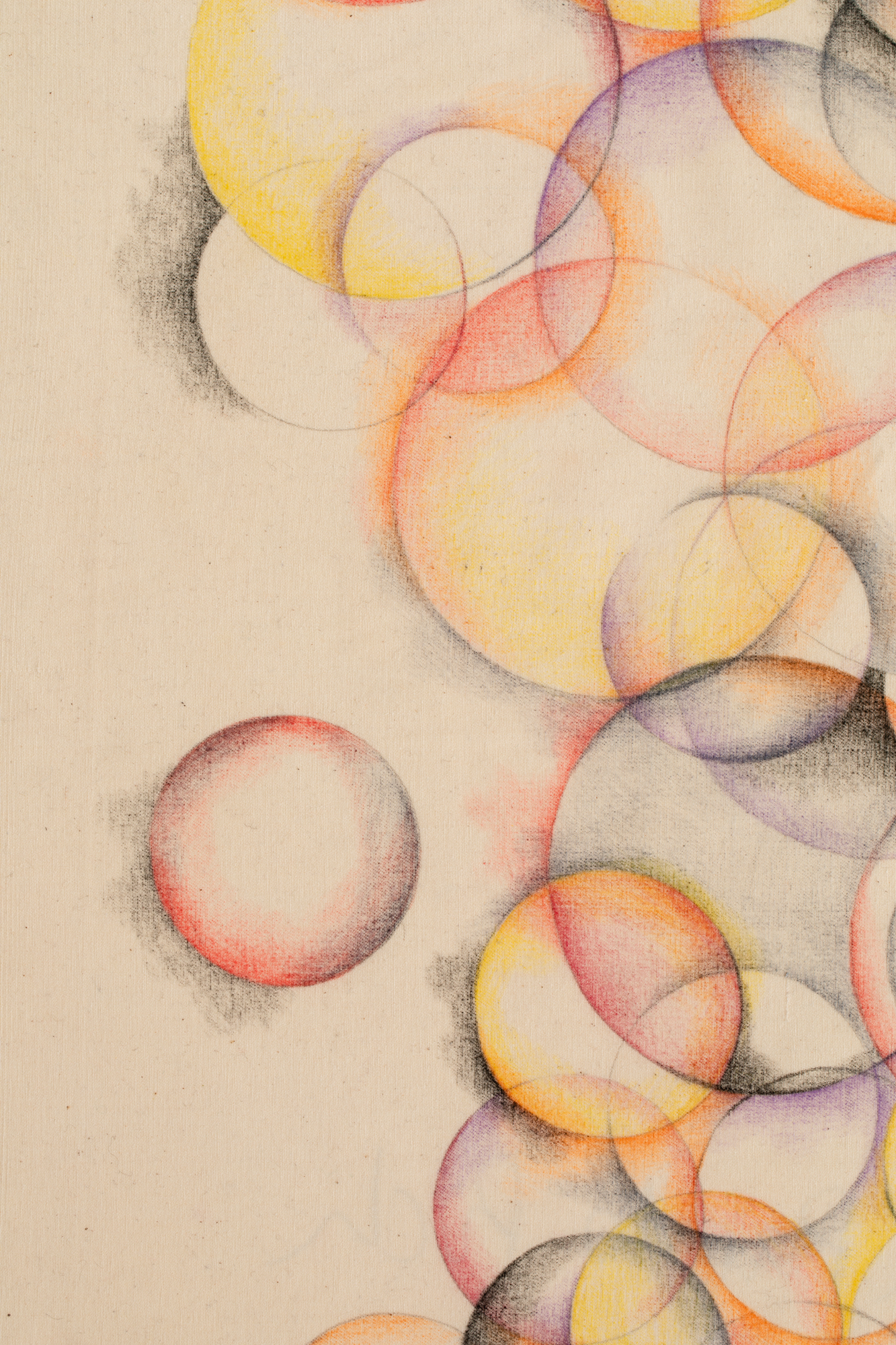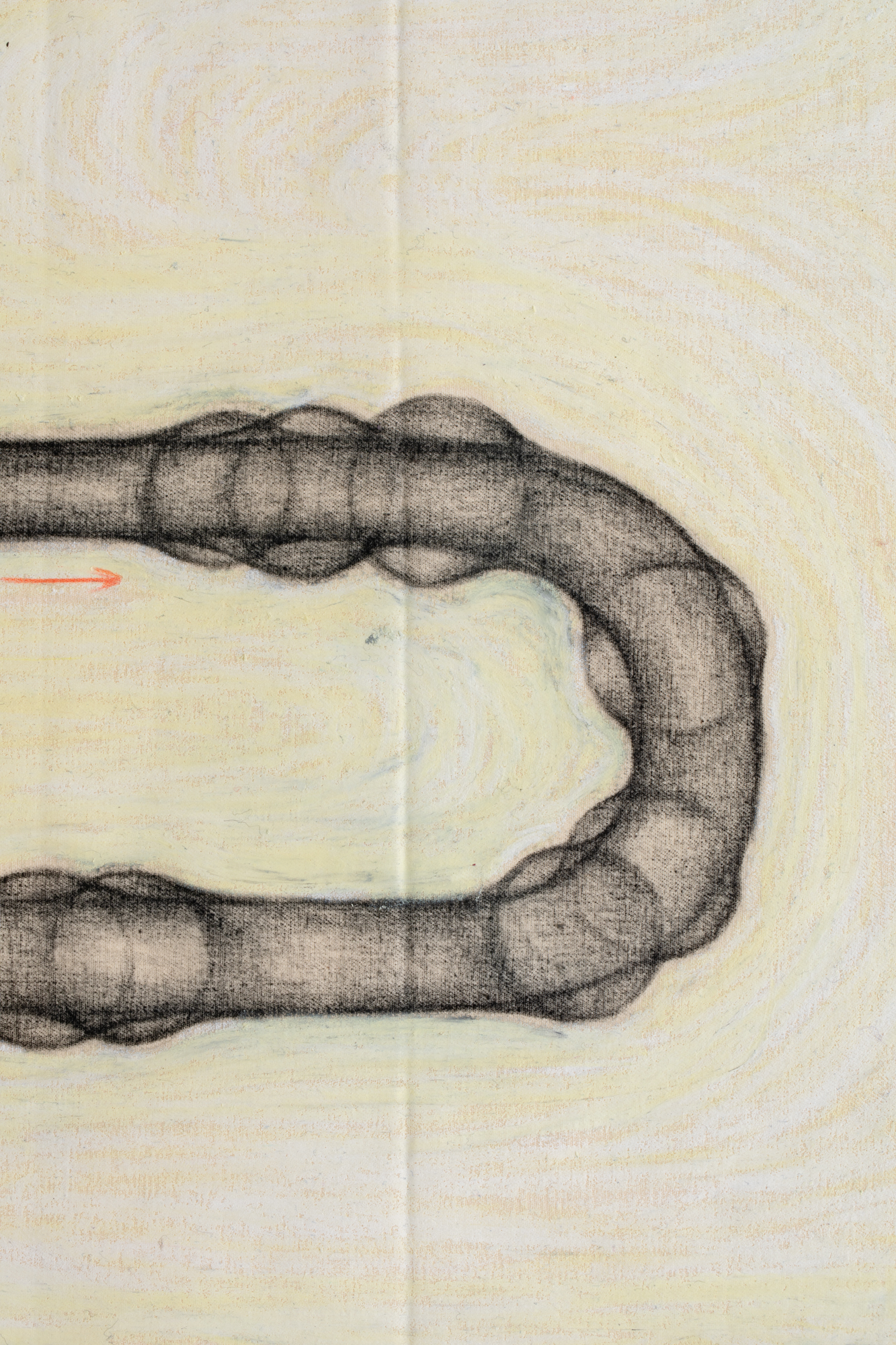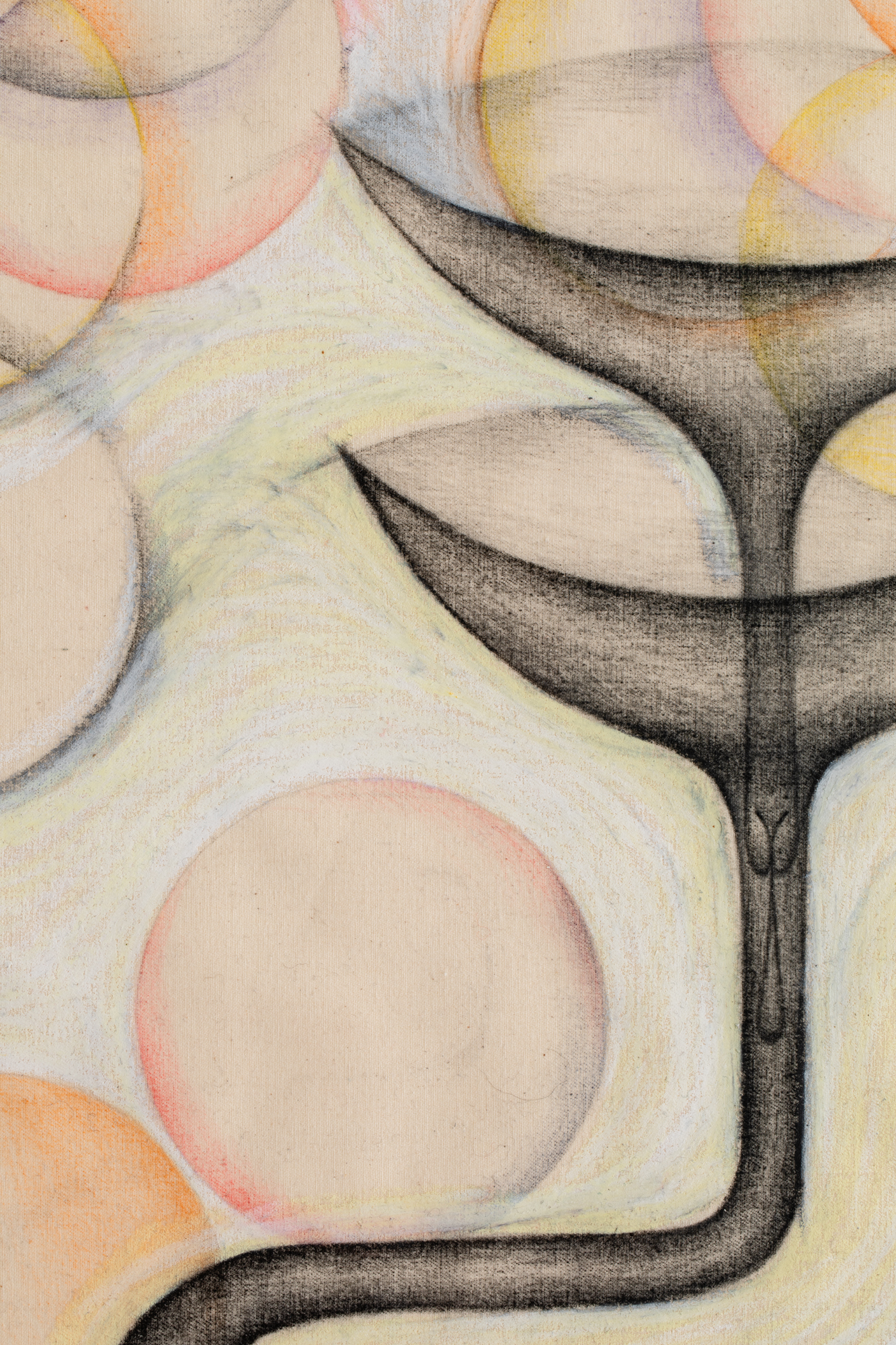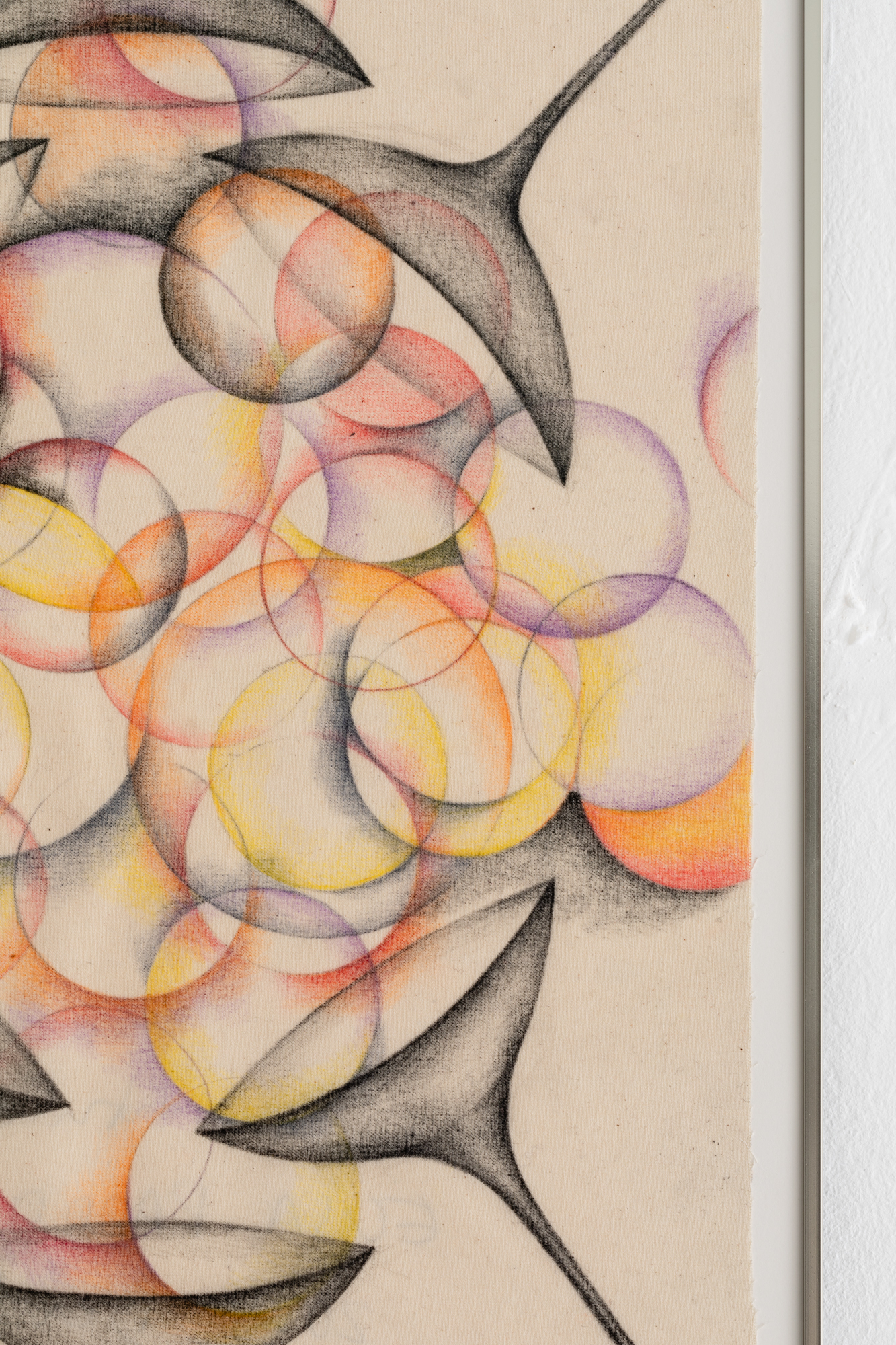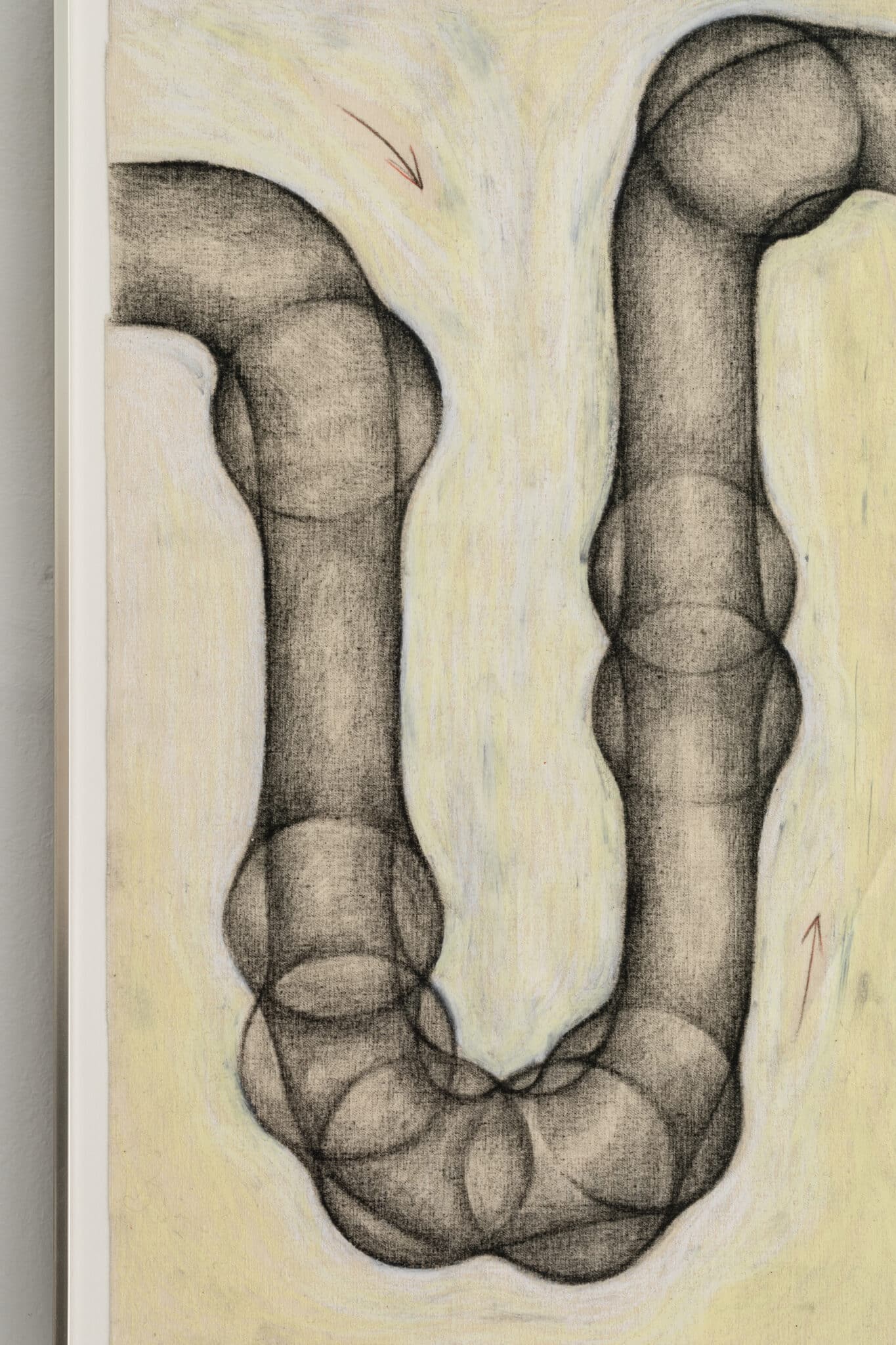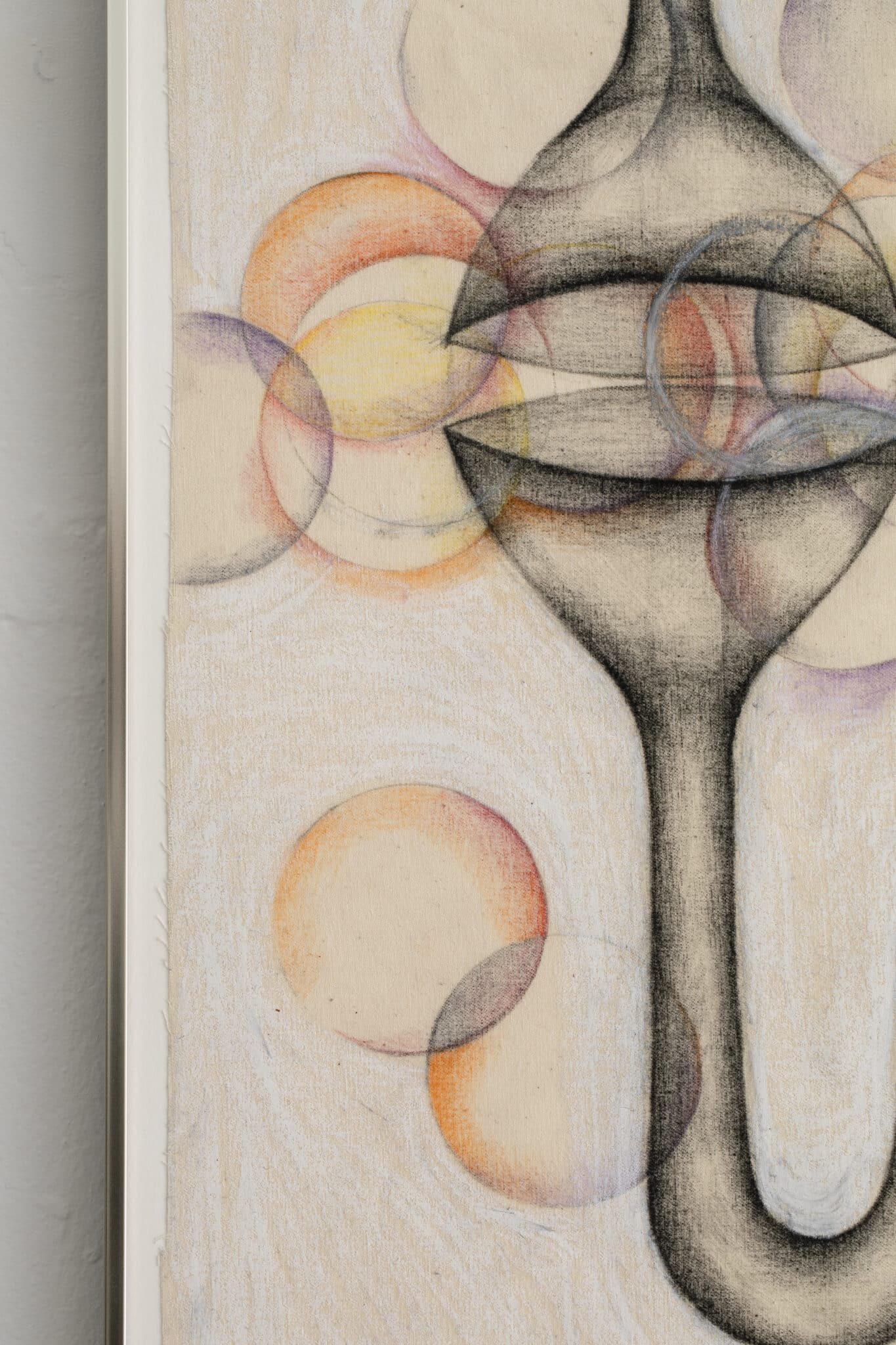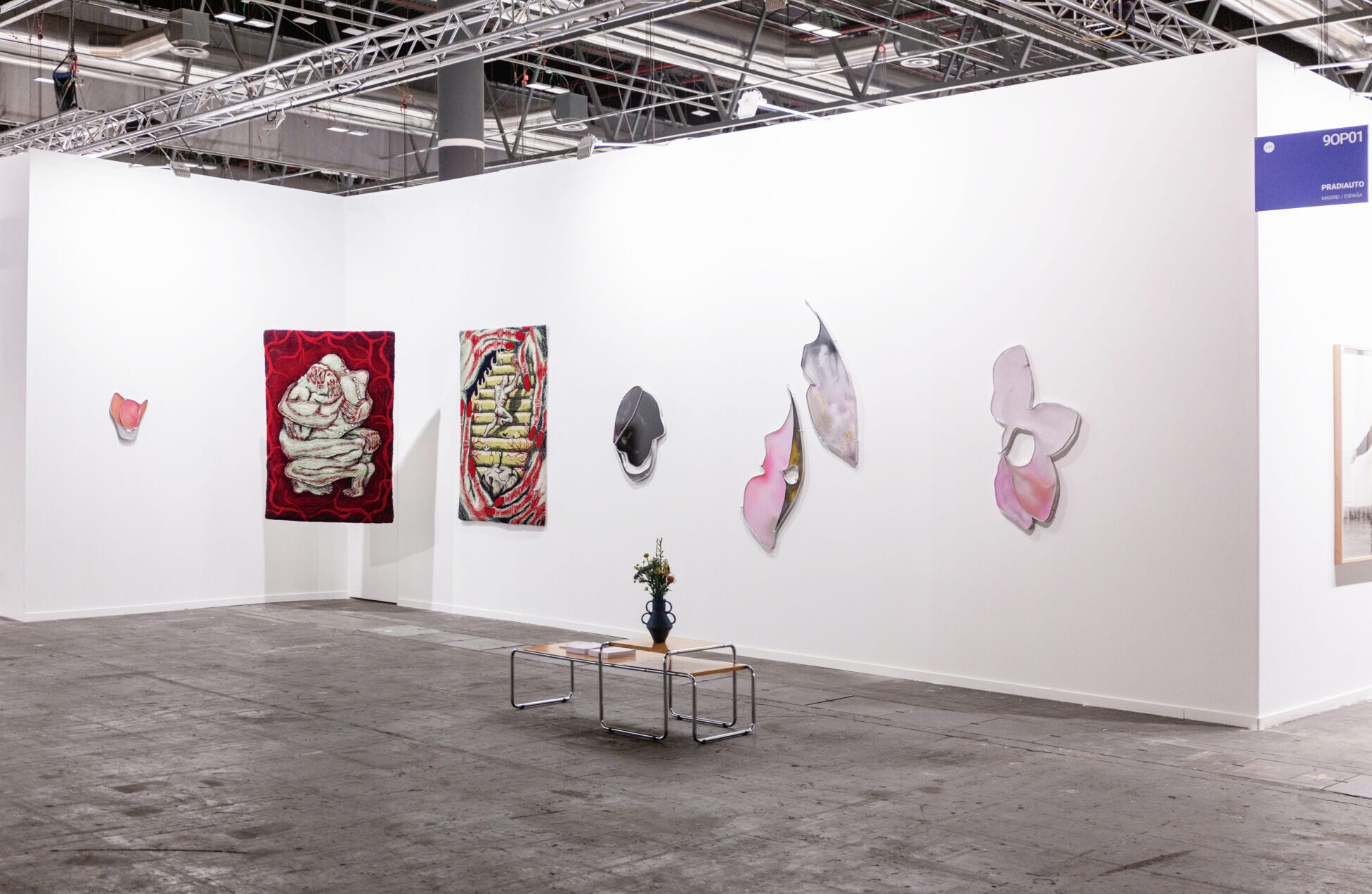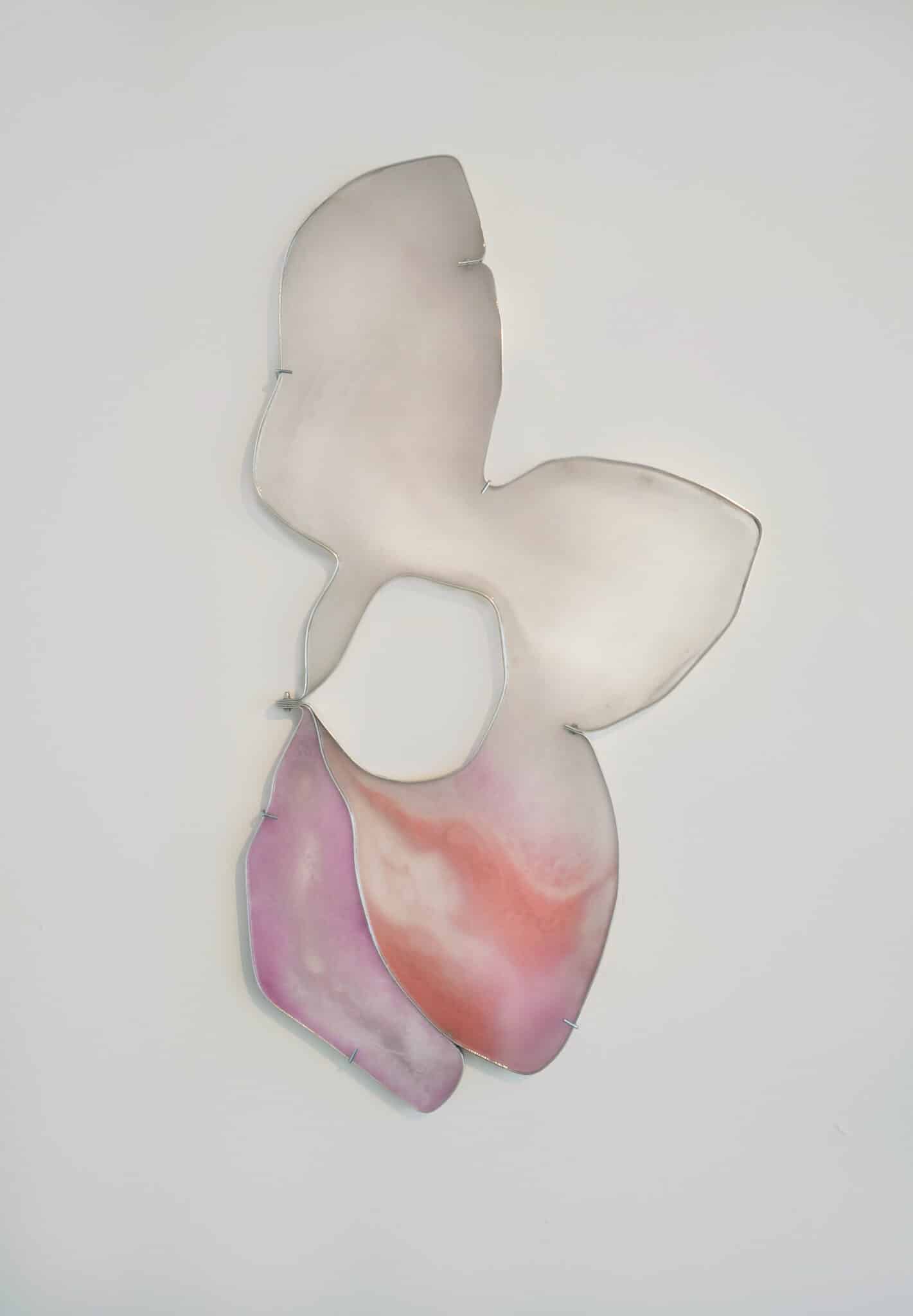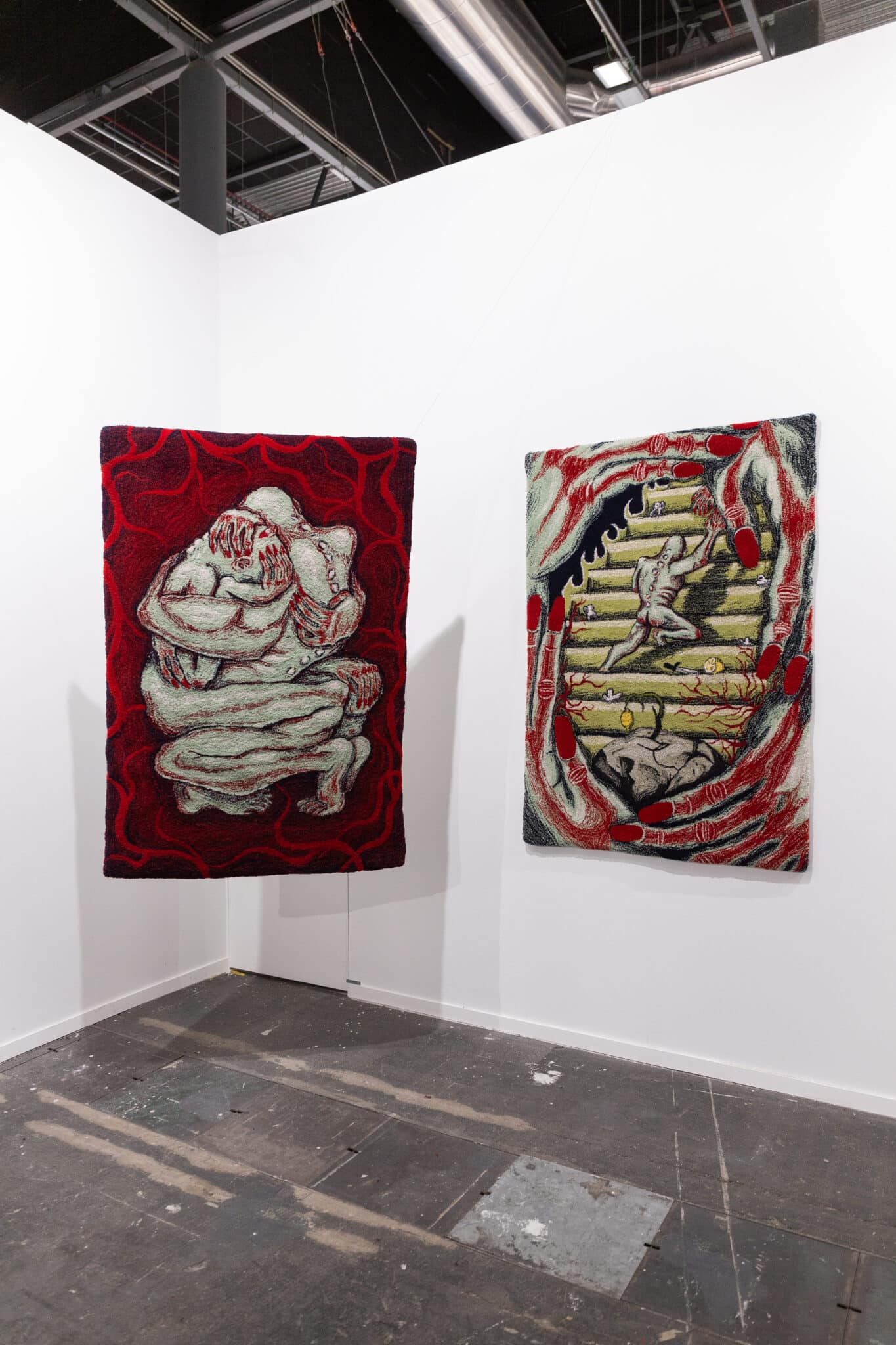Category: Uncategorized
28.02.25 –
24.04.25
Onda Lenta
Como antesala a la feria ARCO, la exposición Onda Lenta presenta las últimas obras de los artistas Elisa Pardo Puch, Karolina Dworska, Leopoldo Mata, Lucía Gutiérrez Vázquez y Nada Bien (Ramón Duerto Orlando).
explorando ese estado hipnagógico en el que el sueño se vuelve más profundo y reparador, y la realidad se diluye en un universo de silencios y metáforas visuales.
Lucía Gutiérrez Vázquez –
Con obras que transitan entre lo doméstico y lo imaginario, Lucía nos invita a adentrarnos en un íntimo universo donde el paisaje se transforma en un decorado sensible. Su revisión de procesos y simulacro de paisaje se funden en una interpretación de la naturaleza, tanto artificial como natural, evocando la lenta metamorfosis del sueño.
Leopoldo Mata – Pintura
A través de texturas que se desdibujan y relieves cargados de dinamismo, Leopoldo presenta un universo errático donde monstruos y cuevas emergen con la espontaneidad del graffiti. Su obra, marcada por la ambigüedad entre lo borroso y lo palpable, encarna la evolución gradual y casi imperceptible de la mente en el umbral del sueño.
Carlos García Alix – Pintura
En su óleo titulado “rubi”, Carlos nos sumerge en un escenario nocturno donde bares que sueñan se funden con la madrugada. Su paleta, que oscila entre el principio y el final, la orilla y el abismo, crea una atmósfera que dialoga con la idea de la “onda lenta”, revelando la transición sutil entre la vigilia y el ensueño.
Nada Bien (Ramón Duerto Orlando) – Pintura
Procedente del mundo del tatuaje, Nada Bien fusiona el imaginario infantil con el trazo del dibujo y el comic. Con capas de papel y una crudeza intencionada, su obra expresa una estética amateur que, lejos de la perfección, celebra la espontaneidad del dejarse llevar por el flujo onírico, tal como la onda lenta se despliega con naturalidad.
Elisa Pardo Puch – Dibujos
Mediante dibujos cargados de crudeza y fuerza expresiva, Elisa transita entre la inhibición y la desinhibición, donde lenguas gigantes y matices eróticos se convierten en símbolos de liberación. Su obra se abre paso en ese instante único en el que dejarse ir se convierte en un acto creativo, reflejando el ritmo pausado y profundo de la experiencia del sueño.
Karolina Dworska – Punto Digital
Inspirada en el universo enigmático del Bosco, Karolina conjuga en sus creaciones una mano que sostiene madroño y la imagen de un esqueleto, entrelazando mitología, textura y surrealismo. Su propuesta, marcada por elementos eróticos y monstruosos, invita a recorrer un sendero donde el sueño se dilata, en una danza lenta que desafía la linealidad del tiempo.
Cada uno de estos artistas, a través de sus obras, dialoga con el concepto de “Onda Lenta”, explorando el sutil tránsito entre la vigilia y el sueño, entre lo real y lo imaginado. Esta exposición supone, en definitiva, una presentación de los últimos avances de nuestros artistas representados.
explorando ese estado hipnagógico en el que el sueño se vuelve más profundo y reparador, y la realidad se diluye en un universo de silencios y metáforas visuales.
Lucía Gutiérrez Vázquez –
Con obras que transitan entre lo doméstico y lo imaginario, Lucía nos invita a adentrarnos en un íntimo universo donde el paisaje se transforma en un decorado sensible. Su revisión de procesos y simulacro de paisaje se funden en una interpretación de la naturaleza, tanto artificial como natural, evocando la lenta metamorfosis del sueño.
Leopoldo Mata – Pintura
A través de texturas que se desdibujan y relieves cargados de dinamismo, Leopoldo presenta un universo errático donde monstruos y cuevas emergen con la espontaneidad del graffiti. Su obra, marcada por la ambigüedad entre lo borroso y lo palpable, encarna la evolución gradual y casi imperceptible de la mente en el umbral del sueño.
Carlos García Alix – Pintura
En su óleo titulado “rubi”, Carlos nos sumerge en un escenario nocturno donde bares que sueñan se funden con la madrugada. Su paleta, que oscila entre el principio y el final, la orilla y el abismo, crea una atmósfera que dialoga con la idea de la “onda lenta”, revelando la transición sutil entre la vigilia y el ensueño.
Nada Bien (Ramón Duerto Orlando) – Pintura
Procedente del mundo del tatuaje, Nada Bien fusiona el imaginario infantil con el trazo del dibujo y el comic. Con capas de papel y una crudeza intencionada, su obra expresa una estética amateur que, lejos de la perfección, celebra la espontaneidad del dejarse llevar por el flujo onírico, tal como la onda lenta se despliega con naturalidad.
Elisa Pardo Puch – Dibujos
Mediante dibujos cargados de crudeza y fuerza expresiva, Elisa transita entre la inhibición y la desinhibición, donde lenguas gigantes y matices eróticos se convierten en símbolos de liberación. Su obra se abre paso en ese instante único en el que dejarse ir se convierte en un acto creativo, reflejando el ritmo pausado y profundo de la experiencia del sueño.
Karolina Dworska – Punto Digital
Inspirada en el universo enigmático del Bosco, Karolina conjuga en sus creaciones una mano que sostiene madroño y la imagen de un esqueleto, entrelazando mitología, textura y surrealismo. Su propuesta, marcada por elementos eróticos y monstruosos, invita a recorrer un sendero donde el sueño se dilata, en una danza lenta que desafía la linealidad del tiempo.
Cada uno de estos artistas, a través de sus obras, dialoga con el concepto de “Onda Lenta”, explorando el sutil tránsito entre la vigilia y el sueño, entre lo real y lo imaginado. Esta exposición supone, en definitiva, una presentación de los últimos avances de nuestros artistas representados.
Elisa Pardo Puch
Elisa Pardo Puch (1988, Madrid). After completing her Bachelor's Degree in Fine Arts at the UCM at the CES Felipe II in Aranjuez in 2014, she obtained a Master's Degree in Contemporary Art History and Visual Culture from the Universidad Autónoma de Madrid and the Universidad Complutense de Madrid in 2017. Previously, in 2010, she completed her Higher Studies in Design at the Escuela de Arte no10 in Madrid, and in 2009, she was the beneficiary of an Erasmus scholarship at the École Duperré in Paris.
She has participated in numerous exhibitions such as ‘Metal Heart: lo que pesa’ at Departamento, Bilbao; ‘Bajo el cielo de la noche’ at Boiler Room, Luis Adelantado Gallery, Valencia; and ‘A Strange Fairytale’ at Pradiauto Gallery, ArteSantander, Santander; or ‘La Espera’, also with Pradiauto, in Madrid. In addition, her work has been part of various group exhibitions, such as the group presentation of the Miquel Casablancas Prize 2023 in Barcelona; ‘Malas Hierbas’ at CasaBanchel, Madrid, in 2024; ‘Una exposición oral’ at Sant Andreu Contemporani, Barcelona; and ‘Garden Shed’ at Villa Bergerie, in Huesca, in 2023, among others.
Elisa Pardo Puch has also participated in various artistic residencies, such as the current one at GlogauAIR, Berlin, from January to June 2024, where she created the work for the exhibition Quienes vagan curiosos por mil maravillas; the Residency at Villa Bergerie, Pollock-Krasner Foundation, Huesca, 2023; Artist in Residence Munich, 2022; or the Matadero Artist Residency Programme. CRA Matadero, Madrid, 2020. Pardo Puch has received numerous awards such as the Miquel Casablancas Prize (finalist), Barcelona, 2023; Acquisition Prize at Nada Sobra, Nebrija University, Madrid, 2017; and Special Mention at Getxoarte, Bilbao, 2016.
She has participated in numerous exhibitions such as ‘Metal Heart: lo que pesa’ at Departamento, Bilbao; ‘Bajo el cielo de la noche’ at Boiler Room, Luis Adelantado Gallery, Valencia; and ‘A Strange Fairytale’ at Pradiauto Gallery, ArteSantander, Santander; or ‘La Espera’, also with Pradiauto, in Madrid. In addition, her work has been part of various group exhibitions, such as the group presentation of the Miquel Casablancas Prize 2023 in Barcelona; ‘Malas Hierbas’ at CasaBanchel, Madrid, in 2024; ‘Una exposición oral’ at Sant Andreu Contemporani, Barcelona; and ‘Garden Shed’ at Villa Bergerie, in Huesca, in 2023, among others.
Elisa Pardo Puch has also participated in various artistic residencies, such as the current one at GlogauAIR, Berlin, from January to June 2024, where she created the work for the exhibition Quienes vagan curiosos por mil maravillas; the Residency at Villa Bergerie, Pollock-Krasner Foundation, Huesca, 2023; Artist in Residence Munich, 2022; or the Matadero Artist Residency Programme. CRA Matadero, Madrid, 2020. Pardo Puch has received numerous awards such as the Miquel Casablancas Prize (finalist), Barcelona, 2023; Acquisition Prize at Nada Sobra, Nebrija University, Madrid, 2017; and Special Mention at Getxoarte, Bilbao, 2016.
Nada Bien (Ramón Duerto Orlando)
Nada Bien is the artistic project of Ramón Duerto Orlando (Madrid, 1992), a graduate in audiovisual communication and currently a tattooist and artist. Nada Bien gives space to a series of creative concerns - "It's a concept that guides the practice. Something like a polysemic mantra, which helps to focus action and thought. To be able to move forward in experimentation and in the illusion of sharing experiences and ways of seeing".
His technique can be characterised as mixed: hectographic ink, paper on canvas, spray acrylic, graphite. Something very beautiful about his work is that he intervenes on the canvas on both sides; generating an agency on the back. The shapes painted on the back are intuited from the front, emphasising or hiding themselves depending on the light.
His technique can be characterised as mixed: hectographic ink, paper on canvas, spray acrylic, graphite. Something very beautiful about his work is that he intervenes on the canvas on both sides; generating an agency on the back. The shapes painted on the back are intuited from the front, emphasising or hiding themselves depending on the light.
Lucía Gutiérrez Vázquez
Lucía Gutiérrez Vázquez (Madrid, 1992) es una arquitecta y artista multidisciplinar cuyo enfoque pone en diálogo la pintura, el paisaje y la interacción entre el espacio físico y las experiencias sensoriales. Su formación académica incluye un Doctorado en Arquitectura en la Universidad Politécnica de Madrid (2019 - actualidad) y una amplia formación complementaria en el ámbito de la comunicación arquitectónica, la pintura y la historia del arte.
A lo largo de su carrera ha participado en exposiciones individuales y colectivas destacadas, entre ellas la Bienal de Arquitectura de Venecia (2018) y el Festival de Fotografía de Coruña (2018), mostrando una amplia versatilidad en disciplinas artísticas como la fotografía, la pintura y la escenografía. Su obra explora temáticas que vinculan el espacio arquitectónico con la percepción humana.
Lucía ha sido reconocida con numerosos premios y becas, como el Primer Premio Certamen Jóvenes Creadores (2021) y la Beca Fundación Antonio Gala (2018-2019), además de recibir varias becas para la formación de profesorado universitario por el Ministerio de Universidades (2020-2024). Su obra ha sido publicada en revistas académicas y libros sobre arquitectura y arte contemporáneo.
Su práctica aborda lo cotidiano a través de una exploración íntima del color y el espacio con la serenidad de quien no pretende asumir la lógica visual, en ocasiones excesiva y ruidosa, de los tiempos modernos. Lucía Gutiérrez acoge en sus lienzos, de pincelada espesa y abocetada, la inmensidad de lo que se desliza por su mirada: una mirada que dignifica con la misma destreza la luz incidiendo sobre un paisaje como la frágil materialidad de un barquito de papel. La pintura funciona aquí como un eslabón sigiloso que sostiene el salto que hay entre la imagen real que las cosas ofrecen y la mirada que las recorre.
A lo largo de su carrera ha participado en exposiciones individuales y colectivas destacadas, entre ellas la Bienal de Arquitectura de Venecia (2018) y el Festival de Fotografía de Coruña (2018), mostrando una amplia versatilidad en disciplinas artísticas como la fotografía, la pintura y la escenografía. Su obra explora temáticas que vinculan el espacio arquitectónico con la percepción humana.
Lucía ha sido reconocida con numerosos premios y becas, como el Primer Premio Certamen Jóvenes Creadores (2021) y la Beca Fundación Antonio Gala (2018-2019), además de recibir varias becas para la formación de profesorado universitario por el Ministerio de Universidades (2020-2024). Su obra ha sido publicada en revistas académicas y libros sobre arquitectura y arte contemporáneo.
Su práctica aborda lo cotidiano a través de una exploración íntima del color y el espacio con la serenidad de quien no pretende asumir la lógica visual, en ocasiones excesiva y ruidosa, de los tiempos modernos. Lucía Gutiérrez acoge en sus lienzos, de pincelada espesa y abocetada, la inmensidad de lo que se desliza por su mirada: una mirada que dignifica con la misma destreza la luz incidiendo sobre un paisaje como la frágil materialidad de un barquito de papel. La pintura funciona aquí como un eslabón sigiloso que sostiene el salto que hay entre la imagen real que las cosas ofrecen y la mirada que las recorre.
Leopoldo Mata
(Badajoz, 1994) After finishing his degree in Fine Arts in Cuenca, he spent several years in Paris developing himself as a tattoo artist. On his return to Spain he studied the master Landa (Annual Laboratory to Nurture Artistic Dispersion) in Espositivo, at which point he resumed his artistic practice as a painter until now.
"If there is a pattern that I feel comfortable with in my approach to my work, it is the juxtaposition of different visual languages as a consequence of abandoning ideas halfway through execution that are often overlapped with other ideas/systems, evoking dispersion and the non-apprehension of any truth. I am interested in creating from the noise and the continuous interruption that characterises our present by including it in the pictorial process; playing with concepts seriously for a while to demolish them later with a sensation generating a miscellany that speaks of my way of understanding the contemporary world".
"If there is a pattern that I feel comfortable with in my approach to my work, it is the juxtaposition of different visual languages as a consequence of abandoning ideas halfway through execution that are often overlapped with other ideas/systems, evoking dispersion and the non-apprehension of any truth. I am interested in creating from the noise and the continuous interruption that characterises our present by including it in the pictorial process; playing with concepts seriously for a while to demolish them later with a sensation generating a miscellany that speaks of my way of understanding the contemporary world".
Carlos García-Alix
In his particular artistic approach, he immerses reality in the gloom of the night, creating paintings that materialise in just 15 minutes. His works are annotations of the night, capturing the essence of entering or leaving this mysterious period. García-Alix succeeds in capturing specific moments and states, especially at dusk, turning the night into a tangible material. His approach is formal and traditional, rooted in obvious observation, emphasising the need to be quick in his expression, reflecting the transience of the night and visually capturing the sensation of a blue sky in darkness.
Karolina Dworska
Karolina Dworska (B. 1997, Rzeszów, Poland) is a Polish artist living and working in London, UK. She graduated from BA Fine Art at Goldsmiths in 2020, followed by a year-long Fine Art Junior Fellowship at the University. In 2021 she was one of the artists selected for the Bloomberg New Contemporaries. Her work has been exhibited internationally, including in London, Madrid and Seoul, and featured in numerous international publications, including Sztuka i Dokumentacja and El País, as well as Time Out Magazine.
Karolina Dworska’s multidisciplinary practice explores dreams, mythologies and liminal fantasy spaces, situated between the unconscious and reality. Littered with surreal motifs and mysterious inhabitants, her dreamscapes examine the strangeness, abject horror as well as the euphoria of corporeal existence. Desire and longing are also at the core of her work.
She explores the connection between recurring dreams and mythological allegory, and how the seemingly private, internal dream space can be externalised to connect to contemporary narratives and anxieties. Deeply intertextual, her work interweaves folklore, science fiction and the everyday, reconfigured through the meditative lens of dreaming. Dworska utilises textile mediums, in particular rug-tufting, a technique in which she hand constructs pictorial rugs, as well as using machine knitting and elements of sculpture to devise her surreal vision.
Karolina Dworska’s multidisciplinary practice explores dreams, mythologies and liminal fantasy spaces, situated between the unconscious and reality. Littered with surreal motifs and mysterious inhabitants, her dreamscapes examine the strangeness, abject horror as well as the euphoria of corporeal existence. Desire and longing are also at the core of her work.
She explores the connection between recurring dreams and mythological allegory, and how the seemingly private, internal dream space can be externalised to connect to contemporary narratives and anxieties. Deeply intertextual, her work interweaves folklore, science fiction and the everyday, reconfigured through the meditative lens of dreaming. Dworska utilises textile mediums, in particular rug-tufting, a technique in which she hand constructs pictorial rugs, as well as using machine knitting and elements of sculpture to devise her surreal vision.





